Plant Descriptions – Abelmoschus moschatus – Acacia pycnantha
Abelmoschus moschatus
Abilgaardia ovata
Abilgaardia vaginata
Abrophyllum ornans
Abrus precatorius
Abutilon oxycarpum
Acacia acuminata
Acacia adunca
Acacia alata
Acacia amblygona
Acacia ammobia
Acacia aulacocarpa
Acacia baeuerlenii
Acacia baileyana
Acacia bakeri
Acacia beadleana
Acacia binervata
Acacia brownii
Acacia brunioides
Acacia cangaiensis
Acacia celsa
Acacia chinchillensis
Acacia chrysotricha
Acacia complanata
Acacia concurrens
Acacia cultriformis
Acacia dealbata
Acacia decora
Acacia disparrima
Acacia dunnii
Acacia echinula
Acacia elata
Acacia elongata
Acacia falcata
Acacia fimbriata
Acacia floribunda
Acacia grandifolia
Acacia granitica
Acacia hispidula
Acacia holosericea
Acacia howittii
Acacia hubbardiana
Acacia implexa
Acacia irrorata
Acacia leiocalyx
Acacia leptostachya
Acacia leptostachya
Acacia linearifolia
Acacia longifolia subsp. longifolia
Acacia longifolia subsp. sophorae
Acacia longissima
Acacia macradenia
Acacia maidenii
Acacia melanoxylon
Acacia minyura
Acacia mitchellii
Acacia myrtifolia
Acacia orites
Acacia oshanesii
Acacia paradoxa
Acacia penninervis subsp. longiacemosa
Acacia penninervis subsp. penninervis
Acacia perangusta
Acacia podalyriifolia
Acacia pravissima
Acacia pterocaulon
Acacia pycnantha

Author’s Garden The Pinnacles NSW
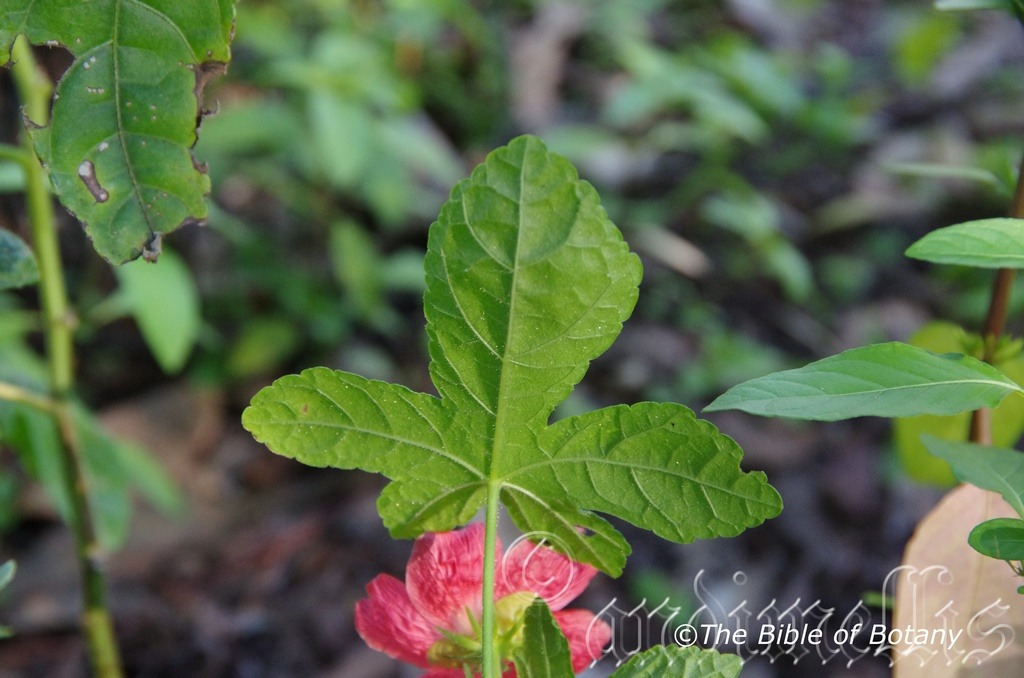
Author’s Garden The Pinnacles NSW
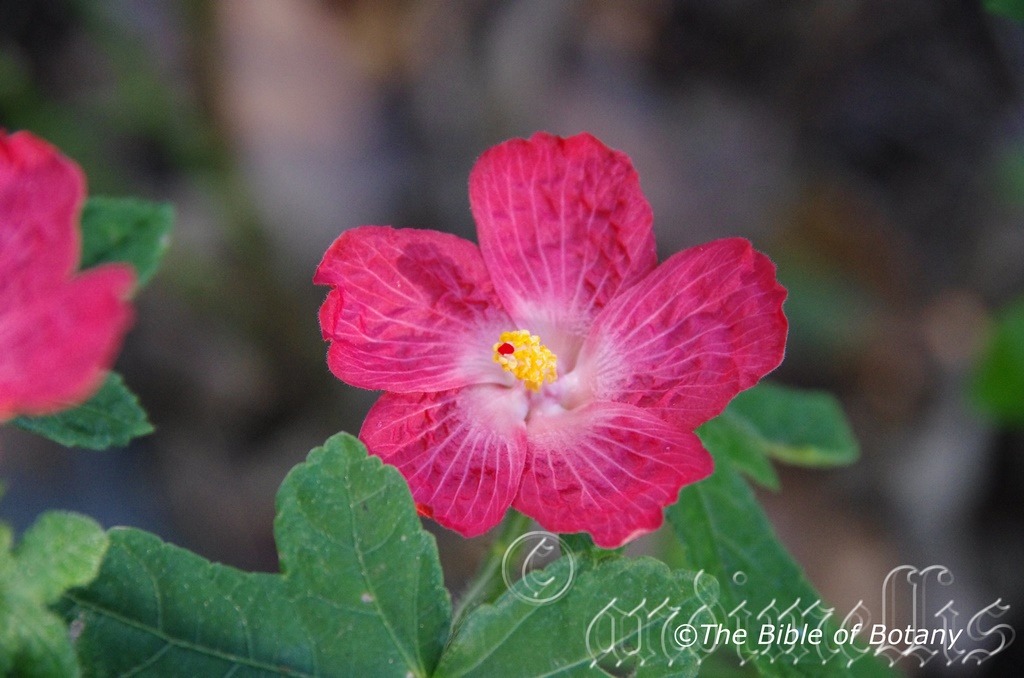
Author’s Garden The Pinnacles NSW
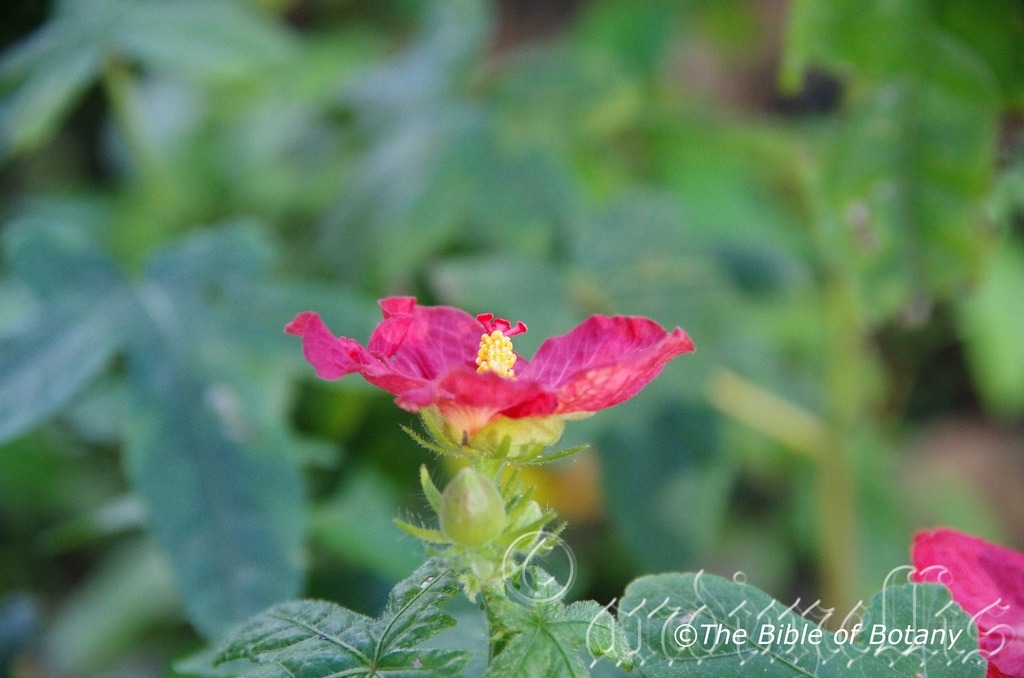
Author’s Garden The Pinnacles NSW

Author’s Garden The Pinnacles NSW
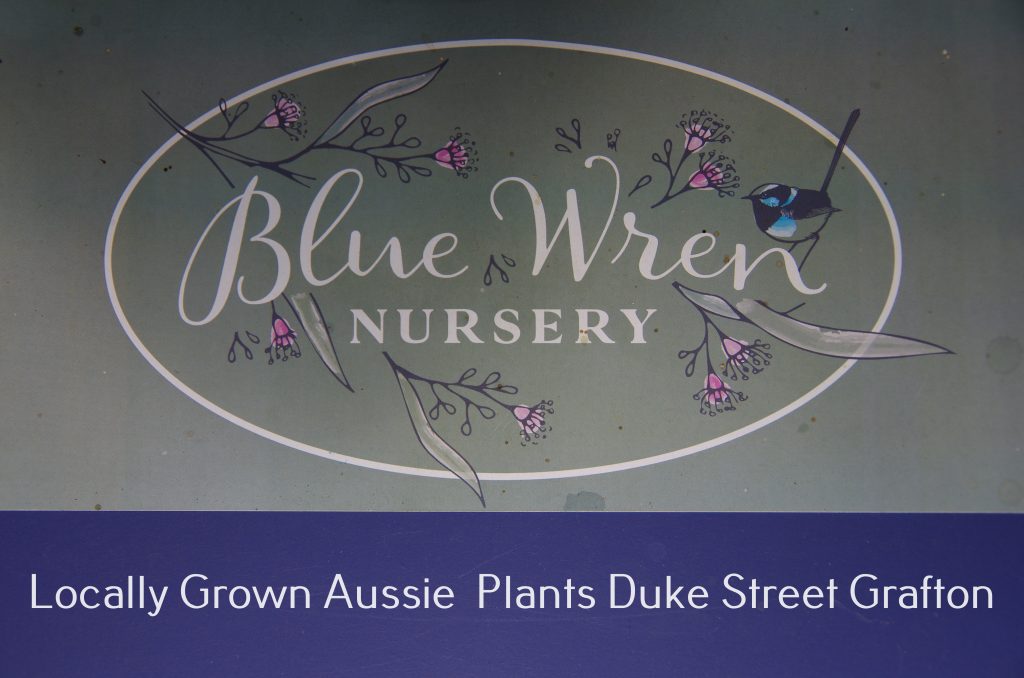
Abelmoschus moschatus
Classification:
Clade: Tracheophytes
Clade: Angiosperms
Clade: Eudicots
Clade: Rosids
Order: Malvales
Family: Malvaceae
Genus: From Hebel, which is Ancient Greek, for breath or vapour and Moskhos, which is Ancient Greek, or Moschatum, which is Latin for the musk deer. It refers to the seeds that have been crushed, which have a strong vapoury smell like the musk deer, which scent mark their territories with their caudal glands.
Specie: Moskhos, which is Ancient Greek, or Moschatum, which is Latin for the musk deer. It refers to the seeds that have been crushed, which have a strong vapoury smell like the musk deer, which scent mark their territories with their caudal glands.
Sub species: Moschatus – From Moskhos, which is Ancient Greek, or Moschatum, which is Latin for the musk deer. It refers to plants which have a musky odour like the deer, which scent mark their territories with their caudal glands.
Sub species: From tuberosum, which is Latin for lumpy or a hump. It refers to plants which have noticeably swollen roots.
Common Name: Native Okra, Native Rosella.
Distribution:
Abelmoschus moschatus is mainly found on the eastern side of Cambden Peninsula on the Kimberley Range east to Cape Shiels in eastern Northern Territory and then close to the coast to gorge Creek in far north western Queensland. On Cape York Peninsular it is found north of Weipa then south to Minnie Water in far north eastern New South Wales. It is found on the western side of the Great Dividing Range to the coast and off shore Islands.
It is also found in Fiji, New Guinee, Papua, Samoa and isolated Islands in eastern and central southern Pacific Ocean..
https://avh.ala.org.au/occurrences/search?taxa=Abelmoschus+moschatus#tab_mapView
Habitat Aspect Climate:
Abelmoschus moschatus prefer full sun to light dappled shade. It is mainly found growing in moister depressions headlands, at the edge of riverine, litoral rainforests and wet rain forests along with mosoonal forests in the north. It is found from sea level to around 900 meters ASL.
The temperature ranges from 7 degrees in August to 40 degrees in January.
The rainfall ranges from lows of 800mm to 3200mm average per annum.
Soil Requirements:
Abelmoschus moschatus prefer light gritty clays, medium clays or heavy clays. The soils are usually derived from semi decomposed brown rocky basalts, rocky shales, metamorphic or gravelly alluvial deposits. The soils pH ranges from 5.5pH to 7.5pH. It does not tolerate water logged soils however plants are always associated with water courses especially in semi arid areas where seasonal inundations, swamps and rising water tables. Non saline soils to moderately saline soils are tolerated.
Height and Spread:
Wild Plants: 0.5m to 2m by 0.5m to 2m.
Characteristics:
Abelmoschus moschatus grows as a small straggly perennial that has an underground tuber. Plants die back to the tuber in the dry season, reemerging with the first substantial rains of the wet season. The pale green stems are sparsely covered in course translucent, hirsute hairs and stellate hairs.
Abelmoschus moschatus’s alternate leaves have three to five lobes and vary from being hastate to having rather shallow lobes. The leaf blades measure 60mm to 70mm in length by 60mm to 90mm in width. The leaves have a palmate venation. The petioles measure 40mm to 100mm in length, while the stipules are filiform and are sparsely covered in translucent hairs and measure 5mm to 10mm in length. The petioles and laminas are sparsely covered in course translucent, hirsute hairs and stellate hairs.
The inflorescences of Abelmoschus moschatus have an epicalyx with 10 to 13 lobes. The lobes are sparsely covered in course translucent, hirsute hairs and stellate hairs on the inner surface. The calyxes are bilabiate or trilobed, split down one side. They are sparsely covered in course translucent, hirsute hairs and stellate hairs. The five deep pinkish-red petals measure 55mm to 70mm in length and have a deeper red centre. The anther filaments are fused into a tube surrounding the style with the red stigma being hairy at the apex. Staminal tube fused to the corolla. Flowers appear from early October through to April dependant upon rainfalls.
The fruits of Abelmoschus moschatus are are typically Malvaceae five-lobed and measure 30mm to 35mm in length. They coriaceous fruits are sparsely covered in translucent hirsute hairs. The epicalyx is persistent at the base of the dried fruits. The dull black to deep grey seeds are reniform, longitudinally striated, trionously.
Sub specie Differences:
Abelmoschus moschatus ssp. moschatus has a less robust tuberous growth on the roots.
Abelmoschus moschatus ssp. tuberosus has more robust tuberous root growths.
Wildlife:
Abelmoschus moschatus‘s wildlife is unknown to the author however the tubers and foliage were a source of food for Aborigines and I would suspect many of the Hibiscus beetles would consume the pollen and leaves.
Cultivation:
Abelmoschus moschatus is considered to be a reasonable small shrub in a difficult area or where large boulders exist.
Abelmoschus moschatus is a semi straggly shrub to almost semi climber and is best planted in groups to give a dense foliage coverage which also enhances the magnificent coloured flowers.
Remember in the wild the plants are reduced to a tuber below the ground in the dry season. It can be grown on most types of soil even heavy clay with a skeletal covering of sand. It requires full sun for best results with a little added moisture or native fertilizer once a year once the rains come to sustain maximum colour and vigor. High nitrogenous fertilizers should be avoided as they will reduce the strength of the stems resulting in more lanky growth with fewer flowers.
In cultivation the plants usually grow from 0.5m to 1m in height by 0.9m to 1.2m in diameter. It is rather striking in informal beds along walls, small moist rockeries or on the lower side of a path where water runoff will aid in amount of moisture the plants receive but be aware that it will not tolerate water logged conditions. It is best to reduce watering as the foliage dies off and sustain this during the dry season, commencing watering again as the first rains start.
Propagation:
Seeds: Abelmoschus moschatus seeds can be sown directly into a seed raising mix. Scarifying seeds either in the fridge or gently using abrasion between fine sandpaper before sowing will help germination. Cover the seeds with 2mm of the mix. Place the trays in a warm position under 20mm or 30mm shade. When the seedlings reach 20mm to 40mm tall, prick them out and plant them into 50mm native tubes using a seed raising mix or directly into the ground. Place the 50mm native tubes into a tray of water and return them to the bush house. The plants appear to be rather sensitive to transplanting so sowing the seeds in directly into their permanent position if possible would be more beneficial.
Further Comments from Readers:
All information is included in good faith and has been thoroughly researched prior to printing. The website or the author does not warrant or guarantee the accuracy of any information on these pages, nor does the website or the author accept any responsibility for any loss arising from the use of the information found within. The views and opinions are strictly those of the author or those members who chose to actively participate in the contents herein.
Hi reader, it seems you use The Bible of Botany a lot. That’s great as we have great pleasure in bringing it to you! It’s a little awkward for us to ask, but our first aim is to purchase land approximately 1,600 hectares to link several parcels of N.P. into one at The Pinnacles NSW Australia, but we need your help. We are not salespeople. We are amateur botanists who have dedicated over 30 years to saving the environment in a practical way. We depend on donations to reach our goal. If you donate just $5, the price of your coffee this Sunday, We can help to keep the planet alive in a real way and continue to bring you regular updates and features on Australian plants all in one Botanical Bible. Any support is greatly appreciated. Thank you.
In the spirit of reconciliation we acknowledge the Bundjalung, Gumbaynggirr and Yaegl and all aboriginal nations throughout Australia and their connections to land, sea and community. We pay our respect to their Elders past, present and future for the pleasures we have gained.
Abilgaardia ovata
Classification:
Unranked: Monocots
Unranked: Commelinidis
Order: Poales
Family: Cyperacea
Genus: Abligaardia is probably named in honour of Peder Christian Albigaard; 1740-1801, who was a Danish botanist and entomologist.
Specie: From Ovatis, which is Latin for almost an egg shape. It usually refers to organs, which have an ovate shape or form like an egg.
Sub species:
Common Name:
Distribution:
Abilgaardia ovata is mainly found east and south from Burktown to Mount Isa on the Leichardt River south to Barcaldine, Carnarvon Gorge in coast central Queensland and south to Mount Lindsay in northern New South Wales where it remains close to the coast to Austinmer in southern coastal New South Wales. In Western Australia It has been recorded from Kunmunya on the Kymberley Coast. In the Northern territory it is found on the Daly River in the vicinity of Bull Creek and Darwin. It is also found in far Northern Cape York Peninsular.
https://avh.ala.org.au/occurrences/search?taxa=Abildgaardia+ovata+#tab_mapView
Habitat Aspect Climate:
Abilgaardia ovata prefer full sun to light dappled shade. It is mainly found growing in drier depressions and drier pockets along the coast or moist depressions and wet pockets further inland in open grass land with in open forests and woodlands to exposed headlands. It is found from sea level to around 900 meters ASL.
The temperatures range from minus 2 degrees in August to 44 degrees in January.
The rainfall ranges from lows of 300mm to 3200mm average per annum.
Soil Requirements:
Abligaardia ovata prefer light gritty clays, medium clays or heavy clays. The soils are usually derived from decomposed brown basalt, podsolics, shale, metamorphic or alluvial deposits. The soils pH ranges from 5pH to 7.5pH. It does not tolerate water logged soils however plants are always associated with water courses especially in semi arid areas where seasonal inundations, swamps and rising water tables. Non saline soils to moderately saline soils are tolerated.
Height & Spread:
Wild Plants: 0.06m to 0.6m by 0.5m to 1m.
Characteristics:
Abilgaardia ovata grows as a small perennial rush with some erect culms with the rest being prostrate. The terete, caespitose tufted culms are densely tufted on a very short slender bulbulous rhizome. The culms usually measure 60mm to 400mm in height but can grow to 550mm under favourable conditions by 0.5mm diameter. The culms are deep grass-green with glabrous or scabrous internodes while the nodes are glabrous to scabrous.
Abilgaardia ovata‘s proximal base leaves are reduced to fibrous scales. The linear, erect leaves measure 30mm to 250mm in length by 1mm to 1.2mm in width. The sheaths are open around the culms overlapping the upper leaf. The sheaths are glabrous. The ligules measure 0.7mm to 1.2mm in length and are fringe of white ciliate hairs. The concolourous laminas are grass-green to deep grass-green with paler or brownish margins, scariosum and forming a broad auricle at junction with blade while the apexes are acute or bluntly acute. The auricle?s margins are incrassate. The laminas are convex on the upper surface and are coarsely ribbed.
The inflorescences of Abilgaardia ovata are usually a single terminal spike or rarely with 1 or 2 branches that measure 10mm to 20mm in length. The involucral bract is glume like.
The compact spikelets are ovoidal and sessile. The spikelets measure 6mm to 15mm in length by 3mm to 6mm in diameter. The elliptical spikelets are laterally compressed and measure 2.3mm to 4mm in length.
The coriaceous glumes are similar. The pale green to pale blue-green upper glume is acute with a mucronate tip with a prominent keel and 3 prominent nerves. The glumes measure 4.5mm to 6.5mm in length. The glumes surfaces are smooth and glabrous. The glumes have a basal like node which is sparsely covered fine white hairs which measure 3mm to 4mm in length.
The 2 or 3 white filaments on each spikelet have deep maroon?burgundy anthers, which measure 1.5mm to 4mm in length.
The white, trifid, feathery styles open from the base to the apex and appear before the stamens. The styles measure 2mm to 5mm in length. The flowers appear from late September to late February in the south and most of the year under favourable conditions in the northern tropical areas.
The fruits of Abilgaardia ovata are trionously globose achenes. The achenes measure 2.5mm to 3mm in length by 1.2mm to 2mm in diameter. The green achenes turn pale straw-yellow to pale fawn-yellow and are coarsely tuberculate except for the glabrous base when ripe.
Wildlife:
Abilgaardia ovata‘s wildlife is unknown to the author however small aviary birds including finches and budgerigars eagerly eat the green seeds when they are provided to them.
Cultivation:
Abilgaardia ovata is considered to be a reasonable fodder crop. The leaves and stems are eaten along with other pasture crops. It recovers well from moderate grazing and is best managed by allowing a free period between grazing.
Abilgaardia ovata is becoming a weed in conventional farms particularly in grains and small crops.
Abilgaardia ovata is classified as a weed by gardeners without considering its potential in a small rockery or bog garden. It gives average quantities of trash for mulch. It has good potential as a small landscaping grass in small gardens because of its small clump size. It recovers quickly when cut back to ground level.
In cultivation it can be grown on most types of soil even heavy clay with a skeletal covering of sand. It requires full sun for best results with a little added moisture or native fertilizer once a year to sustain maximum colour and vigor. High nitrogenous fertilizers should be avoided as it will reduce the strength of the culms resulting in them being more readily attacked by black smut or lawn grub.
In cultivation the plant usually grows from 40mm to 600mm in height by 900mm to 1100mm in diameter. It is rather striking in informal beds along walls beside swimming pools, small moist rockeries or on the lower side of a path where water runoff will aid in amount of moisture the plants receive on a regular basis.
Propagation:
Seeds: Abilgaardia ovata seeds can be sown directly into a seed raising mix. Cover the seeds with 2mm of the mix. Place the trays in a warm position under 20mm or 30mm shade. When the seedlings reach 20mm to 40mm tall, prick them out and plant them into 50mm native tubes using a seed raising mix. Place the 50mm native tubes into a tray of water and return them to the bush house.
Once the seedlings reach 100mm to 150mm in height plant them out into their permanent position. Mass plantings can be achieved by planting them at a minimum of 0.5 meters when planted in rows or at the base of swamp plants or in small clumps at 2 meter to 3 meter centers for a more open scene where the shape or silhouette is the feature required.
Fertilize using Seaweed, fish emulsion or organic chicken pellets soaked in water on an alternate basis. Fertilize every two months until the plants are established then annually in early September to March to maintain health, vitality and better flowering.
Division:
Water the plants well a day or 2 before the operation is to be done. Avoid very hot weather. Cut around the clump and out on one side so that the shovel can be placed under the root ball. (Or remove it from its pot.)
Remove the plant from the soil. Cut it into 3 or 4 equal parts, first down the middle then halve those sections again ensuring that each section has some roots and, rhizome and culms or shoots. The rhizomes should have at least several eyes or growing shoots. Remove unwanted dead leaves and any old small sections that look weak or dead. Plants can be divided further but ensure each division has a several strong shoots and healthy roots attached to the tuft. Replant or pot ensuring the soil is at the same level as before. Water and fertilize with a half strength solution of fish emulsion. New shoots will appear within two weeks. Once the potted plants have new shoots and the roots treat them as seedlings.
Further Comments from Readers:
All information is included in good faith and has been thoroughly researched prior to printing. The website or the author does not warrant or guarantee the accuracy of any information on these pages, nor does the website or the author accept any responsibility for any loss arising from the use of the information found within. The views and opinions are strictly those of the author or those members who chose to actively participate in the contents herein.
Hi reader, it seems you use The Bible of Botany a lot. That’s great as we have great pleasure in bringing it to you! It’s a little awkward for us to ask, but our first aim is to purchase land approximately 1,600 hectares to link several parcels of N.P. into one at The Pinnacles NSW Australia, but we need your help. We’re not salespeople. We’re amateur botanists who have dedicated over 30 years to saving the environment in a practical way. We depend on donations to reach our goal. If you donate just $5, the price of your coffee this Sunday, We can help to keep the planet alive in a real way and continue to bring you regular updates and features on Australian plants all in one Botanical Bible. Any support is greatly appreciated. Thank you.
In the spirit of reconciliation we acknowledge the Bundjalung, Gumbaynggirr and Yaegl and all aboriginal nations throughout Australia and their connections to land, sea and community. We pay our respect to their Elders past, present and future for the pleasures we have gained.

Abilgaardia vaginata
Classification:
Unranked: Monocots
Unranked: Commelinidis
Order: Poales
Family: Cyperacea
Genus: Abligaardia is probably named in honour of Peder Christian Albigaard; 1740-1801, who was a Danish botanist and entomologist.
Specie: From Vaginatus, which is Latin for having a sheath. It refers to a structure like a culm which has split or fold like vagina opening where a flower or plantlet develops.
Sub species:
Common Name: It is known as Mooeyang in north eastern New South Wales.
Distribution:
Abilgaardia vaginata is found south from the tip of Cape York Peninsular in far northern Queensland to the Clarence River in northern New South Wales. It is mainly found on and east of the Great Dividing Range or close to the Range on the western slopes in Queensland. There are several isolated populations near Craven?s Peak, Lawn Hill National Park, Blackbrae?s Resources Reserve, White Mountains National Park and Carnarvon Gorge.
https://avh.ala.org.au/occurrences/search?taxa=Abildgaardia+vaginata+#tab_mapView
Habitat Aspect Climate:
Abilgaardia vaginata prefer full sun to light dappled shade. It grows in moist depressions, swamps, wallums, wet heaths, along creeks and streams riparian zones, woodlands, temperate moist woodlands, semi-arid woodlands, or coastal grasslands. The altitude ranges from 900 meters ASL.
The temperatures range from minus 4 degrees in August to 44 degrees in January.
The rainfall ranges from lows of 200mm to 2600mm average per annum.
Soil Requirements:
Abilgaardia vaginata prefer sandy soils to sandy loams. The soils are usually derived from decomposed sandstone or alluvial deposits along creeks. The soils pH ranges from 5pH to 6.5pH. It does not tolerate water logged soils however plants are always associated with moist soils or high water tables. Non saline soils to moderately saline soils are tolerated.
Height & Spread:
Wild Plants: 0.3m to 0.4m by 0.5m to 0.6m.
Characteristics:
Abilgaardia vaginata grows as a small perennial rush with compressed erect culms with the rest being semi prostrate. The terete, caespitose tufted culms are densely tufted on a very short slender bulbulous rhizome. The culms usually measure 30mm to 400mm in height by 0.2mm to 0.5mm in diameter. The culms are deep grass-green with glabrous.
Abilgaardia vaginata?s leaves are reduced to sheaths near the base.
The inflorescences of Abilgaardia vaginataconsist of 1 sessile spikelet with 1 to 5 pediculate spikelets. The loosely, ovate panicles are at the end of a long culm and measure 10mm to 20mm in length.
The spikelets are erect, ovoid, compressed with acute apexes. The spikelets measure 8mm to 18mm length by 2mm to 3mm in diameter.
The glumes are similar and thinner than the lemmas. The membranous lower glumes are acute with a mucronate apex and have numerous longitudinal nerves near the midrib. The glumes measure 5.5mm to 7.5mm in length. They are pale red-brown with broad translucent hyaline margins which are often red-dotted.
There are 3 cream filiform filaments on each spikelet which measure 3mm to 4.5mm in length while the deep cream to pastel yellow anthers which measure 2.5mm to 4mm in length.
The cream styles open from the base to the apex and measure 5mm to 7mm in length. The flowers appear from late September to late February.
The fruits of Abilgaardia vaginata are a trigonous nut. The nuts measure 1.5mm to 1.7mm in length by 1mm in diameter. The green nuts turn pale rusty?brown to deep grey-brown when ripe. They are tuberculate, with minute isodiametric reticulations.
Abilgaardia vaginata?s wildlife is unknown to the author however small aviary birds including finches and budgerigahs eagerly eat the green seeds when they are provided to them.
Cultivation:
Abilgaardia vaginata is considered to be a good fodder crop however its small size means yields are small. The leaves and stems are eaten along with other pasture crops. It recovers well from moderate grazing and is best managed by allowing a free period between grazing.
Abilgaardia vaginata is classified as a weed by gardeners without considering its potential in a medium rockery, bog garden or around medium size ponds. It gives small quantities of trash for mulch. It has good potential as a small landscaping grass in small gardens because of its small clump size. It recovers quickly when cut back to ground level.
In cultivation it can be grown on most types of moist, sandy soil even soils with a skeletal covering of sand. It requires full sun for best results with a little added moisture or native fertilizer once a year to sustain maximum colour and vigor. High nitrogenous fertilizers should be avoided as they will reduce the strength of the culms resulting in them being more readily attacked by black smut or lawn grub.
In cultivation the plant usually grows from 250mm to 400mm in height by 300mm to 500mm in diameter. It is rather striking in informal beds along walls beside swimming pools, medium moist rockeries or on the lower side of a path where water runoff will aid in amount of moisture the plants receive on a regular basis. It can be planted in small isolated groups of 3 to 5 to make it look bushier which will display the blue-green look more attractively and contrast other foliages better. It can also be planted at the base of Melaleuca specie when making a swamp scene. Here Melaleuca quinquinervia and Melaleuca viridis stand out but any of the paper barks can be used.
Propagation:
Seeds: Abilgaardia vaginata seeds can be sown directly into a seed raising mix. Cover the seeds with 2mm of the mix. Place the trays in a warm position under 20mm or 30mm shade. When the seedlings reach 20mm to 40mm tall, prick them out and plant them into 50mm native tubes using a seed raising mix. Place the 50mm native tubes into a tray of water and return them to the bush house.
Once the seedlings reach 100mm to 150mm in height plant them out into their permanent position. Mass plantings can be achieved by planting them at a minimum of 0.5 meters when planted in rows or at the base of swamp plants or in small clumps at 2 meter to 3 meter centers for a more open scene where the shape or silhouette is the feature required.
Fertilize using Seaweed, fish emulsion or organic chicken pellets soaked in water on an alternate basis. Fertilize every two months until the plants are established then annually in early September to March to maintain health, vitality and better flowering.
Division:
Water the plants well a day or 2 before the operation is to be done. Avoid very hot weather. Cut around the clump and out on one side so that the shovel can be placed under the root ball. (Or remove it from its pot.)
Remove the plant from the soil. Cut it into 3 or 4 equal parts, first down the middle then halve those sections again ensuring that each section has some roots and, rhizome and culms or shoots. The rhizomes should have at least several eyes or growing shoots. Remove unwanted dead leaves and any old small sections that look weak or dead. Plants can be divided further but ensure each division has a several strong shoots and healthy roots attached to the tuff. Replant or pot ensuring the soil is at the same level as before. Water and fertilize with a half strength solution of fish emulsion. New shoots will appear within two weeks. Once the potted plants have new shoots and the roots treat them as seedlings.
Further Comments from Readers:
All information is included in good faith and has been thoroughly researched prior to printing. The website or the author does not warrant or guarantee the accuracy of any information on these pages, nor does the website or the author accept any responsibility for any loss arising from the use of the information found within. The views and opinions are strictly those of the author or those members who chose to actively participate in the contents herein.
Hi reader, it seems you use The Bible of Botany a lot. That’s great as we have great pleasure in bringing it to you! It’s a little awkward for us to ask, but our first aim is to purchase land approximately 1,600 hectares to link several parcels of N.P. into one at The Pinnacles NSW Australia, but we need your help. We’re not salespeople. We’re amateur botanists who have dedicated over 30 years to saving the environment in a practical way. We depend on donations to reach our goal. If you donate just $5, the price of your coffee this Sunday, We can help to keep the planet alive in a real way and continue to bring you regular updates and features on Australian plants all in one Botanical Bible. Any support is greatly appreciated. Thank you.
In the spirit of reconciliation we acknowledge the Bundjalung, Gumbaynggirr and Yaegl and all aboriginal nations throughout Australia and their connections to land, sea and community. We pay our respect to their Elders past, present and future for the pleasures we have gained.

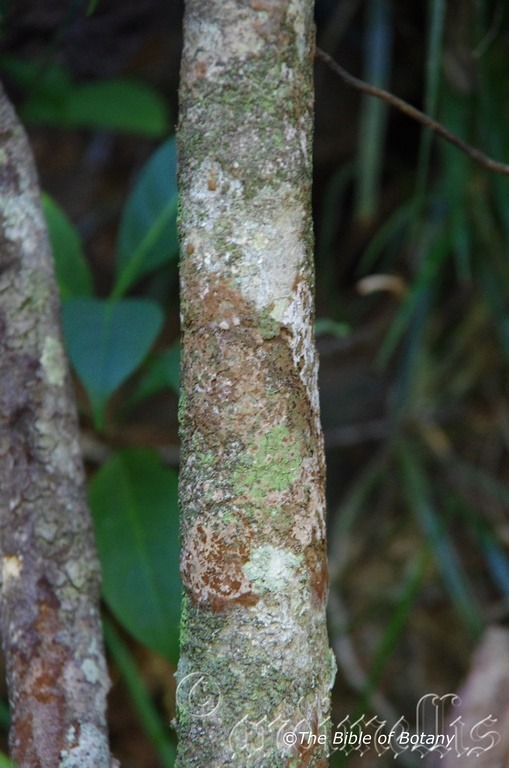

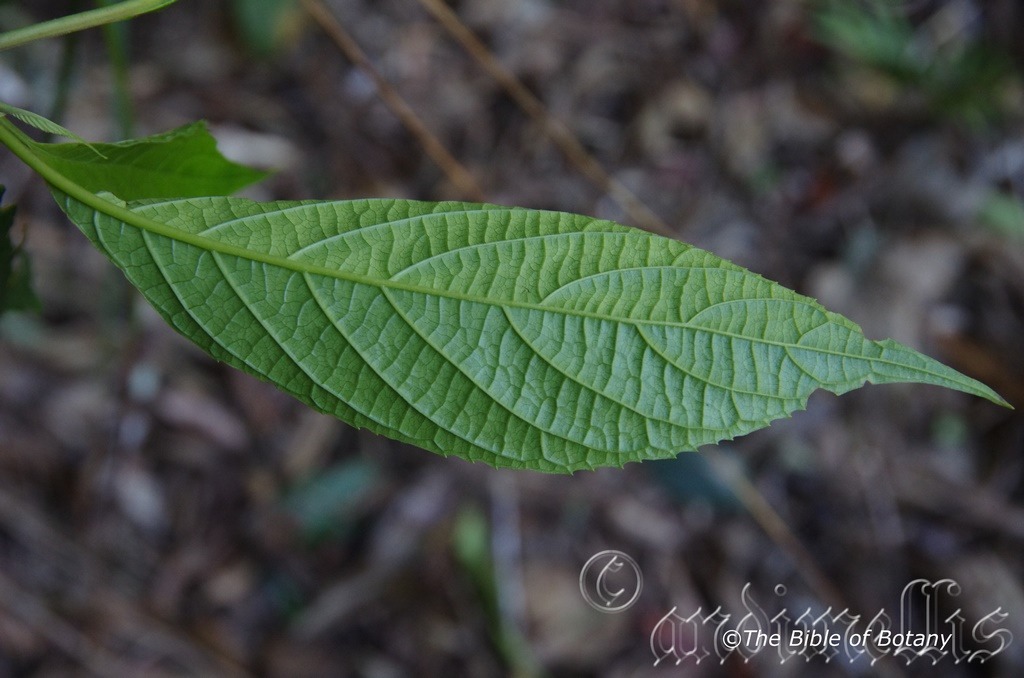


Paluma Range National Park Qld.
Abrophyllum ornans
Classification:
Unranked: Eudicots
Class: Asterids
Order: Asterales
Family: Rousseaceae / Grossulariaceae (There is confusion between the states as to the family Abrophyllum belongs).
Subfamily:
Genus: From Habros, which is Ancient Greek for delicately beautiful and Phullon/Ph?llon, which is Ancient Greek for a leaf. It refers to leaves, which are rather gracefull, beautiful or are delicate.
Specie: From Ornans, which is Latin for ornate or beautiful. It refers to the overall beauty of the plants, which are rather ornate in this species.
Sub specie:
Common Name: Native Hydrangea.
Distribution:
Abrophyllum ornans is a widespread species from east of Coen on Cape York peninsular south to Deua National Park east of Canberra.
https://avh.ala.org.au/occurrences/search?taxa=Abrophyllum+ornans+#tab_mapView
Habitat Aspect Climate:
Abrophyllum ornans prefer full shade to light filtered shade. It grows in poorer soils associated with warm temperate and warm subtropical rainforests and cool tropical rainforests. It is frequently found growing in riparian zones, monsoonal vine forests and dryer gallery forests. The altitude ranges from 300 meters ASL to 1200 meters ASL.
The temperatures range from minus 3 degrees in July to 36 degrees in January.
The rainfalls range from lows of 900mm to an average of 3200mm annually.
Soil Requirements:
Abrophyllum ornans prefer growing on light clays to medium clays. The soils are derived from decomposed brown basalts, black basalts, shale and metamorphic rocks. The soil?s pH ranges from 5pH to 6.5pH. It does not tolerate water logged soils. Non saline soils to moderately saline soils are tolerated.
Height & Spread:
Wild Plants: 3m to 8m by 2.5m to 6m.
Characteristics:
Abrophyllum ornans is an erect shrub with divaricate branches. The trunk and branches are glabrous to slightly scabrous, dull, pale grey-brown and bear the scars of fallen leaf petioles. The branchlets are a pale green to mid green and glabrous and bear the scars of fallen leaf petioles. The juvenile stems are sparsely to densely cover in white to pale fawn pannate to sericeous hairs.
Abrophyllum ornans‘s alternate to almost opposite leaves are elliptical to obovate and measure 90mm to 200mm in length by 30mm to 80mm in width. The cuneate base is symmetrical to very slightly oblique while the apex is long acuminate to apiculate. The margins are irregularly toothed with apex on each tooth being callus. The discolorous laminas are grass-green, glossy and glabrous to sparsely cover in white pannate hairs on the upper laminas while the lower laminas are dull and slightly to much paler. The mid veins and 12 to 16 lateral veins are strongly prominent on the lower lamina and are depressed and clearly visible from the upper laminas. The petioles measure 20mm to 40mm in length.
The inflorescence of Abrophyllum ornans are dense panicles born from the terminals which grow out by the time the fruits appear. The panicles measure 50mm to 100mm in length and contain 36 to 56 individual flowers. The grass-green peduncles, pedunculates, rachis and pedicels are glabrous to densely cover in white to pale fawn pannate hairs. The peduncles measure 10mm to 16mm in length, the peduncules measure 16mm to 24mm in length while the rachises measure 14mm to 20mm in length and the pedicels measure 4mm to 6.5mm in length. The calyxes measure 1.5mm to 3mm in length. The 5 white to creamy yellow petals are oblong-elliptical with a concave, acute apex. The petals measure 4mm to 5mm in length by 2mm to 2.3mm in width.
The 5 creamy yellow stamens are opposite the petals, surround the ovary and are free for their entire length. The filaments measure 0.9mm to 1.2mm in length. The 5 white, adnately fixed anthers measure 1.6mm to 2.2mm in length by 1.5mm to 2mm in width.
The creamy yellow styles measure 1.8mm to 2mm in length by 2mm to 2.4mm in diameter near the base. The 5 white lobed or rarely 4 lobed stigmas are broadly ovate. Abrophyllum ornans flowers appear from October through to late December.
Abrophyllum ornans fruits are ovoid to ellipsoidal berries. The succulent berries measure 8mm to 12mm long by 8mm to 12mm wide. The grass-green berries are sparsely to densely cover in white to pale fawn pannate hairs and turn deep purple-black when ripe. The small, brown seeds are rugose and measure 0.8mm to 1mm in diameter. The fruits ripen between March and early October.
Wildlife:
Abrophyllum ornans fruits are attractive to most medium and large fruitigrove birds like cat birds, the Satin Bower Bird and Lewin?s Honey Eater.
There is some confusion as to whether the berries are edible or not or toxic or not. My personal experience is that the berries are edible if you can handle the very strong, astringent flavour. I have eaten the fruits in small quantities without experiencing any discomfort but have not consumed large quantities nor would I until science tells me otherwise. The seeds are mildly toxic. Until then the berries are strictly for the birds. (Please note that some Australian fruits have proven toxic to some people while others have no signs of discomfort.)
Cultivation:
It is a good fire retardant shrub.
* Fire retardant plants and trees are able to act as radiant heat screens and absorb more of the heat of an approaching fire without burning.
* Fire retardant trees are able reduce wind speed near a house and also trap embers and sparks carried by the wind.
* Fire retardant ground covers are able to catch burning embers without catching fire themselves, and also slow the travel of a fire through debris and litter on the ground.
Abrophyllum ornans is a very beautiful large shrubs or small trees for areas that experience light frosts in winter to hot humid summers. They should be more widely grown in warm temperate, sub-tropical and tropical rainforest gardens. In cultivation they will grow 2.5 meters to 3 meters in height by 2.5 meters to 3 meters in width as a shrub grown in the open or 5 meters to 6 meters in height by 3 meters to 5 meters in diameter as a small tree grown in the open or taller and narrower if grown amongst other rainforest trees.
This is a beautiful shrub when in flower and again when the ripe fruits ripen.
Despite Abrophyllum ornans being a rainforest plant, the plants are quite hardy and offer a bold alternative to the simple leaves found in most rainforest gardens. It can be trimmed to a number of shapes and used very effectively with all the taller growing Cordyline specie. Remember though that the plant can be deciduous in the dry season dropping all or most its leaves if they are allowed to dry out.
It grows exceptionally well on lighter soils where deep leaf litter keeps the soil cool and moisture at an even level. If these requirements are met it can cope with temperatures as low as minus 3 degrees and up to 38 degrees. It is not drought tolerant dropping their leaves at the first sign of stress. This can be overcome with deep watering and the addition of our recommended fertilizer at half strength on the onset of the dry season or as soon as the trees start to show any stress. A good deep watering is far more beneficial than several light watering.
If the shrubs do lose a lot of leaves give them a hard pruning followed by a good deep soaking with our recommended fertilizer at half strength and repeat a week later. They can cope with prolonged periods of wet weather and are ideally placed below retaining walls where moisture continually seeps after prolonged wet periods or along drainage channels.
Propagation:
Seeds: The seeds of Abrophyllum ornans can be easily removed from the fruits.
Sow the fresh seeds into a seed raising mix. Seed germination is usually quick and completed within 3 months. When the seedlings are 25mm to 50mm tall, prick them out and plant them into 50mm native tubes using a seed raising mix.
Once the seedlings form a strong rooting system and leaf growth plant them out into their permanent position.
Cuttings: Use 100mm to 200mm long old material from the previous season?s growth when growing from Cuttings. Take them in mid-autumn or early spring as the last frosts abate. Take a 10mm slice off the bark from the bottom, using a weak rooting hormone; more for sterilization dip the cutting in and place it in a 50mm native tube with a sterile seed raising mix. When the cuttings have obviously struck and have developed good roots treat them as for seedlings.
Fertilize using Seaweed, fish emulsion or organic chicken pellets soaked in water on an alternate basis. Fertilize every two months until the plants are established then annually either in early September to March to maintain health, vitality and better flowering.
Further Comments from Readers:
All information is included in good faith and has been thoroughly researched prior to printing. The website or the author does not warrant or guarantee the accuracy of any information on these pages, nor does the website or the author accept any responsibility for any loss arising from the use of the information found within. The views and opinions are strictly those of the author or those members who chose to actively participate in the contents herein.
Hi reader, it seems you use The Bible of Botany a lot. That’s great as we have great pleasure in bringing it to you! It’s a little awkward for us to ask, but our first aim is to purchase land approximately 1,600 hectares to link several parcels of N.P. into one at The Pinnacles NSW Australia, but we need your help. We’re not salespeople. We’re amateur botanists who have dedicated over 30 years to saving the environment in a practical way. We depend on donations to reach our goal. If you donate just $5, the price of your coffee this Sunday, We can help to keep the planet alive in a real way and continue to bring you regular updates and features on Australian plants all in one Botanical Bible. Any support is greatly appreciated. Thank you.
In the spirit of reconciliation we acknowledge the Bundjalung, Gumbaynggirr and Yaegl and all aboriginal nations throughout Australia and their connections to land, sea and community. We pay our respect to their Elders past, present and future for the pleasures we have gained.

Author’s Garden The Pinnacles NSW

Bushland Beach Qld.
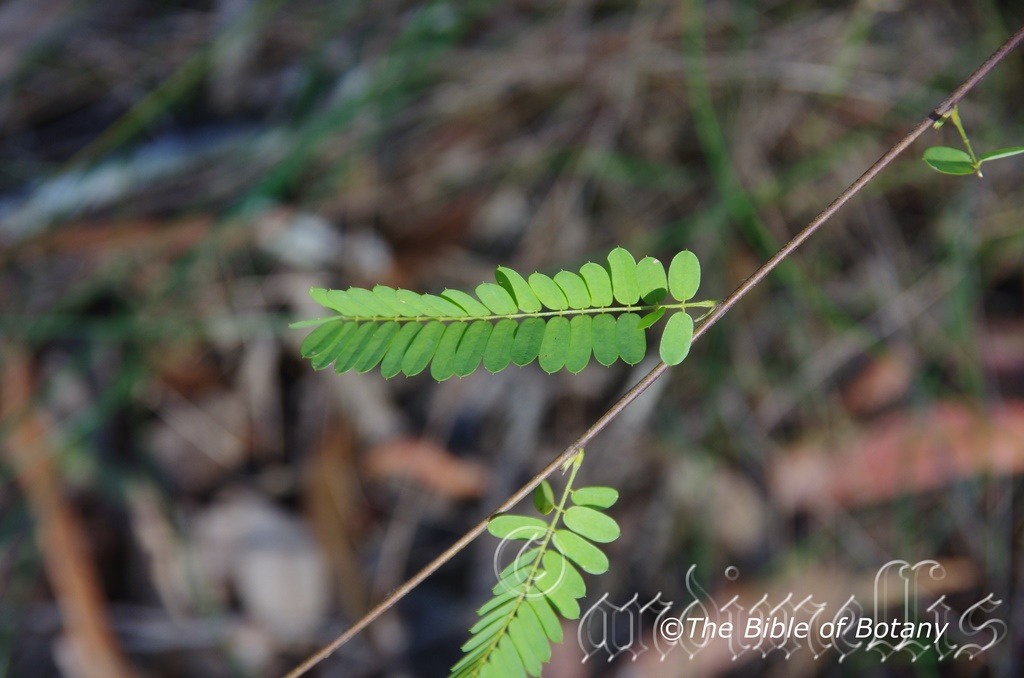
Bushland Beach Qld.

Author’s Garden The Pinnacles NSW
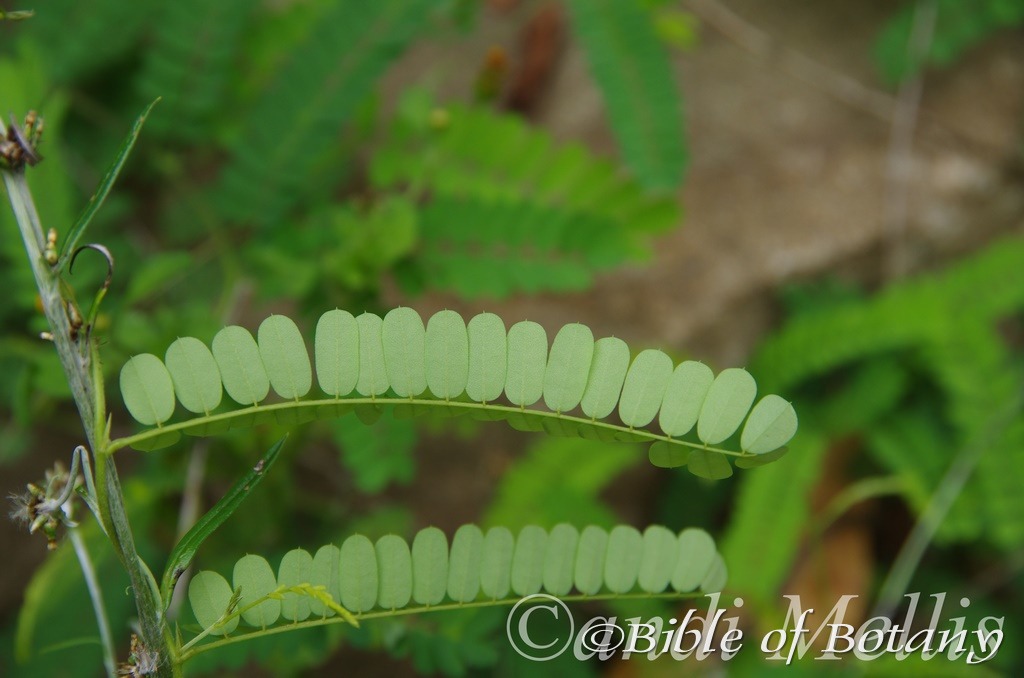
Author’s Garden The Pinnacles NSW

Author’s Garden The Pinnacles NSW
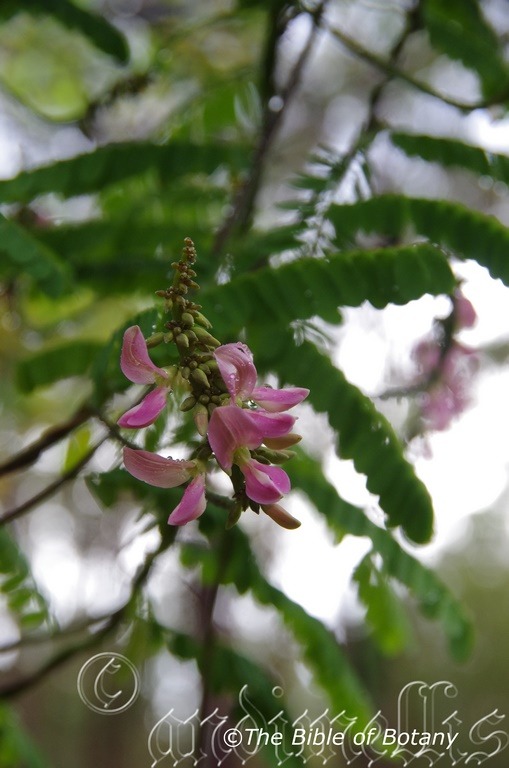
Bushland Beach Qld.

Bushland Beach Qld.

Bushland Beach Qld.

Bushland Beach Qld.
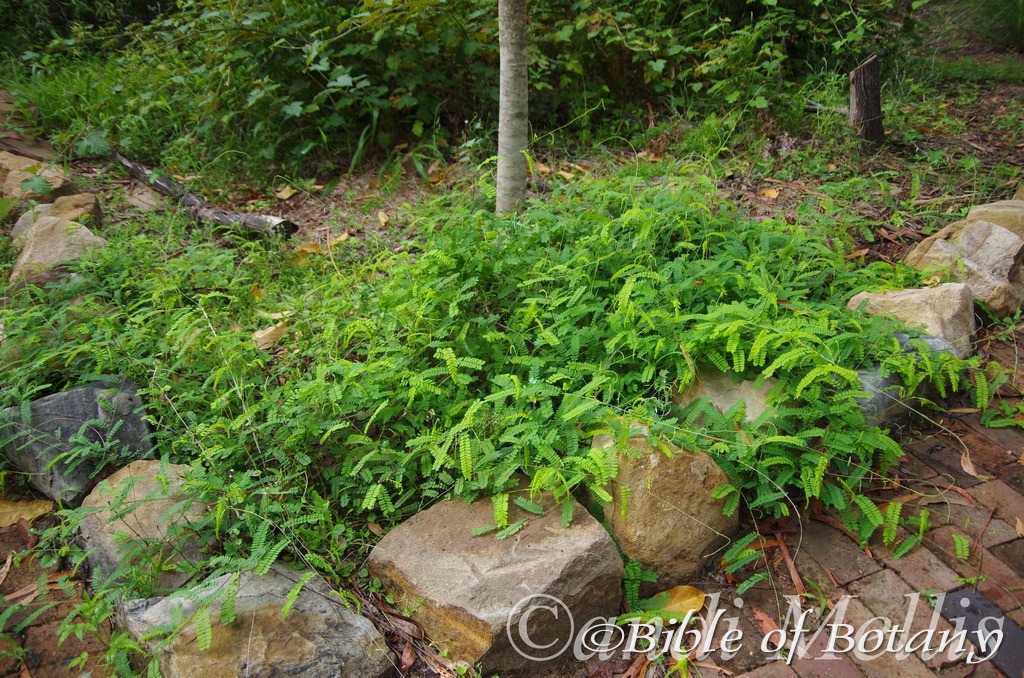
Author’s Garden The Pinnacles NSW
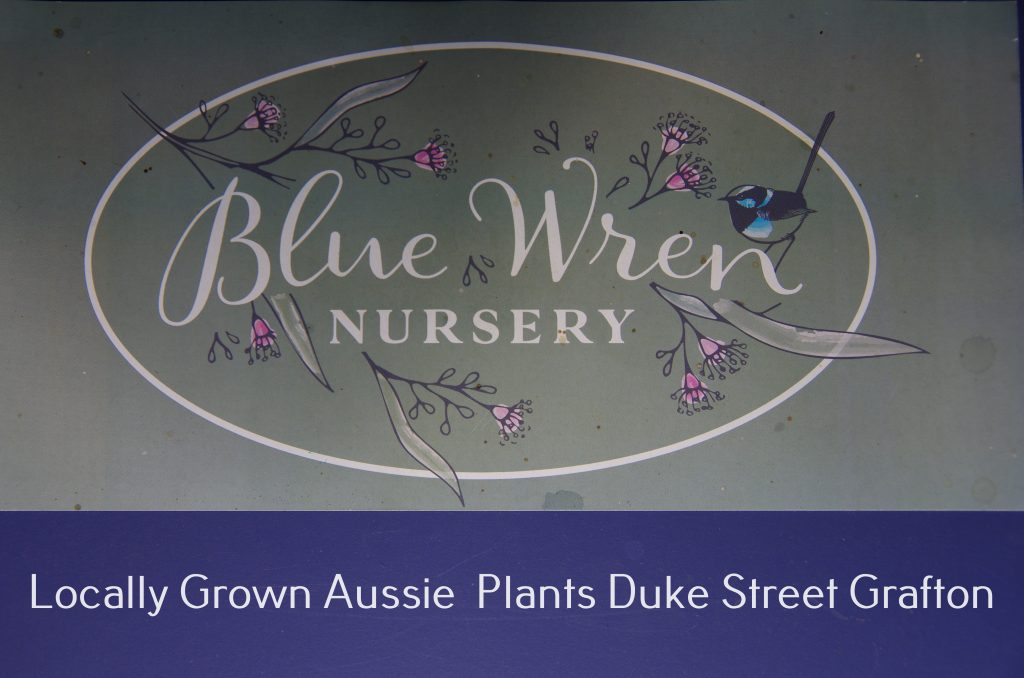
Abrus precatorius
Classification:
Class: Magnoliophyta
Order: Fabales
Family: Fabaceae
Subfamily: Mimosoideae
Genus: From Abrin, which is Ancient Greek for a potent poison or Abrus, which is Latinized from the vernacular of the Arabic word for the plant. It refers to plants, which contain the most toxic natural poison known to man, especially in the seeds.
Specie: From Precari, which is Latin for to pray or be prayful. It refers to leaves and or leaflets, which hang down on the petioles somewhat in a praying position.
Sub specie:
Common Name: Crabs Eyes or Gidgee Gidgee or in local aboriginal language gidjiirr.
Distribution:
Abrus precatorius is a widespread species from the Kimberley Range in Western Australia around the coast to Brunswick Heads in northern New South Wales. It is also found on the Islands off the east coast of Queensland, the Torres Straight Islands, the Islands in the Gulf of Carpentaria and the Islands off the Western Kimberley?s.
It is also found in Indo China, Malaysia, Philipines, Indonesia and Papua New Guinee.
https://avh.ala.org.au/occurrences/search?taxa=Abrus+precatorius+#tab_mapView
Habitat Aspect Climate:
Abrus precatorius prefer full sun to light filtered shade. It grows below medium size trees, low trees, or in low dry scrub lands in open woodlands. It is frequently found growing in beach front woodlands, heaths, creek lines monsoonal vine forests and dry gallery forests. The altitude ranges from 3 meters ASL to 500 meters ASL.
The temperatures range from 3 degrees in July to 44 degrees in January.
The rainfalls range from lows of 1000mm to an average of 3200mm annually.
Soil Requirements:
Abrus precatorius prefer deep, sands, sandy loams, light fatty clays, medium clays or light silts to medium silts. The soils are usually derived from decomposed sandstones, granites, limestones, alluvial deposits or accumulated peaty beach sands. The soil?s pH ranges from 4.5pH to 6.5pH. It does not tolerate water logged soils. None saline soils to moderately saline soils are tolerated.
Height & Spread:
Wild Plants: 3m to 10m by 3m to 5m.
Characteristics:
Abrus precatorius is a woody twiner whose bark is a glabrous to slightly scabrous and dull pale grey rare and attaining 15mm in diameter. The branchlets are a pale green to mid green and glabrous. The juvenile stems are glabrous and mid blue-green. The stems die back in the dry season to reshoot as soon as good rains return or soil moisture improves by means of upper catchment runoff running down stream.
Abrus precatorius‘s even pinnate leaves have 5 to 18 pairs of pinnae. The opposite pinnae are oblong to very slightly oblong-obovate and measure 5mm to 25mm in length by 3mm to 8mm in width. The base is rounded while the apex is obtuse with a short mucronate tip. The margins are entire. The concolourous lamina is pale blue-green on both laminas. The laminas are sparsely covered in short, white, appressed, pannate hairs. The mid vein is slightly prominent on the lower lamina and is visible on the upper lamina. The stipules are narrow triangular and covered in short white appressed pannate hairs. The stipules measure 3mm to 5mm in length. The petioles measure 0.5mm to 1mm in length.
The inflorescence of Abrus precatorius are dense racemes born from the leaf axis. The racemes contain 8 to 20 individual flowers. The rachis measures 15mm to 55mm in length. The individual flowers are on pedicels which measure 0.5mm to 1mm in length. There are 6 shallow, hemi oval, calyx lobes. The calyx measures 3mm in length overall. The standard is pale pink, mauve or purple with a few deeper colored striations on the inside. They measures 7mm to 9mm in length by 6mm to 7mm in width. The wings are pale pink, mauve or purple with various amounts of striations on the lower side. They measure 11mm to 13mm in length by 3.5mm to 4.5mm in width. The keel is white or pale pink and measures 12mm to 14mm in length by 4mm to 5mm in width.
The 8 linear, dimorphic stamens are spreading with the 8mm longer stamens being adjacent to the petals. The 5mm shorter stamens are opposite the petals. The 8 white anthers are united for half their length and measure 8mm to 9mm in length. The pollen is white to cream.
The very pale green to very pale pastel pink style and pale green ovary measures 8mm to 10mm in length. The heaviest flowering occurs during the summer months of November to February though flowers have been recorded from all months of the year.
Abrus precatorius fruits are oblong pods. They measure 25mm to 50mm in length by 8mm to 15mm in width. The blue green pods are densely covered in short white appressed pannate hairs. They are only slightly constricted between the seeds. The pods turn a mid grey-brown on ripening when the split along 1 or 2 of the sutures to reveal the seeds inside a clear filmy sheet. The oblong seeds are remarkably uniform in size, shape and weight. They measure 6mm in length by 4.5mm in width. They are glossy scarlet red for 75mm of their length nearest the apex and black at the base.
Wildlife:
It appears that birds distribute the seeds but the exact species are unknown to the author. It is known that birds eat the pseudo seeds of other poisonous specie and pass them through quickly dispersing them to other places within their territory.
The seeds are highly toxic containing abrin a chemical that destroys protein in the body. One seed is enough to kill an adult if chewed and swallowed. The dust from the powder if crushed is also highly toxic. It is the most toxic known organic, natural poison to man.
The plant’s roots and stems are being considered and tested for treatment in some cancers, sterilization and abortion pills.
Cultivation:
Abrus precatorius is a very beautiful perennial twiner that can be trimmed to produce an amazing small creeper like plant or dense foliage ground cover. It should be more widely grown in semi arid, temperate, sub tropical and tropical gardens. It suits medium to large gardens with garden subjects growing 1m to 3m in height by 2m to 4m in diameter in cultivation.
This is a beautiful creeper when in flower and again when the ripe fruits split to reveal the scarlet and black glossy seeds.
Despite the delicate looking foliage of Abrus precatorius the plants are quite hardy and offer a bold alternative to the simple leaves found in most plants. It can be trimmed to a number of shapes and used where an open trellis plant is required. Remember though that the plant can be deciduous in the dry season dropping all its leaves and dying back to a root stock only to be rejuvenated following rain or ground moisture the following growing season. My plant north of Grafton is deciduous reshooting along the stems as soon as the spring rains come. Also keep in mind that the seeds are deadly poisoned if chewed. If the seeds are swallowed whole and the testa has not been broken the seeds will hopefully pass through the body without any ill effects. (This is not advisable for if the testa is damaged poisoning and death may occur. Keep children in mind when planting it close to paths as little hands and mouths are often attracted to brightly coloured ornamental seeds.)
It is best used adjacent to small areas of bush away from paths or the house so their beautiful foliage and fruits can be viewed regularly. It is great in medium to large rockeries as a fill in plant. Here it can be planted in small groups of 2 or 3 as a stand-alone as a delicate ground cover to create a clean dense look with other sub tropical plants. If it is surrounded by shorter plants with fine foliages and yellow flowers they will dominate at the center giving height and strength to the bed especially when they are in fruit. Plants with large leaves as a backdrop will bring the delicate look of the leaves to the fore particularly if those large leaves are an olive green or pale grass-green. Planted with a mass of smaller plants and ground covers with mixed colored flowers not red and foliages will ensure a great display during the winter and spring months and for the rest of the year. This would be particularly strong, if a mixture of different finer foliages of different colors and textures are incorporated together. Annuals would also highlight the larger size and dominance of the centrally placed Abrus. Be sure to plant any plant exactly in the center for a formal look or well off to one side for an informal look. 2 or 3 shrubs close together on one side looks even more spectacular when just a single plant is placed on the other side to give balance to the picture. Mass plant below so the whole bed is covered for a woodland scene or sparsely plant for an arid scene. Mass planting will provide the boldness in habit of this twiner which has the advantage to take hard pruning.
Two plants can achieve the same scenario if planted in close proximity and still achieve the sparseness and harshness of the desert picture. Here a few annuals strategically scattered around would complete the picture. The plants planted around the perimeter should have a mixture of bold colors radiating out from the base of the trees so use whites, pinks, mauves and yellows discreetly close in and reds and whites further out, yellows and pinks can be used anywhere as they will not clash or blend in with the . Grevillea miniata has broad leaves and large enough flowers to dominate the scene when in flower and when not in flower their strong outline will give the contrast required for strength provide those plants covering the ground have smaller leaves and the majority are a pale green and no blue grey leaves are used.
Propagation:
Seeds: The seeds of Abrus precatorius require treatment before sowing. Pre treat by placing the seeds into a glass of boiling water. Allow the water to cool and leave to soak for 10 hours. Seeds that have not swollen repeat the exercise.
Sow into a seed raising mix. Seed germination is very slow and erratic. When the seedlings are 25mm to 50mm tall, prick them out and plant them into 50mm native tubes using a seed raising mix.
Fertilize using Seaweed, fish emulsion or organic chicken pellets soaked in water on an alternate basis. Fertilize every two months until the plants are established then annually either in early September to March to maintain health, vitality and better flowering.
Further Comments from Readers:
All information is included in good faith and has been thoroughly researched prior to printing. The website or the author does not warrant or guarantee the accuracy of any information on these pages, nor does the website or the author accept any responsibility for any loss arising from the use of the information found within. The views and opinions are strictly those of the author or those members who chose to actively participate in the contents herein.
Hi reader, it seems you use The Bible of Botany a lot. That’s great as we have great pleasure in bringing it to you! It’s a little awkward for us to ask, but our first aim is to purchase land approximately 1,600 hectares to link several parcels of N.P. into one at The Pinnacles NSW Australia, but we need your help. We’re not salespeople. We’re amateur botanists who have dedicated over 30 years to saving the environment in a practical way. We depend on donations to reach our goal. If you donate just $5, the price of your coffee this Sunday, We can help to keep the planet alive in a real way and continue to bring you regular updates and features on Australian plants all in one Botanical Bible. Any support is greatly appreciated. Thank you.
In the spirit of reconciliation we acknowledge the Bundjalung, Gumbaynggirr and Yaegl and all aboriginal nations throughout Australia and their connections to land, sea and community. We pay our respect to their Elders past, present and future for the pleasures we have gained.

Abutilon oxycarpum
Classification:
Unranked: Eudicots
Class: Rosids
Order: Malvales
Family: Malvaceae
Genus: From Abutilon, which is Latinized from the Arabic word for a mallow. It refers to plants, which are related to the Eurasian mallows.
Specie: From Oxalis/Oxus/Oxys, which are Greek for sharp and Karp?s, which is Ancient Greek for a fruit. It refers to the fruits, which have a sharp point at the apex.
Sub specie:
Common Name: Lantern Bush or Straggly Lantern.
Distribution:
Abutilon oxycarpum is a widespread species from the Kimberley?s in Western Australia south to Perth.
In the east it is found south from Cape York Peninsular in far north eastern Queensland to central coastal New South Wales.
https://avh.ala.org.au/occurrences/search?taxa=Abutilon+oxycarpum+#tab_mapView
Habitat Aspect Climate:
Abutilon oxycarpum prefer full sun to light filtered shade. It grows below medium size trees, low trees, in low dry open woodlands or in openings at the edge of dry rain forests. The altitude ranges from 500 meters ASL to 840 meters ASL
The temperatures range from minus 3 degrees in July to 44 degrees in January.
The rainfalls range from lows of 200mm to an average of 1600mm annually.
Soil Requirements:
Abutilon oxycarpum prefer growing on skeletal soils on rocky hill slopes creek gullies and plateaus associated with decomposed red sandstones, basalts and granites. Soils with a pH5 through to a pH6 are preferred. They are not tolerant of water logged soils. Non saline to moderately soils are tolerated.
Height & Spread:
Wild Plants: 1.5m to 2m by 1.5m to 2m.
Characteristics:
Abutilon oxycarpum is a straggly shrub with weak stems. The main stems are greenish brown to greenish grey and covered in white stellate and hirsute hairs. The branchlets and juvenile stems are pale blue-green and densely covered in white stellate and hirsute hairs. The stems may die back in the dry season only to reshoot as soon as good rains return or soil moisture improves by means of upper catchment runoff running down stream.
Abutilon oxycarpum?s adjacent leaves are ovate, broad lanceolate to deltoid and measure 20mm to 80mm in length by 10mm to 25mm in width. The base is cordate. The margins are serrate to double serrate. The concolourous laminas are pale blue-green and covered in white stellate and hirsute hairs. The 7 palmate veins are prominent on the lower lamina radiating out from the base and are distinctly visible on the upper lamina. The laminas are raised between the veins on the upper lamina. The linear stipules are covered in white stellate and hirsute hairs and measure 4mm to 6mm in length. The stipule margins are serrate. The petioles measure 20mm to 58mm in length.
The inflorescences of Abutilon oxycarpum are born singly, in small groups from the leaf axils or on special leafy terminal spikes. The spikes contain 8 to 16 individual flowers and are densely covered in white stellate and glandular hairs. The rachis measures 120mm to 180mm in length while the pedicels measure 10mm to 20mm in length.
The flowers measure 11mm to 14mm in diameter. The calyxes are covered in white stellate hairs. The calyx tubes measure 1.4mm to 1.7mm in length while the lobes measure 2mm to 2.3mm in length. The 5 bright yellow or rarely white petals are adnate to the staminal tube and measure 6.5mm to 8.5mm in length by 6.5mm to 8.5mm in width.
The pascal green staminal tube is stout and measures 2mm to 3mm in length. The 30 to 35 stamens on the staminal tube are free for 1mm to 2mm near the apex. The anthers are curved with white pollen.
The pascal green style column extends 1mm to 1.6mm past the staminal tube. The 10 branched stigmas measure 1.6mm to 2.2mm in length. The staminal tube, pistil column and ovary are covered in white pulverulent hairs. Like most Malvaceae they have a long flowering season which commences in early December and lasts to early June.
Abutilon oxycarpum fruits are shallow pointed, 10 locular, star shaped capsules. They measure 6mm to 8mm in length by 8mm to 10mm in diameter when fully ripe. The blue green pods are densely covered in short white stellate hairs and turn dull brown-grey on ripening. There are 2 to 5 black seeds in each locule. They measure 1mm to 4mm in length by 1mm to 2.5mm in width.
Abutilon oxycarpum var. subsagittatum base is almost sagitate while the apex is long narrow acute.
Wildlife:
Abutilon oxycarpum attract many small beetles when in flower. The leaves of plants are usually holed and eaten by unknown insects to the author.
We have used the green fruits of this Abutilon for making a jam similar to Rosella jam which is quite acceptable to the palate. Young shoots can be used as a substitute for cabbage having a milder flavour for something different.
Cultivation:
Abutilon oxycarpum is a very beautiful shrub that can be trimmed to enhance its bushiness in the garden. It should be more widely grown in semi arid, temperate, sub tropical and tropical gardens. It suit medium to large gardens with garden subjects growing 1 meter to 1.5 meters in height by 1 meter to 1.5 meters in diameter when grown in the open in cultivation.
This is a beautiful sub shrub when in flower and is best mixed with other natives so that any damage done to the foliage is not noticed.
Despite the delicate looking foliage of Abutilon oxycarpum the plants are very hardy and offer a bold alternative to the simple leaves found in most plants.
It is best used adjacent to small areas of bush close to paths or the house so their flowers and fruits can be viewed regularly. It is great in medium to large rockeries as a fill in plant. Here they can be planted in small groups of 2 or 3 as a stand-alone plant to create a clean dense look with other sub tropical plants. If they are surrounded by shorter plants with fine foliages and pink flowers they will dominate at the center giving width and strength to the bed especially when they are in flower. Plants with fine deep green leaves as a backdrop will bring the soft look of the leaves to the fore particularly if those fine leaves are deep olive green or pale grass-green. Planted with a mass of smaller plants and ground covers with mixed colored red coloured flowers and red foliages will ensure a great display all of the year.
Be sure to plant any plant exactly in the center for a formal look or well off to one side for an informal look. 2 or 3 shrubs close together on one side looks even more spectacular when just a single plant is placed on the other side to give balance to the picture. Mass plant below so the whole bed is covered for a woodland scene or sparsely plant for an arid scene. Mass planting will provide the boldness in habit of this shrub which has the advantage to take hard pruning.
Two plants can achieve the same scenario if planted in close proximity and still achieve the sparseness and harshness of the desert picture but be aware that the leaves will be attacked at some stage of the year every year. Here a few annuals strategically scattered around would complete the picture. The plants planted around the perimeter should have a mixture of bold colors radiating out from the base of the trees so use pinks, mauves and reds discreetly close in and whites further out. Abutilon oxycarpum has broad leaves and large enough flowers to dominate the scene when in flower and when not in flower their foliage can blend into the background.
Propagation:
Seeds: Abutilon oxycarpum do not require treatment before sowing.
Sow the seeds directly into a seed raising mix. Seed germination is usually fairly quick. When the seedlings are 25mm to 50mm tall, prick them out and plant them into 50mm native tubes using a good seed raising mix.
Fertilize using Seaweed, fish emulsion or organic chicken pellets soaked in water on an alternate basis. Fertilize every two months until the plants are established then annually either in early September to March to maintain health, vitality and better flowering.
Further Comments from Readers:
All information is included in good faith and has been thoroughly researched prior to printing. The website or the author does not warrant or guarantee the accuracy of any information on these pages, nor does the website or the author accept any responsibility for any loss arising from the use of the information found within. The views and opinions are strictly those of the author or those members who chose to actively participate in the contents herein.
Hi reader, it seems you use The Bible of Botany a lot. That’s great as we have great pleasure in bringing it to you! It’s a little awkward for us to ask, but our first aim is to purchase land approximately 1,600 hectares to link several parcels of N.P. into one at The Pinnacles NSW Australia, but we need your help. We’re not salespeople. We’re amateur botanists who have dedicated over 30 years to saving the environment in a practical way. We depend on donations to reach our goal. If you donate just $5, the price of your coffee this Sunday, We can help to keep the planet alive in a real way and continue to bring you regular updates and features on Australian plants all in one Botanical Bible. Any support is greatly appreciated. Thank you.
In the spirit of reconciliation we acknowledge the Bundjalung, Gumbaynggirr and Yaegl and all aboriginal nations throughout Australia and their connections to land, sea and community. We pay our respect to their Elders past, present and future for the pleasures we have gained.

Acacia acuminata
Classification:
Class: Magnoliophyta
Order: Fabales
Family: Fabaceae
Subfamily: Mimosoideae
Genus: From ἀκακία, which is Ancient Greek or Acanthium, which is Latin for to have a sharp point. It refers to the first species named by Dioscorides the Greek Botanist for the Egyptian plant Acacia arabica, which has very sharply pointed spines.
Specie: From Acuminata, which is Latin for being contracted or concave on the sides before protracting to a sharp or narrow point. It refers to apexes on the leaves, phyllodes or fronds, which have a long or short sharp points.
Sub specie: Acacia acuminata subsp. acuminata
Sub specie: Acacia acuminata subsp. burkittii
Common Name: In the local languages it is known as Manjart and Noongar
Distribution:
Acacia acuminata subsp. acuminata is a widespread species from southern Western Australia to western New South Wales. Acacia acuminata subsp. acuminate is found from the Murchison River to Borden and Ravensthorpe. It extends eastwards to Yalgoo, Kalgoorlie and Balladonia where the subsp. Burkittii extends in an easterly direction to western and central New South Wales.
Acacia acuminata subsp. burkittii is scattered across the southern half of the Australian mainland with just one small population in western Victoria.
https://avh.ala. org.au/occurrences/search?taxa=Acacia+acuminata+#tab_mapView
Habitat Aspect Climate:
Acacia acuminata prefer full sun. It grows below medium size trees, low trees, or in low dry scrub lands in the open. It can be found gentle slopes and elevated flats. Acacia acuminata subsp. burkittii is found on inland sand dunes and flats. The altitude ranges from 20 meters ASL to 450meters ASL.
The temperatures range from 3 degrees in July to 44 degrees in January.
The rainfalls range from lows of 100mm to an average of 500mm annually.
Soil Requirements:
Acacia acuminata prefer deep, sandy loams to light fatty clays or light gravelly clays to medium gravelly clays. The soils are usually derived from decomposed sandstones, granites or limestones. The soil?s pH ranges from 5pH to 8pH. It does not tolerate water logged soils. Non saline to moderately saline soils are tolerated.
Height & Spread:
Wild Plants:
Acacia acuminata subsp. acuminata 3m to 10m by 3m to 7m.
Acacia acuminata subsp. burkittii 1m to 4m by 2m to 4m.
Characteristics:
Acacia acuminta?s bark is a slightly rough and dull pale grey, while the branchlets are a light grey and glabrous. The branchlets and young shoots are terete pale yellow and sparsely covered in golden sericeous hairs on the very young shoots.
Acacia acuminata?s simple phyllodes are narrowly elliptical, terete in cross section and slightly recurved. They measure 50mm to 200mm in length by 0.5mm to 10mm in width. The base is cuneate though this is difficult to distinguish at times where the petiole starts and the phyllode begins while the apex is narrowly acute while the margin is entire and slightly recurved. The concolourous laminas are bright green and glabrous. The mid vein is slightly prominent on both surfaces. The petioles measure 1mm to 4mm in length.
The inflorescence of Acacia acuminata are erect terminal spikes with one or two occurring in each phyllode axil. Flowers measure 25mm to 30mm in length by 6mm to 8mm in diameter. The flowers are pale yellow or more often a deep golden yellow. Individual flowers measure 1.3mm to 1.7mm in length. The lanceolate calyx lobes measure 0.7mm to 1mm in length. The pulvinuses measure 1mm to 2mm in length. Acacia acuminata?s flowers appear from July through to October with some flowers appearing throughout the year in favorable seasons.
Acacia acuminata fruits are long narrow pods. They measure 85mm to 125mm in length by 4mm to 7mm in width and strongly constricted between the seeds. The green chartaceous pods turn brown on ripening. They are sparsely covered in with short caduceus hairs. Pods ripen in early to late summer. The oblong to broadly elliptical seeds measure 3mm to 6mm in length and are deep brown with a cream funicle.
Sub specie Difference:
Acacia acuminata subsp. acuminata is taller with bright green phylodes being longer with a more pronounced taper. The seed pods are shorter at 50mm to 100mm in length by 5mm in width.
Acacia acuminata subsp. burkittii is shorter with green terete or subterete phylodes with n acute apex. The seed pods are longer at 70mm to 120mm in length by 2mm to 3mm in width. This sub species is now being considered as a new species.
Wildlife:
Acacia acuminata?s wildlife is unknown to the author.
Cultivation:
Acacia acuminata is a very beautiful small tree or medium shrub which should be more widely grown in arid and semi arid gardens. Suits small to large gardens. Garden subjects of subsp. acuminata will grow into dense small shade trees 10 meters to 12 meters in height by 6 meters to 8 meters in cultivation. In Native arid gardens they can be used to add nitrogen to the soil. They are a strong base plant to protect more delicate plants giving good shade and plenty of flowers in the winter. They would make ideal wind breaks and shelter belts.
Try prostrate Grevilleas which have larger prolific red flowers below for something different and strong. Be adventurous and use this Acacia as the main feature or as a safe corridor for birds in the garden. Don?t plant them in straight rows but use curves or natural features to high light them. This gives a more natural look and is more pleasing to the eye.
Propagation:
Seeds: Acacia acuminata seeds require treatment before sowing. Pretreat the seeds by placing the seeds into a glass of boiling water. Allow the water to cool and leave to soak for 10 hours. Seeds that have not swollen repeat the exercise.
Sow into a seed raising mix. Keep the trays moist not wet and place them in the full sun. When the seedlings are 25mm to 50mm tall, prick them out and plant them into 50mm native tubes using a seed raising mix.
Once the seedlings reach 200 to 250mm in height plant them out into their permanent position. For mass plantings plant the subsp. acuminate at 8 meter to 10 meter spicing while the subsp. bursitis use 2 meter to 3 meter centers.
Fertilize using Seaweed, fish emulsion or organic chicken pellets soaked in water on an alternate basis. Fertilize every two months until the plants are established then annually either in early September to March to maintain health, vitality and better flowering.
Further Comments from Readers:
All information is included in good faith and has been thoroughly researched prior to printing. The website or the author does not warrant or guarantee the accuracy of any information on these pages, nor does the website or the author accept any responsibility for any loss arising from the use of the information found within. The views and opinions are strictly those of the author or those members who chose to actively participate in the contents herein.
Hi reader, it seems you use The Bible of Botany a lot. That’s great as we have great pleasure in bringing it to you! It’s a little awkward for us to ask, but our first aim is to purchase land approximately 1,600 hectares to link several parcels of N.P. into one at The Pinnacles NSW Australia, but we need your help. We’re not salespeople. We’re amateur botanists who have dedicated over 30 years to saving the environment in a practical way. We depend on donations to reach our goal. If you donate just $5, the price of your coffee this Sunday, We can help to keep the planet alive in a real way and continue to bring you regular updates and features on Australian plants all in one Botanical Bible. Any support is greatly appreciated. Thank you.
In the spirit of reconciliation we acknowledge the Bundjalung, Gumbaynggirr and Yaegl and all aboriginal nations throughout Australia and their connections to land, sea and community. We pay our respect to their Elders past, present and future for the pleasures we have gained.

Acacia adunca
Classification:
Class: Magnoliophyta
Order: Fabales
Family: Fabaceae
Subfamily: Mimosoideae
Genus: From ἀκακία, which is Ancient Greek or Acanthium, which is Latin for to have a sharp point. It refers to the first species named by Dioscorides the Greek Botanist for the Egyptian plant Acacia arabica, which has very sharply pointed spines.
Specie: From Aduncus, which is Latin for hooked. It refers to the apex of a leave, phyllodes, sepals or petals, which have a distinct hooked.
Sub specie:
Common Name: Cascade Wattle, Warrangarra Wattle or in the local aboriginal language it is known as Wurrundjeri.
Distribution:
Acacia adunca is an endemic species to the granite belt on the western slopes of far northern New South Wales and far southern Queensland.
https://avh.ala.org.au/occurrences/search?taxa=Acacia+adunca+#tab_mapView
Habitat Aspect Climate:
Acacia adunca prefer full sun. It grows below medium size trees or low trees in low dry scrub lands in exposed positions. It grows on gentle slopes and elevated flats. The altitude ranges from 650 meters ASL to 1150 meters ASL.
The temperatures range from minus 6 degrees in July to 34 degrees in January.
The rainfalls range from lows of 600mm to an average of 1050mm annually.
Soil Requirements:
Acacia adunca prefer growing on skeletal coarse sands, fine sands or sandy loams. The soils are derived from decomposed granites, pegmatites and obsidians. The soils range from a pH of 4.5 to pH6.5.It does not tolerate water logged soils. Non saline soils to moderately saline soils are tolerated.
Height & Spread:
Wild Plants: 3m to 12m by 4m to 10m.
Characteristics:
Acacia adunca‘s bark is a smooth dull pale grey and glabrous. The smaller branches and branches are erect to almost divaricate while the terete branchlets are pale rusty-brown, smooth, semi glossy and glabrous. The very young shoots are glabrous to sparsely covered in white hirsute hairs.
Acacia adunca’s alternate linear to acicular-linear phyllodes curve slightly back towards the stems. There is a gland or at times 2 positioned 10mm to 45mm above the pulvinus. The pulvinus measures 2mm in length. The petioles measure 3mm to 6mm in length and are sparsely covered in soft, white hirsute hairs. The phyllodes measure 7mm to 13mm in length by 1.5mm to 3mm in width. The bases are tapering while the apexes are acute with a distinct apiculated rigid hook. The concolourous laminas are pale blue to pale blue-green and flat. The margins are entire. The mid vein is slightly prominent on the lower laminas while the lateral veins are obscure as is the main vein from the upper laminas.
The inflorescences of Acacia adunca are born on short erect racemes from the leaf axils. There are 15 to 40 flower heads on the raceme and 4 to 14 individual flowers to a globose head. The slender, blue-green rachises and peduncles are glabrous. The peduncles measure 7mm to 11mm in length while the rachises measure 20mm to 32mm in length. The globose heads measure 5mm to 7mm in diameter. Acacia
The flowers are 5 merous. The pale blue-green calyxes and 5 calyx lobes are erect and glabrous. The yellow to orange-yellow tinged orbicular laminae and petals have a golden yellow or white fimbriate margin while the stamens are deep lemon yellow to deep golden yellow. Acacia adunca?s sweet scented flowers appear from June through to early October.
Acacia adunca fruits are long slightly curved coriaceous pods. The pods are rounded on opposite sides over alternate seeds. The glabrous pods measure 80mm to 180mm in length by 10mm to 12mm in width. The pods slightly constricted between the seeds. The pale blue-green pods turn deep grey to black when ripe. The oblong to ellipsoidal seeds are black with a short, creamy white funicle which expands greatly adjacent to the seed. The seeds measure 5.5mm to 6mm in length by 3.4mm to 3.6mm in width and 3mm by 3.2mm in depth.
Wildlife:
Acacia adunca?s wildlife is unknown to the author.
Cultivation:
Acacia adunca is a very beautiful small tree or medium shrub which should be more widely grown in semi-arid areas or coastal areas where the drainage is very good and the soils are courser type sandy clays. Garden subjects will grow into small shade trees from 5 meters to 6 meters in height by 4 meters to 5 meters in diameter with a light canopy when grown in the open.
In native gardens it can be used to add nitrogen to the soil. It is an excellent base plant to protect more delicate plants giving light shade and plenty of flowers throughout the winter months. The foliage is particularly attractive with purple tinged cultivars now available in specialist nurseries. Try prostrate red flowering Grevilleas for something strongly different on dry banks and large rockeries.
Garden beds would need to be open with plenty of space between plants to allow air flow as well as to give the branchlets a chance to spread and be appreciated for their unique beauty. Crowding this type of foliage with other plants will see them lose all the effectiveness of the color and form you require or want in the plant. Correct spacing will contrast the foliage?s better without one overpowering the other plants in the garden. For mass planting space the plants with at least 7 meters to 8 meters centers if you are considering it for a tree. Spacing?s of 3 meters to 4 meters will be needed to create a beautiful shrub scene.
If you are using them amongst rocks or around the small desert garden, plant them sparingly to attain a barren scene, so not to make the area look cluttered or detract from the other features like the rocks. 4 or 5 in an area of 500 square meters would be ample. 4 plants separately planted or plant 2 close together and separate the other 2 or 3 on the far side of the bed to give width and depth where you want it. The use of annuals helps to attract the viewer to the permanent plants foliage as they are the dominant foliage you want people to notice in the patch. In the case of Acacia adunca you could substitute very small Grevillea sp. or even Verticordia sp. in lieu of the native annuals. Remember most annuals flower when Acacia adunca is resting during the summer and most Grevilleas will flower at the same time so a blend may be the way to go. Annuals mixed with Acacia adunca help to give small gardens depth and make them look larger than what they really are. It works well with Grevillea masonii other Grevilleas of similar size but contrasting foliages are the key to success with the flowers being a bonus.
Acacia adunca can be lightly pruned to maintain a bushier plant and to induce it to grow as a shrub.
Propagation:
Seeds: Acacia adunca require treatment before sowing. Pretreat by placing the seeds into a glass of hot water. Allow the water to cool and leave to soak for 8 to10 hours. Seeds that have not swollen repeat the exercise.
Sow into a seed raising mix. When the seedlings are 25mm to 50mm tall, prick them out and plant them into 50mm native tubes using a seed raising mix.
Once the seedlings reach 200 to 250mm in height plant them out into their permanent position. For mass plantings plant at 6 meter to 8 meter centers for the trees and 3 meter to 4 meter centers for the prostrate forms.
Fertilize using Seaweed, fish emulsion or organic chicken pellets soaked in water on an alternate basis. Fertilize every two months until the plants are established then annually either in early September to March to maintain health, vitality and better flowering.
Further Comments from Readers:
All information is included in good faith and has been thoroughly researched prior to printing. The website or the author does not warrant or guarantee the accuracy of any information on these pages, nor does the website or the author accept any responsibility for any loss arising from the use of the information found within. The views and opinions are strictly those of the author or those members who chose to actively participate in the contents herein.
Hi reader, it seems you use The Bible of Botany a lot. That’s great as we have great pleasure in bringing it to you! It’s a little awkward for us to ask, but our first aim is to purchase land approximately 1,600 hectares to link several parcels of N.P. into one at The Pinnacles NSW Australia, but we need your help. We’re not salespeople. We’re amateur botanists who have dedicated over 30 years to saving the environment in a practical way. We depend on donations to reach our goal. If you donate just $5, the price of your coffee this Sunday, We can help to keep the planet alive in a real way and continue to bring you regular updates and features on Australian plants all in one Botanical Bible. Any support is greatly appreciated. Thank you.
In the spirit of reconciliation we acknowledge the Bundjalung, Gumbaynggirr and Yaegl and all aboriginal nations throughout Australia and their connections to land, sea and community. We pay our respect to their Elders past, present and future for the pleasures we have gained.
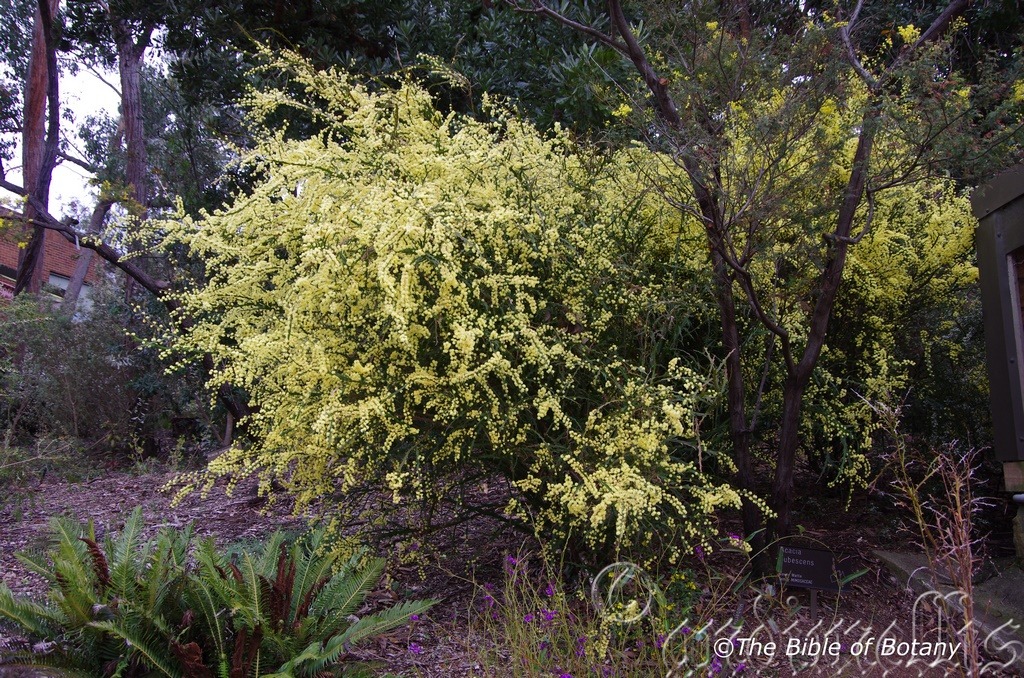
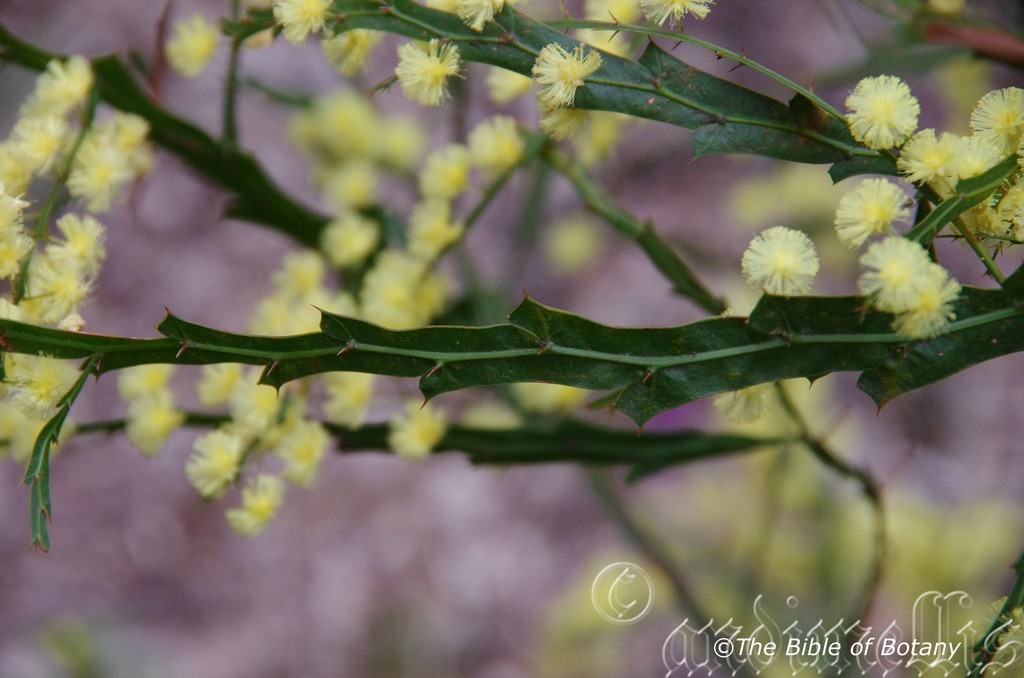


Acacia alata
Classification:
Class: Magnoliophyta
Order: Fabales
Family: Fabaceae
Subfamily: Mimosoideae
Genus: From ἀκακία, which is Ancient Greek or later Acanthium, which is Latin for to have a sharp point. It refers to the first species named by Dioscorides the Greek Botanist for the Egyptian plant Acacia arabica, which has very sharply pointed spines.
Specie: From Alatus, which is Latin for to have a wing or wings. It refers to stems, which have distinct longitudinal wings.
Sub specie: Acacia alata subsp. alata. From Alatus, which is Latin for to have a wing or wings. It refers to stems, which have distinct longitudinal wings.
Sub specie: Acacia alata subsp. biglandulosa. From Bi/Bis, which is Latin for two and Glans, which is Latin for a gland or glands. It refers to plants, which have two distinct types of glands.
Sub specie: Acacia alata subsp. genuine. From Genu?num, which is Latin for inate, natural, native or genuine or authentic. It often refers to plants, which are genuinely related to the species by showing all the normal characteristics of the species.
Sub specie: Acacia alata subsp. glabrata. From Glabrum, which is Latin for glabrous or smooth. It refers to structures or organs which have no hairs or scales.
Sub specie: Acacia alata subsp. platyptera. From Platy, which is Ancient Greek for flat and broad and Pteron, which is Ancient Greek for a wing. It refers to structures or organs, which have flat extension like a wings.
Sub specie: Acacia alata subsp. tetrantha. From Tetra, which is Ancient Greek for four and ?ntha/?nthos, which are Ancient Greek for the male reproductive organ on a flower or the flower. It refers to the individual flowers which all have four anthers.
Common Name: Winged Wattle
Distribution:
Acacia alata subsp. alata is found south from Three Springs to Bald Island in far south west Western Australia.
Acacia alata subsp. biglandulosa is found on the Geraldton Sand Plains with one disjunct population further north at Canarvon and one further south at Augusta in far south west Western Australia.
Acacia alata subsp. genuine is found south from Three Springs to Bald Island in far south west Western Australia.
Acacia alata subsp. glabrata is found south from Three Springs to Bald Island in far south west Western Australia.
Acacia alata subsp. platyptera is found in several disjunct populations south from Dandaragan to Boddington in far south west Western Australia.
Acacia alata subsp. tetrantha is found south from an area between Geraldton and Eneabba to near Bannister in far south west Western Australia.
https://avh.ala.org.au/occurrences/search?taxa=Acacia+alata+#tab_mapView
Habitat Aspect Climate:
Acacia alata prefer full sun to partial shade. It grows below medium size trees or low trees in low dry scrub lands in exposed positions. It grows on gentle slopes and elevated flats. The altitude ranges from 0 meters ASL to 380 meters ASL.
The temperatures range from -7 degrees in July to 38 degrees in January.
The rainfalls range from lows of 400mm to an average of 1200mm annually.
Soil Requirements:
Acacia alata prefer growing on skeletal coarse sands, fine sands or poorly developed sandy loams often with rocks or gravel. The soils are usually derived from decomposed sandstones, pegmatites or obsidians. The soils pH ranges from pH4.5 to pH6.5.It does not tolerate water logged soils. Non saline soils to moderately saline soils are tolerated.
Height & Spread:
Wild Plants: 1m to 2m by 1m to 3m.
Characteristics:
Acacia alata‘s bark is smooth, dull, grey and glabrous. The smaller terete, branches and branchlets are mid green to deep green, flexuose erect to almost divaricate and pendulous. The stipules are spinose to innocuous.
Acacia alata‘s phyllodes are unusual in that they are continuous with the branches, bifariously decurrent and forming opposite wings with each one extending to the next phyllode. The wings usually measure 2mm to 20mm in width. The phyllodes are thinly coriaceous, green, glabrous to pilose or hirsute-hirsutellous, commonly tuberculate to scabridulous on the margins and measure 5mm to 70mm in length. The bases are sessile while the apexes are truncate or sometimes acuminate, with spinose to innocuous. The concolourous laminas are mid-green to deep sea-green and glabrous. The mid vein is obvious on both laminas. There are 1 to 3 prominent glands normally on a triangular spur.
The inflorescences of Acacia alata are borne singularly or on short erect racemes from the leaf axils. There are 1 to 7 flower heads on the raceme and 4 to 15 individual flowers to a globose head. The slender, deep green peduncles/pedicels are glabrous or hirsutella to shortly pilose. The peduncles/pedicels measure 4mm to 12mm in length.
The flowers are 5 merous. The 5, pale yellow, oblong sepals are erect to divaricate and glabrous. The yellow, cream to white stamens are measure. Acacia alata‘s flowers appear from April through to early October depending on the sub specie.
Acacia alata stipitate fruits are normally curved coriaceous, flat pods. The pods margins are thickened and constricted between the seeds. The crustaceous are densely covered in brown hirtellous hairs and measure 20mm to 80mm in length by 5mm to 11mm in width. The pods raised over the seeds which lie transversly to oblique in the pods. The deep green pods turn deep grey to black when ripe.
The oblong to ellipsoidal seeds are black with a short, creamy white funicle. The seeds measure 2.5mm to 4.6mm in length by 1.4mm to 3mm in width. The flowers appear from June to September or at times as late as early October.
Confusing Subspecies varieties:
Acacia alata subsp. alata measure 0.5m to 1.5m in height. Stipules spinose or subspinose. Phyllodes on non-flowering region of stems 2mm to 10mm in width free portion of phyllodes 5mm to 20mm in length with a spinose apex. The peduncles are glabrous or hairy and have 6 to 10 creamy white to lemon yellow or at times golden-yellow flowers in a head.
It grows in a variety of habitats but often along creeks with laterite or loam and in sand over granite in coastal heath and low woodland.
Peduncles are hirsutellous to shortly pilose in the south while in the north they are normally glabrous. Pods measure 20mm to 40mm in length by 5mm to 6mm in width. The flowers appear from June to September or at times as late as early October.
Acacia alata subsp. biglandulosa measure 0.5m to 1.5m in height. Phyllodes on non-flowering region of stems 5mm to 20mm in width free portion of phyllodes 5mm to 20mm in length with a spinose apex. Glands 2 or 3, normally shortly stipitate, sometimes becoming spinose. Peduncles usually hirsutellous. There are 4 to 7 cream to white flowers with pink buds emerging from a head.
Grows in loam and sand on lateritic and sandstone hills and also in sometimes saline clay, usually in heath.
Peduncles are glabrous on specimens from near Port Gregory elsewhere they are hirsutellous. 1 to 3 glands. The flowers appear from June to September or at times as late as early October.
Acacia alata subsp. platyptera measure 0.5m to 1m in heightforming dense clumps. Stipules innocuous. Phyllodes measure 7mm to 20mm in width or at times 40mm in width near the base of stems, narrower on inflorescence-bearing region. Free portion of phyllodes straight to shallowly recurved and measure 10mm to 70mm in length with the longest ones being at the base. Apexes are acuminate to caudate acuminate, with innocuous or somewhat spinose and frequently recurved. There is a single gland.
The peduncles are hirsutellous with 12 to 15 golden obtuse buds in a head. The flowers appear from June to September or at times as late as early October.
Acacia alata subsp. tetrantha measure 0.3m to 0.6m in height and spread to1.5m in diameter. The stipules are innocuous. The phyllodes on non-flowering region of stems measure 3mm to 10mm in width and at times to 15mm in width. The free portion of phyllodes is straight to recurved and measure 10mm to 70mm in length with an acuminate, innocuous to scarcely spinose and straight or recurved to strongly uncinated apex. The single or at times 2 or 3 angled glands are often very prominent. Peduncles are glabrous or hirsutellous to shortly pilose. The 4 flowered, white; buds gradually or abruptly narrowed to apiculate or acute points. The pods are curved or more often substraight and measure 7mm to 11mm in width. The flowers appear from April to July. ; in the other varieties flowering commences in June.
Wildlife:
Acacia alata‘s wildlife is unknown to the author.
Cultivation:
It would make an good fire retardant tree shrub.
* Fire retardant plants act as radiant heat screens and absorb more heat from an approaching fire without burning.
* Fire retardant trees are able reduce wind speed near a house or out buildings.
* Fire retardant also trap embers and sparks carried by the wind.
* Fire retardant ground covers are able to catch burning embers without catching fire themselves, and also slow the travel of a fire through debris and litter on the ground.
Acacia alata is a very beautiful small shrub which should be more widely grown in semi-arid areas or coastal areas where the drainage is very good and the soils are courser type sandy clays. Garden subjects will grow differently accordingly to the sub specie grown.
In native gardens it can be used to add nitrogen to the soil. It is an excellent base plant to protect more delicate plants between as its course winged stems make it the center of attraction where contrasting foliages are used. Try prostrate red flowering Grevilleas for something strongly different on dry banks and large rockeries.
Garden beds would need to be open with plenty of space between plants to allow air flow as well as to give the branchlets a chance to spread and be appreciated for their unique beauty. Crowding this type of foliage with other plants will see them lose all the effectiveness of its form you require or want in the plant. Correct spacing will contrast the foliages better without one overpowering the other plants in the garden. For mass planting space the plants with at least 2 meters to 3 meters centres.
If you are using them amongst rocks or around the small desert garden, plant them sparingly to attain a barren scene, so not to make the area look cluttered or it detract from the other features like the rocks. 4 or 5 in an area of 500 square meters would be ample. 4 plants separately planted or plant 2 close together and separate the other 3 on the far side of the bed to give width and balance where you want it. The use of annuals helps to attract the viewer to the permanent plants foliage as they are the dominant foliage you want people to notice in the patch. In the case of Acacia alata you could substitute very small Grevillea specie or even Verticordia specie in lieu of the native annuals. Remember most annuals flower when Acacia alata is resting during the summer and most Grevillea specie will flower at the same time so a blend may be the way to go. Annuals mixed with Acacia alata help to give small gardens depth and make them look larger than what they really are. It works well with Grevillea masonii or other small Grevillea specie but contrasting foliages are the key to success with the flowers being a bonus.
Acacia alata can be lightly pruned to maintain a bushier plant and to induce it to grow as a spreading shrub.
Propagation:
Seeds: Acacia alata require treatment before sowing. Pre-treat by placing the seeds into a glass of hot water. Allow the water to cool and leave to soak for 8 to10 hours. Seeds that have not swollen repeat the exercise.
Sow into a seed raising mix. When the seedlings are 25mm to 50mm tall, prick them out and plant them into 50mm native tubes using a seed raising mix.
Once the seedlings reach 200mm to 250mm in height plant them out into their permanent position. For mass plantings plant at 6 meter to 8 meter centers for the trees and 3 meter to 4 meter centers for the prostrate forms.
Fertilize using Seaweed, fish emulsion or organic chicken pellets soaked in water on an alternate basis. Fertilize every two months until the plants are established then annually either in early September to March to maintain health, vitality and better flowering.
Further Comments from Readers:
All information is included in good faith and has been thoroughly researched prior to printing. The website or the author does not warrant or guarantee the accuracy of any information on these pages, nor does the website or the author accept any responsibility for any loss arising from the use of the information found within. The views and opinions are strictly those of the author or those members who chose to actively participate in the contents herein.
Hi reader, it seems you use The Bible of Botany a lot. That’s great as we have great pleasure in bringing it to you! It’s a little awkward for us to ask, but our first aim is to purchase land approximately 1,600 hectares to link several parcels of N.P. into one at The Pinnacles NSW Australia, but we need your help. We’re not salespeople. We’re amateur botanists who have dedicated over 30 years to saving the environment in a practical way. We depend on donations to reach our goal. If you donate just $5, the price of your coffee this Sunday, We can help to keep the planet alive in a real way and continue to bring you regular updates and features on Australian plants all in one Botanical Bible. Any support is greatly appreciated. Thank you.
In the spirit of reconciliation we acknowledge the Bundjalung, Gumbaynggirr and Yaegl and all aboriginal nations throughout Australia and their connections to land, sea and community. We pay our respect to their Elders past, present and future for the pleasures we have gained.

Rosser Gardens Qld.

Rosser Gardens Qld.
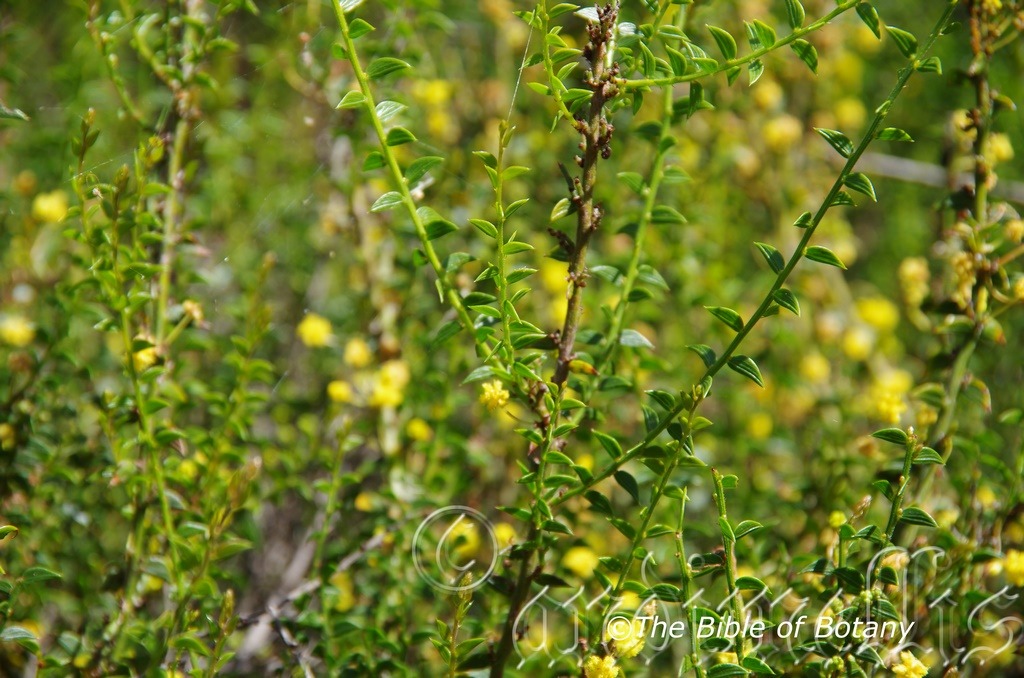
Rosser Gardens Qld.

Rosser Gardens Qld.

Rosser Gardens Qld.

Rosser Gardens Qld.

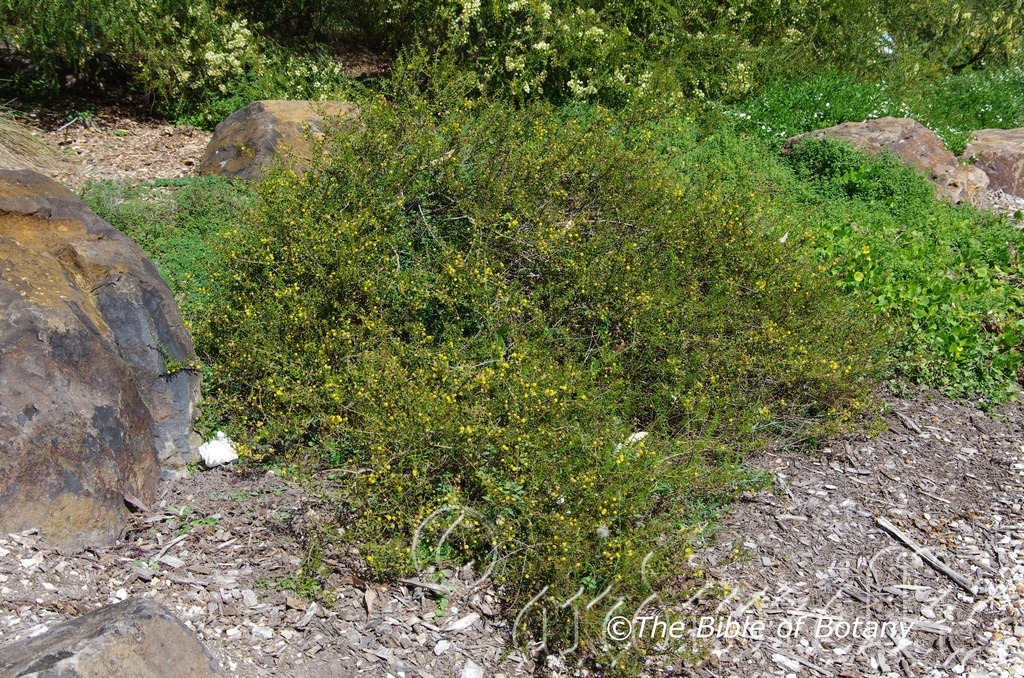

Acacia amblygona
Classification:
Class: Magnoliophyta
Order: Fabales
Family: Fabaceae
Subfamily: Mimosoideae
Genus: From ἀκακία, which is Ancient Greek or later Acanthium, which is Latin for to have a sharp point. It refers to the first species named by Dioscorides the Greek Botanist for the Egyptian plant Acacia arabica, which has very sharply pointed spines.
Specie: From Amblygon, which is Ancient Greek for blunt or obtuse. It refers to the angles on the fruits, which are obtuse.
Sub specie:
Common Name:Fan Wattle.
Distribution:
Acacia amblygona is found on and east of the Western Slopes, on the Great Dividing Range to the coast. It is found from Clermont and Alpha in central Queensland south to the Sydney Basin and the Blue Mountains on the coast and Gundagai in south eastern New South Wales.
https://avh.ala.org.au/occurrences/search?taxa=Acacia+amblygona+#tab_mapView
Habitat Aspect Climate:
Acacia amblygona prefer full sun to light dappled shade. It grows below medium size trees or dry scrub lands in exposed positions. It grows in dry sclerophyll forest, woodland and dry heaths. The altitude ranges from 3 meters ASL to 1250 meters ASL
The temperatures range from minus 3 degrees in July to 40 degrees in January.
The rainfalls range from lows of 450mm to an average of 2000mm annually.
Soil Requirements:
Acacia amblygona prefer growing in skeletal to deep stony or light sandy soils or fatty sands, often in dry creek beds often with copious quantities of forest litter. The soils are usually derived from decomposed sandstones. The soil?s pH ranges from 4.5pH to 6.5pH. It does not tolerate water logged soils. None saline soils to moderately saline soils are tolerated.
Height & Spread:
Wild Plants: 0.5m to 1.5m by 0.5m to 2m.
Characteristics:
Acacia amblygona?s bark is dull grey with fine longitudinal striations. The smaller branches and branchlets are angled while the striated branchlets are grey-brown, grey-green, glabrous to resinous and dull. The very young shoots are terete, glabrous to sparsely to moderately cover in grey, hirtellous hairs or at times are glabrous.
Acacia amblygona?s ovate to lanceolate or narrow to broad elliptical phyllodes are 3 or 4 ranked. There is a small gland near the base. The phyllodes measure 8mm to 14mm in length by 2mm to 5mm in width. The asymmetrical bases are rounded while the apexes are narrow acute with a short pungent spine. The concolourous laminas are deep olive-green to deep green and flat. The margins are entire. The 1 prominent and 2 or 4 less prominent lateral veins are sparingly branched.
The inflorescences of Acacia amblygona are born singularly from the leaf axils. There are 12 to 18 individual flowers on the globular head. The slender, olive-yellow peduncles are glabrous to moderately cover in grey, hirtellous hairs. The peduncles measure 6mm to 12mm in length while the pedicels measure 0.5mm to 1mm in length.
The individual flowers are 5 merous. The mid green calyxes and 5 calyx lobes are obtuse, glabrous and turn reddish-brown as the stamens expand. The petals are bright yellow and orbicular while the stamens are bright yellow. The individual flowers including the stamens measure 6mm to 9mm in length and 4mm to 6.5mm in diameter overall. Acacia amblygona?s sweet scented flowers appear from July through to late October.
Acacia amblygona coriaceous pods are long curved to twist 1 to 2 times. The pods are prominently raised over the seeds and constricted between the seeds and have thickened margins. The glabrous pods measure 30mm to 70mm in length by 3mm to 5mm in width. The pale blue-green pods turn reddish-brown externally and cream internally when ripe. The oblong to narrowly ovoidal seeds are black with an off white funicle which expands on one end of the seed. The seeds measure 3mm to 3.5mm in length by 1.6mm to 2mm in diameter.
Wildlife:
The wildlife is unknown to the author.
Cultivation:
It would make an good fire retardant shrub.
* Fire retardant plants act as radiant heat screens and absorb more heat from an approaching fire without burning.
* Fire retardant trees are able reduce wind speed near a house or out buildings.
* Fire retardant also trap embers and sparks carried by the wind.
* Fire retardant ground covers are able to catch burning embers without catching fire themselves, and also slow the travel of a fire through debris and litter on the ground.
Acacia amblygona is an interesting small to medium shrub for the native heath garden or rockery which should be more widely grown in semi-arid areas or coastal areas where the drainage is good and where the soils are sandy to light sandy clays. Garden subjects will grow into dense shrubs from 1 meters to 1.5 meters in height by 1 meters to 2 meters in diameter.
In native gardens it can be used to add nitrogen to the soil. It is an excellent base plant to protect more delicate plants giving light shade and plenty of flowers throughout the winter months. The foliage is particularly attractive and assists in deterring unwanted pets to the garden if used on the outer perimeter. Try prostrate red flowering Grevilleas, bright coloured annuals or a mixed bed with a mosaic of different coloured foliages.
Garden beds would need to be open with plenty of space between plants to allow good air flow and plenty of light to reach the lower level plants. Crowding this type of foliage with other plants will see them lose all the effectiveness and will quickly become boring and bare as the plants will drop their lower leaves and branchlets. Correct spacing will contrast the foliages better without one overpowering the other plants in the garden. For mass planting space the plants with at least 2 meters to 4 meters centers if you are considering it with smaller ground covers and annuals between.
If you are using them amongst rocks or around the small desert garden, plant them sparingly to attain a more barren scene, so not to make the area look cluttered or detract from the other features like the rocks. 4 or 5 in an area of 100 square meters would be ample. 4 plants separately planted or plant 2 close together and separate the other 2 or 3 on the far side of the bed to give width and depth where you want it. The use of annuals helps to attract the viewer to the permanent plants foliage as they are the dominant foliage and shape you want people to notice in the patch. In the case of Acacia amblygona you could substitute very small Grevilleas or even Verticordia sp. in lieu of the native annuals. Remember most annuals flower when Acacia amblygona is resting during the summer and most Grevilleas will flower at the same time so a blend may be the way to go. Annuals mixed with Acacia amblygona help to give small gardens depth and make them look larger than what they really are due to the small diameter of mature plants. Plants will generally live for 5 to 10 years so should be replanted every 5 or 6 years.
Propagation:
Seeds: Acacia amblygona require treatment before sowing. Pre-treat by placing the seeds into a glass of hot water. Allow the water to cool and leave to soak for 8 to10 hours. Seeds that have not swollen repeat the exercise.
Another method would be to use stratification by placing the seeds in a dry paper bag and putting them into the vegetable crisper for 5 or 6 weeks prior to sowing.
Sow into a seed raising mix and cover with 5mm to 8mm of the mix. Place the trays in a warm sunny position or semi shaded position with 30mm shade cloth and keep them moist. When the seedlings are 25mm to 50mm tall, prick them out and plant them into 50mm native tubes using a seed raising mix.
Once the seedlings reach 200mm to 250mm in height plant them out into their permanent position. For mass plantings plant them at 2 meter to 4 meter centers.
Fertilize using Seaweed, fish emulsion or organic chicken pellets soaked in water on an alternate basis. Fertilize every two months until the plants are established then annually either in early October or March to maintain health, vitality and better flowering.
Further Comments from Readers:
All information is included in good faith and has been thoroughly researched prior to printing. The website or the author does not warrant or guarantee the accuracy of any information on these pages, nor does the website or the author accept any responsibility for any loss arising from the use of the information found within. The views and opinions are strictly those of the author or those members who chose to actively participate in the contents herein.
Hi reader, it seems you use The Bible of Botany a lot. That’s great as we have great pleasure in bringing it to you! It’s a little awkward for us to ask, but our first aim is to purchase land approximately 1,600 hectares to link several parcels of N.P. into one at The Pinnacles NSW Australia, but we need your help. We’re not salespeople. We’re amateur botanists who have dedicated over 30 years to saving the environment in a practical way. We depend on donations to reach our goal. If you donate just $5, the price of your coffee this Sunday, We can help to keep the planet alive in a real way and continue to bring you regular updates and features on Australian plants all in one Botanical Bible. Any support is greatly appreciated. Thank you.
In the spirit of reconciliation we acknowledge the Bundjalung, Gumbaynggirr and Yaegl and all aboriginal nations throughout Australia and their connections to land, sea and community. We pay our respect to their Elders past, present and future for the pleasures we have gained.
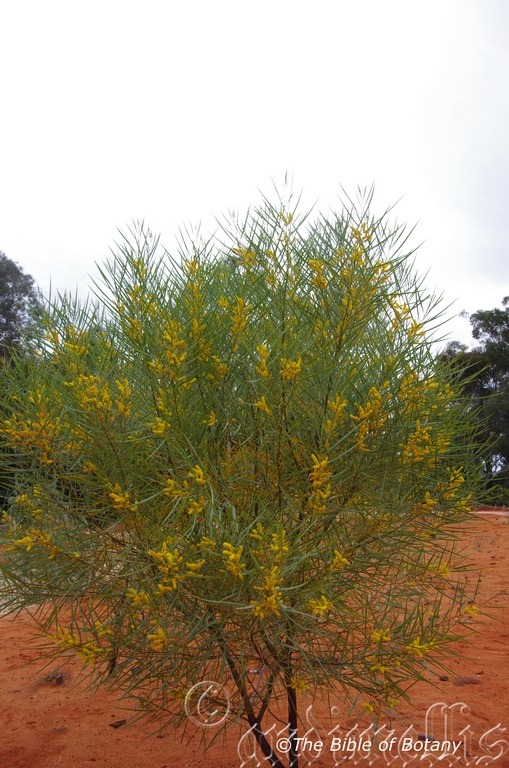
National Botanic Gardens ACT.

National Botanic Gardens ACT.

National Botanic Gardens ACT.
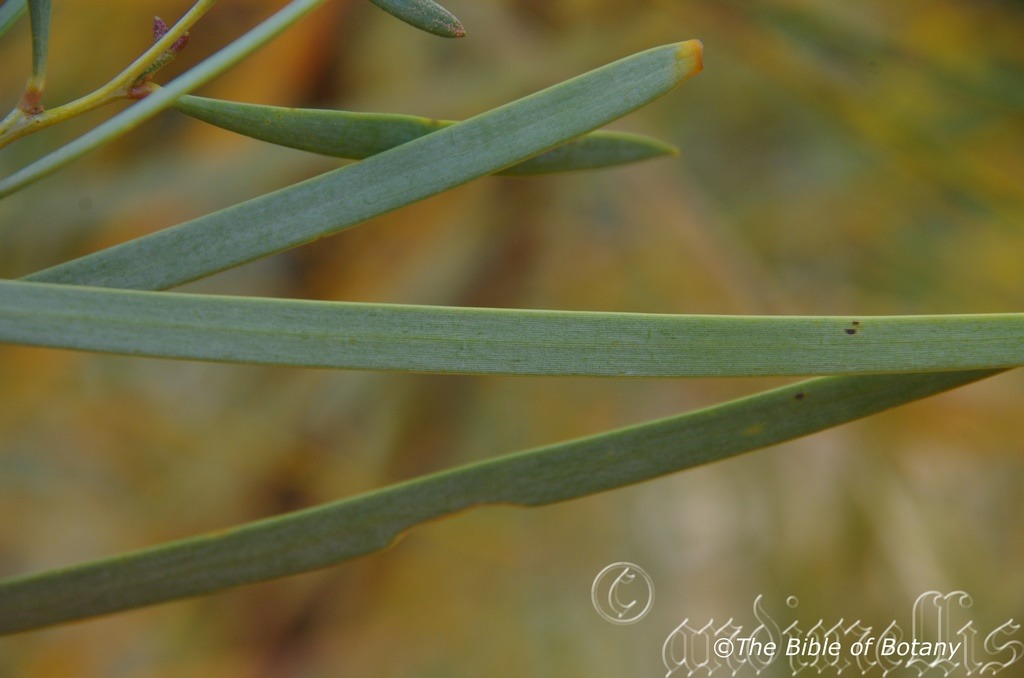
National Botanic Gardens ACT.

National Botanic Gardens ACT.

National Botanic Gardens ACT.
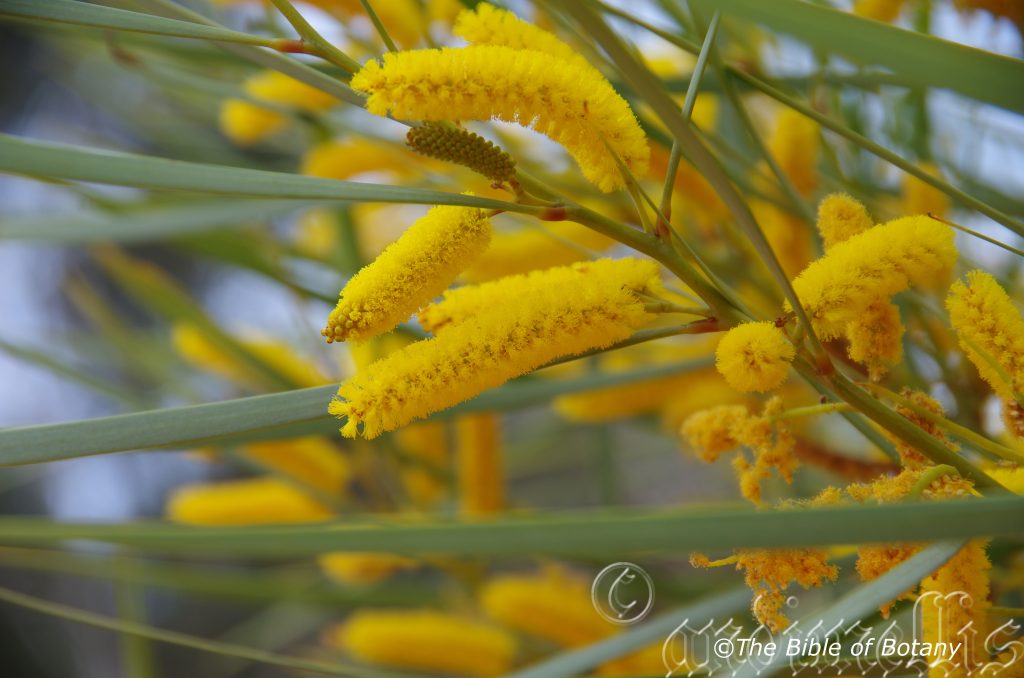
National Botanic Gardens ACT.
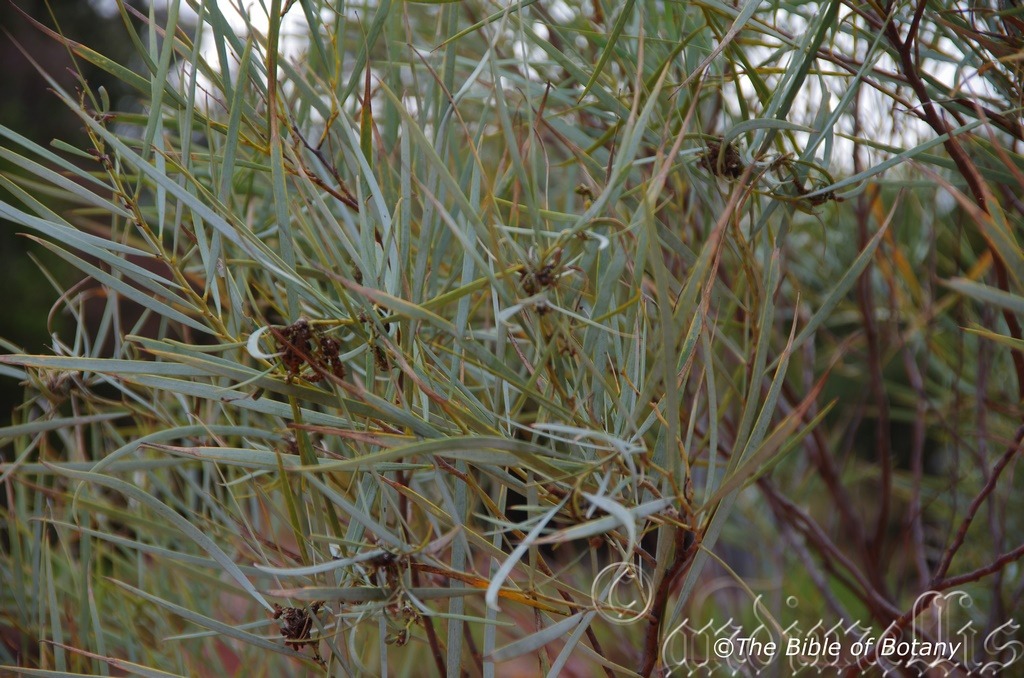
National Botanic Gardens ACT.

Acacia ammobia
Classification:
Class: Magnoliophyta
Order: Fabales
Family: Fabaceae
Subfamily: Mimosoideae
Genus: From ἀκακία, which is Ancient Greek or later Acanthium, which is Latin for to have a sharp point. It refers to the first species named by Dioscorides the Greek Botanist for the Egyptian plant Acacia arabica, which has very sharply pointed spines.
Specie: From Ammos, which is Ancient Greek for sand and Bio, which is Ancient Greek for life. It refers to plants, which prefer sandy environments.
Sub specie:
Common Name:
Distribution:
Acacia ammobia is a rare plant found in an area surrounded by Hermannsburg, Petermann Road, Irving Creek and Butler Dome in the central southern Northern Territory and across the border into South Australia near the Indulkana Settlement.
https://avh.ala.org.au/occurrences/search?taxa=Acacia+ammobia+#tab_mapView
Habitat Aspect Climate:
Acacia ammobia prefer full sun to light dappled shade. It grows below medium size trees or dry scrub lands in exposed positions. The altitude ranges from 3 meters ASL to 1250 meters ASL
The temperatures range from minus 3 degrees in July to 40 degrees in January.
The rainfalls range from lows of 450mm to an average of 2000mm annually.
Soil Requirements:
Acacia ammobia prefer growing in red skeletal to deep stony or light sands. The soils are usually derived from decomposed sandstones or deposited sandstone silts. The soil?s pH ranges from 4.5pH to 6pH. It does not tolerate water logged soils. None saline soils to moderately saline soils are tolerated.
Height & Spread:
Wild Plants: 1.5m to 7m by 1.5m to 3m.
Characteristics:
Acacia ammobia?s bark is dull deep grey to black with fine longitudinal striations and splits or fibrous. The smaller pale yellow or khaki branches and branchlets are angular or flattened turning terete as they mature. The plants are glabrous throughout.
Acacia ammobia?s linear, flat phyllodes measure 110mm to 270mm in length by 4mm to 10mm in width. The symmetrical bases are long tapering while the apexes are long, narrow tapering which are drawn out into an elongate, slender, blunt spine. The coriaceous, concolourous laminas are dull grey-green to dull blue-green flat. The margins are entire. The mid vein is sub prominent while there are 8 to 11 minor non anastomosing parallel nerves per mm. A single gland is quite inconspicuous and appears 1mm to 3mm above pulvinus.
The inflorescence is a single or paired spike on the axillary shoots which are sometimes leafy. The mid yellow, densely flowered spikes measure 20mm to 50mm in length. The 5 merous individual flower?s calyxes measure 1mm to 1.25mm in length. The basal section is moderately covered in white villous hairs while the lobes are covered in orange-brown scurf. The glabrous corolla measures 1.3mm to 1.6mm length while the ovary is densely covered in white villous hairs.
Acacia ammobia coriaceous pods are long straight and flat. The pods are strongly raised over the seeds and strongly constricted between the seeds. The glabrous pods measure 55mm to 110mm in length by 20mm to 30mm in width. The mid green pods turn deep brown and coriaceous when ripe.
The narrowly oblong to broadly elliptic, dorsoventrally flattened seeds are deep brown with a small areole, surrounded by pale ?U? shaped pleurogram. The folded funicle thickens into a cupular aril. The deep brown seeds measure 3mm to 4mm in length by 1.6mm to 2.2mm in diameter.
Wildlife:
Acacia ammobia’s wildlife is unknown to the author.
Cultivation:
Acacia ammobia is an interesting small tree or medium shrub for the native desert garden or rockery which should be more widely grown in semi-arid areas or coastal areas where the drainage is good and where the soils are sandy to light gravelly sands. Garden subjects will usually grow into dense shrubs from 2 meters to 3 meters in height by 3 meters to 4 meters in diameter or taller and narrower as a small tree.
In native gardens they can be used to add nitrogen to the soil. It is an excellent base plant to protect more delicate plants giving light shade and plenty of flowers throughout the winter months. The foliage is particularly attractive and assists in deterring unwanted pets to the garden if used on the outer perimeter. Try prostrate red flowering Grevillea specie, bright coloured annuals or a mixed bed with a mosaic of different coloured foliages.
Garden beds would need to be very open with plenty of air space between plants to allow good air flow and plenty of light to reach the lower level plants. Crowding this type of foliage with other plants will see them lose all the effectiveness and will quickly become boring and bare as the plants will drop their lower leaves and branchlets. Correct spacing will contrast the foliages better without one overpowering the other plants in the garden. For mass planting space the plants with at least 4 meters to 5 meters centers if you are considering it with smaller ground covers and annuals between.
If you are using them amongst rocks or around the small desert garden, plant them sparingly to attain a more barren scene, so not to make the area look cluttered or detract from the other features like the rocks. 4 or 5 in an area of 200 square meters would be ample. 4 plants separately planted or plant 2 close together and separate the other 2 or 3 on the far side of the bed to give width and depth where you want it. The use of annuals helps to attract the viewer to the permanent plants foliage as they are the dominant foliage and shape you want people to notice in the patch. In the case of Acacia ammobia you could substitute very small Grevillea specie or even Verticordia specie in lieu of the native annuals. Remember most annuals flower when Acacia amblygona is resting during the summer and most Grevilleas will flower at the same time so a blend may be the way to go. Annuals mixed with Acacia ammobia help to give small gardens depth and make them look larger than what they really are due to the small diameter of mature plants. Plants will generally live for 5 to 10 years so should be replanted every 5 or 6 years.
Propagation:
Seeds: Acacia ammobia require treatment before sowing. Pre-treat by placing the seeds into a glass of hot water. Allow the water to cool and leave to soak for 8 to10 hours. Seeds that have not swollen repeat the exercise.
Another method would be to use stratification by placing the seeds in a dry paper bag and putting them into the vegetable crisper for 5 or 6 weeks prior to sowing.
Sow into a seed raising mix and cover with 5mm to 8mm of the mix. Place the trays in a warm sunny position or semi shaded position with 30mm shade cloth and keep them moist. When the seedlings are 25mm to 50mm tall, prick them out and plant them into 50mm native tubes using a seed raising mix.
Once the seedlings reach 200mm to 250mm in height plant them out into their permanent position. For mass plantings plant them at 2 meter to 4 meter centers.
Fertilize using Seaweed, fish emulsion or organic chicken pellets soaked in water on an alternate basis. Fertilize every two months until the plants are established then annually either in early October or March to maintain health, vitality and better flowering.
Further Comments from Readers:
All information is included in good faith and has been thoroughly researched prior to printing. The website or the author does not warrant or guarantee the accuracy of any information on these pages, nor does the website or the author accept any responsibility for any loss arising from the use of the information found within. The views and opinions are strictly those of the author or those members who chose to actively participate in the contents herein.
Hi reader, it seems you use The Bible of Botany a lot. That’s great as we have great pleasure in bringing it to you! It’s a little awkward for us to ask, but our first aim is to purchase land approximately 1,600 hectares to link several parcels of N.P. into one at The Pinnacles NSW Australia, but we need your help. We’re not salespeople. We’re amateur botanists who have dedicated over 30 years to saving the environment in a practical way. We depend on donations to reach our goal. If you donate just $5, the price of your coffee this Sunday, We can help to keep the planet alive in a real way and continue to bring you regular updates and features on Australian plants all in one Botanical Bible. Any support is greatly appreciated. Thank you.
In the spirit of reconciliation we acknowledge the Bundjalung, Gumbaynggirr and Yaegl and all aboriginal nations throughout Australia and their connections to land, sea and community. We pay our respect to their Elders past, present and future for the pleasures we have gained.


Magnetic Island Qld.

Magnetic Island Qld.

Magnetic Island Qld.

Magnetic Island Qld.
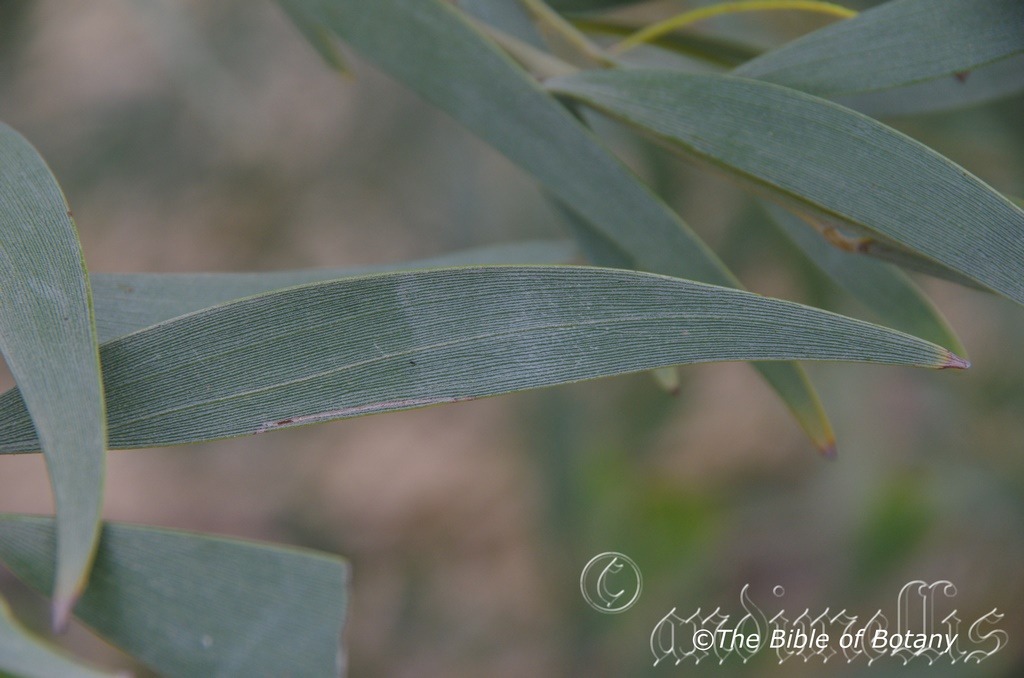
Magnetic Island Qld.
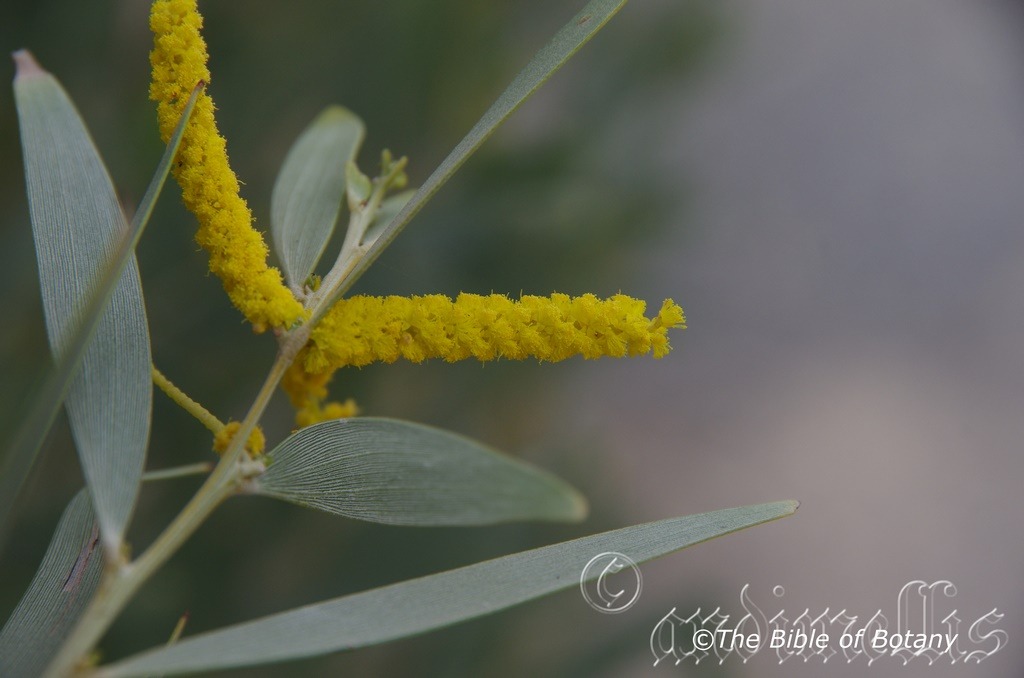
Magnetic Island Qld.
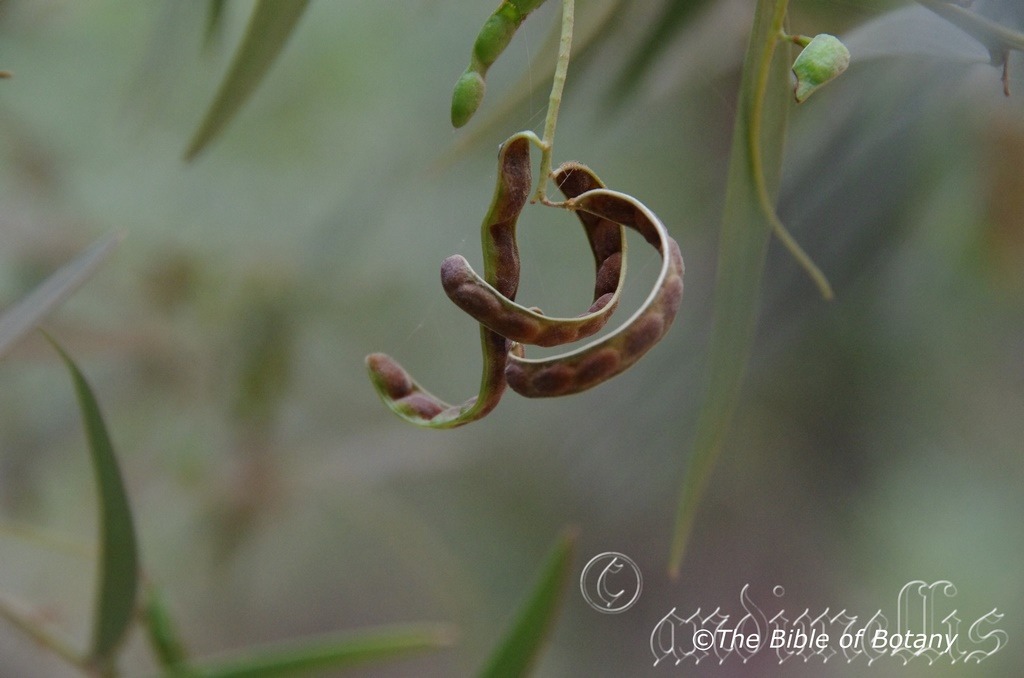
Magnetic Island Qld.
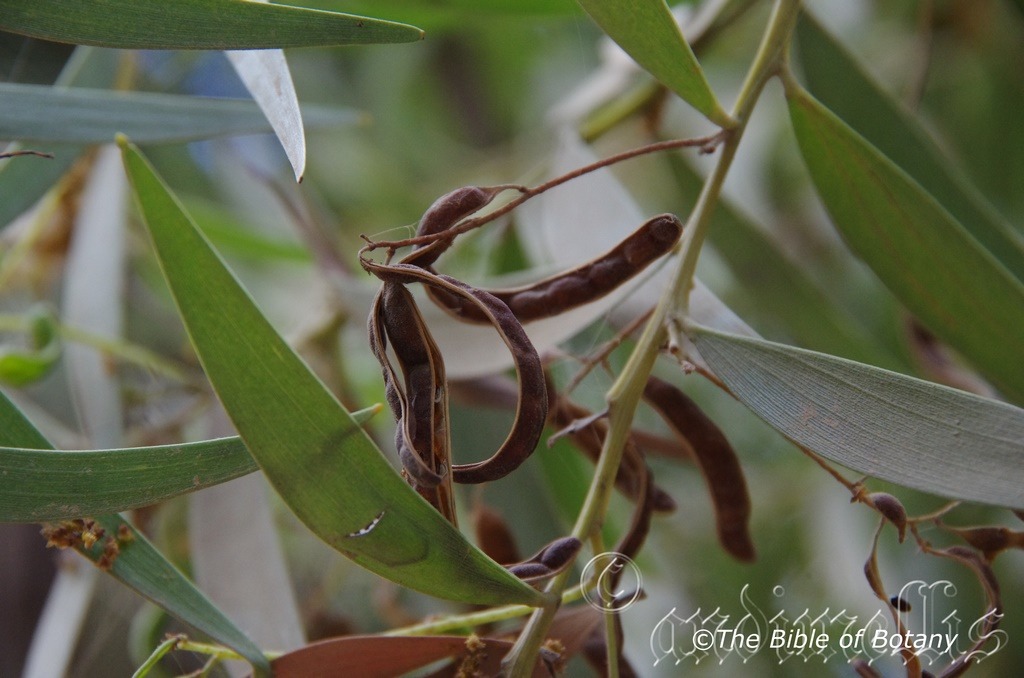
Magnetic Island Qld.

Acacia aulacocarpa
Class: Magnoliophyta
Classification:
Order: Fabales
Family: Fabaceae
Subfamily: Mimosoideae
Genus: From ἀκακία, which is Ancient Greek or later Acanthium, which is Latin for to have a sharp point. It refers to the first species named by Dioscorides the Greek Botanist for the Egyptian plant Acacia arabica, which has very sharply pointed spines.
Specie: From Aula, which is Ancient Greek for a furrow and Karpos, which is Ancient Greek for a fruit. It refers to fruits, which have deep, longitudinal furrows.
Sub specie:
Common Name: Lancewood or Salwood or Golden Salwood.
Distribution:
Acacia aulacocarpa is a wide spread from the Mitchell Plateau in far north eastern Western Australia along the top end of the Northern Territory through to Cape York peninsular and south east and along the Great Dividing Range in Queensland and to Newry State Forest near Urunga, in far north eastern New South Wales.
It is also found on the off shore Islands and southern New Guinee
https://avh.ala.org.au/occurrences/search?taxa=Acacia+aulacocarpa+#tab_mapView
Habitat Aspect Climate:
Acacia aulacocarpa prefer full sun. It grows below medium size trees or low trees in low, dry scrub lands in exposed positions. It grows found on gentle slopes and elevated flats. The altitude ranges from 30 meters ASL to 280 meters ASL
The temperatures range from minus 3 degrees in July to 44 degrees in January.
The rainfalls range from lows of 750mm to an average of 3500mm annually.
Soil Requirements:
Acacia aulacocarpa prefer growing on sandy loams, medium to heavy soils with copious quantities of forest litter. The soils are derived from decomposed sandstones. The structures of the soils are light sandy clays through to medium clays. The soil?s pH ranges from 4.5pH to 6.5pH. It does not tolerate water logged soils. None saline soils to moderately saline soils are tolerated.
Height & Spread:
Wild Plants: 2.5m to 6m by 2m to 4m.
Characteristics:
Acacia aulacocarpa?s bark is dull pale grey and shallow ramose. The trunk is usually singular with few branches on the upper half. The smaller branches and branchlets are erect while the terete branchlets are pale grey-brown, glabrous to resinous and dull. The very young shoots are terete, glabrous to sparsely covered in fine resinous lumps.
Acacia aulacocarpa?s alternate, elliptical to narrow elliptical phyllodes are falcate to sub falcate. There is an inconspicuous gland positioned adjacent to the pulvinus. The pulvinus measures 4mm to 8mm in length. The phyllodes measure 50mm to 120mm in length by 7mm to 35mm in width. The base is cuneate on one side of the pulvinus while the apexes are acute. The concolourous laminas are grey-green to deep grey-green and flat. The margins are entire. The 3 prominent and 3 or 4 less prominent longitudinal veins are non-anastomosing however the lower veins join together near the base.
The inflorescences of Acacia aulacocarpa are born singularly or up to 4 on long, dense, erect racemes from the leaf axils. There are 80 to 180 individual flowers on the raceme. The slender, olive-yellow peduncles, rachises and pedicels are scurfy. The peduncles measure 5mm to 8mm in length while the rachises measure 15mm to 40mm in length and the pedicels measure 0.5mm to 0.7mm in length.
The individual flowers are 5 merous. The pale olive-yellow calyxes and 5 calyx lobes are erect and glabrous. The laminae and petals are bright yellow and orbicular while the stamens are bright yellow. The individual flowers including the stamens measure 2mm to 3.5mm in length and 9mm to 11mm in diameter overall. Acacia aulacocarpa?s sweet scented flowers appear from January through to late June.
Acacia aulacocarpa fruits are long straight to twisted coriaceous to woody pods. The pods are flat and are not restricted around the seeds and have thickened margins. The glabrous to resinous pods measure 25mm to 80mm in length by 8mm to 15mm in width. The pale blue-green pods turn pale grey to deep grey when ripe. The oblong to narrowly ovoidal seeds are black with a short, pale grey to off white funicle which coils beneath the seed at one end. The seeds measure 3.5mm to 5mm in length by 2mm to 3mm in diameter. The folded funicle measures 2mm to 6mm in length.
Wildlife:
The leaves on Acacia aulacocarpa are the host food for the Fiery Jewel butterfly (Hypochrysops ignita var. ignita) and the Imperial Hairstreak butterfly (Jalmenus evagoras).
Cultivation:
Acacia aulacocarpa is an interesting small tree which should be more widely grown in semi-arid areas or coastal areas where the drainage is good and where the soils are medium to heavy clays. Garden subjects will grow into small trees from 3 meters to 5 meters in height by 2 meters to 2.5 meters in diameter with a light canopy when grown in the open.
In native gardens it can be used to add nitrogen to the soil and to help break up heavy clays making them more friable. They are an excellent base plant to protect more delicate plants giving light shade and plenty of flowers throughout the winter months. The foliage is not particularly attractive but with their light canopy allows the gardener to create a lower master piece of artistry below. Try prostrate red flowering Grevilleas, bright coloured annuals or a mixed bed with a mosaic of different coloured foliages.
Garden beds would need to be open with plenty of space between plants to allow good air flow and plenty of light to reach the lower level plants. Crowding this type of foliage with other plants will see them lose all the effectiveness and will quickly become boring and bare as the plants commence dropping their lower leaves and branchlets. These make excellent mulch. Correct spacing will contrast the foliages better without one overpowering the other plants in the garden. For mass planting space the plants with at least 7 meters to 8 meters centers if you are considering it.
If you are using them amongst rocks or around the small desert garden, plant them sparingly to attain a barren scene, so not to make the area look cluttered or detract from the other features like the rocks. 4 or 5 in an area of 500 square meters would be ample. 4 plants separately planted or plant 2 close together and separate the other 2 or 3 on the far side of the bed to give width and depth where you want it. The use of annuals helps to attract the viewer to the permanent plants foliage as it is the dominant foliage you want people to notice in the patch. In the case of Acacia aulacocarpa you could substitute very small Grevilleas or even Verticordia sp. in lieu of the native annuals. Remember most annuals flower when Acacia aulacocarpa is resting during the summer and most Grevillea sp. will flower at the same time so a blend may be the way to go. Annuals mixed with Acacia aulacocarpa help to give small gardens depth and make them look larger than what they really are due to the small diameter of mature plants. It works well with Grevillea masonii other Grevilleas of similar size but contrasting foliages are the key to success with the flowers being a bonus. Plants will generally live for 4 or 5 years.
Propagation:
Seeds: Acacia aulacocarpa require treatment before sowing. Pre-treat by placing the seeds into a glass of hot water. Allow the water to cool and leave to soak for 8 to10 hours. Seeds that have not swollen repeat the exercise.
Sow into a seed raising mix. When the seedlings are 25mm to 50mm tall, prick them out and plant them into 50mm native tubes using a seed raising mix.
Once the seedlings reach 200 to 250mm in height plant them out into their permanent position. For mass plantings plant at 6 meter to 8 meter centers for the trees and 3 meter to 4 meter centers for the prostrate forms.
Fertilize using Seaweed, fish emulsion or organic chicken pellets soaked in water on an alternate basis. Fertilize every two months until the plants are established then annually either in early September to March to maintain health, vitality and better flowering.
Further Comments from Readers:
All information is included in good faith and has been thoroughly researched prior to printing. The website or the author does not warrant or guarantee the accuracy of any information on these pages, nor does the website or the author accept any responsibility for any loss arising from the use of the information found within. The views and opinions are strictly those of the author or those members who chose to actively participate in the contents herein.
Hi reader, it seems you use The Bible of Botany a lot. That’s great as we have great pleasure in bringing it to you! It’s a little awkward for us to ask, but our first aim is to purchase land approximately 1,600 hectares to link several parcels of N.P. into one at The Pinnacles NSW Australia, but we need your help. We’re not salespeople. We’re amateur botanists who have dedicated over 30 years to saving the environment in a practical way. We depend on donations to reach our goal. If you donate just $5, the price of your coffee this Sunday, We can help to keep the planet alive in a real way and continue to bring you regular updates and features on Australian plants all in one Botanical Bible. Any support is greatly appreciated. Thank you.
In the spirit of reconciliation we acknowledge the Bundjalung, Gumbaynggirr and Yaegl and all aboriginal nations throughout Australia and their connections to land, sea and community. We pay our respect to their Elders past, present and future for the pleasures we have gained.

Sherwood Nature Reserve NSW.
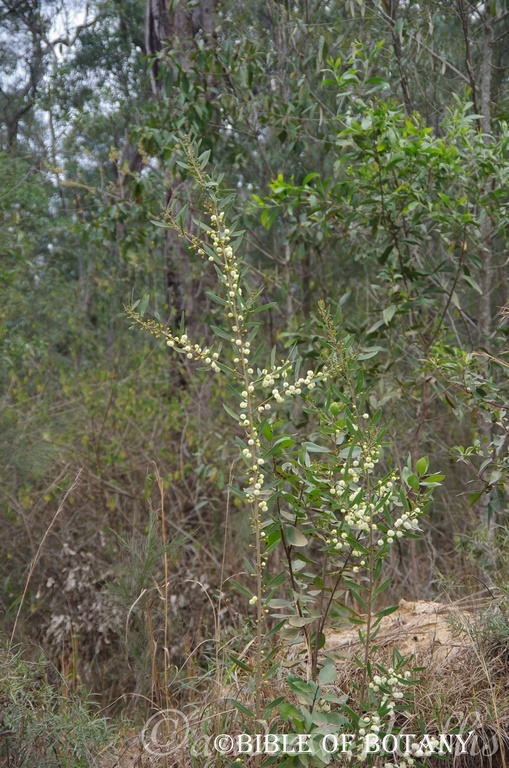
Grafton North NSW.
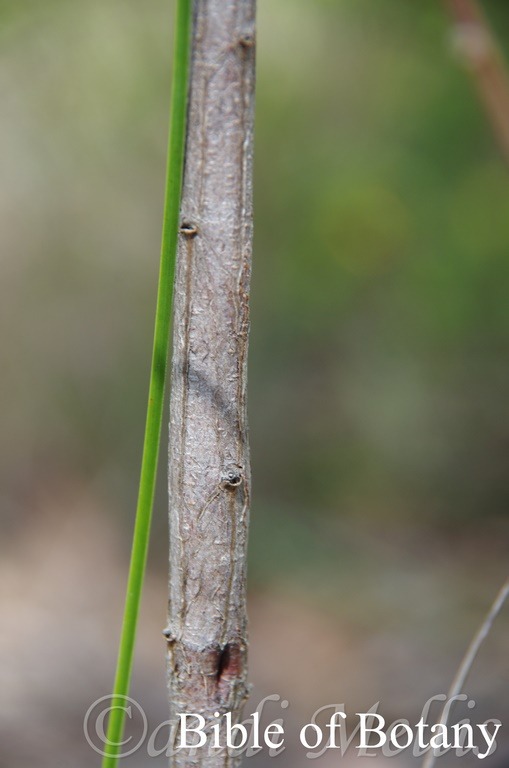
Sherwood Nature Reserve NSW.

Grafton North NSW.

The Pinnacles NSW.
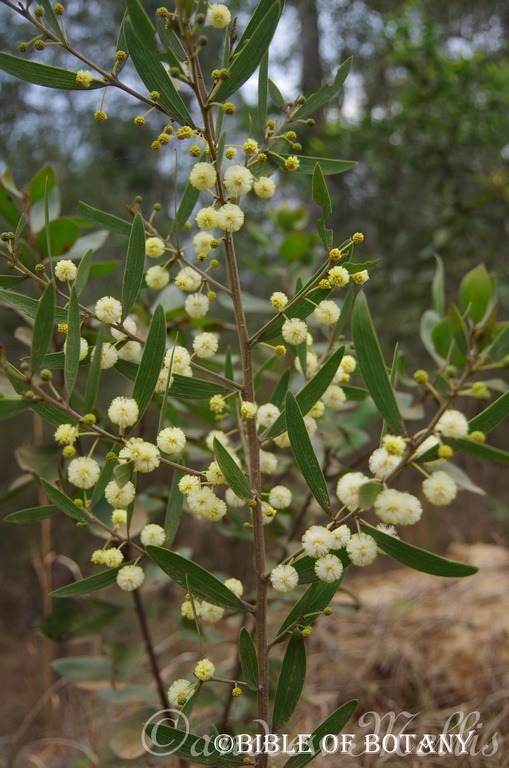
Grafton North NSW.
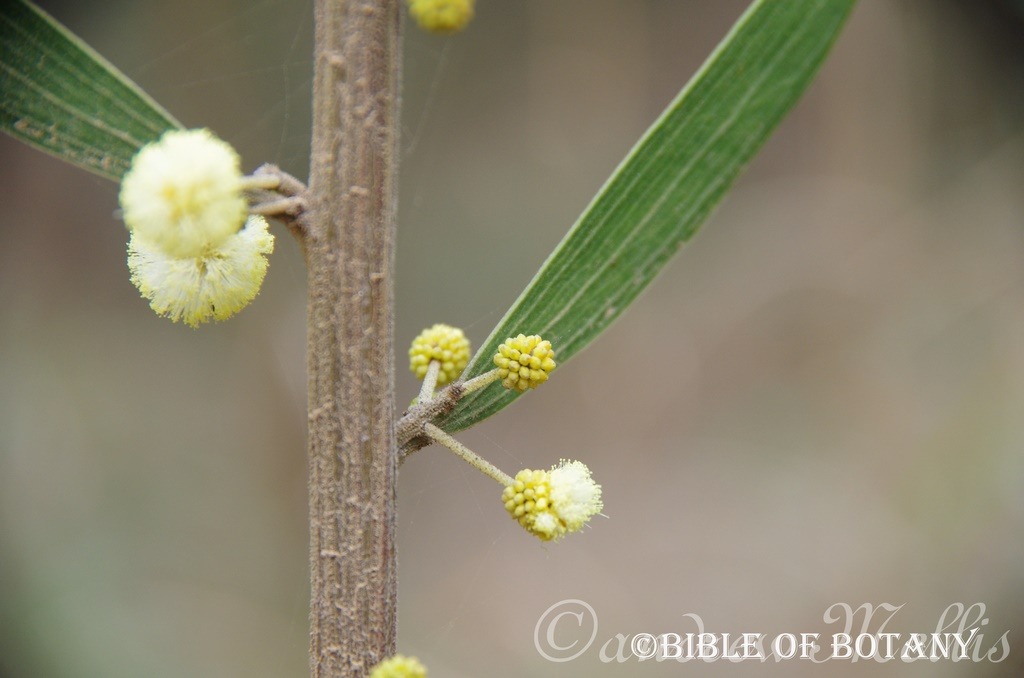
Grafton North NSW.
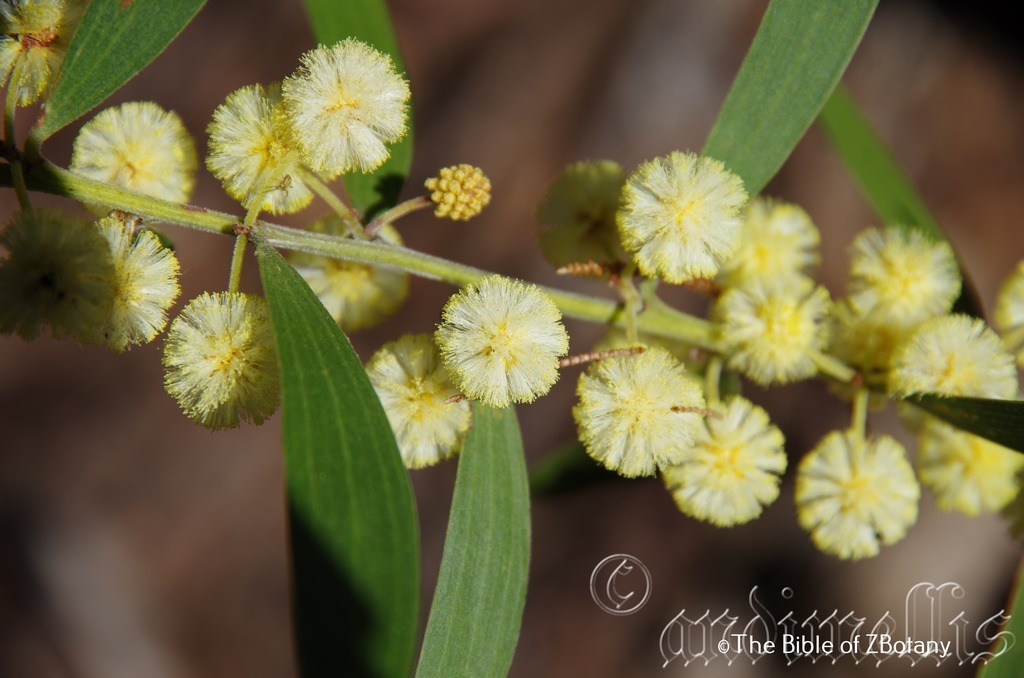
The Pinnacles NSW.

Grafton North NSW.
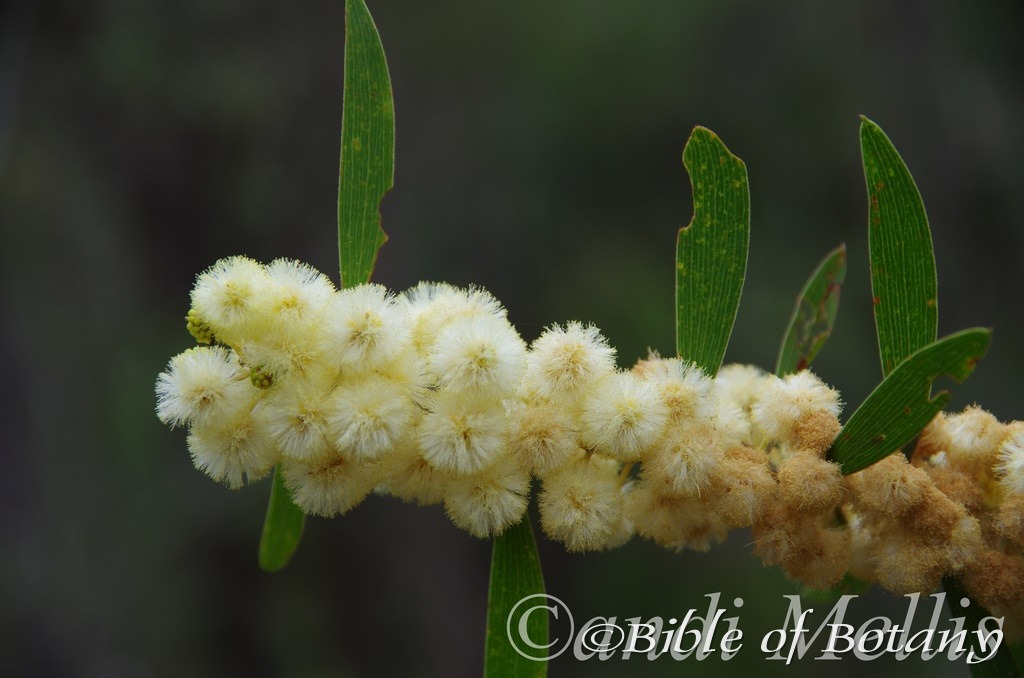
The Pinnacles NSW
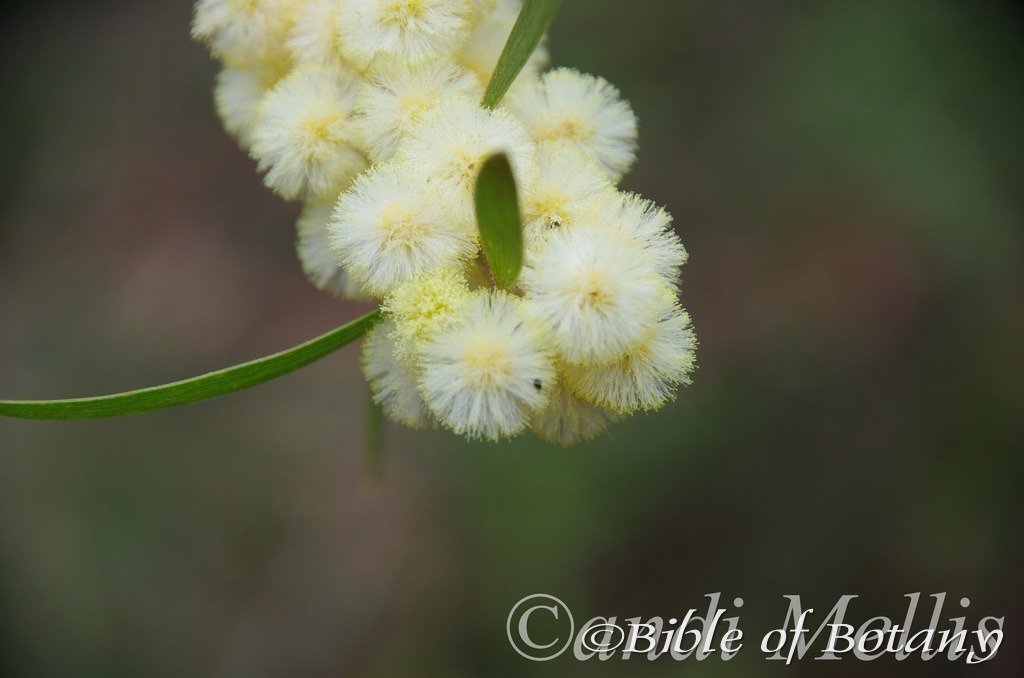
The Pinnacles NSW
Acacia baeuerlenii
Classification
Class: Magnoliophyta
Order: Fabales
Family: Fabaceae
Subfamily: Mimosoideae
Genus: From ἀκακία, which is Ancient Greek or later Acanthium, which is Latin for to have a sharp point. It refers to the first species named by Dioscorides the Greek Botanist for the Egyptian plant Acacia arabica, which has very sharply pointed spines.
Specie: Is named in honour of Wilhelm Baeurlen; 1840-1917, who was a plant collector for Ferdinand von Mueller and John maiden and author of ?Wildflowers of NSW.?
Sub specie:
Common Name:
Distribution:
Acacia baeuerlenii is restricted to small populations in several disjunct areas south from west of Caboolture to Towoomba, the Gilbralta Range and south east to Red Rock.
https://avh.ala.org.au/occurrences/search?taxa=Acacia+baeuerlenii+#tab_mapView
Habitat Aspect Climate:
Acacia baeuerleni prefer full sun. It grows below medium size trees or low trees in low, dry scrub lands in exposed positions. They can be found on flat headlands, gentle slopes and elevated flats and slopes. The altitude ranges from 20 meters ASL to 1000 meters ASL
The temperatures range from minus 4 degrees in July to 39 degrees in January.
The rainfalls range from lows of 650mm to an average of 1650mm annually.
Soil Requirements:
Acacia baeuerleni prefer sandy loams, medium to heavy clays. The soils are usually derived from decomposed sandstones or shales. The soil?s pH ranges from 5pH to 6.5pH. It does not tolerate water logged soils. Non saline soils to moderately saline soils are tolerated.
Height & Spread:
Wild Plants: 2.5m to 3.5m by 2m to 4m.
Characteristics:
Acacia baeuerleni‘s stems are semi glossy pale grey and glabrous. The branchlets are erect to semi erect while the slightly angled or ribbed branchlets are pale olive-brown to rusty-brown, glabrous to resinous and dull. The very young shoots are terete, glabrous and very sparsely to densely covered in caduceous, white, hirsute hairs.
Acacia baeuerleni‘s alternate, narrowly elliptical to sub lanceolate phyllodes are asymmetrical, straight to slightly curved. There is a single gland positioned adjacent to the pulvinus. The pulvinus measures 2mm to 4mm in length. The phyllodes measure 70mm to 140mm in length by 6mm to 130mm in width. The asymmetrical bases are cuneate to tapering while the apexes are acute with a mucronate tip. The concolourous laminas are deep green to deep sub glaucous green, flat and sparsely covered in white, caduceus, and puberulent hairs. The margins are entire. The 3 prominent longitudinal veins are not anastomosing while the minor longitudinal veins are sparsely anastomosing.
The inflorescence of Acacia baeuerleni are born singularly or up to 3 globose heads from the leaf axils. There are 30 to 40 individual flowers in a head. The slender, olive-yellow peduncles are covered in white, pubescent hairs. The peduncles measure 8mm to 15mm in length.
The individual flowers are 5 merous. The 5 pale olive-yellow calyxes? lobes are erect and glabrous. The laminae and petals are pale creamy yellow to bright lemon-yellow and orbicular while the stamens are bright yellow. The individual flowers including the stamens measure 3mm to 4.5mm in length and measure 8mm to 10mm in diameter overall. Acacia baeuerlenii sweet scented flowers appear from June through to late August.
Acacia baeuerleni‘s fruits are long, straight or at times twisted coriaceous pods. The pods are flat and covered in white pulverulent hairs. It is very slightly constricted between the seeds and along the margins. The pods measure 60mm to 100mm in length by 6mm to 8mm in width. The pale blue-green pods turn pale grey to deep grey when ripe. The oblong to narrowly oblong seeds are deep brown and glossy with a long, white to off white filiform funicle which coils from one end of the seed. The 2 to 6 seeds per pod measure 5mm to 5.6mm in length by 2mm to 2.6mm in diameter. The folded funicle measures 7mm to 9mm in length.
Wildlife:
The leaves on Acacia baeuerleni are the host food for the fiery jewel butterfly (Hypochrysops ignita var. ignita) and the Imperial Hairstreak (Jalmenus evagoras).
Cultivation:
Acacia baeuerleni is an interesting small shrub which looks ate home in any bush garden in semi-arid areas or coastal areas where the drainage is good and where the soils are fatty sandy loams or medium to heavy clays. Garden subjects will grow into small spreading shrubs in a bush setting or small compact plants when grown in the open without competition. In the garden they will grow from 1.5 meters to 2 meters in height by 2 meters to 2.5 meters in diameter or smaller and more compact if pruned in the early stages of development.
In native gardens it can be used to add nitrogen to the soil and to help break up heavy clays making them more friable. It is an excellent starter plant to give quick growth protect more delicate plants and good flowering displays over several weeks throughout the winter months. The foliage is not particularly attractive but with compact growth and nitrogen fixing is vital part of the garden until other plants become established. Try prostrate red flowering Grevilleas, bright coloured annuals or a mixed bed with a mosaic of different coloured foliages between clumps of Acacia baeuerlenii.
Garden beds would need to be open with plenty of space between plants to allow good air flow and plenty of light to reach all the inhabitants. Crowding this type of foliage with other plants will see them lose all the effectiveness though this can be a feature in a deliberately crowded bush garden where they go unnoticed until they break into flower. This is what happens in my garden when all of a sudden they become the talking point. Correct spacing will contrast the foliages better without one overpowering the other plants in the garden. For mass planting space the plants with at least 4 meters to 5 meters centers if you are considering them.
If you are using them amongst rocks or boulders in the garden, plant them sparingly to attain a barren scene, so not to make the area look cluttered or detract from the other features like the rocks. 4 or 5 in an area of 500 square meters would be ample. 4 plants separately planted or plant 2 close together and separate the other 2 or 3 on the far side of the bed to give width and depth where you want it. The use of annuals helps to attract the viewer to the permanent plants foliage as they are the dominant foliage you want people to notice in the patch. In the case of Acacia baeuerlenii you could substitute very small Grevillea, Crowea, Hovea or even Verticordia in lieu of the native annuals. The Hovea acutifolia is particularly stunning mixed with this Acacia due to the lemon yellow flowers and the deep purple of the Hovea. Remember most annuals flower when Acacia baeuerlenii is resting during the summer and most Grevilleas will flower at the same time so a blend may be the way to go. Annuals mixed with Acacia aulacocarpa help to give small gardens depth and make them look larger than what they really are due to the small diameter of mature plants. It works well with Grevillea masonii other Grevilleas of similar size but contrasting foliages are the key to success with the flowers being a bonus. Plants will generally live for 4 or 5 years though there plants at The Pinnacles seem to grow a fairly large tuber near the base so may live longer or produce a lignotuber in case of fire. This needs to be looked at more closely following the next bush fire in the district.
Propagation:
Seeds: The seeds of Acacia baeuerleni require treatment before sowing. Pre-treat by placing the seeds into a glass of hot water. Allow the water to cool and leave to soak for 8 to10 hours. Seeds that have not swollen repeat the exercise.
Sow into a seed raising mix. When the seedlings are 25mm to 50mm tall, prick them out and plant them into 50mm native tubes using a seed raising mix.
Once the seedlings reach 200mm to 250mm in height plant them out into their permanent position. For mass plantings plant at 6 meter to 8 meter centers for the trees and 3 meter to 4 meter centers for the prostrate forms.
Fertilize using Seaweed, fish emulsion or organic chicken pellets soaked in water on an alternate basis. Fertilize every two months until the plants are established then annually either in early September to March to maintain health, vitality and better flowering.
Further Comments from Readers:
All information is included in good faith and has been thoroughly researched prior to printing. The website or the author does not warrant or guarantee the accuracy of any information on these pages, nor does the website or the author accept any responsibility for any loss arising from the use of the information found within. The views and opinions are strictly those of the author or those members who chose to actively participate in the contents herein.
Hi reader, it seems you use The Bible of Botany a lot. That’s great as we have great pleasure in bringing it to you! It’s a little awkward for us to ask, but our first aim is to purchase land approximately 1,600 hectares to link several parcels of N.P. into one at The Pinnacles NSW Australia, but we need your help. We’re not salespeople. We’re amateur botanists who have dedicated over 30 years to saving the environment in a practical way. We depend on donations to reach our goal. If you donate just $5, the price of your coffee this Sunday, We can help to keep the planet alive in a real way and continue to bring you regular updates and features on Australian plants all in one Botanical Bible. Any support is greatly appreciated. Thank you.
In the spirit of reconciliation we acknowledge the Bundjalung, Gumbaynggirr and Yaegl and all aboriginal nations throughout Australia and their connections to land, sea and community. We pay our respect to their Elders past, present and future for the pleasures we have gained.
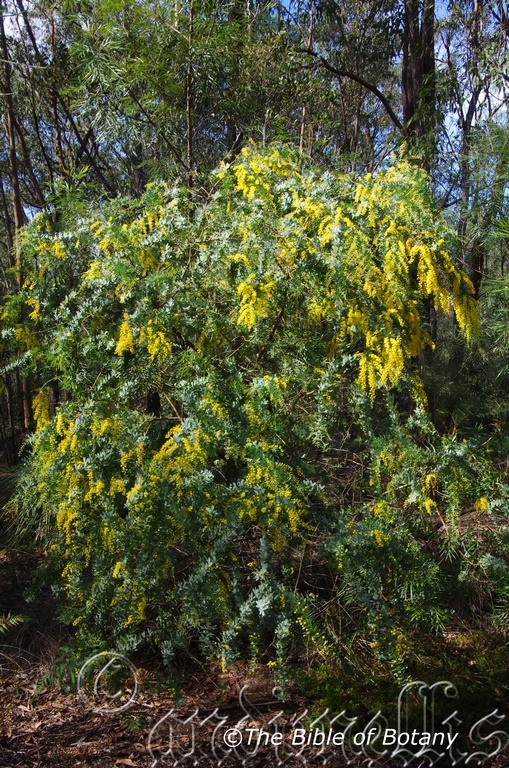
Author’s Garden The Pinnacles NSW

Author’s Garden The Pinnacles NSW

Author’s Garden The Pinnacles NSW
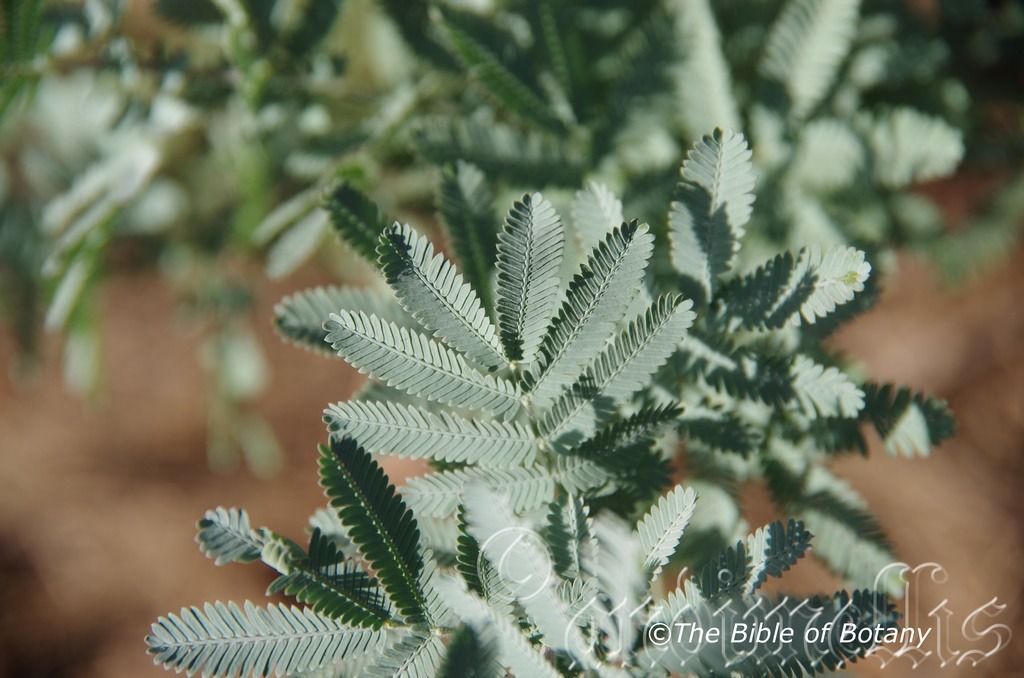
Author’s Garden The Pinnacles NSW
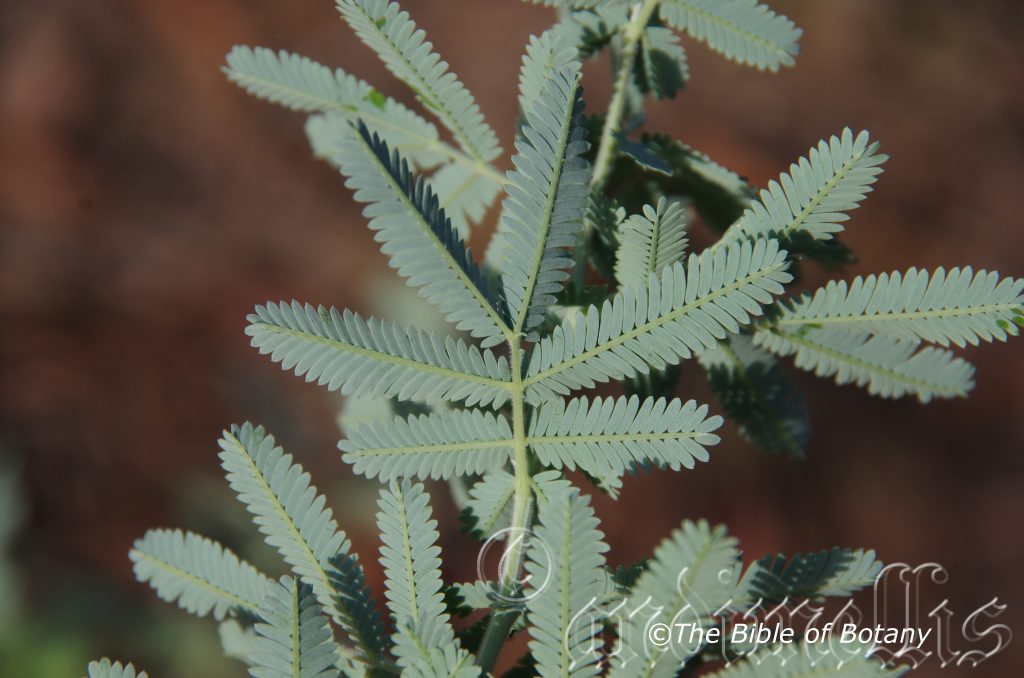
Author’s Garden The Pinnacles NSW

Author’s Garden The Pinnacles NSW
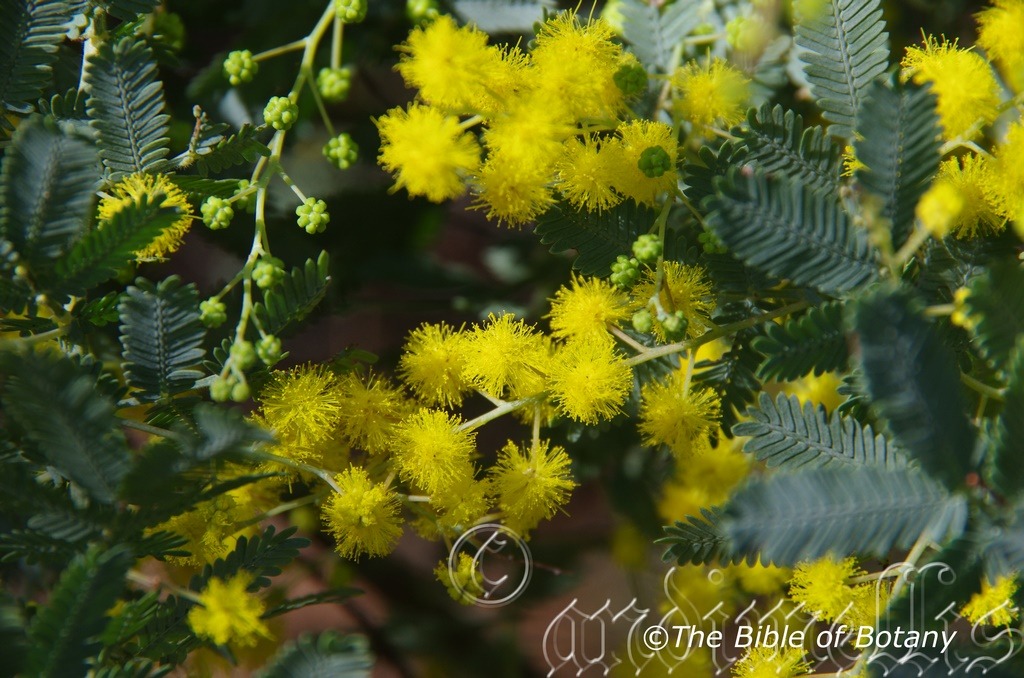
Author’s Garden The Pinnacles NSW

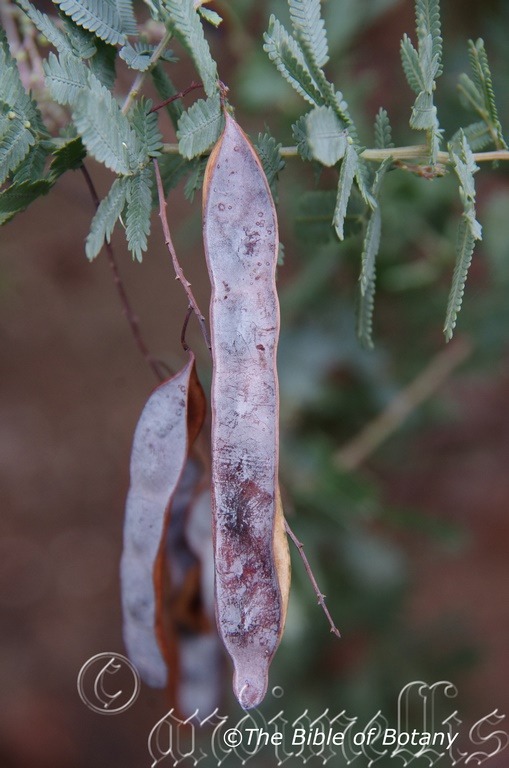
Author’s Garden The Pinnacles NSW

Author’s Garden The Pinnacles NSW
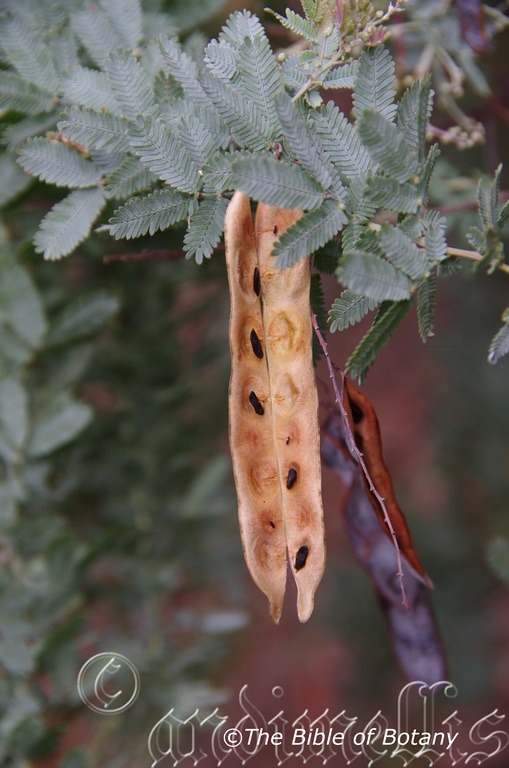
Author’s Garden The Pinnacles NSW

Author’s Garden The Pinnacles NSW
Acacia baileyana
Cootamundra City Council Floral Emblem.
Classification:
Class: Magnoliophyta
Order: Fabales
Family: Fabaceae
Subfamily: Mimosoideae
Genus: From ἀκακία, which is Ancient Greek or later Acanthium, which is Latin for to have a sharp point. It refers to the first species named by Dioscorides the Greek Botanist for the Egyptian plant Acacia arabica, which has very sharply pointed spines.
Specie: Is named in honour of Frederick Mason Bailey; 1827-1915, who was an English born Australian seed collector and curator of the Queensland Museum.
Sub specie:
Common Name: Cootamundra Wattle.
Distribution:
Acacia baileyana is an endemic species New South Wales and is found in and around the Temora and the Cootamundra districts.
https://avh.ala.org.au/occurrences/search?taxa=Acacia+baileyana+#tab_mapView
Habitat Aspect Climate:
Acacia baileyana prefer full sun. It grows below medium size trees or low trees in low dry scrub lands in open woodlands. It can be found gentle slopes and elevated flats. The altitude ranges from 300 meters ASL to 380 meters ASL
The temperatures range from minus 6 degrees in July to 34 degrees in January.
The rainfalls range from lows of 450mm to an average of 900mm annually.
Soil Requirements:
Acacia baileyana prefer growing on soils associated with decomposed granites, pegmatites, obsidian, sandstones and porphyry. The structures of the soils are sandy loams to light clays. Soils range from a pH of 4.5 to pH6.It does not tolerate water logged soils. Non saline soils to moderately saline soils are tolerated.
Height & Spread:
Wild Plants: 3m to 10m by 3m to 10m.
Characteristics:
Acacia baileyana‘s bark is a smooth dull light grey or brown, while the terete branchlets are a glaucous grey, smooth and angled towards the apexes. The very young shoots are sparsely covered in white pruinose wax.
The phyllodes are sessile on pulvinus nodes. The rachises measure 0.3mm to 2.5mm in length and are sparsely covered in white pruinose hairs. The opposite individual pinnae number 2 to 6.The 8 to 24 pairs of pinnules are sparsely covered in white pruinose wax. Each pinnule is narrow oblong and measures 3mm to 8mm in length by 0.7mm to 1.6mm in width.
The inflorescens’ of Acacia baileyana are auxiliary racemes or panicles with 8 to 36 globules. The racemes measure 30mm to 100mm in length by 6mm to 8mm in diameter. The peduncle measures 3mm to 7mm in length. The flowers are pale yellow or more often a deep golden yellow. Individual globules measure 3.5mm to 7mm in diameter while the individual flowers measure 1.3mm to 1.7mm in length. There are 11 to 25 flowers in each globose head.
The individual flowers are 5 merous. The pale olive-yellow calyxes and 5 calyx lobes are erect and glabrous. The laminae and petals are pale creamy yellow to pale yellow and orbicular while the stamens are pale yellow. Acacia baileyana?s appear from June through to September.
Acacia baileyana‘s fruits are long straight flat pods. They are 30mm to 100mm in length by 7.5mm to 15mm in width and strongly constricted between the seeds. The coriaceous pods are glaucous or very sparsely covered in short white pruinose hairs before ripening. Pods ripen in early summer. The oblong to broadly ellipsoidal seeds are dark brown to black with a creamy white filiform funicle. They measure 3mm to 4mm in length by 2.5mm to 3mm in width.
Wildlife:
The leaves on Acacia baileyana are the host food for the Tailed Emperor Butterfly Polyura sempronius.
Acacia baileyana is susceptible to attack from the Ochrogaster lunifer moth especially when soft grown or growing outside its natural habitats. The larvae are famous for walking in processions when travelling from one food tree to the next. They are nocturnal feeders and if their nest is at the foot of their host tree, they leave such silk trails each evening as they climb the tree, and each dawn as they descend again to their nest.
Like most Acacia it is suseptical to borers like the beautiful Chrysolopus spectabilis.
Cultivation:
It would make an good fire retardant tree shrub.
* Fire retardant plants act as radiant heat screens and absorb more heat from an approaching fire without burning.
* Fire retardant trees are able reduce wind speed near a house or out buildings.
* Fire retardant also trap embers and sparks carried by the wind.
* Fire retardant ground covers are able to catch burning embers without catching fire themselves, and also slow the travel of a fire through debris and litter on the ground.
Acacia baileyana is a very beautiful small tree or medium shrub which should be more widely grown in semi-arid areas on the western slopes or coastal areas where the drainage is very good. Garden subjects will grow into small shade trees from 5 meters to 8 meters in height by 5 meters to 6 meters with a light canopy when grown in the open. In native gardens they can be used to add nitrogen to the soil. It is an excellent base plant to protect more delicate plants giving light shade and plenty of flowers in the winter. The foliage is particularly attractive with purple tinged cultivars now available in nurseries. There is also a prostrate form available which is excellent for steep embankments and dry banks on clay or sandy soils. Try prostrate red flowering Grevilleas mixed with the prostrate form for something strongly different on dry banks and large rockeries.
Garden beds would need to be open with plenty of space between plants to allow air flow as well as to give the branchlets a chance to spread and be appreciated for their unique beauty. Crowding this type of foliage with other plants will see them lose all the effectiveness of the colour and form you require or want in the plant. Correct spacing will contrast the foliages better without one overpowering the other. For mass planting space the plants with at least 7 meters to 8 meters centers if you are considering it for a tree. Spacings of 3 meters to 3.5 meters will be needed to create a beautiful prostrate scene. If you are using them amongst rocks or around the small desert garden, plant them sparingly to attain a barren scene, so not to make the area look cluttered or detract from the other features. 4 or 5 in an area of 500 square meters would be ample. 4 plants separately planted or plant 2 close together and separate the other 2 or 3 to give width and depth where you want it. The use of annuals helps to attract the viewer to the permanent plants foliage as they are the dominant foliage you want people to notice in the patch. In the case of this Acacia you could substitute very small Grevillea sp. or even Verticordia sp. in lieu of the native annuals. In addition most annuals flower when this Acacia is resting during the summer. Annuals mixed with Acacia baileyana help to give small gardens depth and make them look larger than what they really are. It works well with Grevillea masonii other Grevilleas of similar size but contrasting foliages, which are the key to success with the flowers being a bonus.
Propagation:
Seeds: Acacia baileyana require treatment before sowing. Pre-treat by placing the seeds into a glass of boiling water. Allow the water to cool and leave to soak for 10 hours. Seeds that have not swollen repeat the exercise.
Sow into a seed raising mix. When the seedlings are 25mm to 50mm tall, prick them out and plant them into 50mm native tubes using a seed raising mix.
Once the seedlings reach 200mm to 250mm in height plant them out into their permanent position. For mass plantings plant at 6 meter to 8 meter centers for the trees and 3 meter to 4 meter centers for the prostrate forms.
Fertilize using Seaweed, fish emulsion or organic chicken pellets soaked in water on an alternate basis. Fertilize every two months until the plants are established then annually either in early September to March to maintain health, vitality and better flowering.
Further Comments from Readers:
All information is included in good faith and has been thoroughly researched prior to printing. The website or the author does not warrant or guarantee the accuracy of any information on these pages, nor does the website or the author accept any responsibility for any loss arising from the use of the information found within. The views and opinions are strictly those of the author or those members who chose to actively participate in the contents herein.
Hi reader, it seems you use The Bible of Botany a lot. That’s great as we have great pleasure in bringing it to you! It’s a little awkward for us to ask, but our first aim is to purchase land approximately 1,600 hectares to link several parcels of N.P. into one at The Pinnacles NSW Australia, but we need your help. We’re not salespeople. We’re amateur botanists who have dedicated over 30 years to saving the environment in a practical way. We depend on donations to reach our goal. If you donate just $5, the price of your coffee this Sunday, We can help to keep the planet alive in a real way and continue to bring you regular updates and features on Australian plants all in one Botanical Bible. Any support is greatly appreciated. Thank you.
In the spirit of reconciliation we acknowledge the Bundjalung, Gumbaynggirr and Yaegl and all aboriginal nations throughout Australia and their connections to land, sea and community. We pay our respect to their Elders past, present and future for the pleasures we have gained.
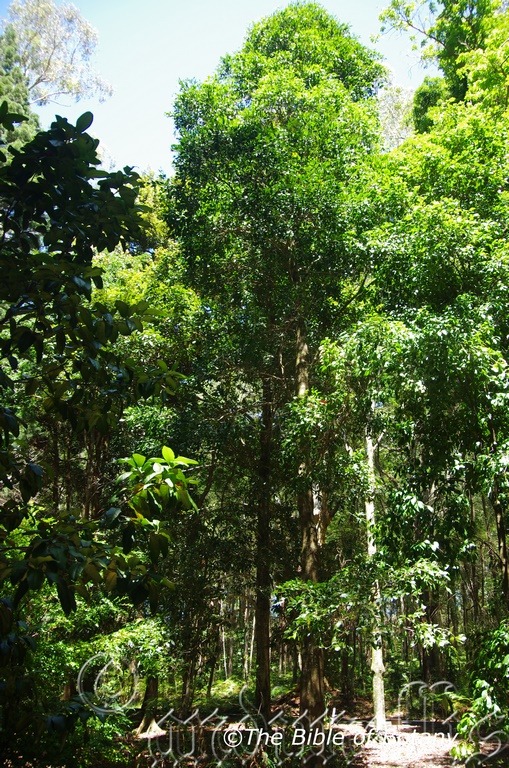

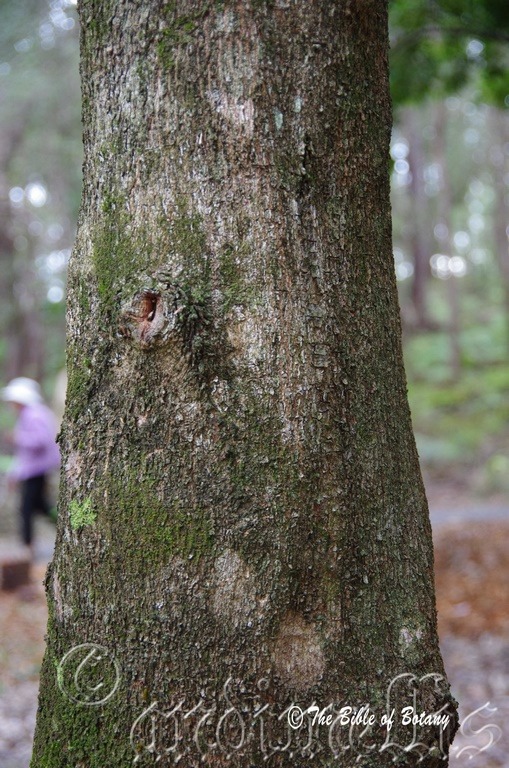
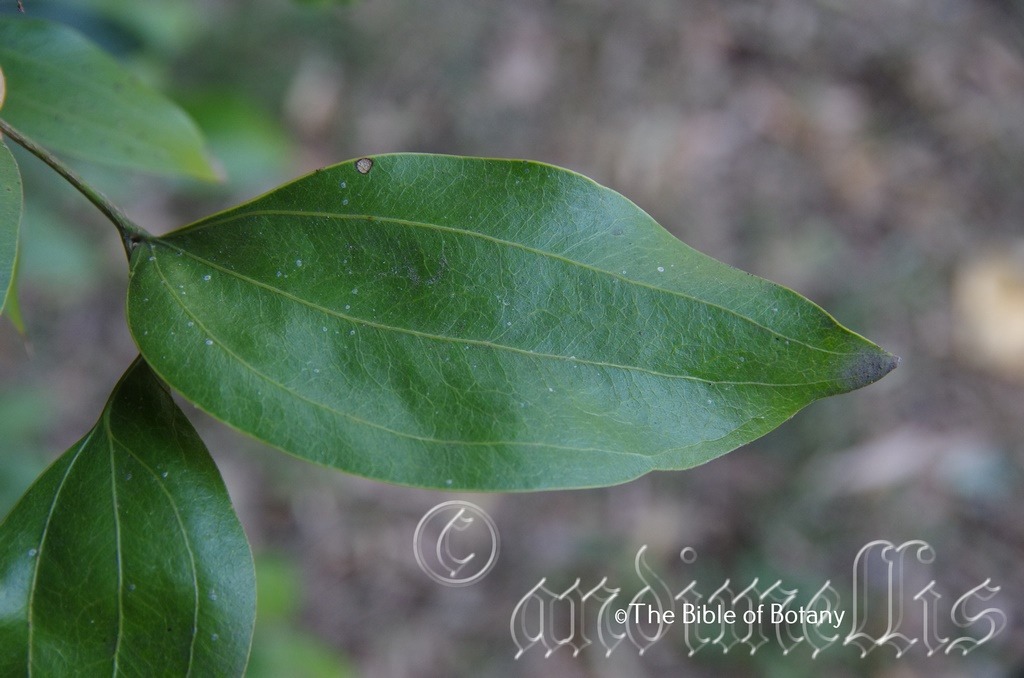

Acacia bakeri
Classification:
Class: Magnoliophyta
Order: Fabales
Family: Fabaceae
Subfamily: Mimosoideae
Genus: From ἀκακία, which is Ancient Greek or later Acanthium, which is Latin for to have a sharp point. It refers to the first species named by Dioscorides the Greek Botanist for the Egyptian plant Acacia arabica, which has very sharply pointed spines.
Specie: Is named in honour of C. T. Baker who was the curator of the Technology museum in Sydney.
Sub specie:
Common Name: Baker’s Wattle, Marblieuood, Scrub Wattle, Marblieuood.
Distribution:
Acacia bakeri is found on and east of the Great Dividing Range from Yandarren in south east Queensland to Brunswick head in coastal north eastern New South Wales with a disjunct population further south in the Talawah Nature Reserve.
https://avh.ala.org.au/occurrences/search?taxa=Acacia+bakeri+#tab_mapView
Habitat Aspect Climate:
Acacia bakeri prefer full sun to light dappled shade. It grows below medium size trees or adjacent to warm subtropical rainforests. The altitude ranges from 5 meters ASL to 300 meters ASL
The temperatures range from 2 degrees in July to 38 degrees in January.
The rainfalls range from lows of 1000mm to an average of 2000mm annually.
Soil Requirements:
Acacia bakeri prefer growing on soils better quality light clays to medium clays. The soils are usually derived from black basalt or metamorphic rocks. The soils pH ranges from 4.5pH to 6pH. It does not tolerate water logged soils. Non saline soils to moderately saline soils are tolerated.
Height & Spread:
Wild Plants: 8m to 30m by 6m to 10m.
Characteristics:
Acacia bakeri?s grey or greyish-brown bark is finely fissured or at times smooth. The terete to semi terete branchlets are reddish tinged green and glabrous.
Acacia bakeri?s phyllodes are elliptic to broadly elliptic and are straight to slightly curve. The phyllodes measure 50mm to 100mm in length by 15mm to 50mm in width. There is a single gland near the pulvinus. The pulvinus measures 2mm in length. The bases are acute to cuneate while the apexes are subacute to broad acute. The concolourous grey-green phyllodes are glabrous. The main vein and 3 or 4 longitudinal lateral veins are prominent while the secondary veins are strongly reticulate.
The inflorescence of Acacia bakeri are auxiliary racemes or clusters on a raceme with 2 to 8 globular flowers. The racemes measure 40mm to 120mm in length by 15mm to 25mm in diameter. The peduncle measures 5mm to 10mm in length. The flowers are pale yellow with 15 to 30 individual flowers in a globose head. The globose heads measure 3.5mm to 7mm in diameter while the individual flowers measure 6mm to 8mm in length by 3mm to 5mm in diameter.
The individual flowers are 4 merous. The spathulate sepals are free and moderately covered in white pubescent hairs. The laminae and petals are pale creamy yellow to pale yellow and orbicular while the stamens are pale yellow. Acacia bakeri’s flowers appear from September to November.
Acacia bakeri fruits are long straight or slightly curve flat pods. They measure 50mm to 160mm in length by 10mm to 16mm in width. The pods are variably constricted between the seeds. The thinly coriaceous pods are finely reticulated. The pods ripen in early summer. The broadly ellipsoidal seeds are deep brown to black with a creamy white filiform funicle. The seeds measure 5mm to 6mm in diameter by 3.5mm to 4.5mm in thickness.
Wildlife:
Acacia bakeri’s wildlife is unknown to the author.
Cultivation:
Acacia bakeri is a very beautiful medium tree which should be more widely grown in subtropical areas along the coast where the drainage is good. Garden subjects will grow into small shade trees from 10 meters to 15 meters in height by 8 meters to 12 meters with a dense canopy when grown in an open situation. In native gardens they can be used to add nitrogen to the soil. They are an excellent quick growing foundation tree which can be used to protect more delicate plants giving medium shade or as a rainforest tree where it will grow taller and narrower.
Propagation:
Seeds: Acacia bakeri require treatment before sowing. Pre-treat by placing the seeds into a glass of boiling water. Allow the water to cool and leave to soak for 10 hours. Seeds that have not swollen repeat the exercise.
Sow into a seed raising mix and place the tray beneath 50mm shade cloth and keep moist. When the seedlings are 25mm to 50mm tall, prick them out and plant them into 50mm native tubes using a seed raising mix.
Once the seedlings reach 200mm to 250mm in height plant them out into their permanent position. For mass plantings plant at 6 meter to 8 meter centers for the trees and 10 meters to 15 meter centers for formal park scenarios.
Fertilize using Seaweed, fish emulsion or organic chicken pellets soaked in water on an alternate basis. Fertilize every two months until the plants are established then annually either in early September to March to maintain health, vitality and better flowering.
Further Comments from Readers:
All information is included in good faith and has been thoroughly researched prior to printing. The website or the author does not warrant or guarantee the accuracy of any information on these pages, nor does the website or the author accept any responsibility for any loss arising from the use of the information found within. The views and opinions are strictly those of the author or those members who chose to actively participate in the contents herein.
Hi reader, it seems you use The Bible of Botany a lot. That’s great as we have great pleasure in bringing it to you! It’s a little awkward for us to ask, but our first aim is to purchase land approximately 1,600 hectares to link several parcels of N.P. into one at The Pinnacles NSW Australia, but we need your help. We’re not salespeople. We’re amateur botanists who have dedicated over 30 years to saving the environment in a practical way. We depend on donations to reach our goal. If you donate just $5, the price of your coffee this Sunday, We can help to keep the planet alive in a real way and continue to bring you regular updates and features on Australian plants all in one Botanical Bible. Any support is greatly appreciated. Thank you.
In the spirit of reconciliation we acknowledge the Bundjalung, Gumbaynggirr and Yaegl and all aboriginal nations throughout Australia and their connections to land, sea and community. We pay our respect to their Elders past, present and future for the pleasures we have gained.
Acacia beadleana
Classification:
Class: Magnoliophyta
Order: Fabales
Family: Fabaceae
Subfamily: Mimosoideae
Genus: From ἀκακία, which is Ancient Greek or later Acanthium, which is Latin for to have a sharp point. It refers to the first species named by Dioscorides the Greek Botanist for the Egyptian plant Acacia arabica, which has very sharply pointed spines.
Specie: Is named in honour of Noel Charles William Beadle; 1914-1998, who was an Australian botanist, conversationalist and university lecturer.
Sub specie:
Common Name:
Distribution:
Acacia beadleana is restricted to a small population along the Gibraltar Range in northern New South Wales.
https://avh.ala.org.au/occurrences/search?taxa=Acacia+beadleana+#tab_mapView
Habitat Aspect Climate:
Acacia beadleana prefer full sun. It grows below medium size trees or low trees in low, dry scrub lands in exposed positions. It grows on flat heath lands at higher altitudes, gentle slopes amongst granite boulders. The altitude ranges from 1250 meters ASL to 1450 meters ASL
The temperatures range from minus 5 degrees in July to 39 degrees in January.
The rainfalls range from lows of 650mm to an average of 1350mm annually.
Soil Requirements:
Acacia beadleana prefer growing on sandy loams to fatty course sandy clays. The soils are derived from decomposed granites. The soils range from a pH of 4.5 to pH5.It does not tolerate water logged soils though seasonally water may lay in surface depressions following good rain. Non saline soils to moderately saline soils are tolerated.
Height & Spread:
Wild Plants: 0.5m to 2.5m by 1m to 2m.
Characteristics:
Acacia beadleana‘s stems are semi erect to spreading, pale grass-green and scabrous. The smaller stems are compressed to terete while the slightly angled or ribbed new growth are pale grass-green to lemon?green, slightly scabrous. The very young shoots are terete, glabrous and densely covered in white spreading villous hairs.
Acacia beadleana‘s alternate phyllodes are irregularly clustered at irregular intervals along the stems. They are narrowly elliptical to linear, straight or slightly curved or slightly twisting. There is a single gland positioned adjacent to the pulvinus. The pulvinus measures 0.8mm to 1mm in length. The phyllodes measure 5mm to 14mm in length by 0.6mm to 1.4mm in width. The bases are rounded to truncate while the apexes are acute to acuminate with a mucronate tip. The concolourous laminas are grass-green to sub glaucous and are very sparsely to sparsely covered in white spreading villous hairs on the upper laminas while the lower laminas are sparsely to moderately covered in white spreading villous hairs especially near the margins and basil half. The margins are entire. The veins are obscure to faintly visible.
The inflorescence of Acacia beadleana are born singularly in globose heads from the leaf axils. There are 32 to 46 individual flowers in a head. The slender, grass-green peduncles are covered in spreading, white villous hairs. The peduncles measure 6mm to 16mm in length.
The individual flowers are 5 merous. The 5 pale grass-green calyx lobes are erect and glabrous. The elliptical petals are bright yellow while the stamens are pale yellow. The individual flowers including the bright yellow stamens measure 3mm to 4.5mm in length and measure 8mm to 10mm in diameter overall. Acacia baeuerlenii?s sweet scented flowers appear throughout the year with a peak from January to late February.
Acacia beadleana fruits are long, straight, flat coriaceous pods. The pods are constricted between the seeds and slightly constricted along the margins between the seeds, are glabrous and pruinose. The pods measure 15mm to 60mm in length by 7mm to 10.5mm in width. The pale blue-green pods turn deep brown to brown-grey externally and rusty-brown internally when ripe.
The asymmetrical, slightly flattened, ovoidal seeds are black and glossy with a long, white filiform funicle which is reflexed at one end of the seed. The 2 to 8 seeds per pod measure 2.5mm to 3mm in length by 1.8mm to 2mm in width. The funicle measures 4.5mm to 5.5mm in length.
Wildlife:
Acacia beadleana’s wildlife is unknown to the author.
Cultivation:
Acacia beadleana is an interesting small shrub which looks at home in any bush garden or rockery in semi-arid areas or coastal areas where the drainage is good and where the soils are fatty sandy loams or medium sandy clays. Garden subjects will grow into s
Propagation:
Seeds: Acacia beadleana require treatment before sowing. Pre-treat by placing the seeds into a glass of hot water. Allow the water to cool and leave to soak for 8 to10 hours. Seeds that have not swollen repeat the exercise.
Sow into a seed raising mix. When the seedlings are 25mm to 50mm tall, prick them out and plant them into 50mm native tubes using a seed raising mix.
Once the seedlings reach 200mm to 250mm in height plant them out into their permanent position. For mass plantings plant at 2.5 meter to 3 meter centers for a quick growing small hedge.
Fertilize using Seaweed, fish emulsion or organic chicken pellets soaked in water on an alternate basis. Fertilize every two months until the plants are established then annually either in early September to March to maintain health, vitality and better flowering.
Further Comments from Readers:
All information is included in good faith and has been thoroughly researched prior to printing. The website or the author does not warrant or guarantee the accuracy of any information on these pages, nor does the website or the author accept any responsibility for any loss arising from the use of the information found within. The views and opinions are strictly those of the author or those members who chose to actively participate in the contents herein.
Hi reader, it seems you use The Bible of Botany a lot. That’s great as we have great pleasure in bringing it to you! It’s a little awkward for us to ask, but our first aim is to purchase land approximately 1,600 hectares to link several parcels of N.P. into one at The Pinnacles NSW Australia, but we need your help. We’re not salespeople. We’re amateur botanists who have dedicated over 30 years to saving the environment in a practical way. We depend on donations to reach our goal. If you donate just $5, the price of your coffee this Sunday, We can help to keep the planet alive in a real way and continue to bring you regular updates and features on Australian plants all in one Botanical Bible. Any support is greatly appreciated. Thank you.
In the spirit of reconciliation we acknowledge the Bundjalung, Gumbaynggirr and Yaegl and all aboriginal nations throughout Australia and their connections to land, sea and community. We pay our respect to their Elders past, present and future for the pleasures we have gained.
Acacia binervata

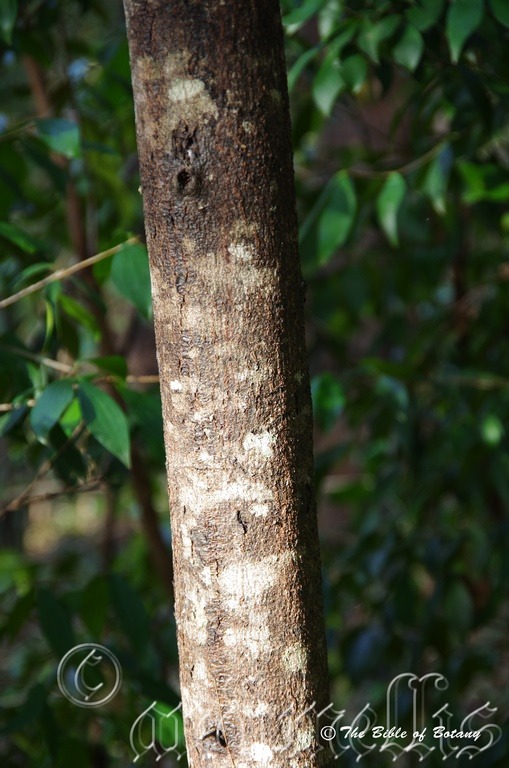
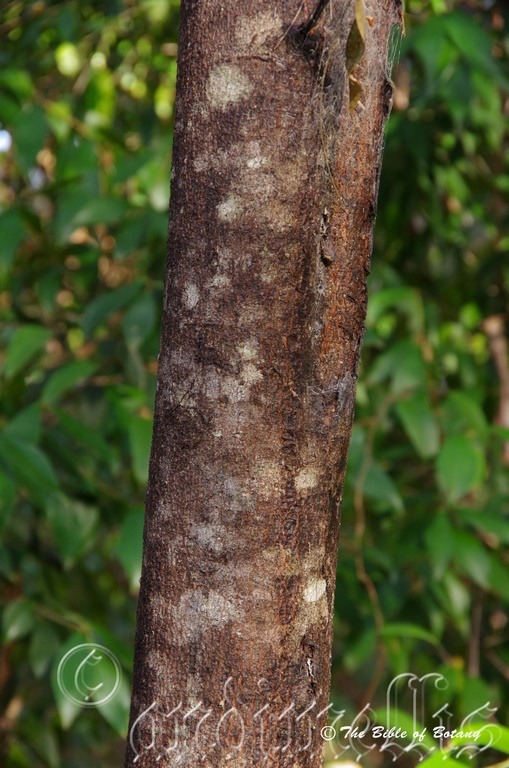
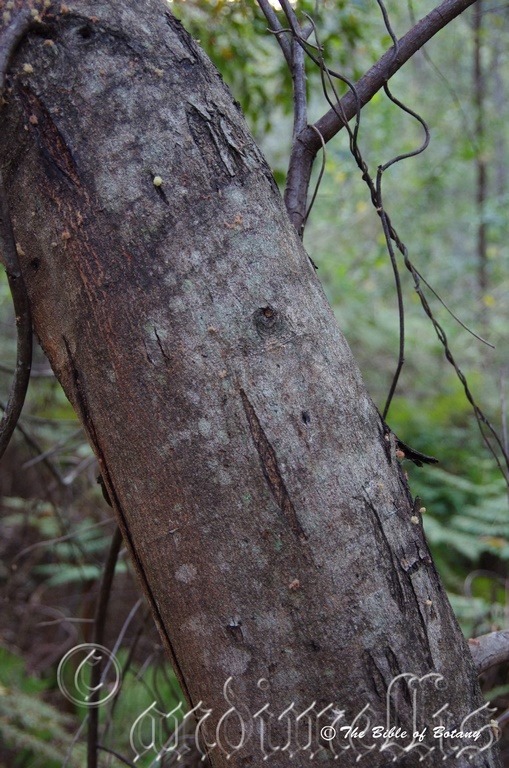
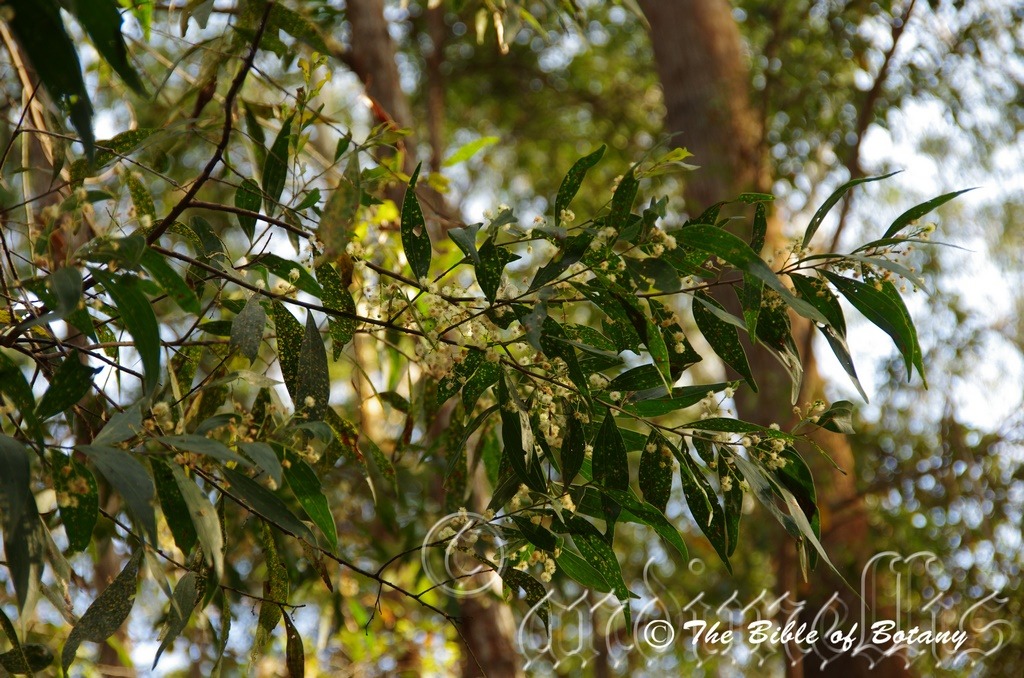

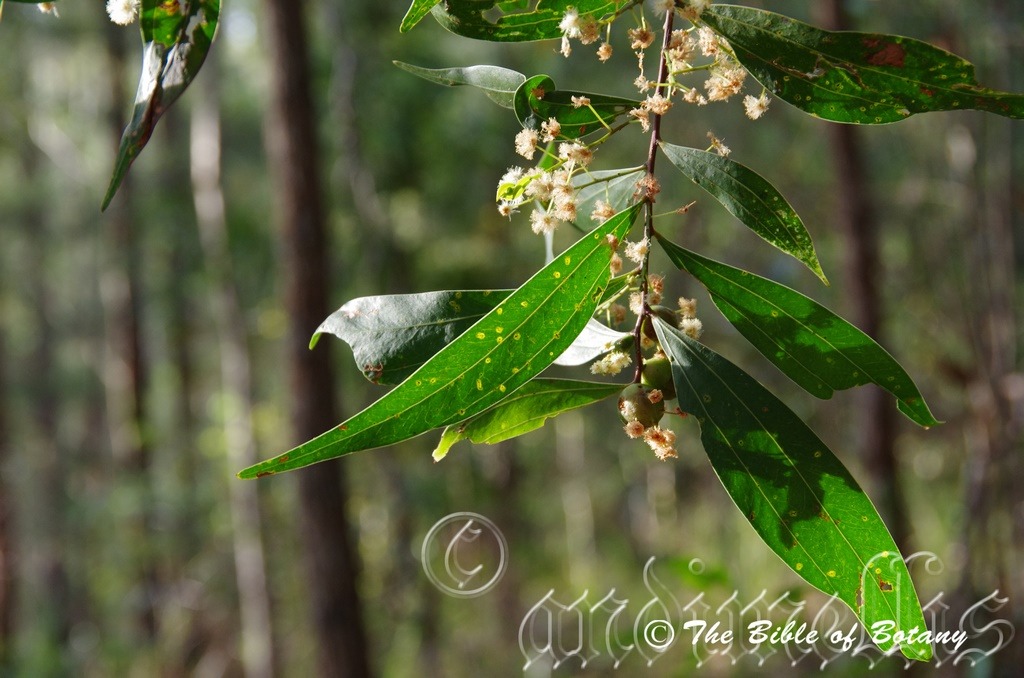
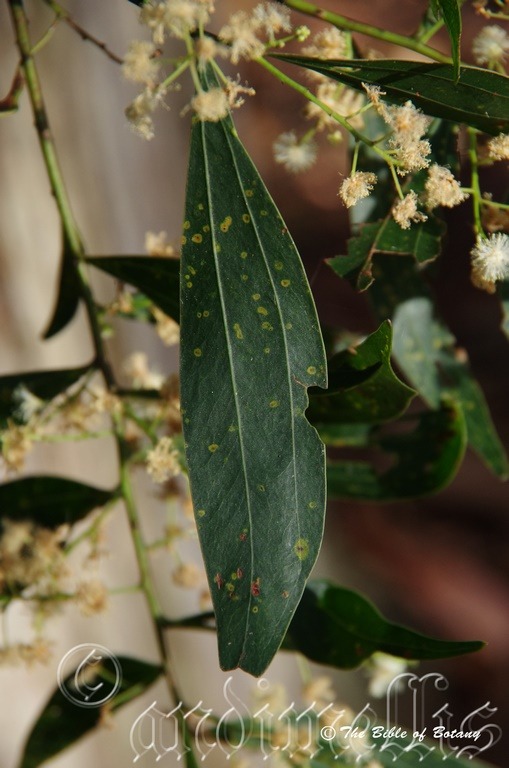
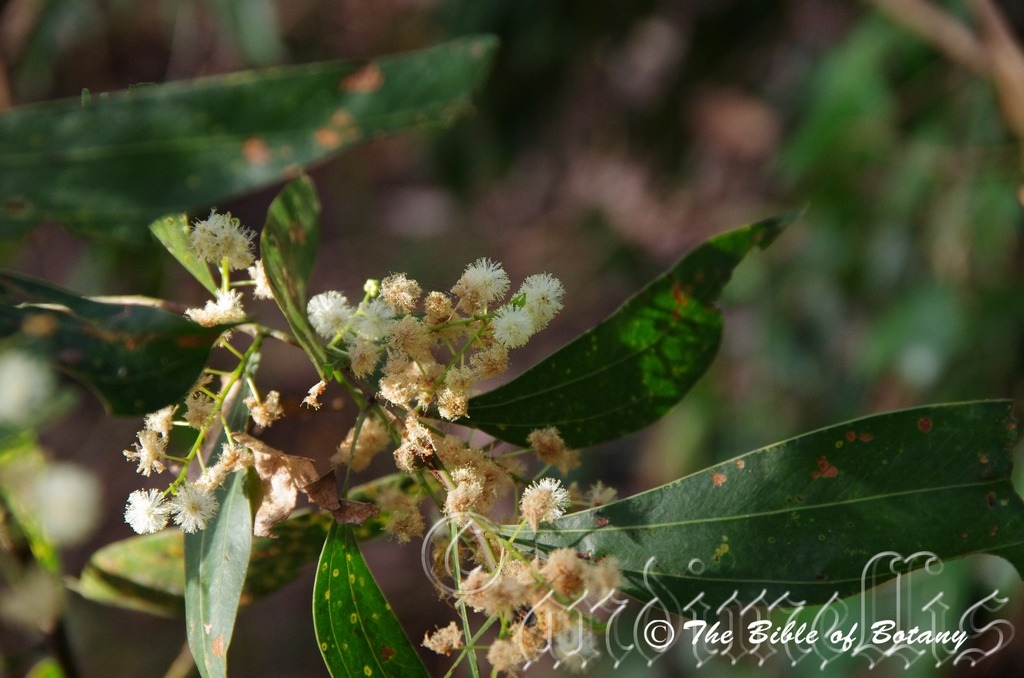
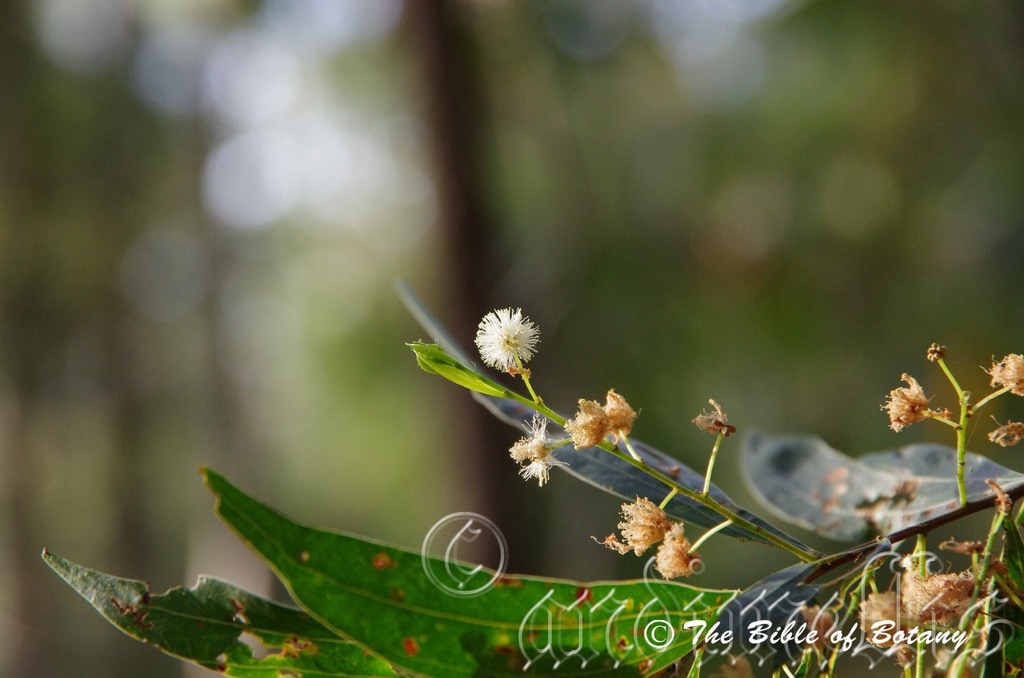
Classification:
Class: Magnoliophyta
Order: Fabales
Family: Fabaceae
Subfamily: Mimosoideae
Genus: From ἀκακία, which is Ancient Greek or later Acanthium, which is Latin for to have a sharp point. It refers to the first species named by Dioscorides the Greek Botanist for the Egyptian plant Acacia arabica, which has very sharply pointed spines.
Specie: From Bi/Bis, which is Greek/Latin for two and Neuron, which is Ancient Greek for a nerve. It refers to the xylem or phloem system in the leaves or flowers which transport liquids and minerals.
Sub specie:
Common Name: Two Veined Hickory.
Distribution:
Acacia binervata is endemic to New South Wales and southern Queensland and is found in several disjunct localities east of the Great Dividing Range. It is found south from Carbrook, Mount Cotton and Redland Bay in Queensland to Narooma in central eastern New South Wales. There is an outlying population near Melbourne which may be garden escapees.
https://avh.ala.org.au/occurrences/search?taxa=Acacia+binervata+#tab_mapView
Habitat Aspect Climate:
Acacia binervata prefer full sun to dappled shade. It grows as a small tree in country dominated by Eucalyptus trees in moist riverine and creek flats. It never dominates the understory but is locally common. The altitude ranges from 10 meters ASL to 300 meters ASL
The temperatures range from lows of minus 4 degrees in July to 38 degrees in January.
The rainfalls range from lows of 800mm to an average of 1850mm annually.
Soil Requirements:
Acacia binervata prefer light clays to medium clays. The soils are derived from derived from decomposed brown basalts, shales or better quality heavier type sandstones. The soil?s pH ranges from 5.5pH to 7pH. It does not tolerate water logged soils. None saline soils to moderately saline soils are tolerated. Non saline soils to medium saline soils are tolerated.
Height & Spread:
Wild Plants: 3m to 15m by 3m to 8m.
Characteristics:
Acacia binervata‘s grows as a small tree with grey-black, glabrous to rough bark especially on older trees. The branchlets are angled, dull, olive-brown to olive-green and glabrous.
Acacia binervata‘s phyllodes are narrowly elliptical to broadly elliptical or rarely lanceolate and straight or sub falcate. The phyllodes measure 60mm to 140mm in length by 10mm to 30mm in width or to 60mm on immature trees. The bases are tapering asymmetrical while the apexes are narrowly acute to narrowly caudate. The concolourous phyllodes are olive-green and thinly coriaceous. New leaves are glossy olive?green tinged tan. The 2 to 3 longitudinal veins are prominent. There is a small gland 5mm to 10mm above the pulvinus. The pulvinus measure 1mm to 3mm in length.
The inflorescence of Acacia binervata are panicles born terminally or auxiliary. The rachises and peduncles are glabrous. The rachises measure 20mm to 80mm in length while the peduncles measure 4mm to 11mm in length. There are 3 to 12 globular heads on each raceme with 30 to 50 individual flowers in each globose head. The flowers are pale lemon to pale cream, almost white. The globose heads measure 5mm to 10mm in diameter while the individual flowers measure 2.5mm to 4.5mm in length.
The individual flowers are 5 merous. The calyxes are copular and glabrous. The lanceolate petals are pale cream almost white to pale yellow while the stamens are pale yellow. Acacia binervata?s flowers appear from August through to mid-November.
Acacia binervata fruits are long, flat, straight pods. The pods measure 35mm to 140mm in length by 8mm to 16mm in width. Constriction between the seeds is variable from very slightly to deeply constrict even on the same pod and slightly to moderately constrict along the margins. The papery to thinly coriaceous pods are olive-green, glabrous, obscurely transversely veined and turn rusty-brown when ripe.
The 3 to 8 oblong-elliptical glossy black seeds measure 6mm to 7mm in length by 2mm to 2.2mm in diameter. The filiform funicle is creamy white and expands close to the base of the seed.
Wildlife:
The seeds of Acacia binervata in some seasons are completely eaten by unknown borers while in other seasons there is little evidence of damage. King parrots and Crimson rosellas have been seen on the trees eating the seeds.
Cultivation:
Acacia binervata is a beautiful small tree or medium shrub with fine foliage and a delicate appearance. In sub-tropical and temperate Native gardens it can be used to add nitrogen to the soil. It is relatively short lived but offer great assistance in breaking up heavy clay soils while adding good quantities of fine mulch throughout its life. It is most suitable in bush gardens where it can fill small to medium spaces or hard to fill corners especially in a riverine position. They are hardy and fast growing given a little attention. In cultivation it will grow 6 meters to 8 meters in height by 4 meters to 5 meters in diameter when grown in the open.
It is best used adjacent to small areas of bush close to paths or the house. It is great in large rockeries or small rainforest gardens as the main feature plant because of their fast growth and attractive foliage. Here it can be planted in small groups of 2 or 3 as a stand-alone plant to create quick lush growth contrasting the foliages of other rainforest plants. If it is surrounded by shorter plants with fine foliages and red flowers it will dominate at the center giving height and strength to the bed.
Planted with a mass of smaller plants and ground covers with mixed coloured flowers and foliages will ensure a great display during the winter and spring months. This would be particularly strong, if a mixture of different finer foliages of different colours and textures are incorporated together. This will give a strong uplifting of central height. Be sure to plant any plant exactly in the center for a formal look or well off to one side for an informal look. 2 or 3 shrubs close together on one side looks even more spectacular when just a single plant is placed on the other side to give balance to the picture. Mass plant below Acacia binervata with annuals and prostrate plants so that the whole bed is covered for a woodland scene.
The plants planted out below should have a mixture of bold colours radiating out from the base of the trees so use pinks and mauves directly below and reds and whites further out and avoid yellows. Acacia binervata has broad leaves and large enough flowers to dominate the scene when in flower and when not in flower their strong outline will give the contrast required for strength provide those plants covering the ground have smaller leaves and the majority are a pale green and no blue grey leaves are used.
Propagation:
Seeds: Acacia binervatarequire treatment before sowing. Pre-treat by placing the seeds into a glass of hot water not boiling. Allow the water to cool and leave to soak for 10 to 20 hours. Seeds that have not swollen repeat the exercise.
Sow into a seed raising mix. When the seedlings are 25m to 50mm tall, prick them out and plant them into 50mm native tubes using a seed raising mix.
Once the seedlings reach 200mm to 250mm in height plant them out into their permanent position.
Fertilize using Seaweed, fish emulsion or organic chicken pellets soaked in water on an alternate basis. Fertilize every two months until the plants are established then annually either in early September to March to maintain health, vitality and better flowering.
Further Comments from Readers:
All information is included in good faith and has been thoroughly researched prior to printing. The website or the author does not warrant or guarantee the accuracy of any information on these pages, nor does the website or the author accept any responsibility for any loss arising from the use of the information found within. The views and opinions are strictly those of the author or those members who chose to actively participate in the contents herein.
Hi reader, it seems you use The Bible of Botany a lot. That’s great as we have great pleasure in bringing it to you! It’s a little awkward for us to ask, but our first aim is to purchase land approximately 1,600 hectares to link several parcels of N.P. into one at The Pinnacles NSW Australia, but we need your help. We’re not salespeople. We’re amateur botanists who have dedicated over 30 years to saving the environment in a practical way. We depend on donations to reach our goal. If you donate just $5, the price of your coffee this Sunday, We can help to keep the planet alive in a real way and continue to bring you regular updates and features on Australian plants all in one Botanical Bible. Any support is greatly appreciated. Thank you.
In the spirit of reconciliation we acknowledge the Bundjalung, Gumbaynggirr and Yaegl and all aboriginal nations throughout Australia and their connections to land, sea and community. We pay our respect to their Elders past, present and future for the pleasures we have gained.

Acacia brownii
Classification:
Class: Magnoliophyta
Order: Fabales
Family: Fabaceae
Subfamily: Mimosoideae
Genus: From ἀκακία, which is Ancient Greek or later Acanthium, which is Latin for to have a sharp point. It refers to the first species named by Dioscorides the Greek Botanist for the Egyptian plant Acacia arabica, which has very sharply pointed spines.
Specie: Is named in honour of Robert Brown; 1773-1858, who was a naturalist who sailed with Mathew Flinders when he circumnavigated Australia and became South Australia?s first botanical collector..
Sub specie:
Common Name: Prickly Moses or Heath Wattle.
Distribution:
Acacia brownii is found growing naturally in Queensland, from Burra Burri in the North West across to Maroochydore south mainly along the coast or adjacent ranges to Wilson Promontory in the south and across to the eastern suburbs of Melbourne but not along the coast between Melbourne and Wilson Promontory. There is an outlying pocket in the Grampians in western Victoria.
https://avh.ala.org.au/occurrences/search?taxa=Acacia+brownii+#tab_mapView
Habitat Aspect Climate:
Acacia brownii prefer full sun to dappled sun light. It grows adjacent to or on higher ground in coastal marshes, coastal heaths or in dry Eucalyptus forest heaths. The altitude ranges from 5 meters ASL to 750 meters ASL
The temperatures range from minus 2 degrees in July to 38 degrees in January.
The rainfalls range from lows of 550mm to 1600mm average per annum.
Soil Requirements:
Acacia brownii prefers pure sand, sandy loams or light clays. The soils are derived from decomposed brown or black basalts, granites, pegmatites, andesite, metamorphic rocks or sandstones. The soil?s pH ranges from 4.5pH to 6.5pH. It does not tolerate water logged soils. None saline soils to moderately saline soils are tolerated.
Height & Spread:
Wild Plants: 1m to 1.5m by 1m to 1.5m.
Characteristics:
Acacia brownii grows as scrambling shrub over other vegetation or can be a smaller compact dense shrub in more open situations on better quality soils. The terete, glabrous stems are grey to reddish brown while the younger stems are reddish brown.
Acacia brownii?s bright olive green stiff terete phyllodes are glabrous and measure 8mm to 20mm in length by 1mm to 2.5mm in width. The mid vein is prominent on both laminas. The base is sessile while the apex is strongly acute and pungent. The margins are entire and flat. The pulvinus measure 2mm to 3mm in length.
Acacia brownii?s inflorescences are a single globose head born from the phyllode axils. The glabrous peduncles measure 4mm to 15mm in length. There are 12 to 30 individual flowers in the globose head which measure 7mm to 10mm in diameter.
The individual flowers are 5 merous. The pale olive-yellow calyxes and 5 calyx lobes are erect and glabrous. The petals are pale creamy yellow to pale yellow and orbicular while the stamens are pale yellow. The bright yellow-orange flowers appear from mid-August to early November.
The fruits of Acacia brownii are falcate, dry, deep reddish brown pods. The pods measure 20mm to 80mm in length by 3mm 5mm in diameter and are constricted between the seeds.
Wildlife:
Acacia brownii?s flowers are attractive to native bees.
Cultivation:
Acacia brownii is a beautiful small shrub that looks great in full sun. Best to mass plant to the rear of a garden bed due to the pungent phyllodes but when in flower is one of the best small Acacias because it blooms over a longer period than most other Acacias. In an open sunny position Acacia brownie will grow from 0.8 meters to 1 meter in height by 0.8 meters to 1 meter in diameter.
Two, three or more planted back from a bend will become a very strong focal point when in flower, gain a lot of attention whether you are coming or going because of the fresh clean look of the foliage even in the driest of times. They can be tip pruned if a smaller shrub is required. It responds well to tip pruning recovering quickly and often increasing the number of flowers in the following season.
Place them in the mid ground or for ground with larger leaf plants behind, and fine leaf ground covers or annuals in front. Plants with pink, orange, red or purple flowers can be used in both the foreground and background with great effect. Plants with finer, soft foliages in pale green or blue greys will also compliment the scene during periods when there are few flowers in the garden. This will lead the viewer’s eyes directly to the pale yellow flowers and rusty tomentose buds and branchlets for a longer period.
Acacia brownii make good contributions to heath garden. Here they can be used as the smaller growing plant scattered throughout the heath scene. When you design a flat heath garden which this Acacia is well suited don’t use contours to display the plants as heath lands are almost always flat or have a slight rise. Plants must be planted close together and be short so you can see over the tallest ones with the exception of one or two plants at the most. These will be feature plants. The idea is to achieve a feeling of expansive flatness. This can be achieved with using the Acacia brownii?s green terete phyllodes blend into the scene admirably with finer pale green or soft grey to glaucous foliages. Use a lot of procumbent plants like Carpobrotus edulis or Hibbertia sp. Mix them with other smaller shrubs so none of them dominate the scene but blend in to give a mosaic of foliage colours that you oversee. Here I immediately think of Actinotis helianthi or Grevillea thelemanniana for two great contrasting foliages.
Propagation:
Seeds: Acacia brownii seeds require treatment before sowing. Pre-treat by placing the seeds into a glass of boiling water. Allow the water to cool and leave to soak for several hours. Seeds that have not swollen repeat the exercise. Sow into a seed raising mix covering the seeds with 5mm of the mix.
When the seedlings are 20mm to 30mm tall, prick them out and plant them into 50mm native tubes using a seed raising mix.
Once the seedlings reach 150mm to 200mm in height plant them out into their permanent position. For mass plantings plant them at 1 meter Spacings for best results.
Fertilize using Seaweed, fish emulsion or organic chicken pellets soaked in water on an alternate basis. Fertilize every two months until the plants are established then annually either in early September to March to maintain health, vitality and better flowering.
Further Comments from Readers:
All information is included in good faith and has been thoroughly researched prior to printing. The website or the author does not warrant or guarantee the accuracy of any information on these pages, nor does the website or the author accept any responsibility for any loss arising from the use of the information found within. The views and opinions are strictly those of the author or those members who chose to actively participate in the contents herein.
Hi reader, it seems you use The Bible of Botany a lot. That’s great as we have great pleasure in bringing it to you! It’s a little awkward for us to ask, but our first aim is to purchase land approximately 1,600 hectares to link several parcels of N.P. into one at The Pinnacles NSW Australia, but we need your help. We’re not salespeople. We’re amateur botanists who have dedicated over 30 years to saving the environment in a practical way. We depend on donations to reach our goal. If you donate just $5, the price of your coffee this Sunday, We can help to keep the planet alive in a real way and continue to bring you regular updates and features on Australian plants all in one Botanical Bible. Any support is greatly appreciated. Thank you.
In the spirit of reconciliation we acknowledge the Bundjalung, Gumbaynggirr and Yaegl and all aboriginal nations throughout Australia and their connections to land, sea and community. We pay our respect to their Elders past, present and future for the pleasures we have gained.


Rosser Botanic Gardens Qld.
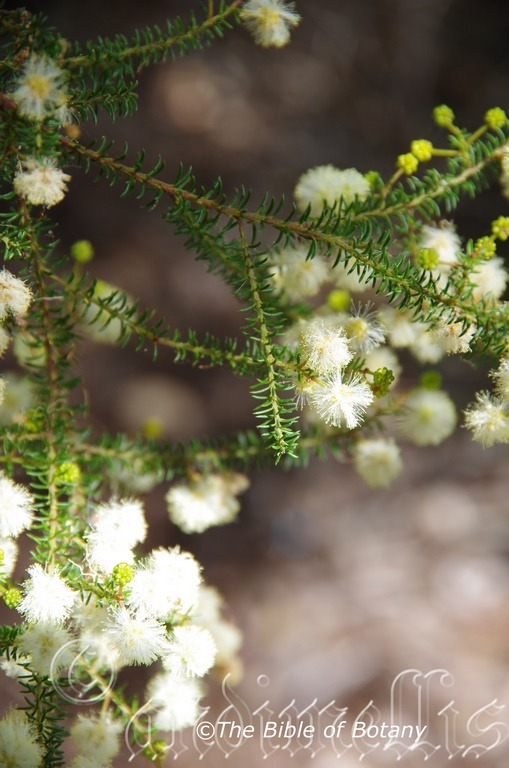
Rosser Botanic Gardens Qld.
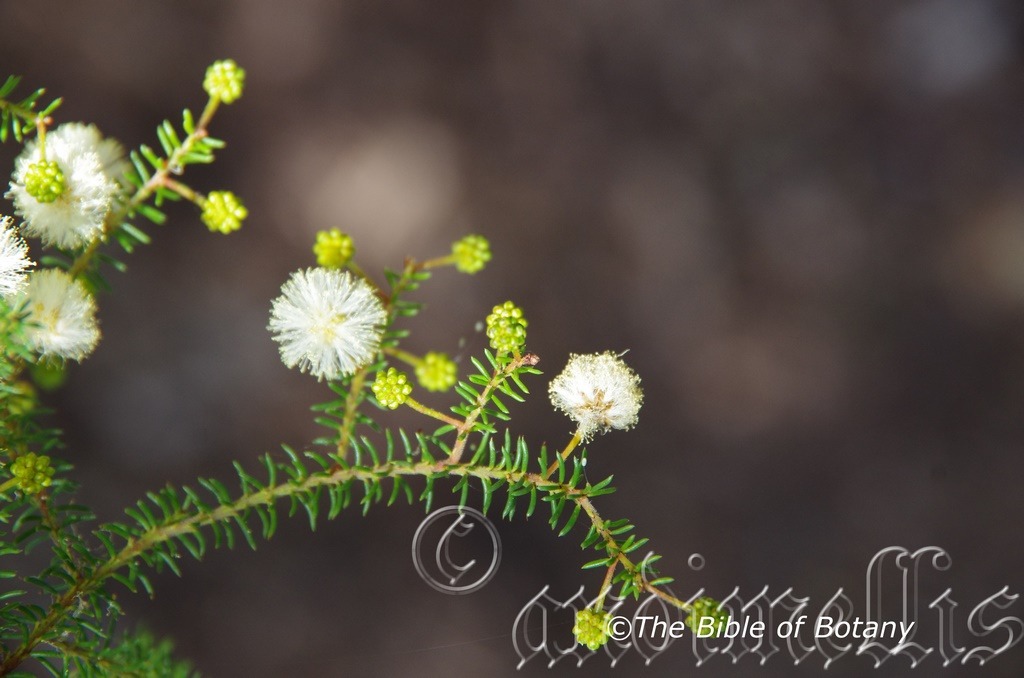
Rosser Botanic Gardens Qld.

Rosser Botanic Gardens Qld.
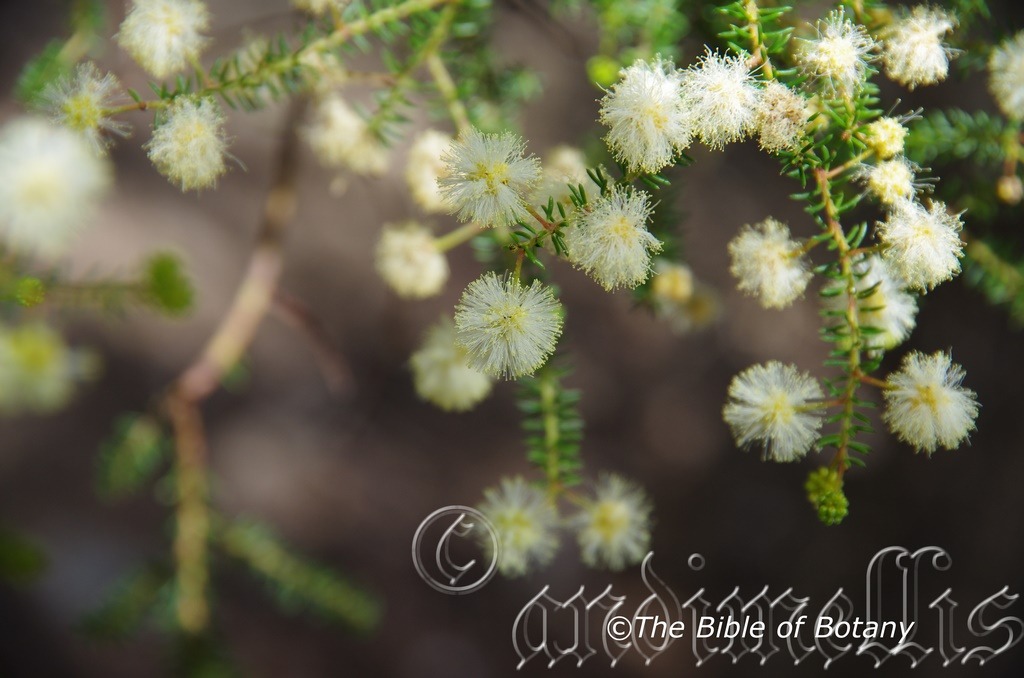
Rosser Botanic Gardens Qld.
Acacia brunioides
Classification:
Class: Magnoliophyta
Order: Fabales
Family: Fabaceae
Subfamily: Mimosoideae
Genus: From ἀκακία, which is Ancient Greek or later Acanthium, which is Latin for to have a sharp point. It refers to the first species named by Dioscorides the Greek Botanist for the Egyptian plant Acacia arabica, which has very sharply pointed spines.
Specie: Is named in honour of Doctor Cornelius Brun, who was a Russian apothecary and avid plant collector in Russia and E?dos/Oides, which is Ancient Greek for alike or similar to. It refers to plants that appear similar to the Brun genus from South Africa.
Sub specie: Acacia brunioides subsp. brunioides. Is named in honour of Doctor Cornelius Brun, who was a Russian apothecary and avid plant collector in Russia and E?dos/Oides, which is Ancient Greek for alike or similar to.
Sub specie: Acacia brunioides subsp. granitica. From Granitica which is Latin for types of intrusive based rocks that decompompose down into rather course silica sands. It refers to plants, which prefer to grow on granitic sands or between Granite boulders.
Common Name: Brown Wattle.
Distribution:
Acacia brunioides subsp. brunioides is found south of Mount Fraser on the Scenis Rim in far south eastern Queensland to the Severn River near Glen Innes in north eastern New South Wales. It is mainly found on the Great Dividing Range.
Acacia brunioides subsp. granitica is found south from Stanthorpe in far south eastern Queensland and Woodenbong to the Torrington Plateau in north eastern New South Wales. It is mainly found on the Great Dividing Range.
Habitat Aspect Climate:
Acacia brunioides prefer full sun to dappled sun light. It grows in dry sclerophyll forests and dry Eucalyptus forest heaths. The altitude generally ranges from 400 meters ASL to 1020 meters ASL but can be found close to sea level.
The temperatures range from minus 4 degrees in July to 38 degrees in January.
The rainfalls range from lows of 800mm to 1400mm average per annum.
Soil Requirements:
Acacia brunioides prefers course sand, sandy loams or light gritty clays. The soils are derived from decomposed granites. The soil?s pH ranges from 4.5pH to 6pH. It does not tolerate water logged soils. None saline soils to moderately saline soils are tolerated.
Height & Spread:
Wild Plants:0.5m to 2.5m by 1m to 2.5m.
Characteristics:
Acacia brunioides grows as a compact erect or spreading shrub. The main stem is brown and glabrous while the terete stems and branchlets are grey-green to greenish-brown and sparsely to moderately covered in white puberulent hairs.
Acacia brunioides?s bright green phyllodes are spirally arranged to irregularly whorled or at times clustered. The straight or slightly curve, terete to sub terete phyllodes measure 3mm to 12mm in length by 0.5mm to 1mm in width. The bases are sessile while the apexes are acute or obtuse-mucronate. The concolourous phyllodes are bright mid green to grass-green or sub glaucous and glabrous. The mid vein and lateral veins are obscure. The margins are entire and curve upwards from the mid vein. There is a conspicuous gland adjacent to the pulvinus which measure 0.3mm to 0.5mm in length.
Acacia brunioides?s inflorescences are a single globose head born from the phyllode axils. The peduncles are glabrous or sparsely covered in white, hirtellus hairs and measure 5mm to 15mm in length. There are 20 to 27 individual flowers in the globose head which measure 7mm to 10mm in diameter.
The individual flowers are 5 merous. The pale olive-yellow calyxes and 5 calyx lobes are erect and glabrous. The petals are pale creamy yellow to bright yellow or rarely white and orbicular while the stamens are pale yellow to bright yellow or rarely white. The flowers appear from mid-September to November.
The fruits of Acacia brunioides are straight, flat, usually with straight margins and slightly to moderately constrict between some seeds. The pods measure 15mm to 60mm in length by 6mm 15mm in width. The green thinly coriaceous pods to chartaceous turn reddish-brown and are glabrous when ripe. The seeds are transverse to oblique with a filiform funicle.
Confusing Subspecies Varieties:
Acacia brunioides subsp. brunioides phyllodes measure 3mm to 10mm in length with an acute apex. The peduncles measure 5mm to 11mm in length and are equal to the phyllodes. The pods measure 8mm to 12mm in width.
Acacia brunioides subsp. granitica phyllodes measure 5mm to 12mm in length with an acute apex. The peduncles measure 4mm to 13mm in length and are equal or longer the phyllodes. The pods measure 9mm to 15mm in width.
Wildlife:
Acacia brunioides?s flowers are attractive to native bees.
Cultivation:
Acacia brunioides is a beautiful medium shrub that looks great in full sun. Best used as a specimen shrub in the center of a bed or used as a hedge row where it reacts beautifully to periodic light pruning. In an open sunny position Acacia brunioides will grow from 1.5 meters to 2 meters in height by 1 meter to 2 meters in diameter.
Two, three or more planted back from a bend will become a very strong focal point when in flower, gain a lot of attention whether you are coming or going because of the fresh clean look of the foliage even in the driest of times. It can be tip pruned if a smaller shrub is required. It responds well to tip pruning recovering quickly and often increasing the number of flowers in the following season.
Place it in the midground or background with larger leaf plants behind, and fine leaf ground covers or annuals in front. Plants with pink, orange, red or purple flowers can be used in both the foreground and background with great effect. Plants with finer, soft foliages in pale green or blue-greys will also compliment the scene during periods when there are few flowers in the garden.
Acacia brunioides make good contributions to large heath gardens. Here it can be used as the larger growing plant scattered throughout the heath scene. When you design a flat heath garden which this Acacia is well suited don?t use contours to display the plants as heath lands are almost always flat or have a slight rise. Plants must be planted close together and be short so you can see over the tallest ones with the exception of one or two plants at the most. These will be feature plants. The idea is to achieve a feeling of expansive flatness. This can be achieved with using the Acacia brunioides?s green terete phyllodes blend into the scene admirably with finer pale green or soft grey to glaucous foliages. Use a lot of procumbent plants like Carpobrotus edulis or Hibbertia sp. . Mix them with other smaller shrubs so none of them dominate the scene but blend in to give a mosaic of foliage colours that you oversee. Here I immediately think of Actinotis helianthi or Grevillea thelemanniana for two great contrasting foliage?s.
Propagation:
Seeds: Acacia brunioides seeds require treatment before sowing. Pre-treat by placing the seeds into a glass of boiling water. Allow the water to cool and leave to soak for several hours. Seeds that have not swollen repeat the exercise. Sow into a seed raising mix covering the seeds with 5mm of the mix.
Alternatively the seeds can be stratified in the vegetable crisper in a dry calico or paper bag for 6 to 8 weeks then in the freezer for a week prior to sowing.
When the seedlings are 20mm to 30mm tall, prick them out and plant them into 50mm native tubes using a seed raising mix.
Once the seedlings reach 150mm to 200mm in height plant them out into their permanent position. For mass plantings plant them at 2 meters to 4 meter centers or at 1.5 meter centers for a hedge row for best results.
Fertilize using Seaweed, fish emulsion or organic chicken pellets soaked in water on an alternate basis. Fertilize every two months until the plants are established then annually either in early September to March to maintain health, vitality and better flowering.
Further Comments from Readers:
Hi reader, it seems you use The Bible of Botany a lot. That’s great as we have great pleasure in bringing it to you! It’s a little awkward for us to ask, but our first aim is to purchase land approximately 1,600 hectares to link several parcels of N.P. into one at The Pinnacles NSW Australia, but we need your help. We’re not salespeople. We’re amateur botanists who have dedicated over 30 years to saving the environment in a practical way. We depend on donations to reach our goal. If you donate just $5, the price of your coffee this Sunday, We can help to keep the planet alive in a real way and continue to bring you regular updates and features on Australian plants all in one Botanical Bible. Any support is greatly appreciated. Thank you.
In the spirit of reconciliation we acknowledge the Bundjalung, Gumbaynggirr and Yaegl and all aboriginal nations throughout Australia and their connections to land, sea and community. We pay our respect to their Elders past, present and future for the pleasures we have gained.
Acacia celsa


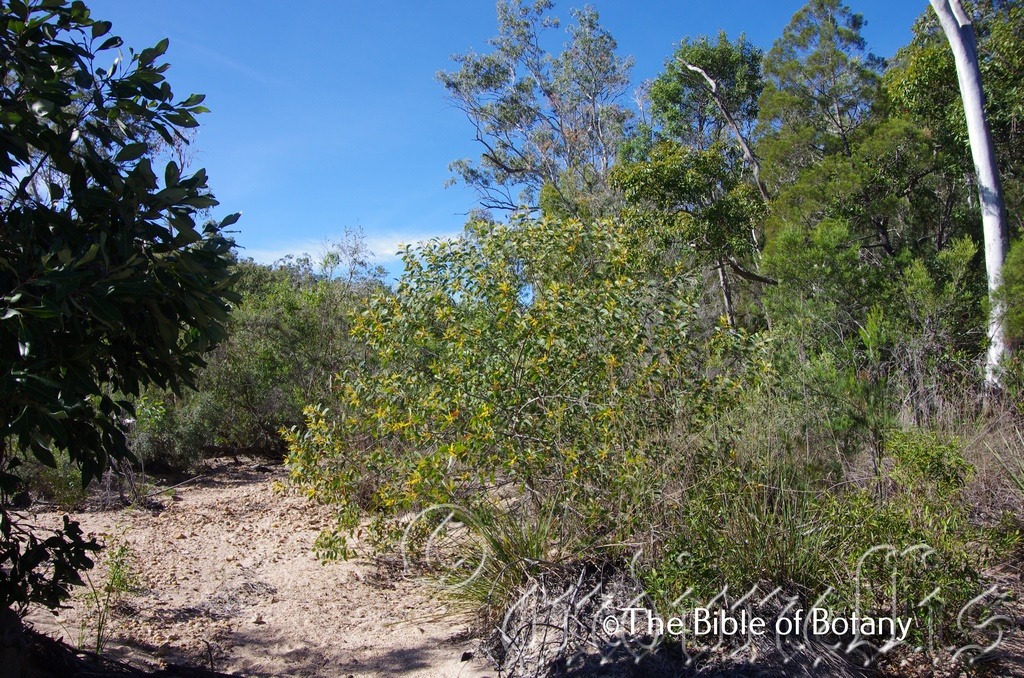
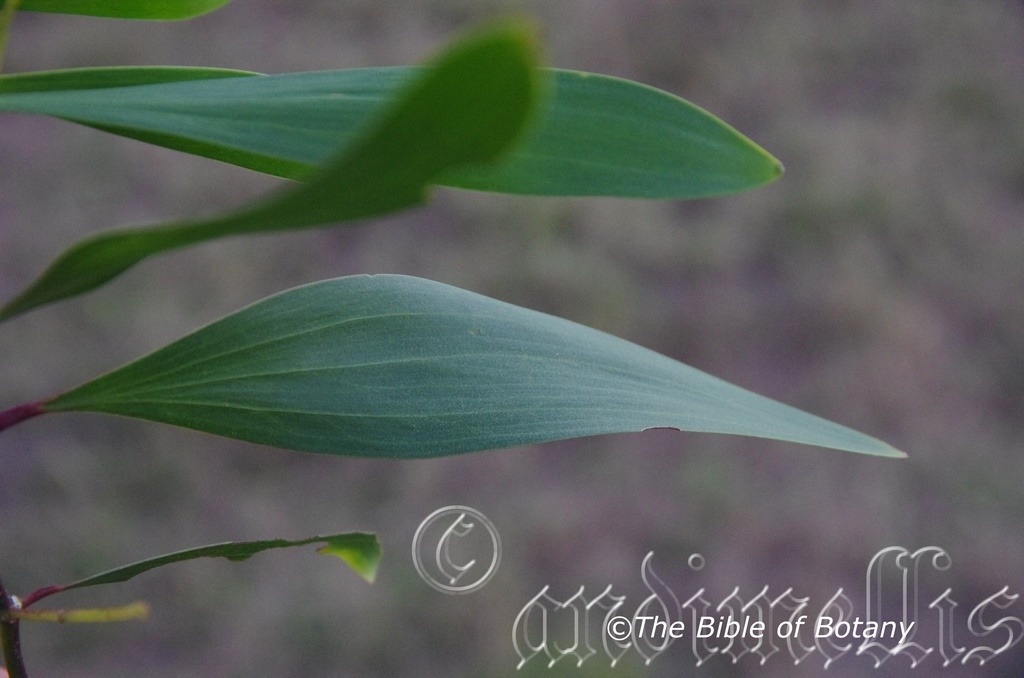






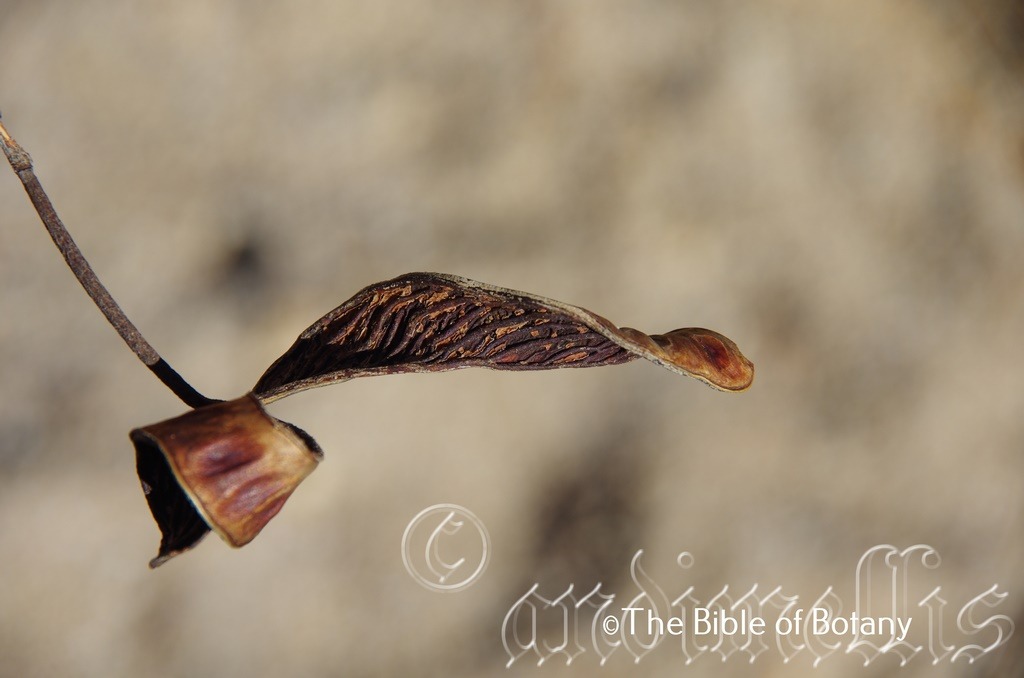
Classification:
Class: Magnoliophyta
Order: Fabales
Family: Fabaceae
Subfamily: Mimosoideae
Genus: From ἀκακία, which is Ancient Greek or later Acanthium, which is Latin for to have a sharp point. It refers to the first species named by Dioscorides the Greek Botanist for the Egyptian plant Acacia arabica, which has very sharply pointed spines.
Specie: From celsa, which is Latin for lofty, tall, haughty, proud or arrogant. It refers to plants which stand out over other plants in its habitat. From celsa, which is Latin for lofty, tall, haughty, proud or arrogant. It refers to plants which stand out over other plants in its habitat.
Sub specie:
Common Name: Wattle, Hickory, Salwood, Brown Acacia Tree; Brown Salwood, Black Wattle, Brush Ironbark Wattle or Hickory Wattle.
Distribution:
Acacia celsa is restricted to an area east of the Great Dividing Range south from Cape Melville on Sweetwater creek to Townsville. There are two small disjunct populations further south at White Mountan National OPark and north west of Mackay.
https://avh.ala.org.au/occurrences/search?taxa=Acacia+celsa#tab_mapView
Habitat Aspect Climate:
Acacia celsa grows in well developed rain forest and some of the drier, more seasonal rain forests, littoral rainforests behind the frontal dunes and along river and creek estuaries. The altitude ranges from 2 meters ASL to 1100 meters ASL
The temperatures range from 8 degrees in July to 40 degrees in January.
The rainfalls range from lows of 1200mm to an average of 3200mm annually.
Soil Requirements:
Acacia celsa prefer growing on quartzite loams, fine to course sandy loams or medium gritty clays. The soils are deep to skeletal overlying the parent rock such as granites, sandstones, basalt and accumulated sands. The soils range from a pH of 4.5 to pH6. They are not tolerant of water logged soils though water may lay on surface depressions after seasonal rains. Non saline soils to moderately saline soils are tolerated.
Height & Spread:
Wild Plants: 8m to 30m by 3m to 12m.
Characteristics:
Acacia celsa has a hard, deep grey fibrous bark.
celsa alternate leaves Crown rather spreading but thin with the leaves on the periphery.The falcate phylodes measure 60mm to 10mm in length by 9mm to 19mm in width. The mid green or slightly glaucous phylodes have thickened margins. There are 3 to 7 somewhat parallel, thickened, longitudinal parallel veins which are not anastomosing. There is one small marginal gland at the junction of the petiole and the blade.
The inflorescence of Acacia celsa are moderately dense, yellow spikes, which measure 20mm to 55mm in length. The scurfy peduncles measure 20mm to 70mm in length. The calyx measures 0.5mm to 1mm length and has five scurfy lobes, which measure 0.2mm to 0.3mm in length. The pale glabrous, pale yellow corolla measures 1.5mm to 2mm in length. The stamens measure 3mm in length while the ovary is covered in short pubescent hairs.
Acacia celsa somewhat woody pods are flat, prominently obliquely, and transversely veined. They measure 2mm to 10mm in length by 10mm to 20mm in width.
The black, glossy seeds are transversely oriented in the pods and measure, 5.5mm by 2.5mm. The funicle is pale grey, white or cream, rather flat and folded four or five times forming an aril-like structure beneath the seed.
Confusing Genre: Acacia celsa is part of a complex group and was formerly included in Acacia aulacocarpa. It is currently being revised and a number of new species will be described to accommodate the various entities previously included. Acacia celsa has an obvious difference in that its woody pods are curved, and are undulating.
Wildlife:
Old or weak plants of Acacia celsa are subject to borer attack.
Cultivation:
Acacia celsa is an interesting, fast growing small tree which should be more widely grown in semi-arid areas or coastal areas where the drainage is good and where the soils are medium to heavy clays. Garden subjects will grow into small trees from 5 meters to 8 meters in height by 2 meters to 4 meters in diameter with a light canopy when grown in the open.
In native gardens it can be used to add nitrogen to the soil and to help break up heavy clays making them more friable. It is an excellent base plant to protect more delicate plants giving light shade and plenty of flowers throughout the winter months. The foliage is not particularly attractive but with their light canopy allows the gardener to create a lower master piece of artistry below. Try prostrate red flowering Grevilleas, bright coloured annuals or a mixed bed with a mosaic of different coloured foliages and contrasting flower colours.
Garden beds would need to be open with plenty of space between plants to allow good air flow and plenty of light to reach the lower level plants. Crowding this type of foliage with other plants will see them lose all the effectiveness and will quickly become boring and bare as the plants commence dropping their lower leaves and branchlets. These make excellent mulch. Correct spacing will contrast the foliages better without one overpowering the other plants in the garden. It is best used as a single specimen plant.
If you are using it amongst rocks or around a small desert garden, plant them sparingly with large distances between each tree, to attain a barren scene, so not to make the area look cluttered or detract from the other features like the rocks. The use of annuals helps to attract the viewer to the permanent plants foliage as they are the dominant foliage you want people to notice in the patch. In the case of Acacia celsa you could substitute very small Grevillea sp. or even Verticordia sp. in lieu of the native annuals. Remember most annuals flower when Acacia celsa is resting during the summer and most Grevillea sp. will flower at the same time so a blend may be the way to go. Annuals mixed with Acacia celsa help to give small gardens depth and make them look larger than what they really are due to the small diameter of mature plants. It works well with Grevillea masonii other Grevilleas of similar size but contrasting foliages are the key to success with the flowers being a bonus. Plants will generally live for 8 or 15 years.
Propagation:
Seeds: Acacia celsa require treatment before sowing. Pre-treat by placing the seeds into a glass of hot water. Allow the water to cool and leave to soak for 8 to10 hours. Seeds that have not swollen repeat the exercise.
Sow into a seed raising mix. When the seedlings are 25mm to 50mm tall, prick them out and plant them into 50mm native tubes using a seed raising mix.
Once the seedlings reach 200 to 250mm in height plant them out into their permanent position. For mass plantings plant at 6 meter to 8 meter centers for the trees and 3 meter to 4 meter centers for the prostrate forms.
Fertilize using Seaweed, fish emulsion or organic chicken pellets soaked in water on an alternate basis. Fertilize every two months until the plants are established then annually either in early September to March to maintain health, vitality and better flowering.
Further Comments from Readers:
All information is included in good faith and has been thoroughly researched prior to printing. The website or the author does not warrant or guarantee the accuracy of any information on these pages, nor does the website or the author accept any responsibility for any loss arising from the use of the information found within. The views and opinions are strictly those of the author or those members who chose to actively participate in the contents herein.
Hi reader, it seems you use The Bible of Botany a lot. That’s great as we have great pleasure in bringing it to you! It’s a little awkward for us to ask, but our first aim is to purchase land approximately 1,600 hectares to link several parcels of N.P. into one at The Pinnacles NSW Australia, but we need your help. We’re not salespeople. We’re amateur botanists who have dedicated over 30 years to saving the environment in a practical way. We depend on donations to reach our goal. If you donate just $5, the price of your coffee this Sunday, We can help to keep the planet alive in a real way and continue to bring you regular updates and features on Australian plants all in one Botanical Bible. Any support is greatly appreciated. Thank you.
In the spirit of reconciliation we acknowledge the Bundjalung, Gumbaynggirr and Yaegl and all aboriginal nations throughout Australia and their connections to land, sea and community. We pay our respect to their Elders past, present and future for the pleasures we have gained.
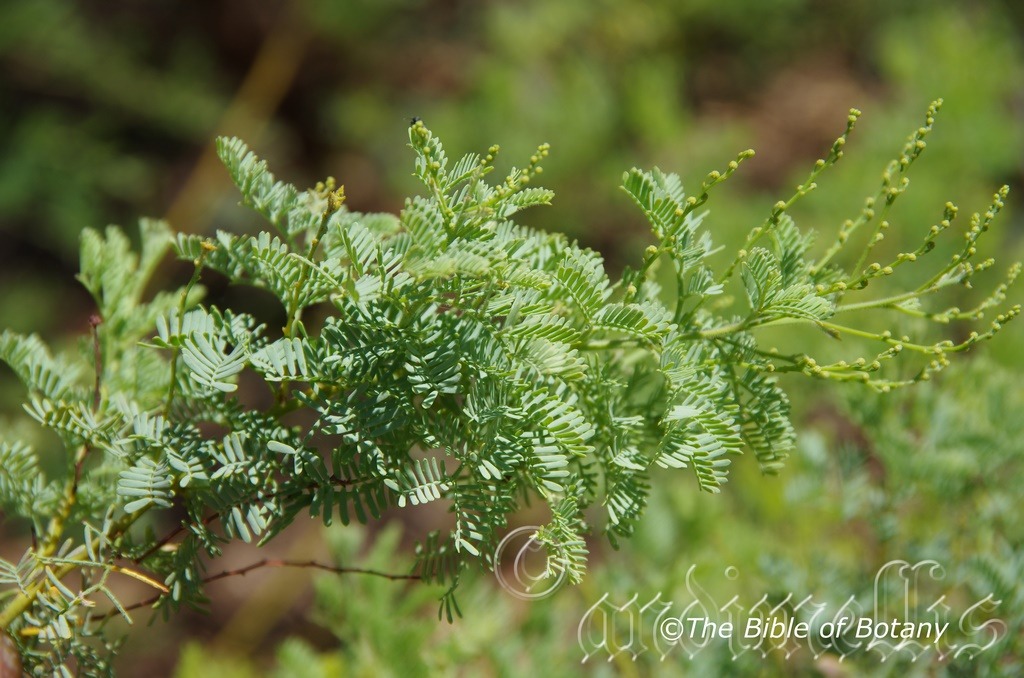

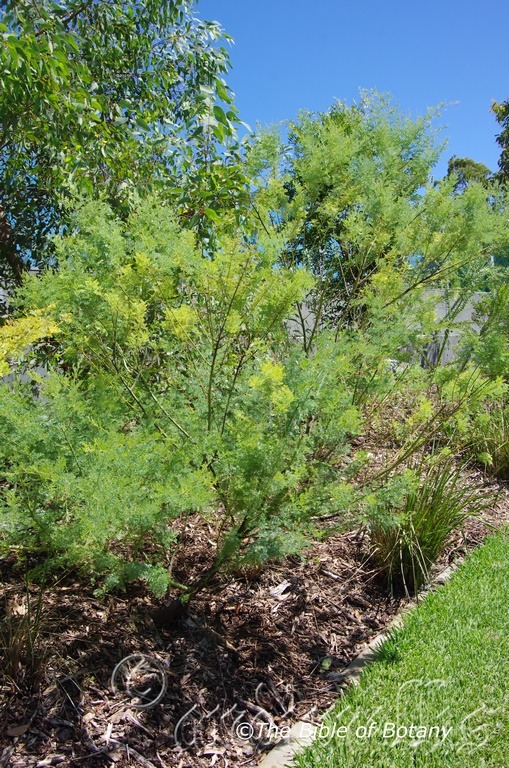
Acacia chinchillensis
Classification:
Class: Magnoliophyta
Order: Fabales
Family: Fabaceae
Subfamily: Mimosoideae
Genus: From ἀκακία, which is Ancient Greek or later Acanthium, which is Latin for to have a sharp point. It refers to the first species named by Dioscorides the Greek Botanist for the Egyptian plant Acacia arabica, which has very sharply pointed spines.
Specie: From Chinchilla, which is Latinized for the township in south east Queensland and ??nse, which is Latin for making a topographical place an adjective. It refers to plants which were first discovered and grow around Chinchilla.
Sub specie:
Common Name:
Distribution: Acacia chinchillensis is restricted to an area south south east of Barakula Forest west of the Great Dividing Range to Millmerran in south eastern Queensland.
https://avh.ala.org.au/occurrences/search?taxa=Acacia+chinchillensis#tab_mapView
Habitat Aspect Climate:
Acacia chinchillensis grows on flat plains amongst open ironbark Eucalyptus forests, Eucalyptus melanophloia and Casuarina woodland, Callitris columellaris. The altitude ranges from 450 meters ASL to 600 meters ASL
The temperatures range from 8 degrees in July to 40 degrees in January.
The rainfalls range from lows of 1200mm to an average of 3200mm annually.
Soil Requirements:
Acacia chinchillensis prefer to grow on in sandy or gravelly soils. The soils range from a pH of 4.5 to pH6. It is not tolerant of water logged soils though water may lay in surface depressions after seasonal rains. Non saline soils to moderately saline soils are tolerated.
Height & Spread:
Wild Plants: 0.5m to 2m by 0.8m to 2m.
Characteristics:
Acacia chinchillensis is a multistemmed shrub with a smooth, glaucous, grey-brown, greenish brown or yellow-brown trunk, branches and stems. The new growth is terete with some near inconspicuous ridges. They are moderately to densely covered in white pilose hairs.
The herbaceous or subcoriaceous leaves and leaflets are silvery green to pale greenish glaucous. The terete petiole is covered in short pilose hairs and measures 10mm to 60mm in length. There is a 1mm to 3mm orbicular gland at base of or just below lowest pair of pinnae. The terete rachis is covered in short pilose hairs and measures 5mm to 220mm in length often with a similar gland at base of the apical pair of pinnae. There are 2 to 4 pairs of pinnae measure 5mm to 20mm in length. The 5 to 11 pairs of pinnules are narrow oblanceolate to oblanceolate, sometimes with a sharp margin. The pinnules measure 2mm to 7mm in length by 0.5mm to 1mm in width, often with slightly recurved margins. They are glabrous or very sparsely covered in white pilose hairs near the apex and on the margins. The midvein is obscure. The base is rounded and almost sessile, while the apex is acute, bluntly apiculate or broadly rounded.
The inflorescences of Acacia chinchillensis are axillary racemes or mainly terminal false-panicles. The heads contain 11 to 22 individual golden or yellow ball flowers. The flowers appear from July to Sept.
The thinly coriaceous pods are often curved, brownish black, blue-pruinose, and sparsely covered in villous or pilose hairs and measure 40mm to 100mm in length by 4mm to 7mm in width.
Wildlife:
Acacia chinchillensis is unknown to the author.
Cultivation:
Acacia chinchillensis is an interesting, fast growing medium shrub which should be more widely grown in semi-arid areas west of the Great Dividing Range. Garden subjects will grow into small trees from 1.5 meters to 2.5 meters in height by 2 meters in diameter.
In native gardens it can be used to add nitrogen to the soil and to help break up light clays making them more friable. It is an excellent screen plant to protect more delicate plants giving light shade while breaking up winds. The foliage is particularly attractive and can be the basis in larger beds for a great mosaic of different coloured foliages and contrasting flower colours.
Garden beds would need to be open with plenty of space between plants to allow good air flow and plenty of light to reach the lower level plants so synonymous with arid plants . Crowding this type of foliage with other plants will see them lose all the effectiveness and will quickly succombe to borers or leaf drop. Correct spacing will contrast the foliages better without one overpowering the other plants in the garden. It is best used to give height and bredth by planting in discontinuous rows.
If you are using it amongst rocks or around a small desert garden, plant them sparingly with large distances between each tree, to attain a barren scene, so not to make the area look cluttered or detract from the other features like the rocks. The use of annuals helps to attract the viewers attention to the permanent foliages as it can be the dominant foliage without looking arrogant and overpowering. If you want people to notice the whole garden and not small nooks in a patch then this is an ideal plant. In the case of Acacia chinchillensis you could substitute very small Grevilleas or even Verticordia sp. in lieu of the native annuals. Remember most annuals flower when Acacia chinchillensis is resting during the summer and most Grevillea sp. will flower at the same time so a blend may be the way to go. Annuals mixed with Acacia chinchillensis help to give small gardens depth and make them look larger than what they really are due to the small diameter of mature plants. It works well with Grevillea masonii other Grevilleas of similar size but contrasting foliages are the key to success with the flowers being a bonus. Plants will generally live for 5 or 8 years.
Propagation:
Seeds: Acacia chinchillensis require treatment before sowing. Pre-treat by placing the seeds into a glass of hot water. Allow the water to cool and leave to soak for 8 to 10 hours. Seeds that have not swollen repeat the exercise.
Sow into a seed raising mix. When the seedlings are 25mm to 50mm tall, prick them out and plant them into 50mm native tubes using a seed raising mix.
Once the seedlings reach 200 to 250mm in height plant them out into their permanent position. For mass plantings plant at 6 meter to 8 meter centers for the trees and 3 meter to 4 meter centers for the prostrate forms.
Fertilize using Seaweed, fish emulsion or organic chicken pellets soaked in water on an alternate basis. Fertilize every two months until the plants are established then annually either in early September to March to maintain health, vitality and better flowering.
Further Comments from Readers:
All information is included in good faith and has been thoroughly researched prior to printing. The website or the author does not warrant or guarantee the accuracy of any information on these pages, nor does the website or the author accept any responsibility for any loss arising from the use of the information found within. The views and opinions are strictly those of the author or those members who chose to actively participate in the contents herein.
Hi reader, it seems you use The Bible of Botany a lot. That’s great as we have great pleasure in bringing it to you! It’s a little awkward for us to ask, but our first aim is to purchase land approximately 1,600 hectares to link several parcels of N.P. into one at The Pinnacles NSW Australia, but we need your help. We’re not salespeople. We’re amateur botanists who have dedicated over 30 years to saving the environment in a practical way. We depend on donations to reach our goal. If you donate just $5, the price of your coffee this Sunday, We can help to keep the planet alive in a real way and continue to bring you regular updates and features on Australian plants all in one Botanical Bible. Any support is greatly appreciated. Thank you.
In the spirit of reconciliation we acknowledge the Bundjalung, Gumbaynggirr and Yaegl and all aboriginal nations throughout Australia and their connections to land, sea and community. We pay our respect to their Elders past, present and future for the pleasures we have gained.
Acacia chrysotricha
Classification:
Class: Magnoliophyta
Order: Fabales
Family: Fabaceae
Subfamily: Mimosoideae
Genus: From ἀκακία, which is Ancient Greek or later Acanthium, which is Latin for to have a sharp point. It refers to the first species named by Dioscorides the Greek Botanist for the Egyptian plant Acacia arabica, which has very sharply pointed spines.
Specie: From Khr??seos, which is Ancient Greek or Chr?seum, which is Latin for a golden colour and Trichos, which is Ancient Greek for a beard. It refers to the golden colour of the hairs on the stems, rachis and petioles.
Sub specie:
Common Name: Bellinger River wattle or Newry wattle.
Distribution:
Acacia chrysotricha is restricted to small populations along the Bellinger River south to Macksville in northern New South Wales.
Habitat Aspect Climate:
Acacia chrysotricha prefer part shade to dense shade. It grows below medium size to tall trees in moist sheltered positions in steep gullies. The altitude ranges from 40 meters ASL to 800 meters ASL
The temperatures range from minus 4 degrees in July to 39 degrees in January.
The rainfalls range from lows of 900mm to an average of 1700mm annually.
Soil Requirements:
Acacia chrysotricha prefer growing on quartzite loams, fine to course sandy loams or medium gritty clays. The soils are deep to skeletal overlying the parent rock. The soils range from a pH of 4.5 to pH6.They are not tolerant of water logged soils though water may lay on surface depressions after seasonal rains. Non saline soils to moderately saline soils are tolerated.
Height & Spread:
Wild Plants: 6m to 15m by 3m to 6m.
Characteristics:
Acacia chrysotricha’s larger stems are semi erect to semi spreading, deep brown, deeply fissured and slightly scabrous. The smaller stems are terete to sub terete with small ridges, bright pink to reddish-pink and densely covered in golden hirsute hairs which fade to a fawn.
Acacia chrysotricha‘s alternate leaves are bipinnate at irregular intervals along the stems. The main rachises, petioles, secondary rachises and petiolule are deep olive-green and covered in golden hirsute hairs. The main rachises measure 70mm to 100mm in length, petioles measure 0.6mm to 1mm in length while the secondary rachises measure 5mm to 140mm in length and the petiolule measure 0mm to 0.2mm in length. The pulvinus measures 1mm in length. The secondary rachises are semi pendulant while the opposite leaflets are angled towards the apexes.
There is a single ovate jugary gland positioned just below the basal 1 to 3 pairs of leaflets and or on the upper 1 to 3 pairs of leaflets. Interjugary glands are absent or rarely 1.There are 8 to 18 pairs of secondary rachises along the main rachises with the terminal pair being the longest and the basal pair being the shortest. There are 6 to 25 pairs of leaflets on the secondary rachises. The narrowly oblong to elliptical-oblong or lanceolate leaflets measure 3mm to 4.5mm in length by1mm to 1.5mm in width. The bases are rounded to truncate while the apexes are acute to obtuse. The discolourous laminas are olive-green and sparsely covered in covered in golden or white hirsute hairs which are mainly on the midvein and margins or sub ciliate. The margins are entire. The veins are obscure to faintly visible.
The inflorescence of Acacia chrysotrichaare born singularly in globose heads on a panicle along a raceme from the leaf axils. There are 5 to 11 panicles on a raceme while there are 2 to 7 heads to a panicle with 15 to 30 individual flowers in a globose head. The slender, olive-green main rachises and peduncles are covered in white to golden hirsute hairs. The main rachises measure 40 to 130mm in length while the peduncles measure 12mm to 50mm in length.
The individual flowers are 5 merous. The 5 pale lemon-green calyx?s lobes are erect and glabrous. The orbicular petals are pale yellow to bright yellow while the stamens are pale yellow to deep golden yellow. The individual flowers including the bright yellow stamens measure 2.2mm to 3.5mm in length and measure 4.5mm to 7mm in diameter overall. Acacia chrysotricha?s sweet scented creamy yellow to bright yellow flowers appear from early July through to mid-August.
Acacia chrysotricha fruits are long, straight to slightly curved, flat, papery thin and coriaceous pods. The pods are slightly constricted between the seeds and along the margins. The pods are densely covered in golden hirsute hairs and measure 30mm to 100mm in length by 4mm to 6mm in width. The olive-green pods turn brown to brown-grey externally and pinkish-brown internally and glabrous when ripe.
The ovoidal, longitudinal seeds are black and glossy with a long, white funicle which is tapering and completely encircles the seed. The 3 to 9 seeds per pod measure 4mm to 4.5mm in length by 2.5mm to 3mm diameter. The funicle measures 11mm to 15mm in length.
Wildlife:
Old or weak plants of Acacia chrysotricha are subject to borer attack.
Cultivation:
Acacia chrysotricha is an interesting small shrub which looks at home in any bush garden or large rockery in semi-arid areas or coastal areas from warm temperate zones to cool tropical areas where the drainage is good and where the soils are fatty sandy loams to medium sandy clays. Garden subjects will grow into medium spreading shrubs in a bush setting in the open without much competition. In the garden they will grow from 6 meters to 10 meters in height by 5 meters to 7 meters in diameter when grown in the open.
In native gardens it can be used to add nitrogen to the soil and to help break up heavy clays making them more friable. They are an excellent starter plant to give quick growth protect more delicate plants and good flowering displays throughout the year. The foliage is attractive and rather dense while nitrogen fixation it is a vital part of the garden until other plants become established. Try prostrate red flowering Grevilleas, bright coloured annuals or a mixed bed with a mosaic of different coloured foliages between clumps of Acacia chrysotricha.
Garden beds would need to be open with plenty of space between the plants to allow good air flow and plenty of light to reach all the understory plants. Crowding this type of foliage with other plants will see them lose all the effectiveness of shape and leaf patterns as they grow together and merge into a single unit of untidiness. Correct spacing will contrast the foliages better and the silhouette of the trees without one overpowering the other plants in the garden. For mass planting space the plants with at least 10 meters to 12 meters centers if you are considering them as the main feature.
If you are using them amongst boulders in the garden on slopes, plant them sparingly with the above Spacings to attain an attractive scene and not to make the area look cluttered or detract from the other features like the boulders. 4 or 5 in an area of 800 square meters would be ample. 4 plants separately planted or plant 2 close together and separate the other 2 or 3 on the far side of the bed to give width and depth where you want it. The use of annuals helps to attract the viewer to the permanent plants foliage as they are the dominant foliage you want people to notice in the patch. In the case of Acacia chrysotricha you could substitute the annuals with very small Grevillea, Crowea, Hovea or even Verticordia species. Remember most annuals flower when Acacia chrysotricha is resting during the summer and most Grevilleas Crowea, Hoveas and Verticordia species will flower at the same time so a blend may be the way to go. Annuals mixed with Acacia chrysotricha help to give small gardens depth and make them look larger than what they really are due to the small diameter of mature plants. It works well with Grevillea masonii other Grevilleas of similar size but contrasting foliages are the key to success with the flowers being a bonus. Plants will generally live for 15 or 20 years though the plants will start to deteriate from their absolute best after 12 years and become subject to borer.
Propagation:
Seeds: Acacia chrysotricha require treatment before sowing. Pre-treat by placing the seeds into a glass of hot water. Allow the water to cool and leave to soak for 8 to10 hours. Seeds that have not swollen repeat the exercise.
Sow into a seed raising mix. When the seedlings are 25mm to 50mm tall, prick them out and plant them into 50mm native tubes using a seed raising mix.
Once the seedlings reach 200mm to 250mm in height plant them out into their permanent position. For mass plantings plant at 2.5 meter to 3 meter centers for a quick growing small hedge.
Fertilize using Seaweed, fish emulsion or organic chicken pellets soaked in water on an alternate basis. Fertilize every two months until the plants are established then annually either in early September to March to maintain health, vitality and better flowering.
Further Comments from Readers:
Hi reader, it seems you use The Bible of Botany a lot. That’s great as we have great pleasure in bringing it to you! It’s a little awkward for us to ask, but our first aim is to purchase land approximately 1,600 hectares to link several parcels of N.P. into one at The Pinnacles NSW Australia, but we need your help. We’re not salespeople. We’re amateur botanists who have dedicated over 30 years to saving the environment in a practical way. We depend on donations to reach our goal. If you donate just $5, the price of your coffee this Sunday, We can help to keep the planet alive in a real way and continue to bring you regular updates and features on Australian plants all in one Botanical Bible. Any support is greatly appreciated. Thank you.
In the spirit of reconciliation we acknowledge the Bundjalung, Gumbaynggirr and Yaegl and all aboriginal nations throughout Australia and their connections to land, sea and community. We pay our respect to their Elders past, present and future for the pleasures we have gained.



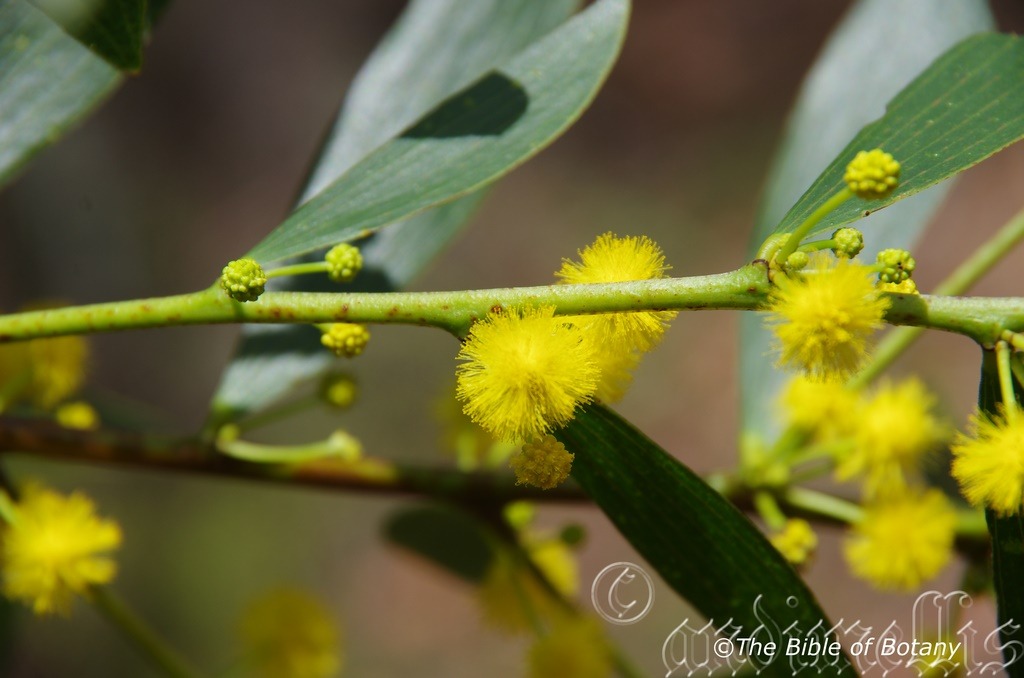
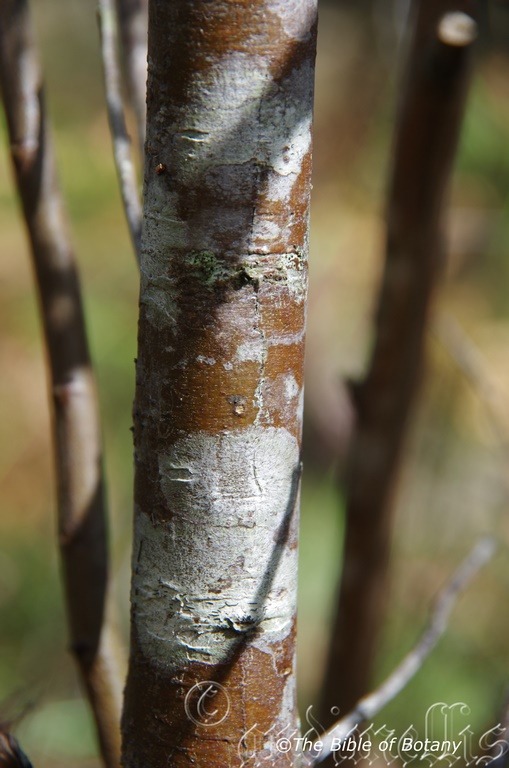
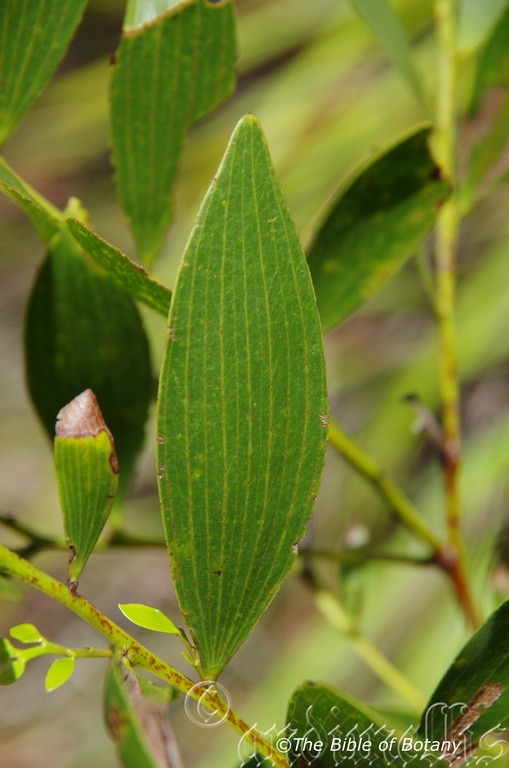
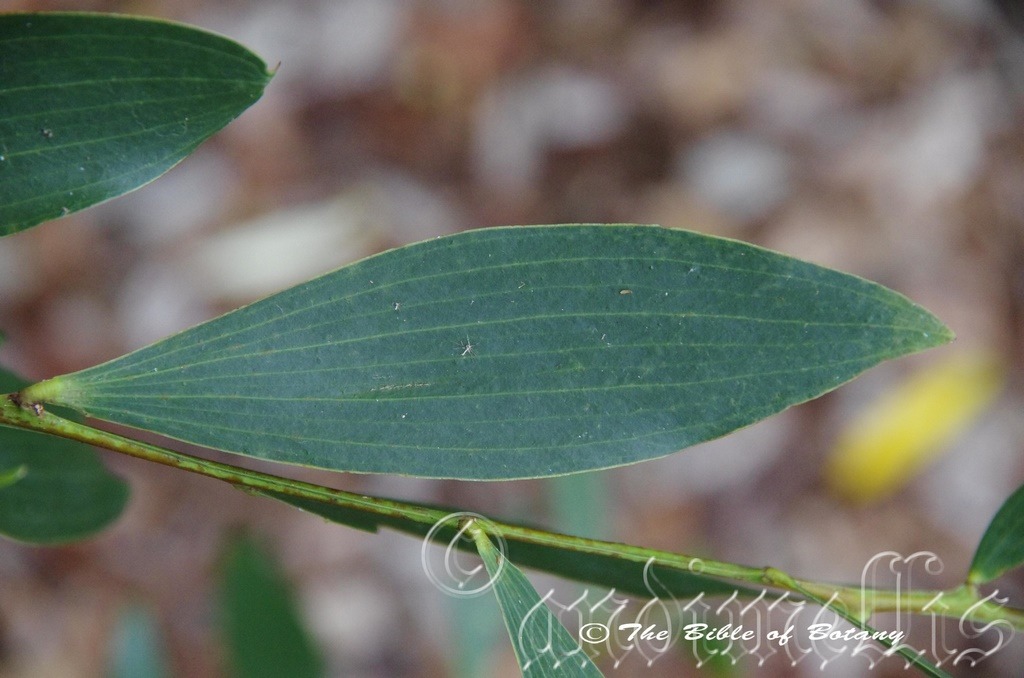

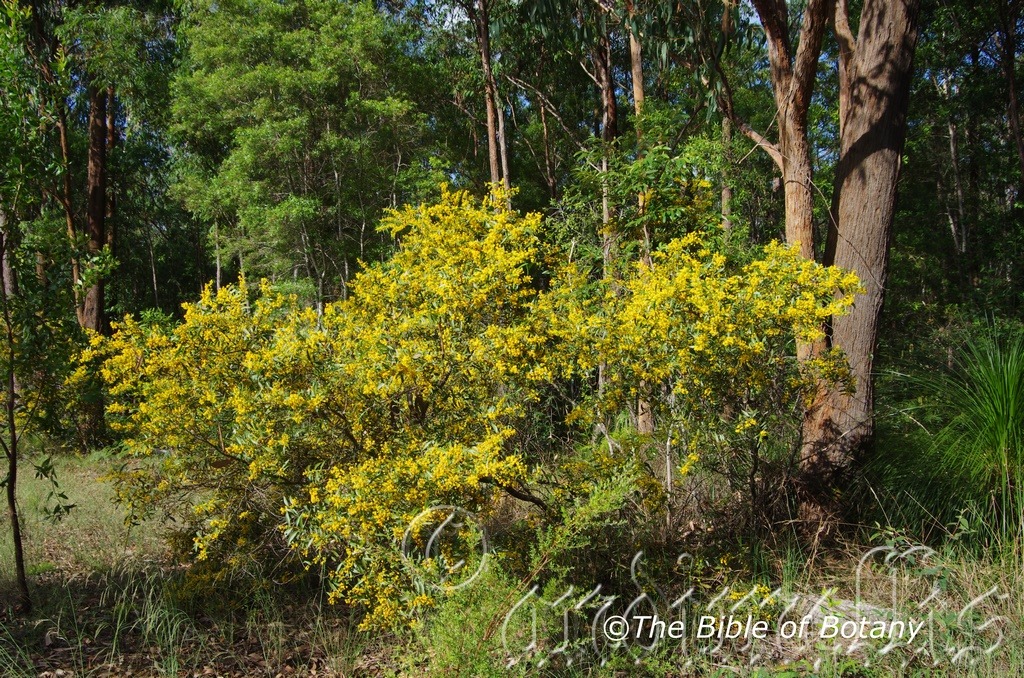
The Pinnacles NSW.

The Pinnacles NSW.

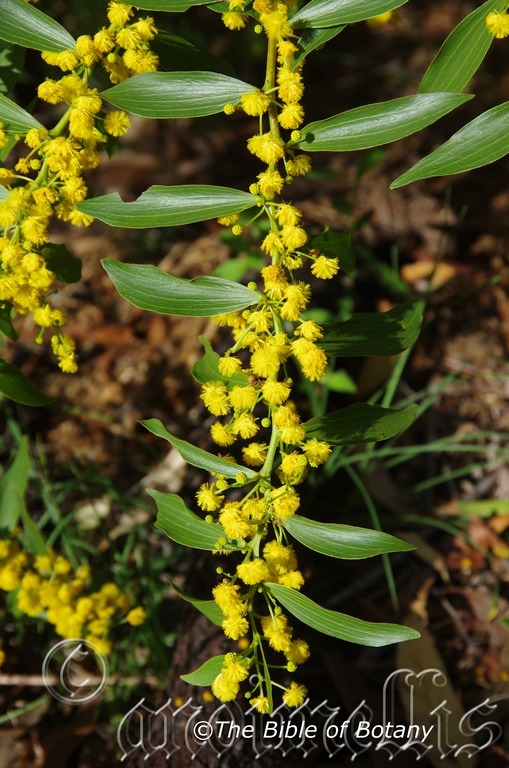
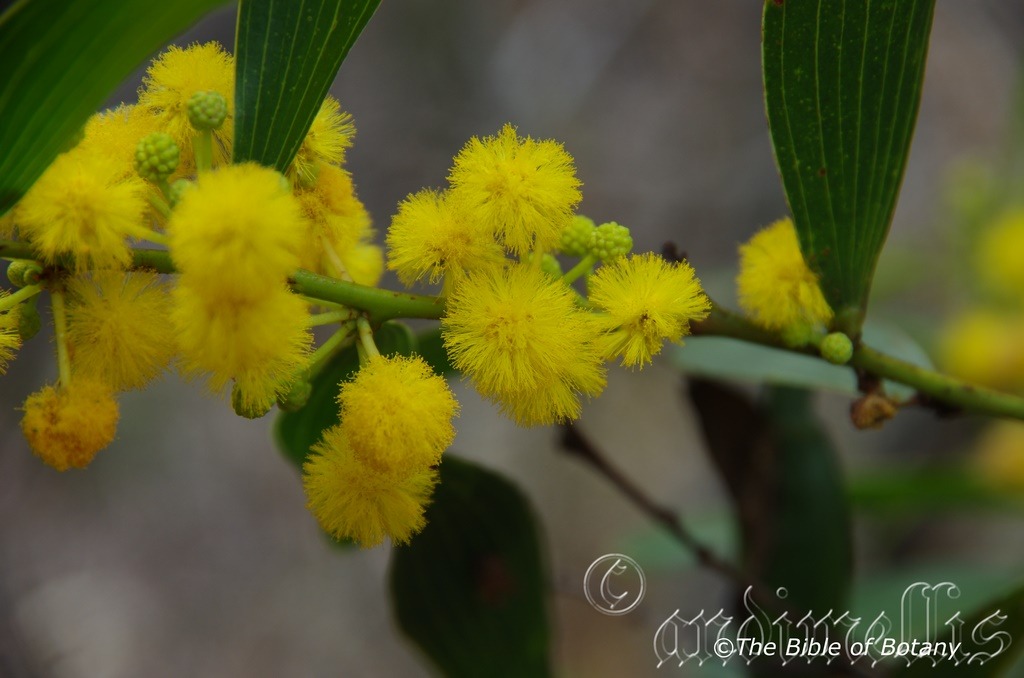

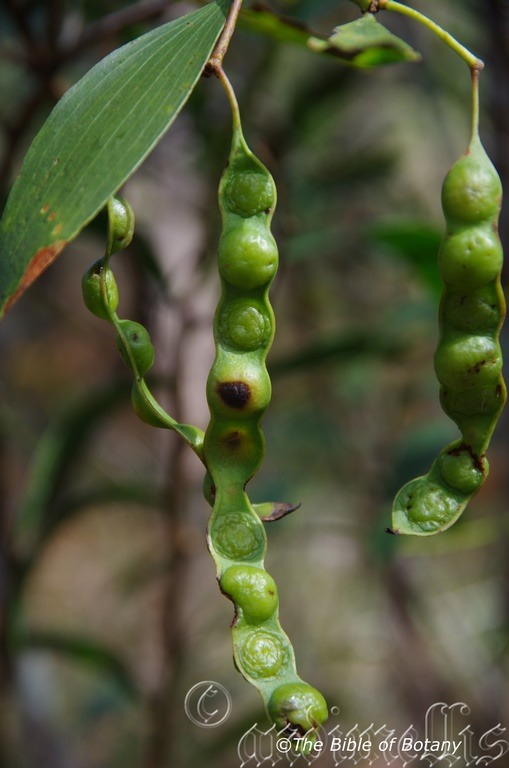



The Pinnacles NSW.
Acacia complanata
Classification:
Class: Magnoliophyta
Order: Fabales
Family: Fabaceae
Subfamily: Mimosoideae
Genus: From ἀκακία, which is Ancient Greek or later Acanthium, which is Latin for to have a sharp point. It refers to the first species named by Dioscorides the Greek Botanist for the Egyptian plant Acacia arabica, which has very sharply pointed spines.
Specie: From Complanata, which is Latin for flat or to make level. It usually refers to the stems being flattened.
Sub specie:
Common Name: Flat stem wattle.
Distribution:
Acacia complanata is found south from Eaglefield and Jericho in central Queensland to the Coffs Harbour in New South Wales with a disjunct population farther south on the Torrington Plateau. It is found on the Western Slopes, on the Great Dividing Range to the coastal ranges.
https://avh.ala.org.au/occurrences/search?taxa=Acacia+filicifolia#tab_mapView
Habitat Aspect Climate:
Acacia complanata grows in full sun to light dappled shade. It grows in dry schlerophyll forests, open Eucalyptus forests and woodland heaths. The altitude ranges from 25 meters ASL to 600 meters ASL
The temperatures range from minus 3 degrees in July to 38 degrees in January.
The rainfalls range from a low of 400mm to an average of 1550mm annually.
Soil Requirements:
Acacia complanata prefer poor soils to better quality peaty sands, sandy loams, light fatty clays and gravelly loams. The soils are usually derived from decomposed sandstones, granites or accumulated beach sands or at times metamorphic rocks. The soil?s pH ranges from 5pH to 6.5pH. It does not tolerate water logged soils. None saline soils to moderately saline soils are tolerated.
Height & Spread:
Wild Plants: 2m to 4m by 2m to 3.5m
Characteristics:
Acacia complanata grows as an erect to spreading medium shrub to small tree. The main stem or trunk is grey-brown to grey and glabrous while the branchlets are flattened or winged, zigzagged and glabrous.
Acacia complanata?s elliptic to narrow elliptic, straight to slightly curve coriaceous phyllodes measure 50mm to 100mm in length by 10mm to 30mm in width. The bases taper to the pulvinus while the apexes are tapering-obtuse. The concolourous phyllodes are grey-green and glabrous. The laminas are flat while the margins are entire. The 5 or 9 longitudinal veins are prominent on both laminas and have an open reticulate venation between. There is a single gland near the base above the pulvinus which measures 2mm to 3mm in length.
Acacia complanata‘s have 4 to 8 globose heads on a loose raceme born from the phyllode axils. The peduncles and rachises are dull olive green and glabrous. The peduncles measure 8mm to 12mm in length.
The 35 to 45 individual flowers in a head are 5 merous. The pale olive-yellow calyxes and 5 calyx lobes are erect and glabrous. The ovate petals and stamens are bright yellow, while the individual flowers measure 6mm to 9mm in length by 3mm to 4mm in width. Acacia complanata‘s flowers appear from November to early April.
Acacia complanata fruits are straight or twisted pods. The pods are terete over seeds which alternate on each side of the longitudinal axis and are slightly to moderately constrict between the seeds. The green pods turn grey-brown when ripe. The coriaceous pods are finely reticulate and measure 80mm to 150mm in length by 6mm by10mm in diameter. The white funicle expands at one end of the seed. The oblong seeds are obliquely positioned in the pods and measure 3mm to 4mm in length by 2mm to 2.5mm in diameter.
Wildlife:
Acacia complanata wildlife is host to the parasitic plant Dendrophthoe vitellina and in return supports the Mistletoe bird Dicaeum hirundinaceum.
Odd trees are often denuded by the bag-shelter moth or processionary caterpillar, Ochrogaster lunifera.
Cultivation:
Acacia complanata is an interesting medium shrub to small tree which looks at home in any bush garden along the coast from warm temperate zones to cool tropical areas where the drainage is good and where the soils are peaty sands to sandy loams or heavy clays. Garden subjects will grow into narrow medium trees where they produce a beautiful grey trunk dissimilar to most other trees when grown in the open as the main feature. In the garden they will grow from 3 meters to 4 meters in height by 2 meters to 3 meters in diameter when grown in the open.
In native gardens they can be used to add nitrogen to the soil and are excellent specimens for breaking up heavy clays making them more friable. It is an excellent starter plant to give quick growth protect more delicate plants and good flowering displays throughout the summer months. The foliage though not individually attractive is appealing and rather dense while the nitrogen fixation on the roots is a vital part of the garden until other plants become established. Try prostrate red flowering Grevillea sp., bright coloured annuals or a mixed bed with a mosaic of different coloured foliages between clumps of Acacia complanata.
Garden beds would need to be open with plenty of space between the plants to allow good air flow and plenty of light to reach all the understory plants. Crowding this type of foliage with other plants will see a closed canopy develop with the trees growing upright and spindly. Correct spacing will contrast the foliages better and the silhouette of the trees without one overpowering the other plants in the garden. For mass planting space the plants with at least 5 meters to 6 meters centers if you are considering them as the main feature.
Propagation:
Seeds: Acacia complanata seed requires treatment before sowing. Pre-treat the seeds by placing the seeds into a glass of hot water. Allow the water to cool and leave to soak for 10 hours. Seeds that have not swollen repeat the exercise.
Sow into a seed raising mix. When the seedlings are 25mm to 50mm tall, prick them out and plant them into 50mm native tubes using a seed raising mix.
Allow the plants to dry out before re watering.
Once the seedlings reach 200mm to 250mm in height plant them out into their permanent position.
Fertilize using Seaweed, fish emulsion or organic chicken pellets soaked in water on an alternate basis. Fertilize every two months until the plants are established then annually in early September to March to maintain health, vitality and better flowering.
Further Comments from Readers:
All information is included in good faith and has been thoroughly researched prior to printing. The website or the author does not warrant or guarantee the accuracy of any information on these pages, nor does the website or the author accept any responsibility for any loss arising from the use of the information found within. The views and opinions are strictly those of the author or those members who chose to actively participate in the contents herein.
Hi reader, it seems you use The Bible of Botany a lot. That’s great as we have great pleasure in bringing it to you! It’s a little awkward for us to ask, but our first aim is to purchase land approximately 1,600 hectares to link several parcels of N.P. into one at The Pinnacles NSW Australia, but we need your help. We’re not salespeople. We’re amateur botanists who have dedicated over 30 years to saving the environment in a practical way. We depend on donations to reach our goal. If you donate just $5, the price of your coffee this Sunday, We can help to keep the planet alive in a real way and continue to bring you regular updates and features on Australian plants all in one Botanical Bible. Any support is greatly appreciated. Thank you.
In the spirit of reconciliation we acknowledge the Bundjalung, Gumbaynggirr and Yaegl and all aboriginal nations throughout Australia and their connections to land, sea and community. We pay our respect to their Elders past, present and future for the pleasures we have gained.

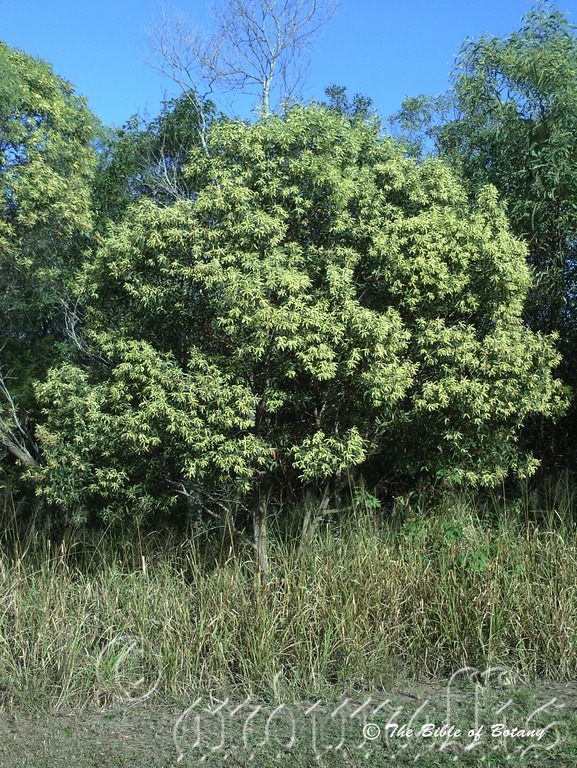
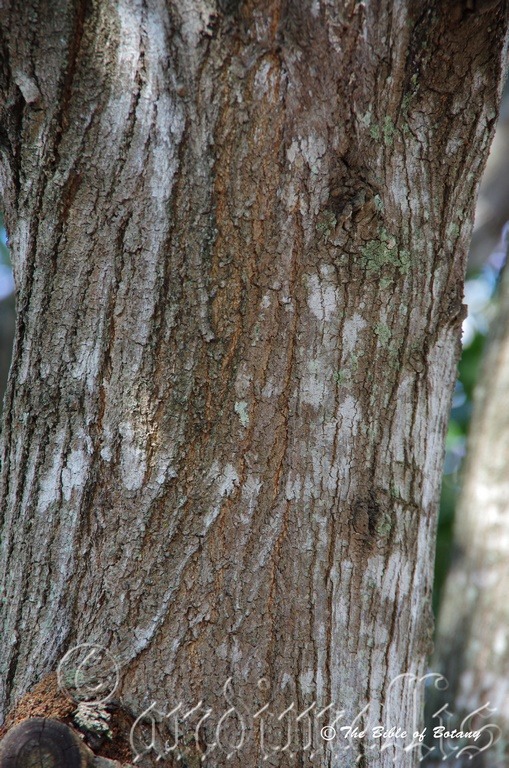


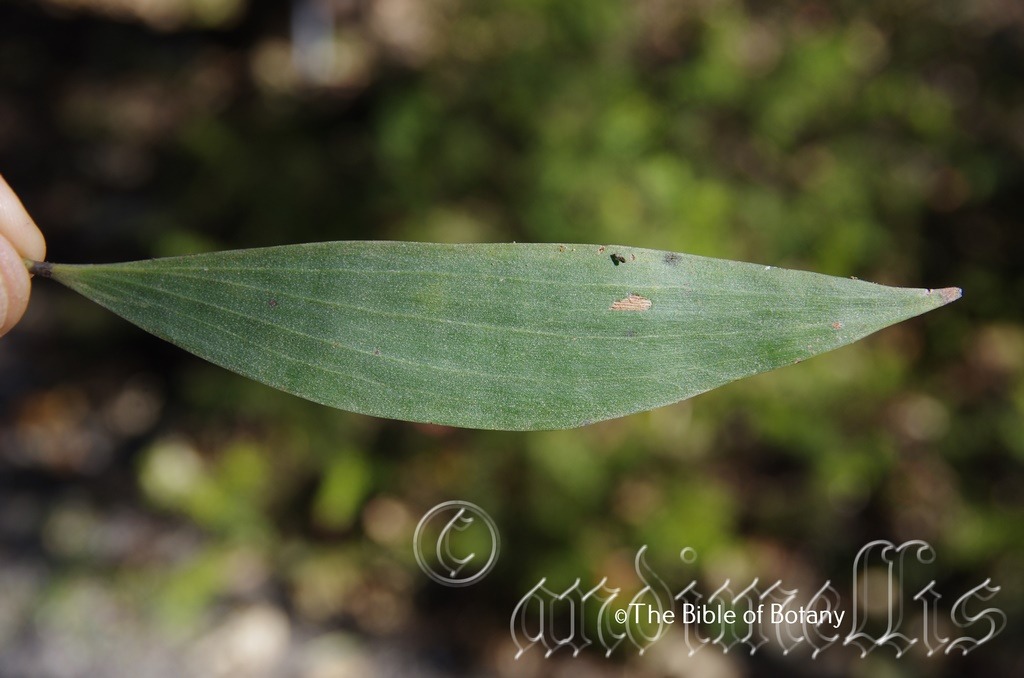



Acacia concurrens
Classification:
Class: Magnoliophyta
Order: Fabales
Family: Fabaceae
Subfamily: Mimosoideae
Genus: From ἀκακία, which is Ancient Greek or later Acanthium, which is Latin for to have a sharp point. It refers to the first species named by Dioscorides the Greek Botanist for the Egyptian plant Acacia arabica, which has very sharply pointed spines.
Specie: From Com/Con which is Greek/Latin for to come together or with and Currens which is Latin for running to a point. It refers to veins on the leaves or phyllodes which start together near the base, and again come together near the apex.
Sub specie:
Common Name: Curracabah.
Distribution:
Acacia concurrens is found south from Marybough in Queensland to the Hastings River in New South Wales. There is an isolated population further north near Rockhampton on the Fitzroy River.
https://avh.ala.org.au/occurrences/search?taxa=Acacia+concurrens#tab_mapView
Habitat Aspect Climate:
Acacia concurrens grows in full sun to light dappled shade. It grow in open Eucalyptus forests or open woodlands. It is a common species around Brisbane. The altitude ranges from 5 meters ASL to 300 meters ASL
The temperatures range from minus 2 degrees in July to 38 degrees in January.
The rainfalls range from a low of 550mm to an average of 1200mm annually.
Soil Requirements:
Acacia concurrens prefer poor soils to better quality sandy loams, light fatty clays, medium clays or light silts to heavy silts. The soils are usually derived from decomposed sandstones granites, brown basalts, black basalts, shales, metamorphic rocks, alluvial deposits or accumulated peaty beach sands. The soil?s pH ranges from 5pH to 6.5pH. It does not tolerate water logged soils. None saline soils to moderately saline soils are tolerated.
Height & Spread:
Wild Plants: 7m to 10m by 5m to 8m
Characteristics:
The trunk of Acacia concurrens is straight to about 50mm of its total height with grey, deep longitudinal fissured or corrugated bark. Old trees show some signs of early flanging at the base. The brown scurfy branchlets are angular to flattened and drab grey-green when they first emerge.
Acacia concurrens‘s coriaceous phyllodes are broad elliptical to narrow elliptical and sub falcate to falcate. They measure 100mm to 170mm in length by 12mm to 40mm in width. The bases are cuneate to tapering while the apexes are narrow acute. The concolourous phyllodes are grey-green and glabrous. The margins are entire with the upper margin being curved while the lower margin is relatively straight. There are 3 or 4 longitudinal veins more prominent than the others with the lower two converging 8mm to 10mm from the phyllode pulvinus. The pulvinus measures 5mm to 9mm in length.
Acacia concurrens‘s 2 cylindrical racemes are born from the phyllode axils. The peduncles and rachises are dull olive green and glabrous. The peduncles measure 5mm to 8mm in length while the rachises measure 50mm to 100mm in length.
The individual flowers are 5 merous. The pale olive-yellow calyxes and 5 calyx lobes are erect and glabrous. The lanceolate petals are pale creamy yellow to pale yellow while the stamens are pale yellow. Acacia concurrens?s flowers appear from mid-July to late September.
Acacia concurrens pods are curved to twisted or coiled 1 to 2 times. The green pods turn grey-brown when ripe. The pods are slightly to strongly constrict between the seeds, coriaceous, longitudinally wrinkled and brittle. They measure 60mm to 125mm in length by 2.5mm by 4.5mm in width. The white aril is folded several times at one end of the seeds. The oblong seeds measure 3mm to 4mm in length by 2mm to 2.5mm in diameter.
Wildlife:
This is an ideal plant for the control of soil erosion and nitrogen fixation which it is most useful. The Tailed Emperor Butterfly’s larvae have been seen on the trees at odd times.
Acacia concurrens supports a large variety of small beetles and butterflies. It plays host for larvae of Blue Jewel, (Hypochrysops delicia) beetles. Butterflies include the Emerald Hairstreak (Jalmenus evagoras), Common Imperial Hairstreak (Jalmerus evagoras subsp. evagoras), and Stencilled Hairstreak (Jamenus Ictinus). The flowers attract Felders line Blue (Prosatas felderi) Small purple line-blue, (Prosatas dubiosa) and Glistening Blue (Sahulana scintillate).
www. saveourwaterwaysnow. com. au
The native bee has been seen foraging pollen from the flowers.
For the cicada lovers this tree is host to the green cicada (Cicadetta oldfieldi)
Cultivation:
Acacia concurrens is an interesting tree which looks at home in any bush garden along the coast from warm temperate zones to cool tropical areas where the drainage is good and where the soils are fatty sandy loams to heavy clays. Garden subjects will grow into narrow medium trees where they produce a beautiful grey trunk dissimilar to most other trees when grown in the open as the main feature. In the garden they will grow from 7 meters to 12 meters in height by 5 meters to 6 meters in diameter when grown in the open.
In native gardens it can be used to add nitrogen to the soil and are excellent specimens for breaking up heavy clays making them more friable. It is an excellent starter plant to give quick growth protect more delicate plants and good flowering displays throughout the winter months. The foliage though not individually attractive is appealing and rather dense while nitrogen fixation it is a vital part of the garden until other plants become established. Try prostrate red flowering Grevilleas, bright coloured annuals or a mixed bed with a mosaic of different coloured foliages between clumps of Acacia concurrens.
Garden beds would need to be open with plenty of space between the plants to allow good air flow and plenty of light to reach all the understory plants. Crowding this type of foliage with other plants will see a closed canopy develop with the trees growing upright and spindly. Correct spacing will contrast the foliages better and the silhouette of the trees without one overpowering the other plants in the garden. For mass planting space the plants with at least 10 meters to 12 meters centers if you are considering them as the main feature.
Acacia concurrens performs exceptionally well in cultivation. Trees I planted in Nana Glen on poor, decomposed shale derived from brown basalt are over 20 years old, attained a height of over 16 meters a trunk of over 400mm diameter and still look remarkably healthy and are giving excellent flowering displays every year. Acacia concurrens would be excellent for larger gardens where a winter cream colour is required. Bear in mind the height and leaf litter, compost; that is dropped over the years.
It is fast growing and the trunk is suitable for epiphytic plants considering that it will live for over 20 years. Cut branches are very susceptible to lictus borer so this may make any timber production useless.
Propagation:
Seeds: Acacia concurrens seed requires treatment before sowing. Pre-treat the seeds by placing the seeds into a glass of hot water. Allow the water to cool and leave to soak for 10 hours. Seeds that have not swollen repeat the exercise.
Sow into a seed raising mix. When the seedlings are 25mm to 50mm tall, prick them out and plant them into 50mm native tubes using a seed raising mix.
Allow the plants to dry out before re watering.
Once the seedlings reach 200mm to 250mm in height plant them out into their permanent position. Plant tube stock at 6 meter centers where a screen is required.
Fertilize using Seaweed, fish emulsion or organic chicken pellets soaked in water on an alternate basis. Fertilize every two months until the plants are established then annually in early September to March to maintain health, vitality and better flowering.
Further Comments from Readers:
All information is included in good faith and has been thoroughly researched prior to printing. The website or the author does not warrant or guarantee the accuracy of any information on these pages, nor does the website or the author accept any responsibility for any loss arising from the use of the information found within. The views and opinions are strictly those of the author or those members who chose to actively participate in the contents herein.
?Hi reader, it seems you use The Bible of Botany a lot. That’s great as we have great pleasure in bringing it to you! It’s a little awkward for us to ask, but our first aim is to purchase land approximately 1,600 hectares to link several parcels of N.P. into one at The Pinnacles NSW Australia, but we need your help. We?re not salespeople. We?re amateur botanists who have dedicated over 30 years to saving the environment in a practical way. We depend on donations to reach our goal. If you donate just $5, the price of your coffee this Sunday, We can help to keep the planet alive in a real way and continue to bring you regular updates and features on Australian plants all in one Botanical Bible. Any support is greatly appreciated. Thank you.?
In the spirit of reconciliation we acknowledge the Bundjalung, Gumbaynggirr and Yaegl and all aboriginal nations throughout Australia and their connections to land, sea and community. We pay our respect to their Elders past, present and future for the pleasures we have gained.
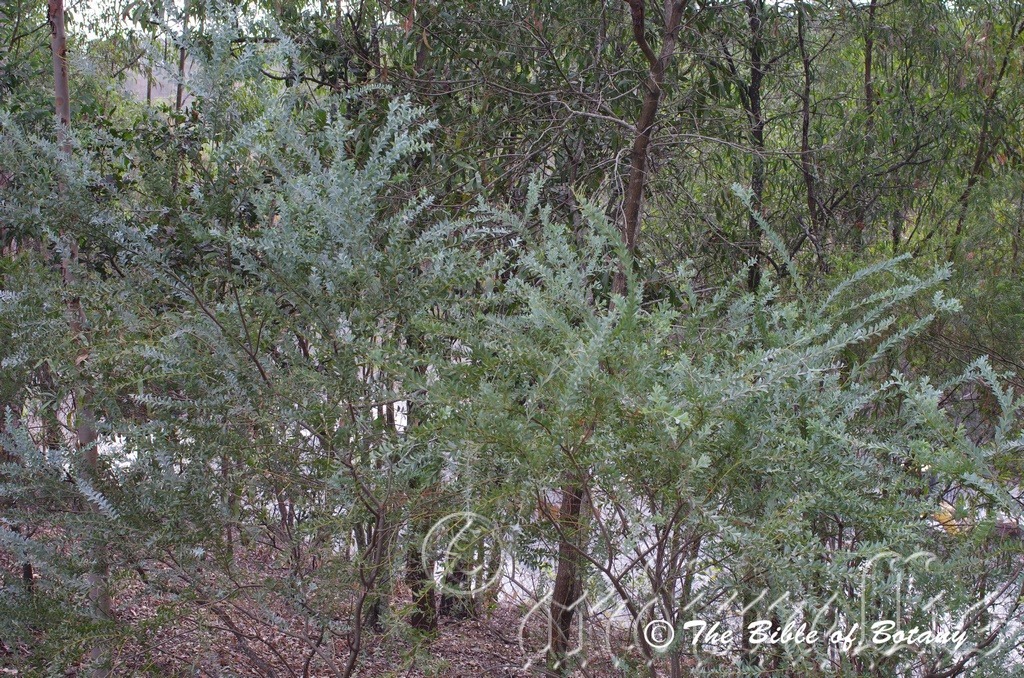
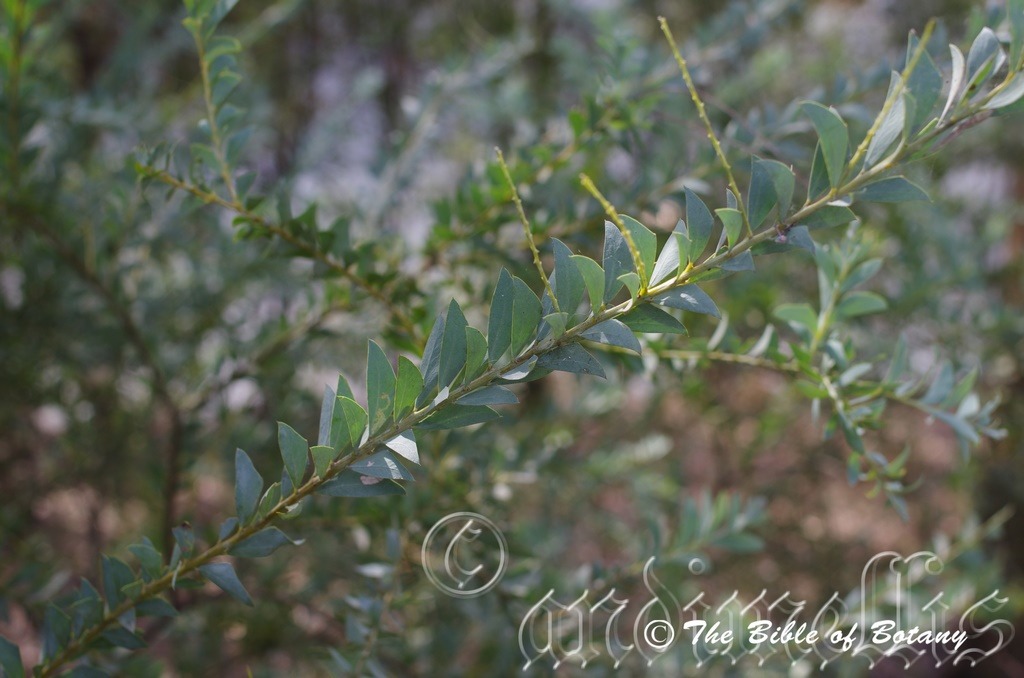
Mount Cootha Qld.
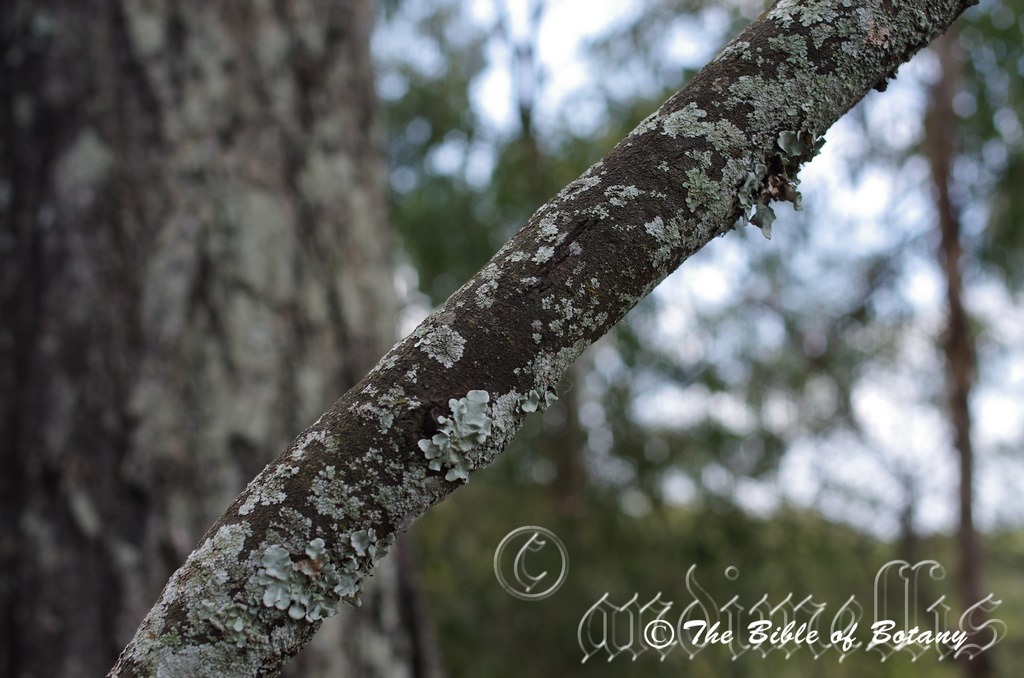
Mount Cootha Qld.
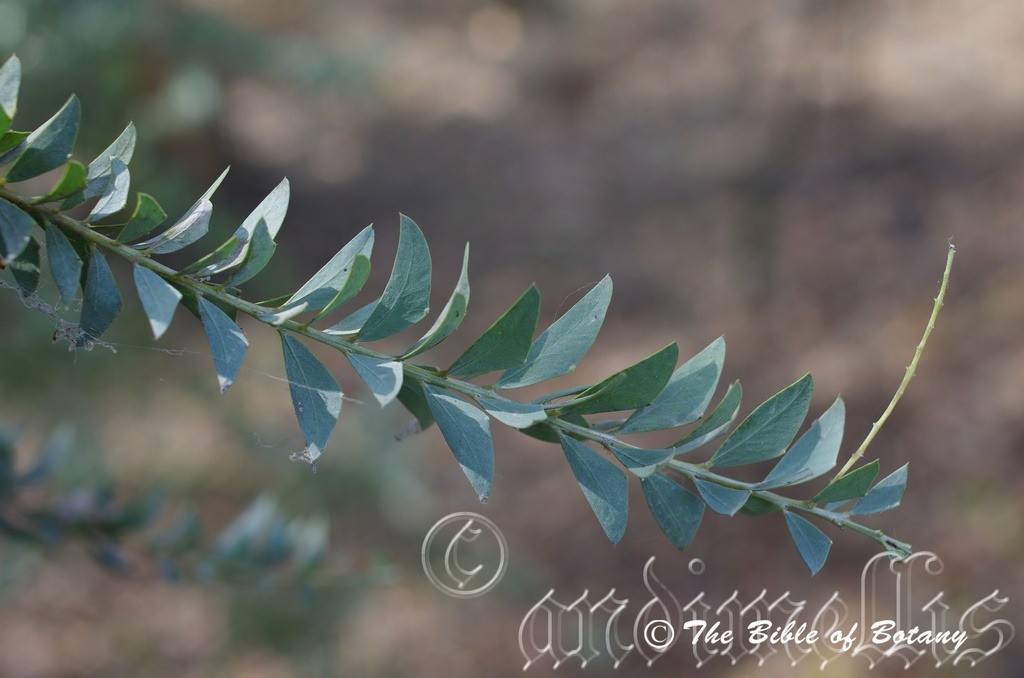
Mount Cootha Qld.

Mount Cootha Qld.
Acacia cultriformis
Classification:
Class: Magnoliophyta
Order: Fabales
Family: Fabaceae
Subfamily: Mimosoideae
Genus: From ἀκακία, which is Ancient Greek or later Acanthium, which is Latin for to have a sharp point. It refers to the first species named by Dioscorides the Greek Botanist for the Egyptian plant Acacia arabica, which has very sharply pointed spines.
Specie: From Cultritus, which is Latin for a knife or dagger and Forme, which is Latin for to take the shape or form of. It refers to the leaves, phyllodes or at times, spines which resemble knife?s blade.
Sub specie:
Common Name: Half Moon Wattle or Knife Edge Wattle.
Distribution:
The distribution of Acacia cultriformis is found south from Dalby to Brisbane in southern Queensland to Wagga Wagga along the western escarpment in New South Wales. It is also found in a few disjunct populations further south to Melbourne and west to the Grampians.
https://avh.ala.org.au/occurrences/search?taxa=Acacia+cultriformis#tab_mapView
Habitat Aspect Climate:
Acacia cultriformis grows in full sun to light dappled shade. It grows in mallee and Callitris type open forests and open woodlands. The altitude ranges from 40 meters ASL to 900 meters ASL
The temperatures range from 0 degrees in July to 38 degrees in January.
The rainfalls range from a low of 400mm to an average of 1200mm annually.
Soil Requirements:
Acacia cultriformis is usually found on sandy loams to medium clays. The soils are derived from decomposed sandstones, brown basalts, black basalts, granites metamorphic rocks or shale. The pH ranges from 6pH to 8pH. It does not tolerate water logged soils. Non saline soils to moderately saline soils are tolerated.
Height & Spread:
Wild Plants: 1.5m to 4m by 2.5m to 4.5m.
Characteristics:
The trunks of Acacia cultriformis are angled with grey-blue to deep grey bark. Old trees are deeper in colour and are rather rough to almost lepidate. The pale blue to pale blue-green branchlets is angular to terete and glabrous. More often they are covered in a white pruinose film especially when they first emerge.
Acacia cultriformis’s coriaceous phyllodes are narrow to broad triangular with the upper margin rounded or angled near the middle while the lower margin is straight to slightly curved. They measure 10mm to 30mm in length by 6mm to 15mm in width. The base is asymmetrical, cuneate to tapering while the apex is acute with a rigid mucronate tip. The concolourous phyllodes are pale blue-green to subglaucous and glabrous. The margins are entire. There is a single prominent gland on the upper margin slightly below the widest section. The main vein is prominent on both laminas while the lateral veins are slightly prominent. The pulvinus measures 0.8mm to 1.1mm in length.
Acacia cultriformis’s inflorescences are born from the upper phyllode axils. There are 4 to 25 globose to obloid flower heads in the raceme. The peduncles and rachises are pale blue-green and glabrous or pruinose. The peduncles measure 2.5mm to 5mm in length while the rachises measure 15mm to 80mm in length.
There are 15 to 40 five merous individual flowers in a head. The pale olive-yellow calyxes and 5 calyx lobes are erect and glabrous. The lanceolate petals are deep yellow while the stamens are deep yellow and measure 5mm to 7mm in length. Acacia cultriformis?s flowers appear from mid-August to mid-November.
Acacia cultriformis pods are straight to slightly curve. The pale yellow-green to yellow-blue pods are glabrous or more often pruinose turn pinkish-brown externally and pale pinkish brown to pale orange-brown internally when ripe. The thick chartaceous pods are slightly raised over the seeds. The margins are straight or slightly constrict between the seeds. They measure 30mm to 95mm in length by 4mm by 7.5mm in width.
The black, oblong seeds are slightly flattened and measure 3.5mm to 4mm in length by 2.4mm to 3mm in diameter. The white longitudinal aril expands at the base of the seeds.
Wildlife:
Acacia cultriformis is an ideal plant for the control of soil erosion and nitrogen fixation which it is most useful.
Cultivation:
It would make an good fire retardant shrub.
* Fire retardant plants act as radiant heat screens and absorb more heat from an approaching fire without burning.
* Fire retardant trees are able reduce wind speed near a house or out buildings.
* Fire retardant also trap embers and sparks carried by the wind.
* Fire retardant ground covers are able to catch burning embers without catching fire themselves, and also slow the travel of a fire through debris and litter on the ground.
Acacia cultriformis is an interesting tree which looks at home in any bush garden along or west of the Great Dividing Range. It grows particularly well from warm temperate zones to cool sub-tropical areas where the drainage is good and where the soils are fatty sandy loams to heavy clays. Garden subjects will grow into dense rounded shrubs. In the garden they will grow from 3 meters to 5 meters in height by 3 meters to 4.5 meters in diameter when grown in the open.
In native gardens it can be used to add nitrogen to the soil and are excellent specimens for breaking up heavier clays making them more friable. It is an excellent starter plant to give quick growth protect more delicate plants and good flowering displays throughout the late winter to mid Spring months. The foliage is very attractive especially on dense juvenile plants.
Try prostrate red flowering Grevilleas, bright coloured annuals or a mixed bed with a mosaic of different coloured foliages between clumps of Acacia cultriformis.
Garden beds would need to be open with plenty of space between the individual plants to allow good air flow and plenty of light to reach all the understory plants. Crowding this type of foliage will destroy any type of contrast. The foliages are best used where strong contrasts are required in the garden. For mass planting space the plants with at least 10 meters to 12 meters centers if you are considering them as the main feature.
Acacia cultiformis performs exceptionally well in cultivation. Shrubs I planted in Nana Glen on poor, decomposed shale derived from brown basalt thrived for 6 years and looked remarkably healthy before they deteriorate quickly when they need to be replanted.
Propagation:
Seeds: Acacia cultriformis seed requires treatment before sowing. Pre-treat the seeds by placing the seeds into a glass of hot water not boiling. Allow the water to cool and leave to soak for 10 hours. Seeds that have not swollen repeat the exercise.
Sow into a seed raising mix and place the trays in a sunny or a lightly shaded area in the shade house with no more than 30mm shade. When the seedlings are 25mm to 50mm tall, prick them out and plant them into 50mm native tubes using a seed raising mix.
Allow the plants to dry out before re watering.
Once the seedlings reach 200mm to 250mm in height plant them out into their permanent position.
Fertilize using Seaweed, fish emulsion or organic chicken pellets soaked in water on an alternate basis. Fertilize every two months until the plants are established then annually in early September to March to maintain health, vitality and better flowering.
Further Comments from Readers:
All information is included in good faith and has been thoroughly researched prior to printing. The website or the author does not warrant or guarantee the accuracy of any information on these pages, nor does the website or the author accept any responsibility for any loss arising from the use of the information found within. The views and opinions are strictly those of the author or those members who chose to actively participate in the contents herein.
Hi reader, it seems you use The Bible of Botany a lot. That’s great as we have great pleasure in bringing it to you! It’s a little awkward for us to ask, but our first aim is to purchase land approximately 1,600 hectares to link several parcels of N.P. into one at The Pinnacles NSW Australia, but we need your help. We’re not salespeople. We’re amateur botanists who have dedicated over 30 years to saving the environment in a practical way. We depend on donations to reach our goal. If you donate just $5, the price of your coffee this Sunday, We can help to keep the planet alive in a real way and continue to bring you regular updates and features on Australian plants all in one Botanical Bible. Any support is greatly appreciated. Thank you.
In the spirit of reconciliation we acknowledge the Bundjalung, Gumbaynggirr and Yaegl and all aboriginal nations throughout Australia and their connections to land, sea and community. We pay our respect to their Elders past, present and future for the pleasures we have gained.
Acacia dealbata
Classification:
Class: Magnoliophyta
Order: Fabales
Family: Fabaceae
Subfamily: Mimosoideae
Genus: From ἀκακία, which is Ancient Greek or later Acanthium, which is Latin for to have a sharp point. It refers to the first species named by Dioscorides the Greek Botanist for the Egyptian plant Acacia arabica, which has very sharply pointed spines.
Specie: From Dealbata, which is Latin for white wash. It refers to the underside of the leaves having the appearance of being whiteish or white washed in lime.
Sub specie:
Common Name: Silver Wattle.
In the Aboriginal language it is known as Moy-yan.
Distribution:
Acacia dealbata is found on the higher slopes of Ben Lomond in New South Wales south to King Island in Bass Straight and the eastern side of Tasmania.
https://avh.ala.org.au/occurrences/search?taxa=Acacia+dealbata#tab_mapView
Habitat Aspect Climate:
Acacia dealbata prefer full sun. It grows below medium size trees as a shrub or can be the dominant small tree specie within an area. It is commonly found at higher altitudes along creek banks road verges and other areas where the soil moisture content is more even. The altitude ranges from meters 600 ASL to 1200 meters ASL.
The temperatures range from minus 6 degrees in July to 34 degrees in January.
The rainfalls range from lows of 400mm to an average of 1200mm annually.
Soil Requirements:
Acacia dealbata prefer to grow on loams to medium clays. The soils are derived from decomposed granites, basalts, sandstones and porphyry. The soil?s pH ranges from 4.5pH to 6.5pH. It does not tolerate water logged soils. None saline soils to moderately saline soils are tolerated.
Height & Spread:
Wild Plants: 0.5m to 1m by 3m to 5m for the prostrate form and 20m to 30m by 8m to 12m for the tree form. Varieties are found in between these two sizes.
Characteristics:
Acacia dealbata‘s bark is deeply fissured with age dull light grey-green, deep brown to deep brown-black. The terete to squares in cross section branchlets are grey-green, glabrous and angled towards the apexes. The very young shoots are sparsely covered in white pruinose wax and caduceous hirsute hairs. The trunks form small buttresses on very old trees.
Acacia dealbata‘s alternate leaves are bipinnate at irregular intervals along the stems. The main rachises, petioles, secondary rachises and petiolule are blue-grey to blue-green and covered in white hirsute hairs. The main rachises measure 10mm to 120mm in length, petioles measure 10mm to 15mm in length while the secondary rachises measure 50mm to 55mm in length and the petiolule measure 0mm to 0.2mm in length. There is a single ovate jugary gland on the leaflets but sometimes absent from the basal leaflets. Interjugary glands are absent. There are 6 to 30 pairs of secondary rachises along the main rachises with the terminal pair being the shortest. There are 10 to 68 pairs of leaflets on the secondary rachises.
The oblong to linear pinnules measure 1mm to 6mm in length by 0.5mm to 1mm in width. The bases are rounded to truncate while the apexes are obtuse. The discolourous laminas are blue-grey to blue-green and sparsely covered in covered in white hirsute hairs which are mainly on the lower midvein and margins or sub ciliate. The margins are entire. The veins are obscure to faintly visible.
The inflorescence of Acacia dealbata are globose heads on terminal panicles which are on a raceme. There are 5 to 9 panicles on a raceme while there are 5 to 25 heads to a panicle with 17 to 35 individual flowers in a globose head. The slender, blue-green main rachises and peduncles are covered in white hirsute hairs. The rachises measure 30 to 40mm in length while the peduncles measure 2mm to 6mm in length and the pedicels measure 0mm to 0.2mm in length.
The individual flowers are 5 merous. The pale lemon calyxes and calyx lobes are erect and glabrous. The orbicular petals are pale yellow to bright yellow while the stamens are pale yellow to bright yellow. The individual flowers including the bright yellow stamens measure 2mm to 3.5mm in length and measure 4mm to 7.5mm in diameter overall. Acacia chrysotricha?s sweet scented creamy yellow to bright yellow flowers appear from early July through to November.
Acacia dealbata fruits are long straight or slightly curved flat pods. They measure 20mm to 115mm in length by 6mm to 15mm width and slightly constricted between the seeds. The coriaceous pods are glaucous pruinose, glabrous turn grey-brown when ripe.
The compressed, oblong to broadly elliptical black seeds measure 3.5mm to 4mm in length by 2.5mm to 3mm in width and 2mm to 2.5mm in depth. The creamy white filiform funicle is expanded for half its length at the base and measure 3mm to 3.5mm in length.
Wildlife:
Sick old or damaged trees are often attacked by borer larvae which in turn feed the large black and glossy cockatoos. The cockatoos have learnt to extract the borers from the trunks by chewing large sections away from the bark and soft outer cambium layer.
Cultivation:
It would make an good fire retardant tree shrub.
* Fire retardant plants act as radiant heat screens and absorb more heat from an approaching fire without burning.
* Fire retardant trees are able reduce wind speed near a house or out buildings.
* Fire retardant also trap embers and sparks carried by the wind.
* Fire retardant ground covers are able to catch burning embers without catching fire themselves, and also slow the travel of a fire through debris and litter on the ground.
Acacia dealbata is a tall fast growing wattle for the large moist bush garden or rainforest garden along the coast from cool temperate zones to cool sub-tropical areas where the soils are fatty sandy loams to heavy clays. Garden subjects will grow into tall pyramidal shape trees where they produce a beautiful green trunk in the early years. In the garden they will grow from15 meters to 20 meters in height by 8 meters to 12 meters in diameter when grown in the open or taller and narrower when grown in a forest situation.
In native gardens it can be used to add nitrogen to the soil and are excellent specimens for regeneration projects. It is an excellent starter plant for rainforest gardens. The foliage is attractive and appealing and rather dense while nitrogen fixation it is a vital part of the garden until other plants become established. Once established ferns and small understory plants like Cordyline, Alpinia and Alocasia species can be used to enhance the rainforest walk.
For mass planting space the plants at least 3 meter to 4 meter centers thinning every second plant as they approach each other and again as those remain come in contact with each other.
Acacia dealbata performs exceptionally well in cultivation. Trees I planted in Nana Glen on poor, decomposed shale derived from brown basalt are over 20 years old, attained a height of over 20 meters with a trunk of 400mm diameter.
Propagation:
Seeds: Acacia dealbata require treatment before sowing. Pre-treat the seeds by placing the seeds into a glass of boiling water. Allow the water to cool and leave to soak for 10 hours. Seeds that have not swollen repeat the exercise.
Sow into a seed raising mix. When the seedlings are 25mm to 50mm tall, prick them out and plant them into 50mm native tubes using a seed raising mix.
Once the seedlings reach 200mm to 250mm in height plant them out into their permanent position. For mass plantings plant at 6 meter to 8 meter spicing where the tress will be culled later or 12 meters where a permanent stand is required.
Fertilize using Seaweed, fish emulsion or organic chicken pellets soaked in water on an alternate basis. Fertilize every two months until the plants are established then annually in early September to March to maintain health, vitality and better flowering.
Further Comments from Readers:
All information is included in good faith and has been thoroughly researched prior to printing. The website or the author does not warrant or guarantee the accuracy of any information on these pages, nor does the website or the author accept any responsibility for any loss arising from the use of the information found within. The views and opinions are strictly those of the author or those members who chose to actively participate in the contents herein.
Hi reader, it seems you use The Bible of Botany a lot. That’s great as we have great pleasure in bringing it to you! It’s a little awkward for us to ask, but our first aim is to purchase land approximately 1,600 hectares to link several parcels of N.P. into one at The Pinnacles NSW Australia, but we need your help. We’re not salespeople. We’re amateur botanists who have dedicated over 30 years to saving the environment in a practical way. We depend on donations to reach our goal. If you donate just $5, the price of your coffee this Sunday, We can help to keep the planet alive in a real way and continue to bring you regular updates and features on Australian plants all in one Botanical Bible. Any support is greatly appreciated. Thank you.
In the spirit of reconciliation we acknowledge the Bundjalung, Gumbaynggirr and Yaegl and all aboriginal nations throughout Australia and their connections to land, sea and community. We pay our respect to their Elders past, present and future for the pleasures we have gained.
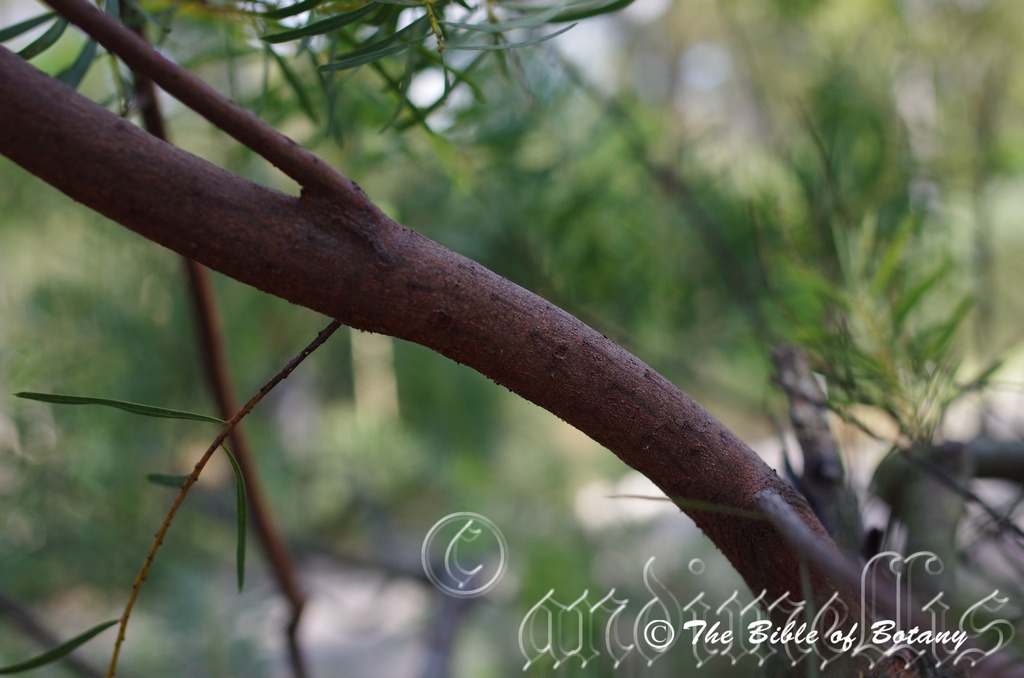

Mount Cootha Botanic Gardens Qld.

Mount Cootha Botanic Gardens Qld.

Mount Cootha Botanic Gardens Qld.

Mount Cootha Botanic Gardens Qld.
Acacia decora
Classification:
Class: Magnoliophyta
Order: Fabales
Family: Fabaceae
Subfamily: Mimosoideae
Genus: From ἀκακία, which is Ancient Greek or later Acanthium, which is Latin for to have a sharp point. It refers to the first species named by Dioscorides the Greek Botanist for the Egyptian plant Acacia arabica, which has very sharply pointed spines.
Specie: From Decora, which is Latinized from the French word decor to be decorative. It refers to plants, which have an overall decorative appeal.
Sub specie:
Common Name: Western Wattle or Showy Wattle.
Distribution:
Acacia decora is found south from Cairns south to Townsville in far north Queensland. It is also found south from Rockhampton in central Queensland to the New South Wales, Victorian border. It is rare in the border areas of Victoria.
https://avh.ala.org.au/occurrences/search?taxa=Acacia+decora#tab_mapView
Habitat Aspect Climate:
Acacia decora prefer full sun. It grows as a medium size bushy shrub in country dominated by open woodlands, mallee gums, Callitris, Eucalyptus melliodora or mixed savannahs. It is grows in small depressions or on rocky hillsides, plains, undulating hills and ridges. The altitude ranges from 5 meters ASL to 1200 meters ASL
The temperatures range from minus 4 degree in July to 41 degrees in January.
The rainfalls range from lows of 250mm to an average of 1750mm annually.
Soil Requirements:
Acacia decora prefer to grow on rocky ridges, gravelly lateritic red soil plains to gravely heavy clays. The soil?s pH ranges from 4.5pH to 6.5pH. It does not tolerate water logged soils. None saline soils to moderately saline soils are tolerated.
Height & Spread:
Wild Plants: 1m to 4m by 1m to 3m.
Characteristics:
Acacia decora?s trunk and main stems are glabrous, brown and semi glossy. The branchlets are ribbed, red-brown and are covered in short white, caduceous, sericeous hairs near the apex.
Acacia decora’s alternate phyllodes are narrowly elliptical, oblanceolate or obovate and straight to slightly curve. They measure 15mm to 50mm in length by 3mm to 7mm in width. The bases are tapering while the apexes are acute with a hooked mucronate tip. The concolourous laminas are pale blue-grey to sub glaucous, glabrous and dull. The margins are entire. The mid veins are prominent on the upper laminas and are faintly visible from the lower laminas. There are 2 glands positioned 5mm to 15mm from the pulvinus. The pulvinus measures 1.5mm to 2mm in diameter.
Acacia decora’s inflorescence are globose heads born on panicles along the racemes from the terminals or auxiliaries. The racemes and peduncles are covered in golden hirsute hairs. There are 5 to 15 panicles along a raceme with 15 to 30 flowers in a head. Individual globules are 5mm to 6mm in diameter while the individual flowers are 1.3mm to 1.7mm long. The rachises measure 20 to 60mm in length while the peduncles measure 5mm to 8mm in length and the pedicels measure 0mm to 0.2mm in length.
The individual flowers are 5 merous. The pale lemon calyxes and 5 calyx lobes are erect and glabrous. The elliptical petals are pale yellow to bright yellow while the stamens are pale yellow to bright yellow. The individual flowers including the bright yellow stamens measure 2mm to 3mm in length and measure 4.5mm to 6mm in diameter overall. Acacia decora?s sweet scented creamy yellow to bright yellow flowers appear from April to October.
Acacia decora pods are linear, straight to slightly curve. They measure 50mm to 100mm long by 4.5mm to 7mm wide with a slight constriction between the seeds. The margins are slightly constricted between the seeds. The papery thin coriaceous pods are glabrous, glaucous blue or covered in a white pruinose powder before ripening to a deep grey-brown.
The broadly elliptical to oblong-elliptical, black seeds are seated longitudinally and measure 4mm to 4.5mm in length by 1.4mm to 1.6mm in diameter. The white, recurved filiform funicle expands as it approaches the narrower end of the seed and measures 5mm to 6mm in length.
Wildlife:
Acacia decora‘s wildlife is unknown to the author however many of the seed pods are frequently attacked by unknown borers.
Cultivation:
Acacia decora is a very beautiful slender small shrub with beautiful blue leaves. They are an ideal plant for small gardens where a blue leaf is required to contrast other native plants. The yellow to red branchlets also add interest when they are not in flower. In sub-tropical arid or temperate native gardens it can be used to add nitrogen to the soil. It can be lightly tip pruned immediately after flowering to encourage bushiness and promote flowering in the following season. Garden subjects will grow from 1 meter to 3 meters in height by 1.5 meters to 3 meters in diameter when grown in the open.
Six or more planted back from a bend will become a very strong focal point particularly when they are in flower and finer bright pale green foliages are incorporated into the garden either side of this beautiful small Acacia. When it is in flower they will gain a lot of attention whether you are coming or going because of the fresh clean look of the foliage even in the driest of times. Place them in the mid ground, with other larger leaf or very fine leaf ground covers in the foreground. To the rear, use large leaf taller plants with pale green leaves for the best contrast. Plants with deep red or deep purple flowers can be used in both the midground and background. This will lead the viewer’s eyes directly to the bright yellow flowers for a longer period.
Ensure that the whole plant or at least most of it is on display from most sections of the garden as the flowers and foliage are a real delight.
When mass planting, plant them sparingly throughout the bed to get the best effect. One here and one there will be far better noticed in flower yet still stand out when void of flowers. If the foliage is required as a feature in the garden plant 2 or 3 very close together in an attempt to make them bushier. Light tip pruning may also be advantageous.
They can be used in raised garden beds surrounded by small shrubs with fine pale green leaf plants which flower at a different times of the year or use reds and purples for a stronger contrast.
Propagation:
Seeds: Acacia decora require treatment before sowing. Pre treat the seeds by placing the seeds into a glass of boiling water. Allow the water to cool and leave to soak for 10 hours. Seeds that have not swollen repeat the exercise.
Sow into a seed raising mix. When the seedlings are 25mm to 50mm tall, prick them out and plant them into 50mm native tubes using a seed raising mix.
Once the seedlings reach 200mm to 250mm in height plant them out into their permanent position. For mass plantings plant at 6 meter to 8 meter spacings where the tress will be culled later or 12 meters where a permanent stand is required.
Fertilize using Seaweed, fish emulsion or organic chicken pellets soaked in water on an alternate basis. Fertilize every two months until the plants are established then annually either in early September to March to maintain health, vitality and better flowering.
Further Comments from Readers:
All information is included in good faith and has been thoroughly researched prior to printing. The website or the author does not warrant or guarantee the accuracy of any information on these pages, nor does the website or the author accept any responsibility for any loss arising from the use of the information found within. The views and opinions are strictly those of the author or those members who chose to actively participate in the contents herein.
Hi reader, it seems you use The Bible of Botany a lot. That’s great as we have great pleasure in bringing it to you! It’s a little awkward for us to ask, but our first aim is to purchase land approximately 1,600 hectares to link several parcels of N.P. into one at The Pinnacles NSW Australia, but we need your help. We’re not salespeople. We’re amateur botanists who have dedicated over 30 years to saving the environment in a practical way. We depend on donations to reach our goal. If you donate just $5, the price of your coffee this Sunday, We can help to keep the planet alive in a real way and continue to bring you regular updates and features on Australian plants all in one Botanical Bible. Any support is greatly appreciated. Thank you.
In the spirit of reconciliation we acknowledge the Bundjalung, Gumbaynggirr and Yaegl and all aboriginal nations throughout Australia and their connections to land, sea and community. We pay our respect to their Elders past, present and future for the pleasures we have gained.
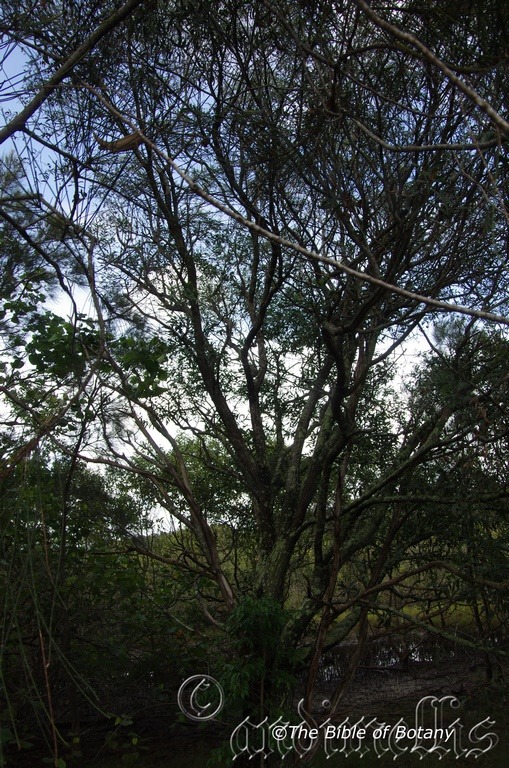

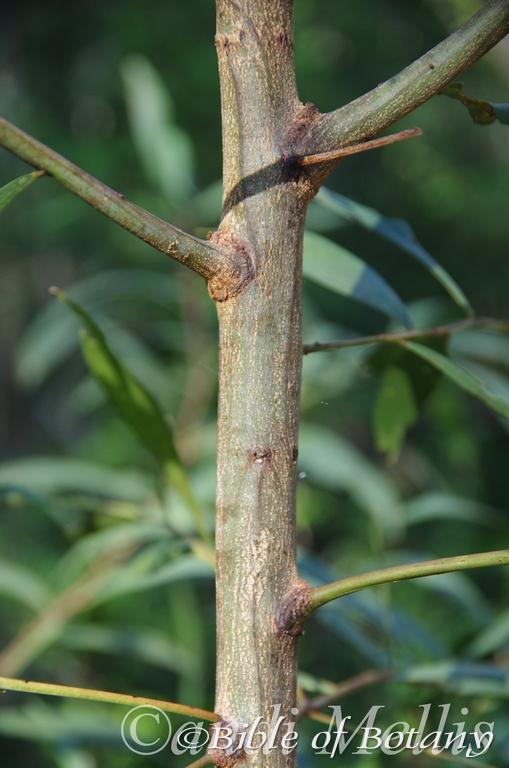



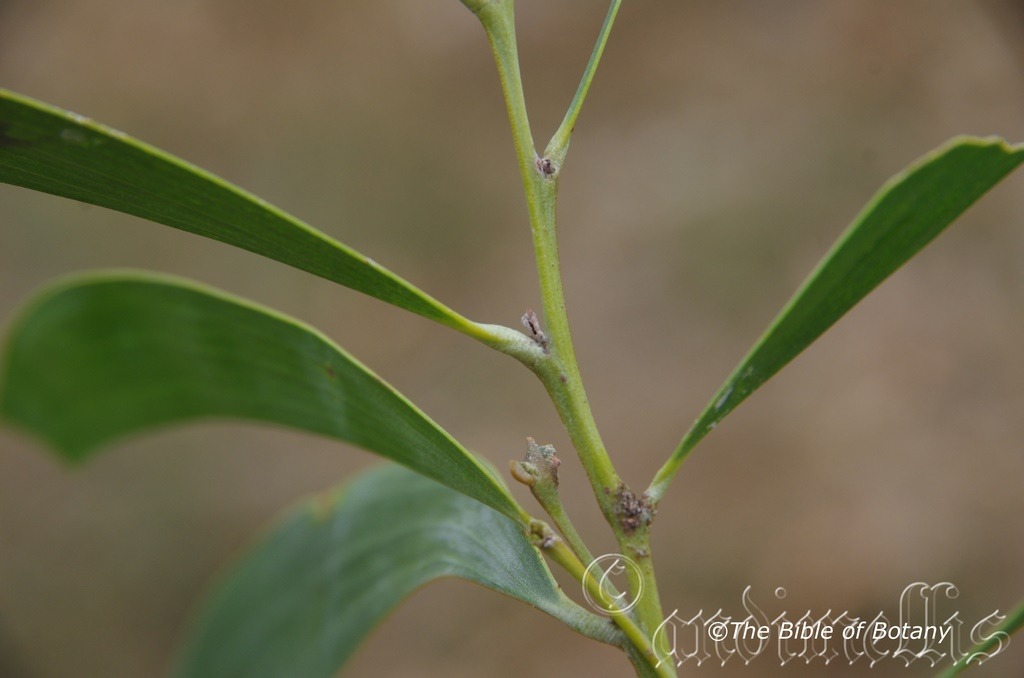

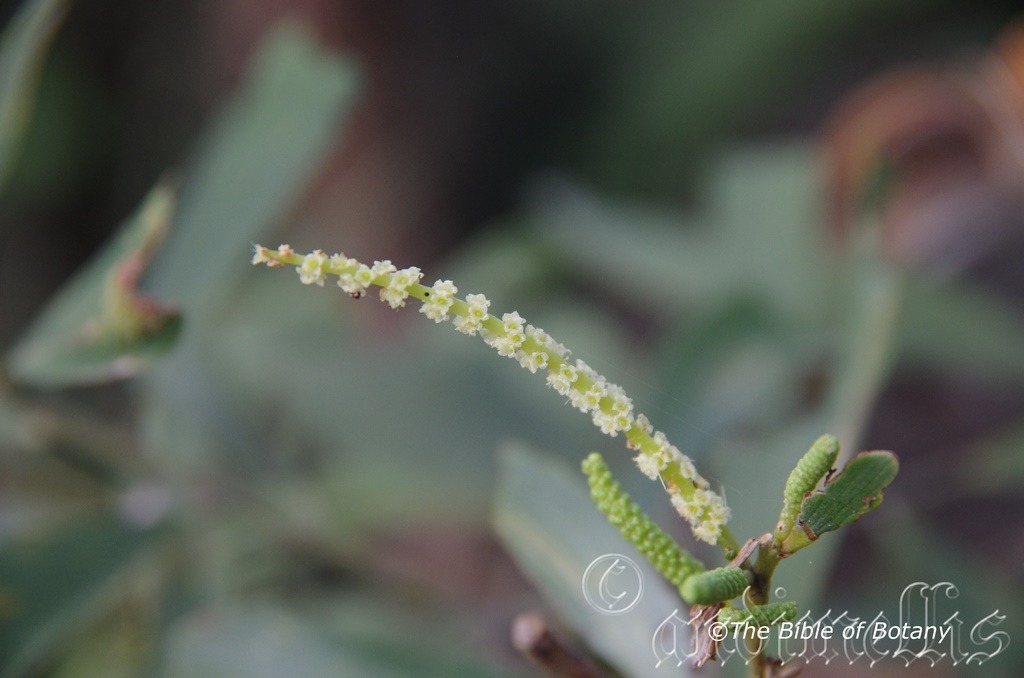



Acacia disparrima
Classification:
Class: Magnoliophyta
Order: Fabales
Family: Fabaceae
Subfamily: Mimosoideae
Genus: From ἀκακία, which is Ancient Greek or later Acanthium, which is Latin for to have a sharp point. It refers to the first species named by Dioscorides the Greek Botanist for the Egyptian plant Acacia arabica, which has very sharply pointed spines.
Specie: From Di/Dis, which is Ancient Greek for two and Paritum, which is Latin for being on a par with. It refers to a structure or organ, which has several different forms. A good example is the shape of the phyllodes and the fact that there are one or two flower spikes per axis.
Sub specie: Acacia disparrima subsp. calidestris. From Calidus, which is Latin for hot. It refers to the plants growing between warm rocks and crevices amongst rocks.
Sub specie: Acacia disparrima subsp. disparrima. From Di/Dis, which is Ancient Greek for two and Paritum, which is Latin for being on a par with. It refers to a structure or organ, which has several different forms. A good example is the shape of the phyllodes and the fact that there are one or two flower spikes per axis.
Common Name:
Distribution:
Acacia disparrima subsp. calidestris is found south from Cape York Peninsular to Charters Towers with a several disjunct populations further west to Mornington Island in far north eastern Queensland.
Acacia disparrima subsp. disparrima is found south from Mackay in north east Queensland to the Bellinger River in north eastern New South Wales. It is also found in several disjunct populations further north on Cape Grafton to the tip of Cape York Peninsular.
https://avh.ala.org.au/occurrences/search?taxa=Acacia+disparrima#tab_mapView
Habitat Aspect Climate:
Acacia disparrima prefer partial shade to full sun. It grows in country dominated by open woodlands to mixed littoral rainforests behind the frontal dunes. The altitude ranges from 5 meters ASL to 600 meters ASL
The temperatures range from minus 4 degree in July to 41 degrees in January.
The rainfalls range from lows of 550mm to an average of 3200mm annually.
Soil Requirements:
Acacia disparrima prefer deep, coarse sands, fine sands, and sandy loams to light fatty clays. The soils are usually derived from decomposed sandstones or accumulated peaty beach sands. The soil?s pH ranges from 4.5pH to 7pH. It does not tolerate water logged soils. None saline soils to very saline soils are tolerated.
Height & Spread:
Wild Plants: 3m to 12m by 1m to 5m.
Characteristics:
Acacia disparrima’s trunks are fissured, rusty red to rusty brown with large, grey, square flaky patches. The branchlets are grey becoming angled, grey-green, flattened at the apexes with the grey?green sections being resinous.
Acacia disparrima?s alternate phyllodes are narrowly elliptical, falcate to sub falcate. The phyllodes on Acacia disparrima sub sp. disparrima measure 50mm to 120mm in length by 5mm to 30mm in width. The phyllodes on Acacia disparrima sub sp. calidrstris measure 50mm to 120mm in length by 5mm to 30mm in width.
The bases are tapering while the apexes are narrowly acute with a hooked mucronate tip. The concolourous laminas are pale blue-grey to sub glaucous, glabrous and dull. The margins are entire. There are 3 to 4 longitudinal veins which are prominent with up to 4 more which are less prominent on the upper laminas and are faintly visible from the lower laminas. The lower veins are non-anastomosing. The veins join together near the base. There is a single gland positioned near the base of the phyllode. The pulvinus measures 2mm to 5mm in length.
Acacia disparrima?s inflorescens are born on 1 or 2 racemes from the phyllode axils. The peduncles and rachises are glabrous to scurfy. The peduncles measure 2mm to 8mm in length while the rachises measure 20 to 70mm in length.
The individual flowers are 5 merous. The pale lemon calyxes and 5 calyx lobes are erect and glabrous. The elliptical petals are pale yellow to lemon-yellow while the stamens are pale lemon yellow to pale yellow. The individual flowers including the lemon-yellow stamens measure 2mm to 2.5mm in length. Acacia disparrima?s flowers appear from January through to May.
Acacia disparrima pods are straight to moderately curved and slightly twisted. They measure 25mm to 100mm in length by 10mm to 20mm width without any constriction between the seeds. The margins are not constricted between the seeds. The grey-green pods turn brown, veiny and woody externally and creamy fawn internally when ripe. The oblong-elliptical to elliptical, black seeds measure 4.5mm to 5mm in length by 2.5mm to 3mm in diameter. The creamy grey, coiled funicle expands as it approaches the narrower end of the seed and measures 7mm to 10mm in length on Acacia disparrima sub sp. disparrima while it is recurved and partially encircles the seed on Acacia disparrima sub sp. calidrstris.
Wildlife:
The wildlife is unknown to the author however many of the seed pods often eaten by an unknown borer.
Cultivation:
It would make an good fire retardant small tree.
* Fire retardant plants act as radiant heat screens and absorb more heat from an approaching fire without burning.
* Fire retardant trees are able reduce wind speed near a house or out buildings.
* Fire retardant also trap embers and sparks carried by the wind.
* Fire retardant ground covers are able to catch burning embers without catching fire themselves, and also slow the travel of a fire through debris and litter on the ground.
Acacia disparrima has a trunk that contrasts beautifully with other small trees of a similar size. They are an ideal plant for medium gardens. Garden subjects will grow from 8 meter to 10 meters in height by 5 meters to 6 meters in diameter when grown in the open.
In native gardens they can be used to add nitrogen to the soil. It is an excellent starter plant to give quick growth, protect more delicate plants and give good contrast flowering displays in autumn when there are fewer flowering plants around. The foliage is not overly attractive yet is noticeable amongst other natives in the garden and with nitrogen fixation it is a vital part of the garden until other plants become established. Try prostrate red flowering Grevilleas, bright coloured annuals or a mixed bed with a mosaic of different coloured foliages beneath Acacia disparrima.
Garden beds would need to be open with plenty of space between plants to allow good air flow and plenty of light to reach all the inhabitants. Crowding this type of foliage with other plants will see them lose all the effectiveness of shape and leaf patterns as it grows together and merge into a single unit of untidiness. Correct spacing will contrast the foliages better without one overpowering the other plants in the garden. For mass planting space the plants with at least 7 meters to 8 meters centers if you are considering them.
If you are using them amongst boulders in the garden, plant them sparingly to attain a barren scene, so not to make the area look cluttered or detract from the other features like the boulders. 4 or 5 in an area of 500 square meters would be ample. 4 plants separately planted or plant 2 close together and separate the other 2 or 3 on the far side of the bed to give width and depth where you want it. The use of annuals helps to attract the viewer to the permanent plants foliage as they are the dominant foliage you want people to notice in the patch. In the case of Acacia cangaiensis you could substitute the annuals with very small Grevillea, Crowea, Hovea or even Verticordia species. It works well with Grevillea masonii other Grevilleas of similar size but contrasting foliages are the key to success with the flowers being a bonus. Plants will generally live for 8 or 9 years.
Propagation:
Seeds: Acacia disparrima require treatment before sowing. Pre-treat the seeds by placing the seeds into a glass of boiling water. Allow the water to cool and leave to soak for 10 hours. Seeds that have not swollen repeat the exercise.
Sow into a seed raising mix. When the seedlings are 25mm to 50mm tall, prick them out and plant them into 50mm native tubes using a seed raising mix.
Once the seedlings reach 200mm to 250mm in height plant them out into their permanent position. For mass plantings plant at 6 meter to 8 meter spacing?s where the tress will be culled later or 12 meters where a permanent stand is required.
Fertilize using Seaweed, fish emulsion or organic chicken pellets soaked in water on an alternate basis. Fertilize every two months until the plants are established then annually either in early September to March to maintain health, vitality and better flowering.
Further Comments from Readers:
All information is included in good faith and has been thoroughly researched prior to printing. The website or the author does not warrant or guarantee the accuracy of any information on these pages, nor does the website or the author accept any responsibility for any loss arising from the use of the information found within. The views and opinions are strictly those of the author or those members who chose to actively participate in the contents herein.
Hi reader, it seems you use The Bible of Botany a lot. That’s great as we have great pleasure in bringing it to you! It’s a little awkward for us to ask, but our first aim is to purchase land approximately 1,600 hectares to link several parcels of N.P. into one at The Pinnacles NSW Australia, but we need your help. We’re not salespeople. We’re amateur botanists who have dedicated over 30 years to saving the environment in a practical way. We depend on donations to reach our goal. If you donate just $5, the price of your coffee this Sunday, We can help to keep the planet alive in a real way and continue to bring you regular updates and features on Australian plants all in one Botanical Bible. Any support is greatly appreciated. Thank you.
In the spirit of reconciliation we acknowledge the Bundjalung, Gumbaynggirr and Yaegl and all aboriginal nations throughout Australia and their connections to land, sea and community. We pay our respect to their Elders past, present and future for the pleasures we have gained.
Acacia dunnii
Classification:
Class: Magnoliophyta
Order: Fabales
Family: Fabaceae
Subfamily: Mimosoideae
Genus: From ἀκακία, which is Ancient Greek or later Acanthium, which is Latin for to have a sharp point. It refers to the first species named by Dioscorides the Greek Botanist for the Egyptian plant Acacia arabica, which has very sharply pointed spines.
Specie: Is named in honour of Edward John Dunn; 1774-1851, who was a professor of Greek at the Edinburgh University.
Sub specie:
Common Name: Elephants Ears Wattle.
Distribution:
Acacia dunnii is found in the top end of Western Australia near Walcott inlet to the Victoria River in the Northern Territory. The areas are frequently barren of large trees and covered in grasses.
https://avh.ala.org.au/occurrences/search?taxa=Acacia+disparrima#tab_mapView
Habitat Aspect Climate:
Acacia dunnii prefer full sun. It grows as a medium size slender tree in country dominated by sparse savannah woodlands and grasses. It never the dominate plant but is locally common. It is commonly found in small depressions or adjacent to cliffs where even soil moisture is retained for longer periods following rain. The altitude ranges from 15 meters ASL to 360 meters ASL
The temperatures range from 13 degrees in July to 44 degrees in January.
The rainfalls range from lows of 600mm to an average of 1600mm annually all of which falls in the monsoonal autumn season.
Soil Requirements:
Acacia dunnii prefer growing on skeletal sandy loams, light fatty clays rocky light clays or screes. The soils are derived from decomposed basalts, quartz and sandstones. The soils will vary from medium clays to sandy loams. Soils range from a pH of 5.5 to pH7.They are not tolerant of water logged soils. Non saline soils to moderately saline soils are tolerated.
Height & Spread:
Wild Plants: 2m to 6m by 2m to 3m.
Characteristics:
Acacia dunnii‘s bark is a smooth dull glaucous or silvery white, while the terete branchlets are glabrous, glaucous and angled towards the apexes.
Acacia dunnii‘s glaucous silvery phyllodes are amongst the largest of the Acacia genus. They asymmetrical, elliptical to obovate phyllodes are strongly reniform. They measure 120mm to 420mm in length by 80mm to 170mm width. The bases are strongly oblique and asymmetrically tapering while the apexes are obtuse. The concolourous laminas are pale blue to blue-green. The margins are entire though some sinuation may be present. The 4 or 5 prominent veins are confluent on the lower margin.
The inflorescens of Acacia dunnii are globose heads on panicles along racemes from the terminals or auxiliary phyllode s. The racemes and peduncles are glabrous. There are 5 to 19 panicles along a raceme with 1 to 5 globose heads on a panicle. Individual heads measure 6mm to 8mm in diameter while the individual flowers measure 2.5mm to 3.5mm in length. The rachises measure 110 to 500mm in length while the peduncles measure 8mm to 20mm in length and the pedicels measure 0mm to 0.2mm in length.
The individual flowers are 5 merous. The pale lemon calyxes and 5 calyx lobes are erect and glabrous. The orbicular petals are pale yellow to bright yellow while the stamens are pale yellow to bright yellow. Acacia dunnii flowers appear from January through to June.
Acacia dunnii fruits are narrowly oblong straight pods. They measure 100mm to 170mm long by 20mm to 40mm wide with no constriction between the seeds. The glaucous blue sub woody pods turn brownish-pink when ripe. The broadly elliptical to oblong-elliptical seeds measure 9mm to 12mm in length by 5mm to 7mm in width and 4.5mm to 6mm in depth. They are deep brown with a deep brown-black. The grey funicle is folded at the base of the seed.
Wildlife:
Acacia dunnii ?s wildlife is unknown to the author.
Cultivation:
Acacia dunnii is a very beautiful slender small tree with huge glaucous phyllodes. As beautiful as they are the plants resent the cold and are best suited to hot areas in the tropical semi-arid zones. Garden subjects will grow from 4 meter to 5 meters in height by 2 meters to 2.5 meters in diameter and are best when grown in the open.
In tropical Native gardens they can be used to add nitrogen to the soil. Their best feature is the large glaucous blue phyllodes that can be used to attract the viewer?s attention to any part of the garden especially when not much else is in flower. It is best used as a back ground or mid ground plant as they are too overpowering if placed in the foreground. This is one plant that should never be used in mass plantings but instead scattered throughout the garden where it can contrast other foliages. The slender tall growth also adds a dimension of height in small areas. These are excellent small trees where rapid growth and accents are required. If you are planting them in areas where temperatures drop below 6 degrees in the winter, you should be prepared for disappointment however they would be well worthwhile persevering with in marginal areas. Try them up against shed walls on the northern side where additional winter heat is maintained during the evenings. This will also help to lower the temperatures in the sheds during the day. It does exceptionally well in Mount Isa and Darwin where the humidity have a strong contrast of dry in the dry season and very humid in the wet season.
Propagation:
Seeds: Acacia dunnii require treatment before sowing. Pre-treat by placing the seeds into a glass of very hot water. Allow the water to cool and leave to soak for 10 hours. Seeds that have not swollen repeat the exercise.
Sow into a seed raising mix. When the seedlings are 25m to 50mm tall, prick them out and plant them into 50mm native tubes using a seed raising mix.
Once the seedlings reach 200 to 250mm in height plant it out into their permanent position. For mass plantings plant at 6 meter to 8 meter spacing?s where the tress will be culled later or 12 meters where a permanent stand is required.
Fertilize using Seaweed, fish emulsion or organic chicken pellets soaked in water on an alternate basis. Fertilize every two months until the plants are established then annually either in early September to March to maintain health, vitality and better flowering.
Further Comments from Readers:
All information is included in good faith and has been thoroughly researched prior to printing. The website or the author does not warrant or guarantee the accuracy of any information on these pages, nor does the website or the author accept any responsibility for any loss arising from the use of the information found within. The views and opinions are strictly those of the author or those members who chose to actively participate in the contents herein.
Hi reader, it seems you use The Bible of Botany a lot. That’s great as we have great pleasure in bringing it to you! It’s a little awkward for us to ask, but our first aim is to purchase land approximately 1,600 hectares to link several parcels of N.P. into one at The Pinnacles NSW Australia, but we need your help. We’re not salespeople. We’re amateur botanists who have dedicated over 30 years to saving the environment in a practical way. We depend on donations to reach our goal. If you donate just $5, the price of your coffee this Sunday, We can help to keep the planet alive in a real way and continue to bring you regular updates and features on Australian plants all in one Botanical Bible. Any support is greatly appreciated. Thank you.
In the spirit of reconciliation we acknowledge the Bundjalung, Gumbaynggirr and Yaegl and all aboriginal nations throughout Australia and their connections to land, sea and community. We pay our respect to their Elders past, present and future for the pleasures we have gained.
Acacia echinula
Classification:
Class: Magnoliophyta
Order: Fabales
Family: Fabaceae
Subfamily: Mimosoideae
Genus: From ἀκακία, which is Ancient Greek or later Acanthium, which is Latin for to have a sharp point. It refers to the first species named by Dioscorides the Greek Botanist for the Egyptian plant Acacia arabica, which has very sharply pointed spines.
Specie: From Ekhinos, which is Greek/Latin for a hedgehog or sea urchin. It refers to stems which bear short, stiff hairs like the spines on a sea urchin.
Sub specie:
Common Name: Hedgehog Wattle or Echidna Wattle.
Distribution:
Acacia echinula is found south from Merriwa to Ulladulla in eastern New South Wales. There are 2 disjunct populations further north; at Cudgeri and between Copmanhurst and Banyabba National Park north of Grafton, which may indicate that it is more common along the coast than indicated as it is very similar to Acacia ulicifolia. It is found on and east of the Great Dividing Range to the coast.
https://avh.ala.org.au/occurrences/search?taxa=Acacia+echinula#tab_mapView
Habitat Aspect Climate:
Acacia echinula prefer full sun to dappled shade. It grows in drier littoral heath lands behind the frontal dunes, on gentle slopes, rocky hills or on lower altitude plateau heaths. It grows as a small scrambly shrub in country dominated by sclerophyll forests or open woodlands. It never dominates the understory but is usually common in its preferred habitats. The altitude ranges from 5 meters ASL to 850 meters ASL.
The temperatures range from lows of minus 3 degrees in July to 36 degrees in January.
The rainfalls range from lows of 800mm to an average of 1600mm annually.
Soil Requirements:
Acacia echinula prefer deep, sandy loams to light fatty clays or at times light silts. The soils are usually derived from decomposed sandstones, granites, accumulated peaty beach sands or at times alluvial deposit. The soil?s pH ranges from 4.5pH to 6.5pH. It tolerates seasonal water logged soils and high water tables for short periods. None saline soils to very saline soils are tolerated as are salt laden winds.
Height & Spread:
Wild Plants: 0.5m to 2m by 1m to 2m.
Characteristics:
Acacia echinula‘s is a decumbent to erect small shrub with mid grey glabrous stems. The smaller terete stems are terete, brownish to yellow-green and sparsely to densely (especially the northern forms) covered in white, hirsute to hirtellous or at times pubescent hairs.
Acacia echinula‘s crowded phyllodes are 4 angular, almost terete to phyllodes. The rigid phyllodes are straight and measure 10mm to 13mm in length by 1mm to 1.5mm in width. The subulate stipules measure 1mm to 2mm in length. The pulvinus is obscure and measure 0.1mm to 0.3mm in length. The bases are sessile on the pulvinus while the apexes taper abruptly to a needle like pungent extension and are straight or slightly curved. The concolourous laminas are deep olive-green to deep sea-green and glabrous. The margins are entire while the midvein is prominent on the lower lamina. The single minute gland is located above the pulvinus on the margin.
The inflorescences of Acacia echinula are born singularly from the phyllodes axils. The lime-green peduncles are glabrous to densely covered in white hirsute, hirtellous or pubescent hairs. The peduncles measure 5mm to 15mm in length. There are 27 to 42 individual flowers to a globose head. Each globose head measures 7mm to 12mm in diameter with the individual flowers measuring 3mm to 5mm in length. The narrow lanceolate bracteoles measure 1.5mm to 2mm in length.
The individual flowers are 5 merous. The 5 sepals are united for 35mm to 65mm of their length and deep yellow. The elliptical petals are deep yellow while the filaments are yellow with the anthers being pale yellow through to deep yellow. Acacia echinula?s flowers appear from July through to September.
Acacia echinula fruits are narrow oblong, slightly to strongly curved pods. The pods measure 15mm to 40mmin length by 3.5mm to 5mm in width. The brittle chartaceous to thinly coriaceous pods are flat, slightly raised over seeds and are irregularly but more deeply constricted between seeds. The lime-green to deep green, glabrous pods first turn reddish then to deep brown to deep brown-black when ripe. The 3 to 6 obloidal, deep brown seeds are obscurely resinous in creamy-yellow and measure 4mm to 4.2mm in length by 2.3mm to 2.6mm in diameter. The exarillate seeds have white filiform funicle from the base to along one side.
Confusing Species:
Acacia echinula: The 4 angular to almost terete phyllodes, taper abruptly at the apex. The phyllodes measure 10mm to 13mm in length. The deeper yellow flower heads are on thicker peduncles.
Acacia ulicifolia: The narrow lanceolate to linear-lanceolate phyllodes taper to the apex. The phyllodes measure 8mm to 15mm in length. The paler yellow flower heads are on thinner peduncles.
Wildlife:
Acacia echinula is attractive to many small native beetles and native bees when in flower.
Cultivation:
Acacia echinula is an unusual small scrambling shrub which can be tipped pruned in its early development to encourage a small bushy sub shrub in the garden or allowed to scramble over other plants in a dry heath garden setting which it is right at home in. In temperate coastal, sub-tropical or semi-arid Native gardens it can be used to add nitrogen to the soil. Acacia echinula is suitable where winter temperatures drop to minus 4 degrees where only minimal burning occurs on mature plants.
It is hardy and fast growing given a little additional water and our recommended fertilizer, will bloom more profusely than their wild cousins. Flowering will commence in their second season. Good garden specimens will grow from 1.5 meters to 2 meters in height by 1.5 meters to 2 meters in diameter when grown in the open.
Acacia echinula would make a great contribution to a sandy to medium clay rocky terrain rock garden or placed amongst boulders. Here it can be used as fill in plants, scattered throughout the boulders. When you use it in an area that is strewn with large boulders do not over crowd the scene as the boulders are a formidable part of the scene. Acacia echinula is well suited to such conditions as it grows naturally amongst boulders and rocks on skeletal sandstone soils in the wild. Use contours to display the plants because boulder country are almost always rising and falling in contour even having sharp rises. Plants must be planted sparingly with short annuals between to give vibrant colour. Make the scene so you can see over the tallest ones with the exception of one or two plants at the most. The idea is to achieve a feeling of expansive harshness. This can be achieved with using Pultenaea spinosa has deep olive-green obcordate leaves contrasting with finer pale green or soft grey to glaucous coloured foliages. Large deep green leaf plants should be avoided as they will take all the attention from this Acacia. Use a lot of procumbent plants like small Verticordia sp. , Leishenaulta sp. to make the rocks look larger and the spaces between the plants bigger. Mix them with other smaller shrubs so none of them dominate the scene but blend in to give a mosaic of fine foliage colours that you oversee. Here I immediately think of Actinotis helianthi or Grevillea thelemanniana for two great contrasting foliage however be sparing with strong foliage like Actinotis sp. and plant Acacia echinula in small clumps of 2, 3 or 4 to compensate for the strong foliage of Actinotis sp..
Propagation:
Seeds: Acacia echinula require treatment before sowing. Pre-treat the seeds by placing the seeds into a glass of hot water. Allow the water to cool and leave to soak for 10 to 20 hours. Seeds that have not swollen repeat the exercise.
Sow into a seed raising mix. When the seedlings are 25mm to 50mm tall, prick them out and plant them into 50mm native tubes using a seed raising mix.
Once the seedlings reach 200mm to 250mm in height plant them out into their permanent position.
Fertilize using Seaweed, fish emulsion or organic chicken pellets soaked in water on an alternate basis. Fertilize every two months until the plants are established then annually either in early September to March to maintain health, vitality and better flowering.
Further Comments from Readers:
All information is included in good faith and has been thoroughly researched prior to printing. The website or the author does not warrant or guarantee the accuracy of any information on these pages, nor does the website or the author accept any responsibility for any loss arising from the use of the information found within. The views and opinions are strictly those of the author or those members who chose to actively participate in the contents herein.
Hi reader, it seems you use The Bible of Botany a lot. That’s great as we have great pleasure in bringing it to you! It’s a little awkward for us to ask, but our first aim is to purchase land approximately 1,600 hectares to link several parcels of N.P. into one at The Pinnacles NSW Australia, but we need your help. We’re not salespeople. We’re amateur botanists who have dedicated over 30 years to saving the environment in a practical way. We depend on donations to reach our goal. If you donate just $5, the price of your coffee this Sunday, We can help to keep the planet alive in a real way and continue to bring you regular updates and features on Australian plants all in one Botanical Bible. Any support is greatly appreciated. Thank you.
In the spirit of reconciliation we acknowledge the Bundjalung, Gumbaynggirr and Yaegl and all aboriginal nations throughout Australia and their connections to land, sea and community. We pay our respect to their Elders past, present and future for the pleasures we have gained.
Acacia elata
Classification:
Class: Magnoliophyta
Order: Fabales
Family: Fabaceae
Subfamily: Mimosoideae
Genus: From ἀκακία, which is Ancient Greek or later Acanthium, which is Latin for to have a sharp point. It refers to the first species named by Dioscorides the Greek Botanist for the Egyptian plant Acacia arabica, which has very sharply pointed spines.
Specie: From Elatine, which is Ancient Greek for the Ancient Greek name for a European genus of water a plant. It refers to a group of small plants, which resemble the European plants.
Sub specie:
Common Name: Mountain Cedar or Cedar Wattle.
Distribution:
Acacia elata is found naturally on the higher slopes between Coffs Harbour and Dorrigo in northern New South Wales.
https://avh.ala.org.au/occurrences/search?taxa=Acacia+elata#tab_mapView
Habitat Aspect Climate:
Acacia elata prefer full sun to part shade. It grows below medium size trees as a shrub or can be the dominant specie within an area as a tall tree. It is commonly found at higher altitudes along creek banks road verges and moist gallery forests where the soil moisture content is more even. The altitude ranges from 300 meters ASL to 900 meters ASL
The temperatures range from minus 1 degree in July to 34 degrees in January.
The rainfalls range from lows of 900mm to an average of 1650mm annually.
Soil Requirements:
Acacia elata prefer deep, sandy loams to medium clays. The soils are usually derived from decomposed sandstones, brown basalts, black basalts or shales. The soil?s pH ranges from 5pH to 6.5pH. It does not tolerate water logged soils. None saline soils to moderately saline soils are tolerated.
Height & Spread:
Wild Plants: 0.5m to 1m by 3m to 5m for the prostrate form and 20m to 30m by 8m to 12m for the tree form. Varieties are found in between these two sizes.
Characteristics:
Acacia elata?s bark is deeply fissured with age, brown to black with paler new bark in the fissures. The terete branchlets are divaricate, brown with a pink tinge turning green near the apex. The smallest stems are golden-green to lemon-green, glabrous or sparsely covered in rusty, caduceus, sericeous hairs and some dark glandular hairs. The trunks form small flanges near the base on very old trees.
Acacia elata’s alternate leaves are bipinnate at irregular intervals along the stems. The main rachises, petioles, secondary rachises and petiolules are blue-green and are glabrous or covered in rusty, caduceus, sericeous hairs. The leaves measure 250mm to 900mm overall. The main rachises measure 200mm to 750mm in length, petioles measure 15mm to 45mm in length while the secondary rachises measure 80mm to 200mm in length and the petiolules measure 1mm to 2mm in length. There is a single prominent, ovate gland half way between the stem and the first pair of secondary rachises. The jugary and interjugary glands are absent. There are 3 to 7 pairs of secondary rachises along the main rachises with the terminal pair being the shortest and the basal pair being the longest. There are 8 to 22 pairs of leaflets on the secondary rachises.
The lanceolate leaflets are asymmetrical and measure 10mm to 60mm usually 20mm to 50mm in length by 3mm to 13mm in width usually 5mm to 7mm in width. The bases are oblique, cuneate while the apexes are tapering to narrowly acute or acute. The discolourous laminas are blue-green to deep blue-green and glabrous or sparsely covered in white, caduceus, and hirsute hairs while the lower laminas are paler to glaucous-green. The margins are entire. The mid vein is slightly prominent on the lower laminas and clearly visible being paler on the upper laminas. There is also secondary main vein which is visible from the upper laminas.
The inflorescens of Acacia elata are globose heads on terminal panicles which are born along the on a raceme or born on panicles born from the terminals. There are 5 to 21 panicles on a raceme while there are 5 to 25 heads to a panicle with 30 to 55 individual flowers in a globose head. The slender, blue-green main racemes and peduncles are glabrous. The racemes measure 60 to 140mm in length while the peduncles measure 2mm to 11mm in length and the pedicels measure 0mm to 0.3mm in length.
The individual flowers are 5 merous. The pale lemon calyxes and 5 calyx lobes are erect and glabrous. The orbicular laminae and petals are pale yellow to creamy yellow while the stamens are pale yellow to creamy yellow. The individual flowers including the creamy yellow stamens measure 3.2mm to 4.5mm in length and measure 7mm to 10mm in diameter overall. Acacia elata?s appear from early July through to November.
Acacia elata’s fruits are long straight flat pods. They measure 40mm to 175mm in length by 9mm to 15mm in width. They are slightly constricted between the seeds while the margins are straight and entire. The thin, coriaceous pods are blue-green and turn grey-brown when ripe. They are densely covered in golden to golden-rusty sericeous hairs when young becoming sparsely covered by the time the pods ripen.
The compressed, oblong to broadly ovate flattened, black seeds measure 5mm to 6mm in length by 3.5mm to 4mm in width and 3mm to 3.5mm in depth. The creamy white filiform funicle is greatly expanded for half its length at the base and measure 2mm to 2.5mm in length.
Wildlife:
Sick old or damaged trees are often attacked by borer larvae which in turn feed the large black and glossy cockatoos. The cockatoos have learnt to extract the borers from the trunks by chewing large sections away from the bark and soft outer cambium layers. Trees do not recover after an infestation which has been gauged by cockatoos.
Cultivation:
Acacia elata is a tall fast growing wattle for the large moist bush garden or rainforest garden along the coast from warm temperate zones to cool tropical areas where the soils are fatty sandy loams to heavy clays. Garden subjects will grow into tall columular shape trees where they produce a beautiful green trunk in the early years. In the garden they will grow from 15 meters to 20 meters in height by 8 meters to 12 meters in diameter when grown in the open or taller and narrower when grown in a forest situation.
In native gardens it can be used to add nitrogen to the soil and are excellent specimens for regeneration projects. They are an excellent starter plant for rainforest gardens. The foliage is attractive, appealing and rather dense for an Acacia, while nitrogen fixation it is a vital part of the garden until other plants become established. Once established ferns and small understory plants like Cordyline, Alpinia and Alocasia can be used to enhance the rainforest walk.
For mass planting space the plants at least 6 meters to 8 meter centers thinning every second plant as they approach each other.
Acacia elata performs exceptionally well in cultivation. Trees I planted in Nana Glen on poor, decomposed shale derived from brown basalt are over 20 years old, attained a height of 20 meters and a trunk of 350mm diameter.
Propagation:
Seeds: Acacia elata require treatment before sowing. Pre-treat the seeds by placing the seeds into a glass of hot water. Allow the water to cool and leave to soak for 10 hours. Seeds that have not swollen repeat the exercise.
Sow into a seed raising mix. When the seedlings are 25mm to 50mm tall, prick them out and plant them into 50mm native tubes using a seed raising mix.
Once the seedlings reach 200 to 250mm in height plant them out into their permanent position.
Fertilize using Seaweed, fish emulsion or organic chicken pellets soaked in water on an alternate basis. Fertilize every two months until the plants are established then annually either in early September to March to maintain health, vitality and better flowering.
Further Comments from Readers:
All information is included in good faith and has been thoroughly researched prior to printing. The website or the author does not warrant or guarantee the accuracy of any information on these pages, nor does the website or the author accept any responsibility for any loss arising from the use of the information found within. The views and opinions are strictly those of the author or those members who chose to actively participate in the contents herein.
Hi reader, it seems you use The Bible of Botany a lot. That’s great as we have great pleasure in bringing it to you! It’s a little awkward for us to ask, but our first aim is to purchase land approximately 1,600 hectares to link several parcels of N.P. into one at The Pinnacles NSW Australia, but we need your help. We’re not salespeople. We’re amateur botanists who have dedicated over 30 years to saving the environment in a practical way. We depend on donations to reach our goal. If you donate just $5, the price of your coffee this Sunday, We can help to keep the planet alive in a real way and continue to bring you regular updates and features on Australian plants all in one Botanical Bible. Any support is greatly appreciated. Thank you.
In the spirit of reconciliation we acknowledge the Bundjalung, Gumbaynggirr and Yaegl and all aboriginal nations throughout Australia and their connections to land, sea and community. We pay our respect to their Elders past, present and future for the pleasures we have gained.
Acacia elongata
Classification:
Class: Magnoliophyta
Order: Fabales
Family: Fabaceae
Subfamily: Mimosoideae
Genus: From ἀκακία, which is Ancient Greek or later Acanthium, which is Latin for to have a sharp point. It refers to the first species named by Dioscorides the Greek Botanist for the Egyptian plant Acacia arabica, which has very sharply pointed spines.
Genus: From Elongatus, which is Latin for to draw out or lengthen. It usually refers to the shape or form of leaves, which are somewhat linear.
Sub specie:
Common Name: Swamp Wattle.
Distribution:
Acacia elongata is found south from Woodburn to Bega in New South Wales south. It is mainly found on and east of the Great Dividing Range.
https://avh.ala.org.au/occurrences/search?taxa=Acacia+elongata#tab_mapView
Habitat Aspect Climate:
Acacia elongata prefer full sun to partial shade. It grows as a medium size slender tree or rounded shrub in upland woodlands. It is never the dominate plant but are locally common. It grows along watercourses and adjacent to upland swamps and marshes as well as coastal heathlands with various species of Melaleuca, Banksia and Leptospermum. The altitude ranges from 5 meters ASL to 1300 meters ASL
The temperatures range from minus 3 degrees in July to 38 degrees in January.
The rainfalls range from lows of 600mm to an average of 1700mm annually.
Soil Requirements:
Acacia elongata prefer growing on skeletal sands, fatty sands derived from decomposed sandstones and accumulated sands behind the frontal dunes or along sandy and gravelly exposed creek which are often seasonal. Soils range from a pH of 5.5 to pH7.They are not tolerant of water logged soils however seasonal inundations for short periods may occur frequently as do rising water table behind the frontal dunes and heathlands. Non saline soils to moderately saline soils are tolerated.
Height & Spread:
Wild Plants: 1m to 4.5m by 2m to 3m.
Characteristics:
Acacia elongata‘s larger stems are olive-brown and glabrous while the terete smaller stems are olive-yellow and glabrous. The new growth is sparsely covered in minute white pannate hairs.
Acacia elongata‘s rigid, narrowly oblanceolate phyllodes are straight to slightly curve. They measure 40mm to 170mm in length by 2mm to 7mm width. There is a small gland near the junction with the pulvinus which measures 1.5mm to 2mm in length. The bases are tapering while the apexes are truncate, obtuse to acute with a mucronate tip. The concolourous laminas are olive-green to blue-green and glabrous to sparsely covered in minute white pannate hairs. The margins are entire while the laminas are flat. The 3 longitudinal veins are prominent on the upper laminas and are anastomoses.
The inflorescens of Acacia elongata are globose heads born singularly to threes or rarely unto 7 on a raceme from the phyllode axils. The racemes and peduncles are sparsely covered in white, pannate hairs. The racemes measure 1mm to 15mm in length while the peduncles measure 3mm to 15mm in length. There are 5 to 19 panicles along a raceme with 1 to 5 globose heads on a panicle. Individual heads measure 6mm to 10mm in diameter while the 20 to 42 individual flowers measure 2.5mm to 4.5mm in length.
The individual flowers are 5 merous. The 5 sepals are lemon to bright yellow are glabrous. The orbicular petals are pale yellow to bright yellow while the stamens are pale yellow to bright golden yellow. Acacia elongata flowers appear from July through to October.
Acacia elongata fruits are straight, flat pods. They measure 30mm to 115mm long by 3mm to 5mm wide with constrictions between the seeds while the margins are slightly constricted between the seeds. The olive-green to blue-green coriaceous pods turn brownish-pink externally and more pinkish internally when ripe. The pods are sparsely covered in grey pannate hairs. The oblong seeds measure 4.5mm to 4.5mm in length by 2.5mm in diameter. The deep brown glossy seeds have a pale grey funicle which is folded at the base of the seed.
Wildlife:
Acacia elongata?s flowers attract native bees.
Cultivation:
Acacia elongata is a very beautiful slender small shrub with a semi open habit which allows the flowers to be displayed to their best. They can be grown in warm temperate zones to warm sub-tropical zones from the coast to the western slopes. Garden subjects will grow from 2.5 meter to 4 meters in height by 2 meters to 3 meters in diameter when grown in the open.
In native gardens it can be used to add nitrogen to the soil and to help break up medium clays making them more friable. It is an excellent starter plant to give quick growth protect more delicate plants and good flowering displays over several weeks throughout the winter months. The foliage is not particularly attractive but with open growth habit and nitrogen fixing is vital part of the garden allowing air flow and light to reach the smaller plants. Try prostrate red flowering Grevilleas, bright coloured annuals or a mixed bed with a mosaic of different coloured foliages between clumps ofAcacia elongata.
Garden beds would need to be open with plenty of space between plants to allow good air flow and plenty of light to reach all the inhabitants. Crowding this type of foliage with other plants will see them lose all the effectiveness though this can be a feature in a deliberately crowded bush garden where it go unnoticed until it breaks into flower is required. Correct spacing will contrast the foliages better without one overpowering the other plants in the garden. For mass planting space the plants with at least 4 meters to 5 meters centers or use those at 3 meter centers to establish a fast growing hedge row. The plants can be lightly pruned to enhance bushiness and better flowering.
If you are using it amongst rocks or boulders in the garden, plant them sparingly to attain a more barren scene, so not to make the area look cluttered or detract from the other features like the rocks. 4 or 5 in an area of 500 square meters would be ample. 4 plants separately planted or plant 2 close together and separate the other 2 or 3 on the far side of the bed to give width and depth where you want it. The use of annuals helps to attract the viewer to the permanent plants foliage as they are the dominant foliage you want people to notice in the patch. In the case of Acacia elongata you could substitute very small Grevillea, Crowea, Hovea or even Verticordia species in lieu of the native annuals. The Hovea acutifolia is particularly stunning mixed with this Acacia due to the lemon yellow flowers and the deep purple of the Hovea. Remember most annuals flower when Acacia elongata is resting during the summer and most Grevilleas will flower at the same time so a blend may be the way to go. Annuals mixed with Acacia elongata help to give small gardens depth and make them look larger than what they really are due to the smaller diameter of mature plants. It works well with Grevillea masonii, other Grevillea species of similar size or red and orange flowering Anigozanthus which have beautiful contrasting foliages. This is the key to success with the flowers being a bonus. Plants look good for 4 or 6 years before they should be replaced.
Propagation:
Seeds: Acacia elongata require treatment before sowing. Pre-treat by placing the seeds into a glass of very hot water. Allow the water to cool and leave to soak for 10 hours. Seeds that have not swollen repeat the exercise.
Sow into a seed raising mix. When the seedlings are 25m to 50mm tall, prick them out and plant them into 50mm native tubes using a seed raising mix.
Once the seedlings reach 200 to 250mm in height plant them out into their permanent position. For mass plantings plant at 6 meter to 8 meter spacing?s where the tress will be culled later or 12 meters where a permanent stand is required.
Fertilize using Seaweed, fish emulsion or organic chicken pellets soaked in water on an alternate basis. Fertilize every two months until the plants are established then annually either in early September to March to maintain health, vitality and better flowering.
Further Comments from Readers:
All information is included in good faith and has been thoroughly researched prior to printing. The website or the author does not warrant or guarantee the accuracy of any information on these pages, nor does the website or the author accept any responsibility for any loss arising from the use of the information found within. The views and opinions are strictly those of the author or those members who chose to actively participate in the contents herein.
Hi reader, it seems you use The Bible of Botany a lot. That’s great as we have great pleasure in bringing it to you! It’s a little awkward for us to ask, but our first aim is to purchase land approximately 1,600 hectares to link several parcels of N.P. into one at The Pinnacles NSW Australia, but we need your help. We’re not salespeople. We’re amateur botanists who have dedicated over 30 years to saving the environment in a practical way. We depend on donations to reach our goal. If you donate just $5, the price of your coffee this Sunday, We can help to keep the planet alive in a real way and continue to bring you regular updates and features on Australian plants all in one Botanical Bible. Any support is greatly appreciated. Thank you.
In the spirit of reconciliation we acknowledge the Bundjalung, Gumbaynggirr and Yaegl and all aboriginal nations throughout Australia and their connections to land, sea and community. We pay our respect to their Elders past, present and future for the pleasures we have gained.

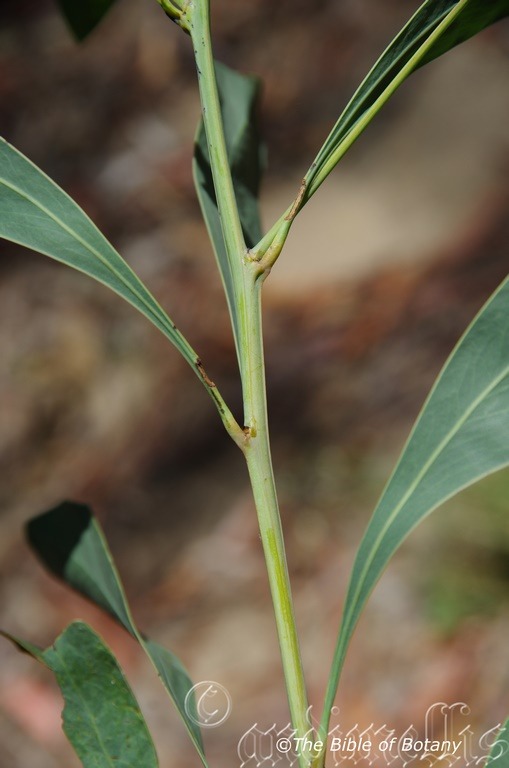
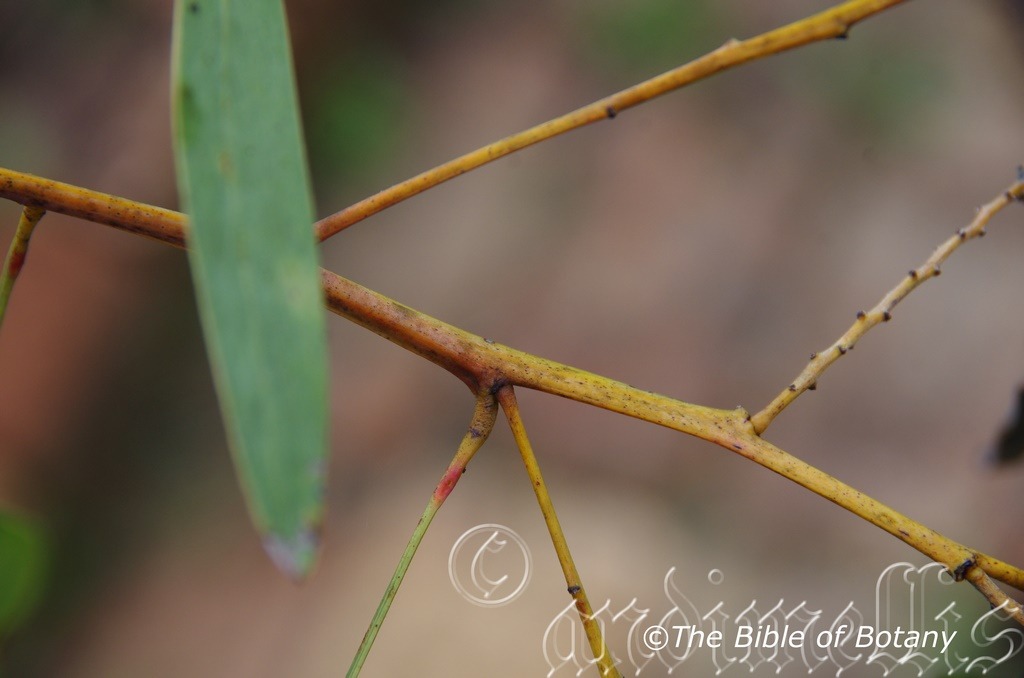








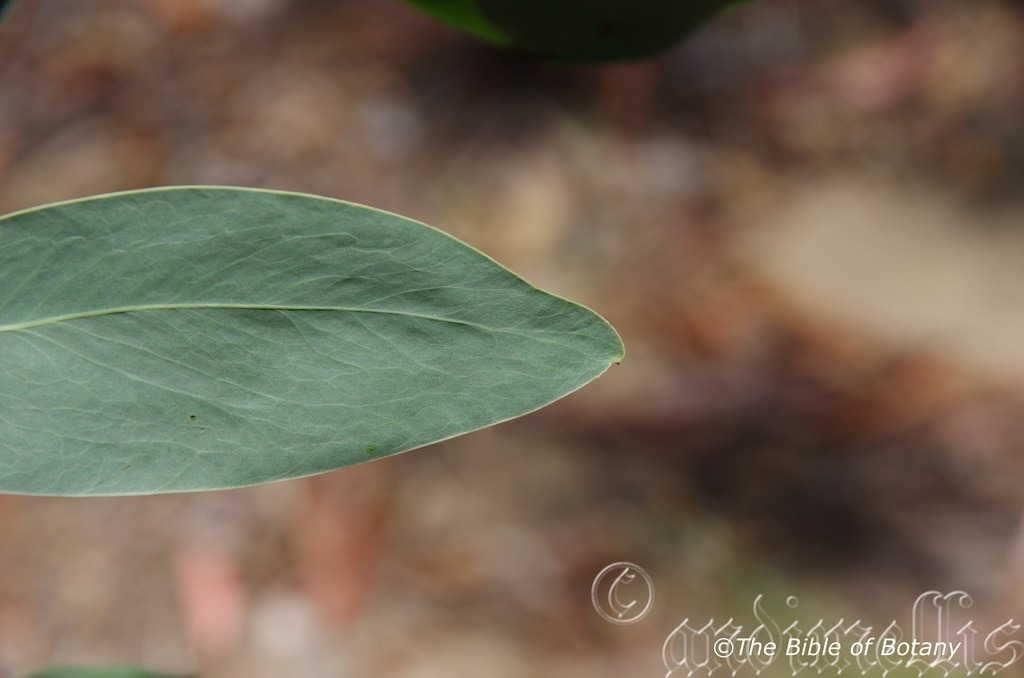
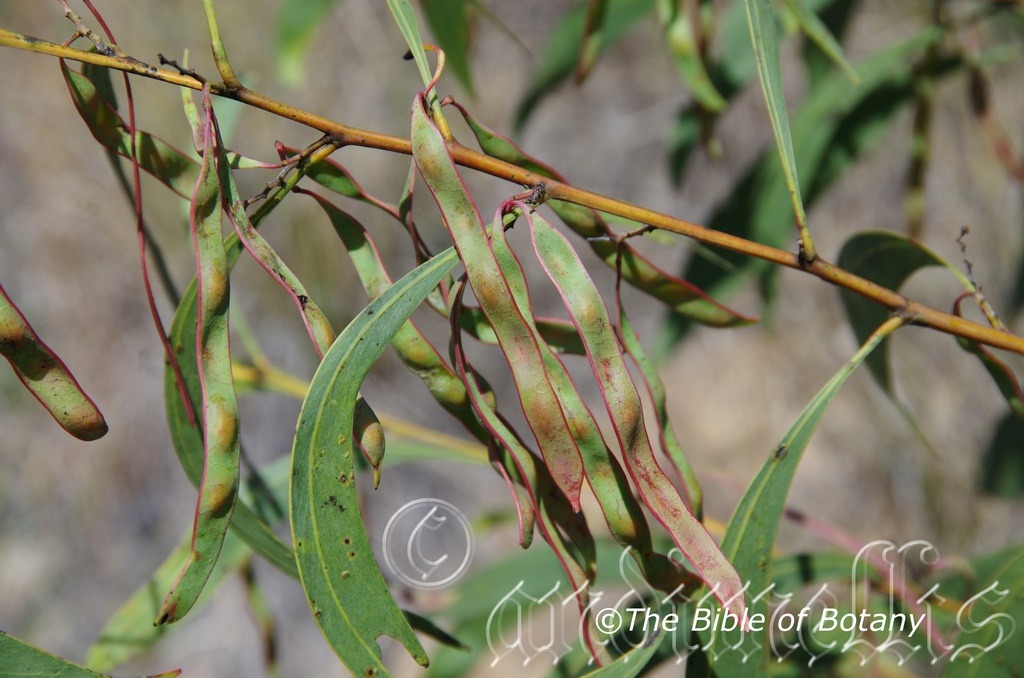
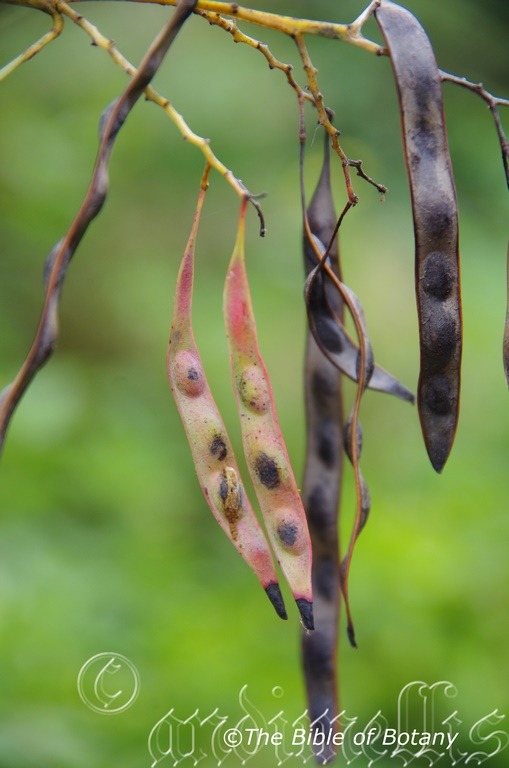



Acacia falcata
Classification:
Class: Magnoliophyta
Order: Fabales
Family: Fabaceae
Subfamily: Mimosoideae
Genus: From ἀκακία, which is Ancient Greek or later Acanthium, which is Latin for to have a sharp point. It refers to the first species named by Dioscorides the Greek Botanist for the Egyptian plant Acacia arabica, which has very sharply pointed spines.
Specie: From Falcata, which is Latin for a scythe or sickle. It refers to leaves, which have a shape like the scythe or sickle shape.
Sub specie:
Common Name:
Distribution:
Acacia falcata is found south from Gladstone in southern coastal Queensland to Bermagui in north eastern coastal New South Wales. Further north it is found in disjunct populations to Ingham. It is found on the Western Slopes on and east of the Great Dividing Range to the coast.
https://avh.ala.org.au/occurrences/search?taxa=Acacia+falcata#tab_mapView
Habitat Aspect Climate:
Acacia falcata prefer full sun to partial shade. It grows in dry sclerophyll forests on flats and gentle slopes. The altitude ranges from 5 meters ASL to 1150 meters ASL
The temperatures range from minus 3 degrees in July to 38 degrees in January.
The rainfalls range from lows of 600mm to an average of 3000mm annually.
Soil Requirements:
Acacia falcata prefer to grow on skeletal sandy loams to light clays. The soils are derived from decomposed basalts, quartz, granites and sandstones. The soils pH ranges from 5.5pH to 7pH. It does not tolerate water logged soils. Non saline soils to moderately saline soils are tolerated.
Height & Spread:
Wild Plants: 2m to 5m by 2m to 5m.
Characteristics:
Acacia falcata‘s trunk is deep grey to deep grey-brown almost black. The trunk is finely fissured to deeply fissured are at times glabrous. Branchlets are angled, flattened, and glabrous and are pale olive?yellow to pale olive green.
Acacia falcata‘s phyllodes vary greatly from narrowly elliptical to oblanceolate to broad oblanceolate or sub falcate to falcate in shape and measure 70mm to 190mm in length by 9mm to 40mm width. The asymmetrical base is tapering cuneata while the apex is obtuse to sub-acute often with an apiculate decurved apex. The concolourous laminas are grey-green to glaucous or at times mid grass-green. The margins are entire while the laminas are flat or at times slightly undulating. The mid vein is strongly prominent. There is one inconspicuous gland near the junction of the phyllode base and the pulvinus which measure 2mm to 6mm in length.
The inflorescence of Acacia falcata are globose heads on racemes or panicles from the terminals or auxiliary phyllode s. The rachises and peduncles are glabrous. There are 7 to 22 globose heads on a panicles or raceme with 12 to 20 individual flowers in the final panicle. Individual heads measure 6mm to 8mm in diameter while the individual flowers measure 2.5mm to 3.5mm in length. The rachises and peduncles are glabrous or covered in fine white to golden pannate hairs. The rachises measure 20 to 70mm in length while the peduncles measure 3mm to 4mm in length and the pedicels measure 0mm to 0.2mm in length.
The individual flowers are 5 merous. The cream to pale lemon calyxes and 5 calyx lobes are erect and glabrous. The orbicular petals are pale cream to pale lemon-yellow while the stamens are pale creamy yellow almost white to lemon-yellow. Acacia falcata flowers appear from April through to August.
Acacia falcata fruits are linear straight pods. They measure 50mm to 120mm in length by 5mm to 8mm in width. The pods are flat chartaceous only expanding around the seeds and slightly constricted along one margin more than the other. The glaucous, blue-green or at times mid grass-green pods turn black with reddish-brown margins when ripe sub woody pods turn brownish-pink when ripe. The 4 to 7 broadly oblong to ovate?elliptical seeds measure 3.5mm to 4mm in length by 2.5mm to 3mm in width and 2mm to 2.5mm in depth. The semi glossy black seeds have a white funicle which encircles but does not adhere to the seed.
Wildlife:
Acacia falcata‘s wildlife is unknown to the author.
Cultivation:
Acacia falcata is a beautiful wide spreading large shrub that are best suited to temperate to cool tropical gardens east of the Great Dividing Range or western slopes. Garden subjects will grow from 2 meter to 4 meters in height by 3 meters to 4 meters in diameter when grown in the open.
In native gardens it can be used to add nitrogen to the soil and to help break up medium clays making them more friable. It is an excellent starter plant to give quick growth protect more delicate plants and good flowering displays over several weeks throughout the winter months. The foliage is particularly attractive and contrasts green finer leaf plants admirably. Try prostrate red flowering Grevilleas, bright coloured annuals or a mixed bed with a mosaic of different coloured foliages between clumps of Acacia falcata or use it as the central feature in smaller gardens.
Garden beds would need to be open with plenty of space between plants to allow good air flow and plenty of light to reach all the inhabitants. Crowding this type of foliage with other plants will see them lose all the effectiveness. Correct spacing will contrast the foliages better without one overpowering the other plants in the garden. For mass planting and hedgerows space the plants with at least 4 meters to 4.5 meters centers. The plants can be lightly pruned to enhance bushiness and better flowering.
4 plants separately planted or plant 2 close together and separate the other 2 or 3 on the far side of the bed to give width and depth where you want it. The use of annuals helps to attract the viewer to the permanent plants foliage as they are the dominant foliage you want people to notice in the patch. In the case of Acacia falcate you could substitute very small Grevillea, Crowea, Hovea or even Verticordia species in lieu of the native annuals. A bed of mixed Anigosanthus species surrounding Acacia falcata is particularly stunning. Remember most annuals flower when Acacia falcata is resting during the summer and most Grevilleas will flower at the same time so a blend may be the way to go. Annuals mixed with Acacia elongata help to give medium to large gardens depth and make them look larger than what they really are due to the smaller diameter of mature plants. It works well with Grevillea masonii, other Grevilleas of similar size or red and orange flowering Anigozanthus sp. which have beautiful contrasting foliages. This is the key to success with the flowers being a bonus. Plants look good for 4 or 6 years before they should be replaced.
Propagation:
Seeds: Acacia falcata require treatment before sowing. Pre-treat by placing the seeds into a glass of very hot water. Allow the water to cool and leave to soak for 10 hours. Seeds that have not swollen repeat the exercise.
Sow into a seed raising mix. When the seedlings are 25m to 50mm tall, prick them out and plant them into 50mm native tubes using a seed raising mix.
Once the seedlings reach 200 to 250mm in height plant them out into their permanent position. For mass plantings plant at 6 meter to 8 meter spacing?s where the tress will be culled later or 12 meters where a permanent stand is required.
Fertilize using Seaweed, fish emulsion or organic chicken pellets soaked in water on an alternate basis. Fertilize every two months until the plants are established then annually either in early September to March to maintain health, vitality and better flowering.
Further Comments from Readers:
All information is included in good faith and has been thoroughly researched prior to printing. The website or the author does not warrant or guarantee the accuracy of any information on these pages, nor does the website or the author accept any responsibility for any loss arising from the use of the information found within. The views and opinions are strictly those of the author or those members who chose to actively participate in the contents herein.
Hi reader, it seems you use The Bible of Botany a lot. That’s great as we have great pleasure in bringing it to you! It’s a little awkward for us to ask, but our first aim is to purchase land approximately 1,600 hectares to link several parcels of N.P. into one at The Pinnacles NSW Australia, but we need your help. We’re not salespeople. We’re amateur botanists who have dedicated over 30 years to saving the environment in a practical way. We depend on donations to reach our goal. If you donate just $5, the price of your coffee this Sunday, We can help to keep the planet alive in a real way and continue to bring you regular updates and features on Australian plants all in one Botanical Bible. Any support is greatly appreciated. Thank you.
In the spirit of reconciliation we acknowledge the Bundjalung, Gumbaynggirr and Yaegl and all aboriginal nations throughout Australia and their connections to land, sea and community. We pay our respect to their Elders past, present and future for the pleasures we have gained.





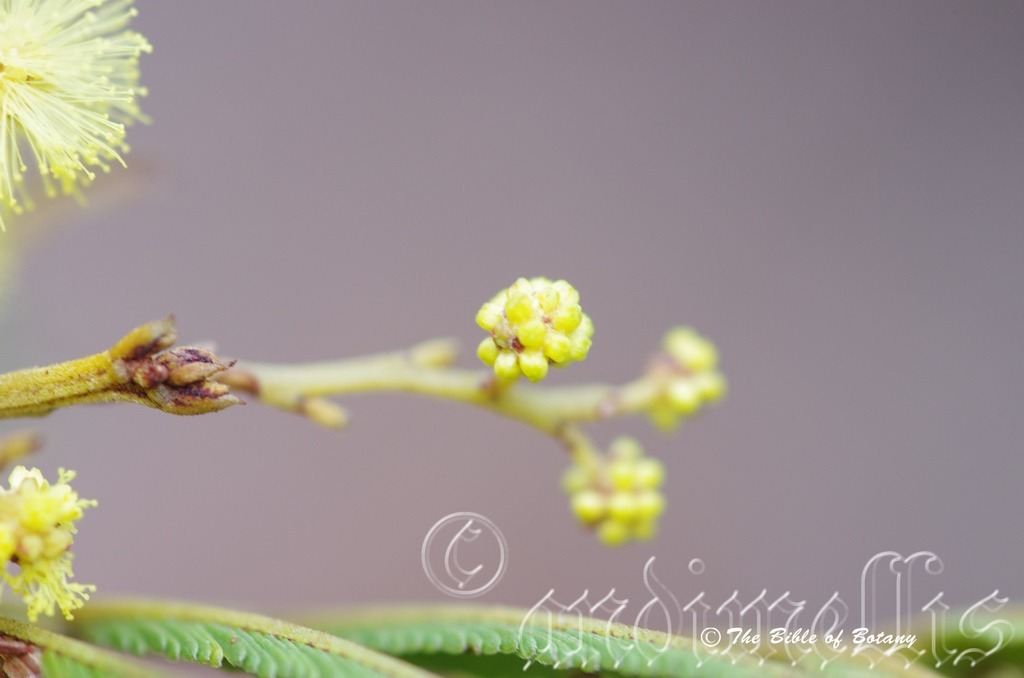
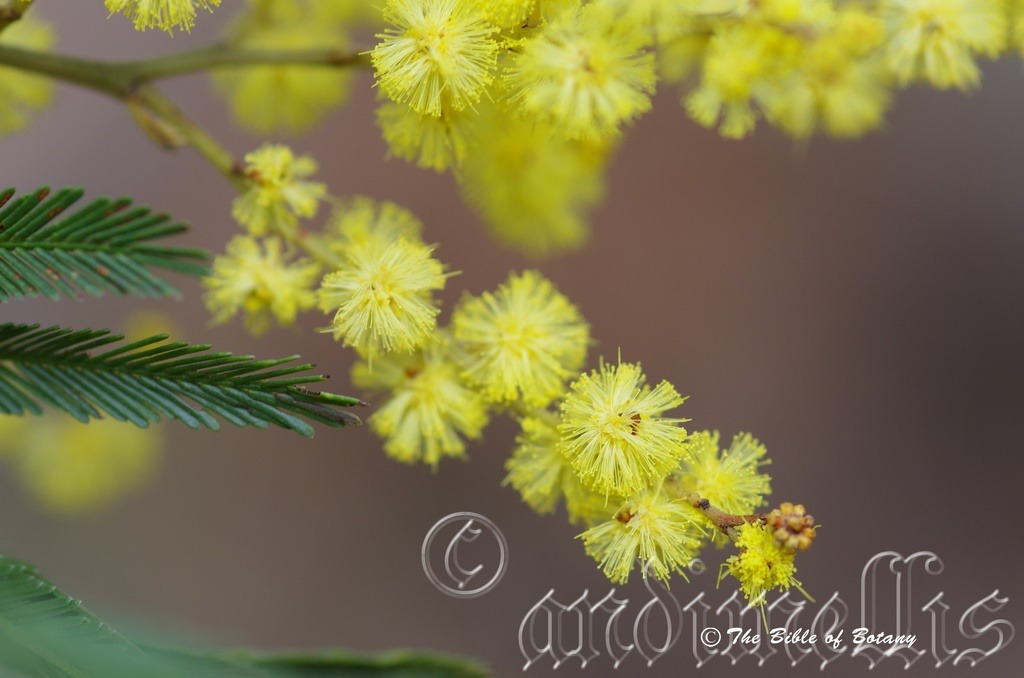

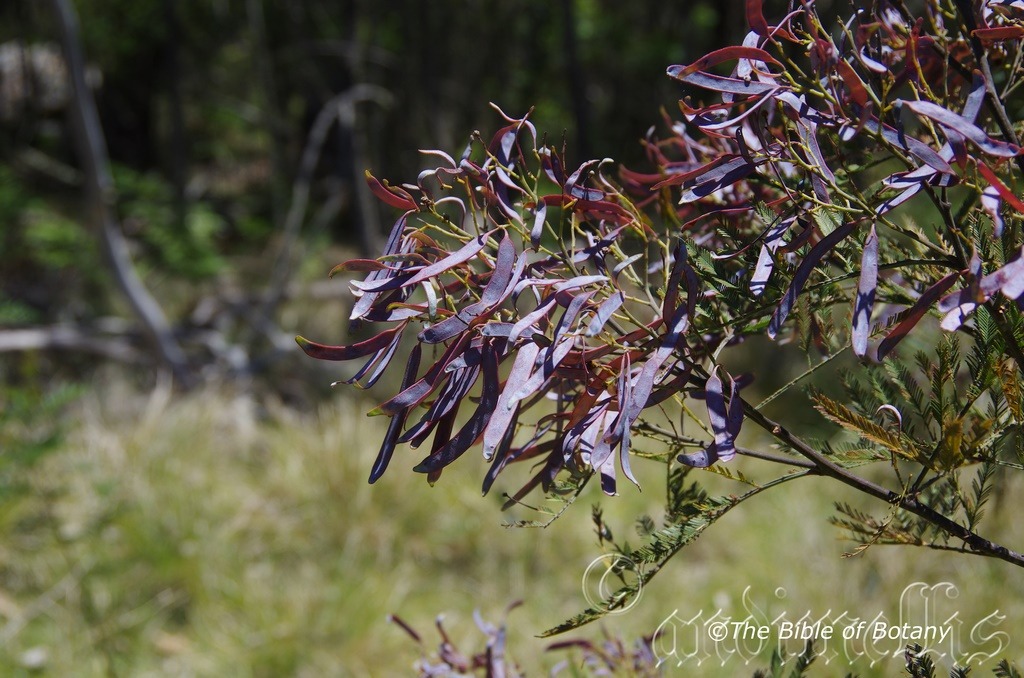

Acacia filicifolia
Classification:
Class: Magnoliophyta
Order: Fabales
Family: Fabaceae
Subfamily: Mimosoideae
Genus: From ἀκακία, which is Ancient Greek or later Acanthium, which is Latin for to have a sharp point. It refers to the first species named by Dioscorides the Greek Botanist for the Egyptian plant Acacia arabica, which has very sharply pointed spines.
Specie: From Filices/filix, which is Latin for a fern and Folium, which is Latin for foliage. It refers to a plants leaves resembling the pinnae of a fern.
Sub specie:
Common Name:
Distribution:
Acacia filicifolia is found south from the Queensland New South wales border south to Bodalla. It is mainly found on the higher slopes of the Great Dividing Range.
https://avh.ala.org.au/occurrences/search?taxa=Acacia+filicifolia#tab_mapView
Habitat Aspect Climate:
Acacia filicifolia prefer full partial shade. It grows below medium to tall size trees in dry forests in sheltered positions. They can be found on gentle slopes to rocky outcrops. The altitude ranges from 600 meters ASL to 1150 meters ASL
The temperatures range from minus 5 degrees in July to 37 degrees in January.
The rainfalls range from lows of 650mm to an average of 1550mm annually.
Soil Requirements:
Acacia filicifolia prefer growing on course sandy loams to medium sandy clays derived from decomposed granites or brown basalt. The skeletal soils overly the parent rock. The soils range from a pH of 4.5 to pH5.5. It is not tolerant of water logged soils though water may lay on surface depressions after seasonal rains. Non saline soils to slightly saline soils are tolerated.
Height & Spread:
Wild Plants: 4m to 14m by 2m to 6m.
Characteristics:
Acacia filicifolia‘s larger stems are semi erect to spreading, deep brown, glabrous to slightly fissured or slightly scabrous. The smaller stems are terete, grass-green and sparsely covered in fine white sericeous hairs.
Acacia filicifolia‘s alternate leaves are bipinnate at irregular intervals along the stems. The main rachises, petioles, secondary rachises and petiolules are deep grass-green and covered in fine white sericeous hairs. The main rachises measure 10mm to 60mm in length, petioles measure 7mm to 30mm in length while the secondary rachises measure 10mm to 80mm in length and the petiolules measure 0mm to 0.2mm in length. The opposite leaflets are angled upwards along the petiolules.
There is a single or rarely 2 glands positioned along the upper half of the leaflet main vein. There are also a single or rarely 2 glands positioned near the base of the leaflets. There is a jugary gland positioned just below the petiole on the main rachises and 1 to 7 interjugary glands positioned evenly between the petioles. There are 2 to 6 pairs of secondary rachises along the main rachises with the terminal pair being the shortest. There are 12 to 35 pairs of leaflets on the secondary rachises. The narrowly oblong to linear leaflets measure 5mm to 15mm in length by1mm to 6mm in width. The bases are rounded to truncate while the apexes are obtuse. The concolourous laminas are grass-green to deep grass-green, glossy, glabrous, sparsely covered in fine, white sericeous hairs which are mainly marginal to sub ciliate. The margins are entire. The veins are obscure to faintly visible.
The inflorescens of Acacia filicifolia are born singularly in globose heads on a raceme from the leaf axils. There are 7 to 25 heads to a raceme with 24 to 43 individual flowers in a globose head. The slender, grass-green main rachises and peduncles are covered in fine, white sericeous hairs. The main rachises measure 40 to 130mm in length while the peduncles measure 5mm to 11mm in length.
The individual flowers are 5 merous. The 5 pale lemon-green calyx?s lobes are erect and glabrous. The orbicular petals are pale yellow to bright yellow while the stamens are pale yellow to bright yellow. The individual flowers including the bright yellow stamens measure 2.5mm to 3.5mm in length and measure 5mm to 7mm in diameter overall. Acacia filicifolia?s sweet scented flowers appear from July through to mid-October.
Acacia filicifolia’s fruits are long, straight to slightly curved, flat, thinly coriaceous pods. The pods are glabrous, convex and scabrous over the seeds and slightly constricted along the margins between the seeds. The pods are covered in minute white to golden sericeous hairs and measure 20mm to 140mm in length by 9mm to 12mm in width. The grass-green pods turn brown to brown-grey externally and rusty-brown internally and glabrous when ripe.
The slightly flattened, ovoidal seeds are deep brown-black and glossy with a short, white funicle which is greatly expanded over one end of the seed. The 2 to 12 seeds per pod measure 5mm to 6mm in length by 2.5mm to 3mm in width by 1.8mm to 2.5mm in depth. The funicle measures 3mm to 3.5mm in length.
Wildlife:
Acacia filicifolia?s wildlife is unknown to the author.
Cultivation:
Acacia filicifolia is an interesting small tree which looks at home in any bush garden or rockery in semi-arid areas or coastal areas where the drainage is good and where the soils are fatty sandy loams to medium sandy clays. Garden subjects will grow into small spreading trees in a bush setting in the open without competition. In the garden it will grow from 5 meters to 12 meters in height by 3 meters to 6 meters in diameter with a dense canopy.
In native gardens it can be used to add nitrogen to the soil and to help break up heavy clays making them more friable. It is an excellent starter plant to give quick growth protect more delicate plants and give good contrast flowering displays in early winter to mid Spring when there are fewer flowering plants around. The foliage is very attractive and noticeable with nitrogen fixation it is a vital part of the garden until other plants become established. Try prostrate red flowering Grevilleas, bright coloured annuals or a mixed bed with a mosaic of different coloured foliage’s between clumps of Acacia filicifolia.
Garden beds would need to be open with plenty of space between plants to allow good air flow and plenty of light to reach all the inhabitants. Crowding this type of foliage with other plants will see them lose all the effectiveness of shape and leaf patterns as they grow together and merge into a single unit of untidiness. Correct spacing will contrast the foliages better without one overpowering the other plants in the garden. For mass planting space the plants with at least 5 meters to 6 meters centers if you are considering them.
If you are using them amongst boulders in the garden, plant them sparingly to attain a barren scene, so not to make the area look cluttered or detract from the other features like the boulders. 4 or 5 in an area of 500 square meters would be ample. 4 plants separately planted or plant 2 close together and separate the other 2 or 3 on the far side of the bed to give width and depth where you want it. The use of annuals helps to attract the viewer to the permanent plants foliage as they are the dominant foliage you want people to notice in the patch. In the case of Acacia cangaiensis you could substitute the annuals with very small Grevillea, Crowea, Hovea or even Verticordia species. It works well with Grevillea masonii other Grevillea sp. of similar size but contrasting foliages are the key to success with the flowers being a bonus. Plants will generally live for 4 or 5 years.
I have seen this species grow from root suckers in the wild and in cultivation.
Propagation:
Seeds: Acacia filicifolia require treatment before sowing. Pre-treat by placing the in the refridgertor for several weeks before sowing in spring. Germination is better if the seeds are then placed in a glass of hot water not boiling. Allow the water to cool and leave to soak for 8 to10 hours. Seeds that have not swollen repeat the exercise.
Sow into a seed raising mix. When the seedlings are 25mm to 50mm tall, prick them out and plant them into 50mm native tubes using a seed raising mix.
Once the seedlings reach 200mm to 250mm in height plant them out into their permanent position. For mass plantings plant at 2.5 meter to 3 meter centers for a quick growing small hedge.
Fertilize using Seaweed, fish emulsion or organic chicken pellets soaked in water on an alternate basis. Fertilize every two months until the plants are established then annually either in early September to March to maintain health, vitality and better flowering.
Further Comments from Readers:
All information is included in good faith and has been thoroughly researched prior to printing. The website or the author does not warrant or guarantee the accuracy of any information on these pages, nor does the website or the author accept any responsibility for any loss arising from the use of the information found within. The views and opinions are strictly those of the author or those members who chose to actively participate in the contents herein.
Hi reader, it seems you use The Bible of Botany a lot. That’s great as we have great pleasure in bringing it to you! It’s a little awkward for us to ask, but our first aim is to purchase land approximately 1,600 hectares to link several parcels of N.P. into one at The Pinnacles NSW Australia, but we need your help. We’re not salespeople. We’re amateur botanists who have dedicated over 30 years to saving the environment in a practical way. We depend on donations to reach our goal. If you donate just $5, the price of your coffee this Sunday, We can help to keep the planet alive in a real way and continue to bring you regular updates and features on Australian plants all in one Botanical Bible. Any support is greatly appreciated. Thank you.
In the spirit of reconciliation we acknowledge the Bundjalung, Gumbaynggirr and Yaegl and all aboriginal nations throughout Australia and their connections to land, sea and community. We pay our respect to their Elders past, present and future for the pleasures we have gained.

Norman Park Qld.

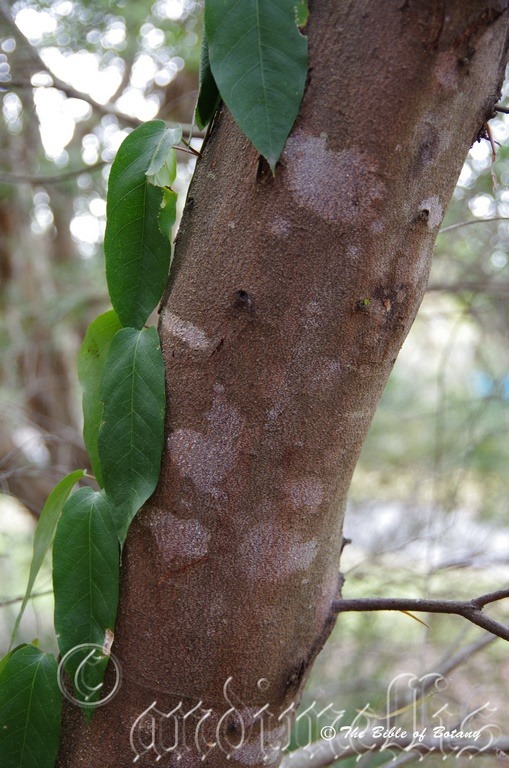
Norman Park Qld.
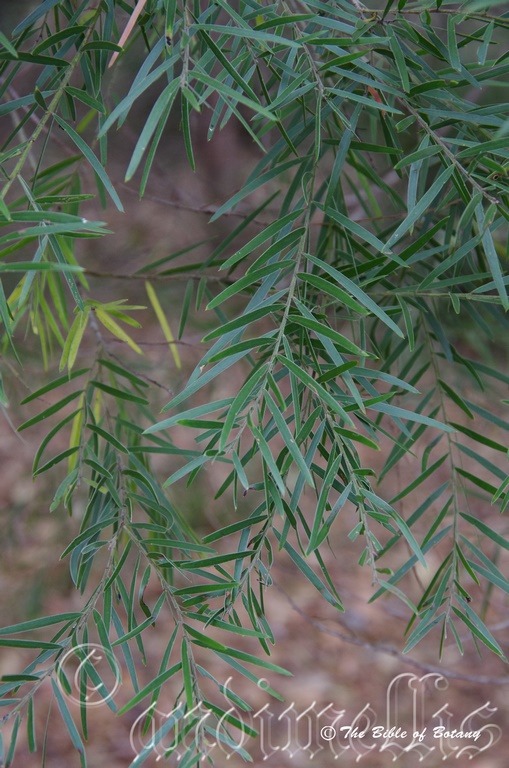
Norman Park Qld.

Norman Park Qld.


Norman Park Qld.
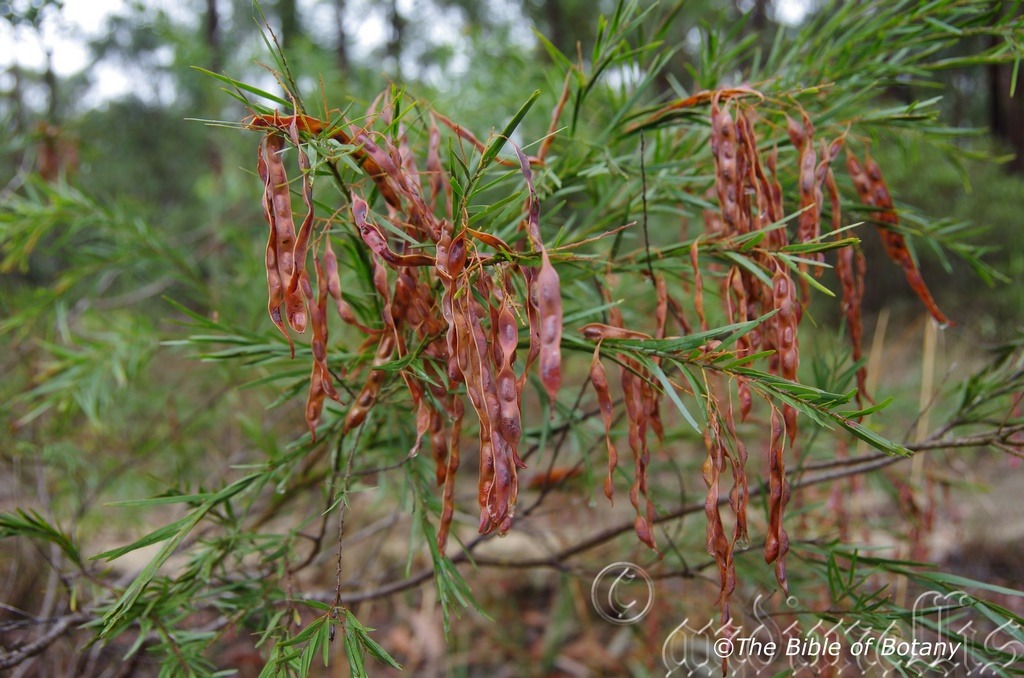
The Pinnacles NSW.
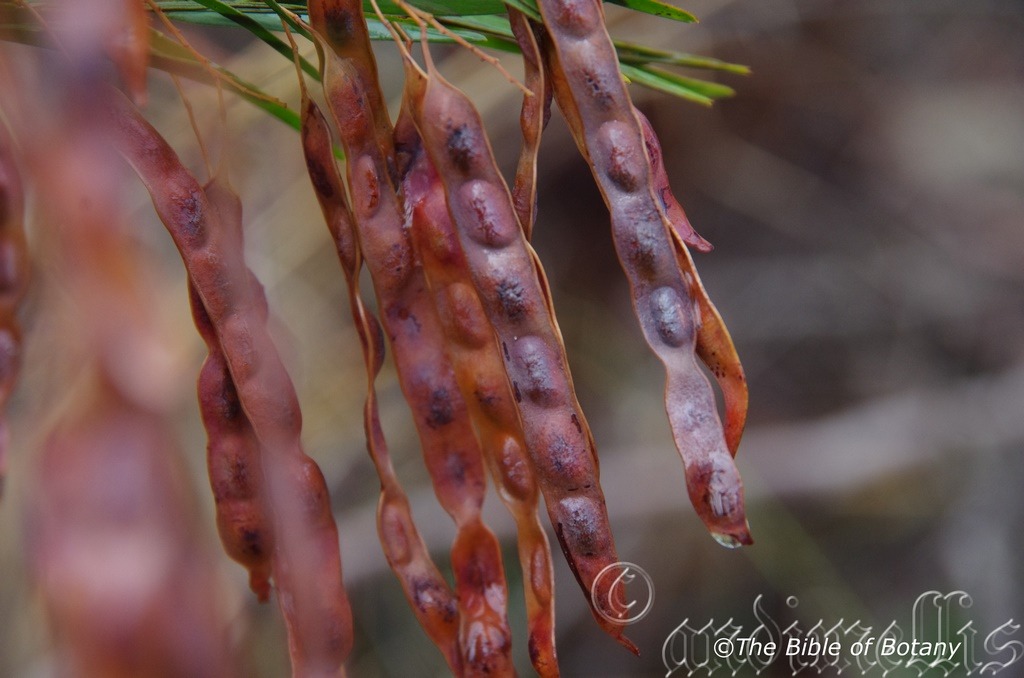
The Pinnacles NSW.

Kelvin Grove Creek Qld.

Kelvin Grove Creek Qld.

Ochrogaster lunifera The Pinnacles NSW.
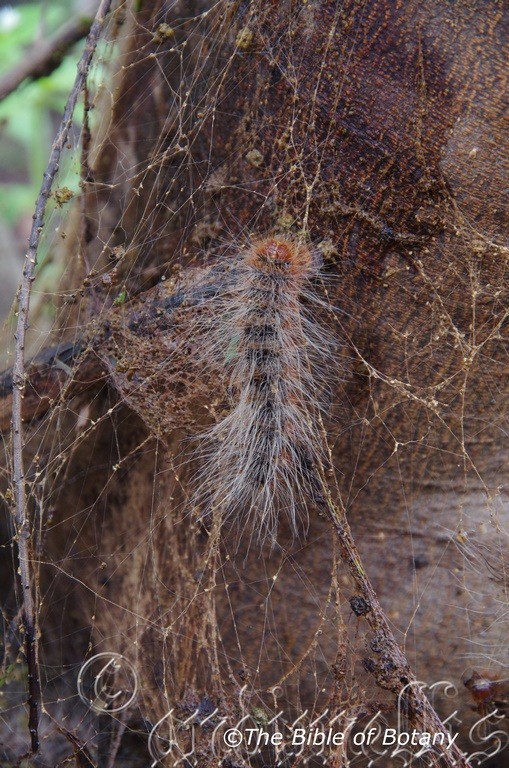
Ochrogaster lunifera The Pinnacles NSW.

Unknown Coocoons The Pinnacles NSW.
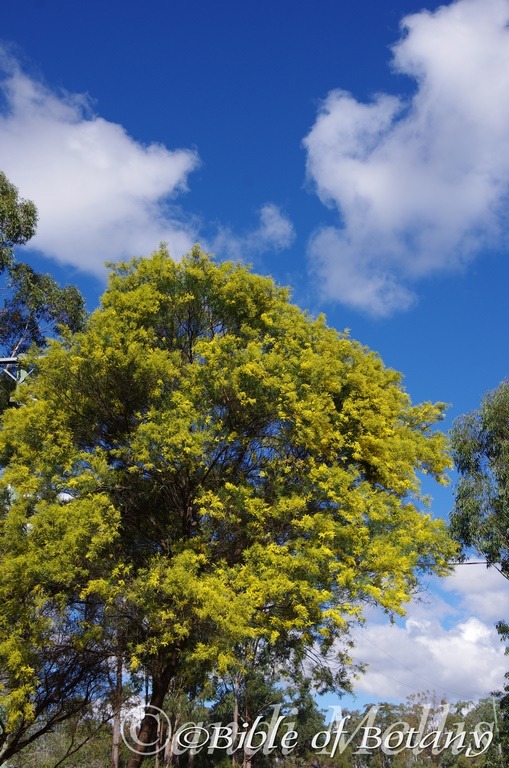
Author’s Garden The Pinnacles NSW.
Acacia fimbriata
Classification:
Class: Magnoliophyta
Order: Fabales
Family: Fabaceae
Subfamily: Mimosoideae
Genus: From ἀκακία, which is Ancient Greek or later Acanthium, which is Latin for to have a sharp point. It refers to the first species named by Dioscorides the Greek Botanist for the Egyptian plant Acacia arabica, which has very sharply pointed spines.
Specie: From Fimbri?ta, which is Latin for a fringe. It refers to the margins of a structure or organ, which has a fringe.
Sub specie:
Common Name: Fringe Wattle or Brisbane Golden Wattle.
Distribution:
Acacia fimbriata can be found growing naturally along streams and creeks along the East coast of Australia south from Rockhampton in central coastal Queensland to Bega in southern coastal New South Wales. There is an isolated colony around Townsville in Queensland. It grows on and east of the Great dividing Range to the coast.
https://avh.ala.org.au/occurrences/search?taxa=Acacia+fimbriata#tab_mapView
Habitat Aspect Climate:
Acacia fimbriata prefer full sun to partial shade. It grows in moist open forests, littoral rainforests, and scrubby woodlands adjacent to rainforests or along creeks and streams. The altitude ranges from 10 meters ASL to 300 meters ASL.
The temperatures range from lows of minus 2 degrees in July to 34 degrees in January.
The rainfall ranges from 700mm to 1200mm annually.
Soil Requirements:
Acacia fimbriata prefer deep, fertile, sandy loams, light fatty clays, medium clays or light silts to medium silts. The soils are usually derived from decomposed sandstones, brown basalts, black basalts, shales, metamorphic rocks, alluvial deposits or at times accumulated peaty beach sands. The soil?s pH ranges from 4.5pH to 7pH. It does not tolerate water logged soils. None saline soils to moderately saline soils are tolerated.
Height & Spread:
Wild Plants: 4m to 6m by 4m to 6m.
Characteristics:
Acacia fimbriata bark is pale brown to deep green-brown while the branchlets are lime green and covered in transparent to translucent, antrorse hairs.
The phyllodes are narrowly elliptical to narrowly lanceolate or slightly falcate and measure 20mm to 50mm in length by 2mm to 5mm in width. There is a single prominent gland positioned 3mm to 7mm above the pulvinus. The pulvinus measures 1mm to 2mm in length. The bases are tapering while the apexes are acute with a straight mucronate tip. The concolourous laminas are olive?green to grass-green and glabrous to sparsely covered in transparent to translucent antrorse hairs. The margins are entire while the laminas are flat.
The inflorescens of Acacia fimbriata are globose heads on racemes from the terminals or auxiliary phyllodes. The rachises and peduncles are glabrous or sparsely covered in transparent to translucent antrorse hairs. There are 8 to 25 globose heads on a raceme with 10 to 20 individual flowers in the final panicle. Individual heads measure 6mm to 8mm in diameter while the individual flowers measure 2.5mm to 3.5mm in length. The rachises and peduncles are glabrous or covered in fine white to golden pannate hairs. The rachises measure 20mm to 55mm in length while the peduncles measure 3mm to 4mm in length and the pedicels measure 0mm to 0.2mm in length.
The individual flowers are 5 merous. The pale lemon to bright yellow calyxes and 5 calyx lobes are erect and glabrous. The orbicular petals are lemon-yellow to bright yellow while the stamens are pale lemon to deep lemon-yellow. The flowers measure 3.5mm to 5mm in diameter overall. Acacia fimbriata flowers appear from mid-August to September.
Acacia fimbriata fruits are linear, straight to slightly curved glabrous pods. The pods measure 30mm to 95mm in length by 5mm to 8.5mm in width. The pods are flat chartaceous only expanding around the seeds and slightly constricted along one margin more than the other. The lime-green or at times mid grass-green pods turn brown when ripe. The 4 to 10 broadly oblong to ovate?elliptical seeds measure 4mm to 4.5mm in length by 3mm to 3.6mm in width and 2.6mm to 3mm in depth. The glossy, black seeds have a white filiform funicle which expands greatly where it is attached to the seed.
Wildlife:
This is an ideal plant for the control of soil erosion and nitrogen fixation.
It supports a large variety of small beetles including the green wattle hopper. (Hackerobrachys viridiventris) Native bees have been seen foraging pollen from the flowers.
It is also visited by the Imperial Hairstreak butterfly Jalmenus evagoras evagoras.www. saveourwaterwaysnow.com.au Odd trees are often denuded by the bag-shelter moth or processionary caterpillar, Ochrogaster lunifera.
The green pods and seeds are eaten by the Crimson Rosella, Platycerus elegans and are a particular favourite of the King Parrot Alisterus scapularis.
Cultivation:
Acacia fimbriata is a beautiful wide spreading large shrub that is best suited to temperate to cool tropical gardens east of the Great Dividing Range or western slopes. Garden subjects will grow from 3 meter to 4 meters in height by 3 meters to 4 meters in diameter when grown in the open.
In native gardens it can be used to add nitrogen to the soil and to help break up medium clays making them more friable. It is an excellent starter plant to give quick growth protect more delicate plants and good flowering displays over several weeks throughout the winter months. The foliage is particularly attractive and contrasts well with plants that have deep blue-green, broad leaf plants admirably. Try prostrate red flowering Grevilleas, bright coloured annuals or a mixed bed with a mosaic of different coloured foliages between clumps of Acacia fimbriata or use it as the central feature in smaller gardens.
Garden beds would need to be open with plenty of space between plants to allow good air flow and plenty of light to reach all the inhabitants. Crowding this type of foliage with other plants will see them lose all the effectiveness. Correct spacing will contrast the foliages better without one overpowering the other plants in the garden. For mass planting and hedge rows space the plants with at least 4 meters to 4.5 meters centers. The plants can be lightly pruned to enhance bushiness and better flowering.
4 plants separately planted or plant 2 close together and separate the other 2 or 3 on the far side of the bed to give width and depth where you want it. The use of annuals helps to attract the viewer to the permanent plants foliage as they are the dominant foliage you want people to notice in the patch. In the case of Acacia fimbriata you could substitute very small Grevillea, Crowea, Hovea or even Verticordia species in lieu of the native annuals. A bed of mixed Anigozanthus surrounding Acacia fimbriata is particularly stunning. Remember most annuals flower when Acacia fimbriata is resting during the summer and most Grevilleas will flower at the same time so a blend may be the way to go. Annuals mixed with Acacia elongata help to give medium to large gardens depth and make them look larger than what they really are due to the smaller diameter of mature plants. It works well with Grevillea banksii, other Grevilleas of similar size with red and orange flowering Anigozanthus which have beautiful contrasting foliages. This is the key to success with the flowers being a bonus. Plants look good for 4 or 6 years before they should be replaced.
Propagation:
Seeds: Acacia fimbriata seeds require treatment before sowing. Pre-treat the seeds by placing the seeds into a glass of boiling water. Allow the water to cool and leave to soak for 10 hours. Seeds that have not swollen repeat the above exercise.
Sow into a seed raising mix. When the seedlings are 25mm to 50mm tall, prick them out and plant them into 50mm native tubes using a seed raising mix.
Once the seedlings reach 200mm to 250mm in height plant them out into their permanent position. Plant them at 5 meter centers to create a quick growing screen or to cover hot blank walls.
Fertilize using Seaweed, fish emulsion or organic chicken pellets soaked in water on an alternate basis. Fertilize every two months until the plants are established then annually either in early September to March to maintain health, vitality and better flowering.
Further Comments from Readers:
All information is included in good faith and has been thoroughly researched prior to printing. The website or the author does not warrant or guarantee the accuracy of any information on these pages, nor does the website or the author accept any responsibility for any loss arising from the use of the information found within. The views and opinions are strictly those of the author or those members who chose to actively participate in the contents herein.
Hi reader, it seems you use The Bible of Botany a lot. That’s great as we have great pleasure in bringing it to you! It’s a little awkward for us to ask, but our first aim is to purchase land approximately 1,600 hectares to link several parcels of N.P. into one at The Pinnacles NSW Australia, but we need your help. We’re not salespeople. We’re amateur botanists who have dedicated over 30 years to saving the environment in a practical way. We depend on donations to reach our goal. If you donate just $5, the price of your coffee this Sunday, We can help to keep the planet alive in a real way and continue to bring you regular updates and features on Australian plants all in one Botanical Bible. Any support is greatly appreciated. Thank you.
In the spirit of reconciliation we acknowledge the Bundjalung, Gumbaynggirr and Yaegl and all aboriginal nations throughout Australia and their connections to land, sea and community. We pay our respect to their Elders past, present and future for the pleasures we have gained.

Woolli Beach NSW.

Rocky Creek The Pinnacles NSW

Woolli Beach NSW.

Woolli Beach NSW.
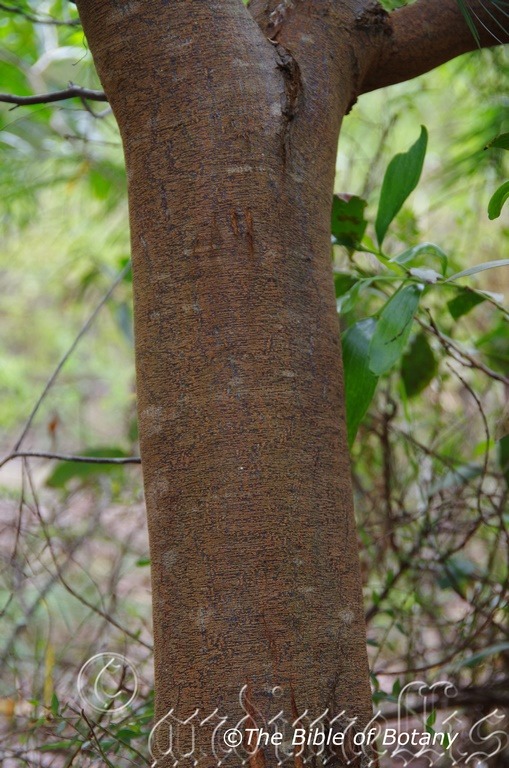
The Pinnacles NSW

Woolli Beach NSW.
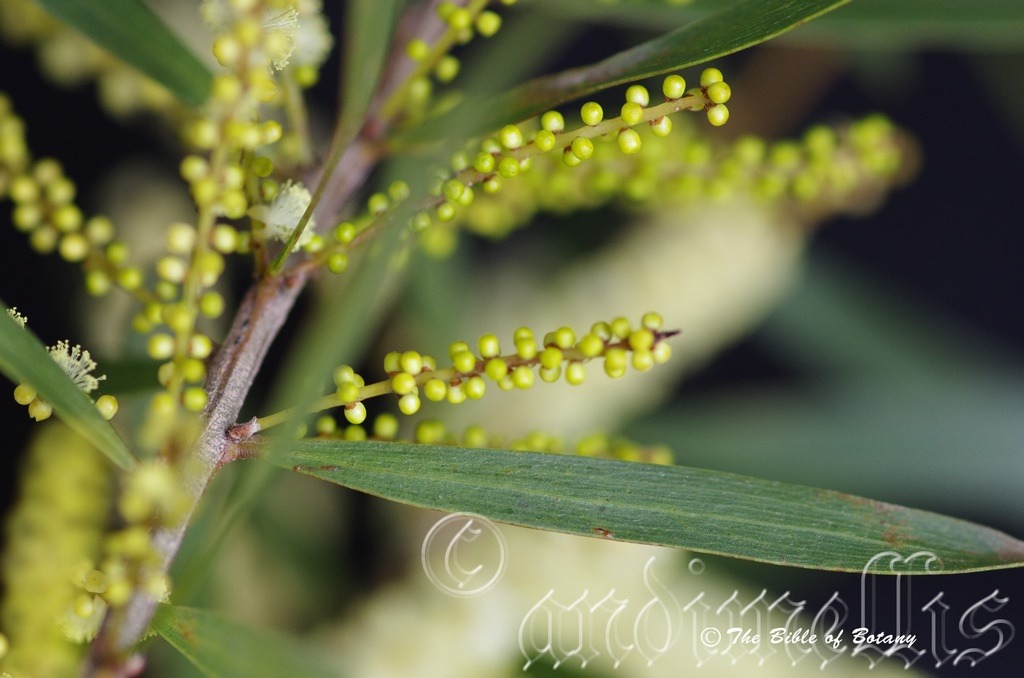
Woolli Beach NSW.
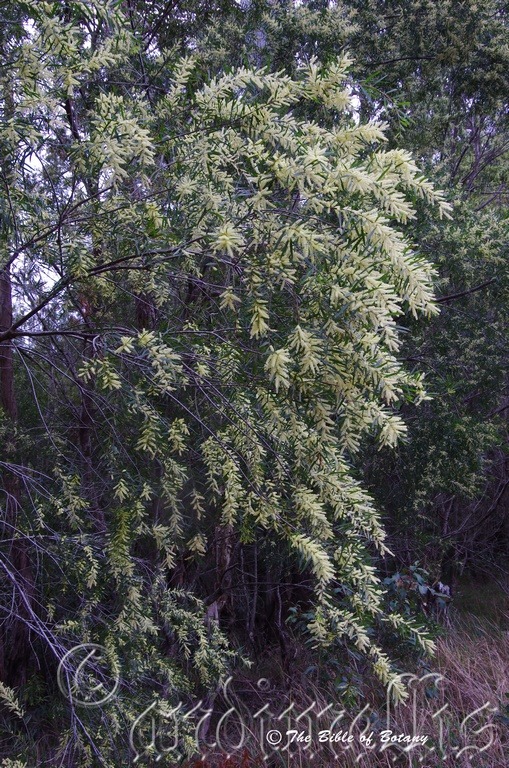
Woolli Beach NSW.
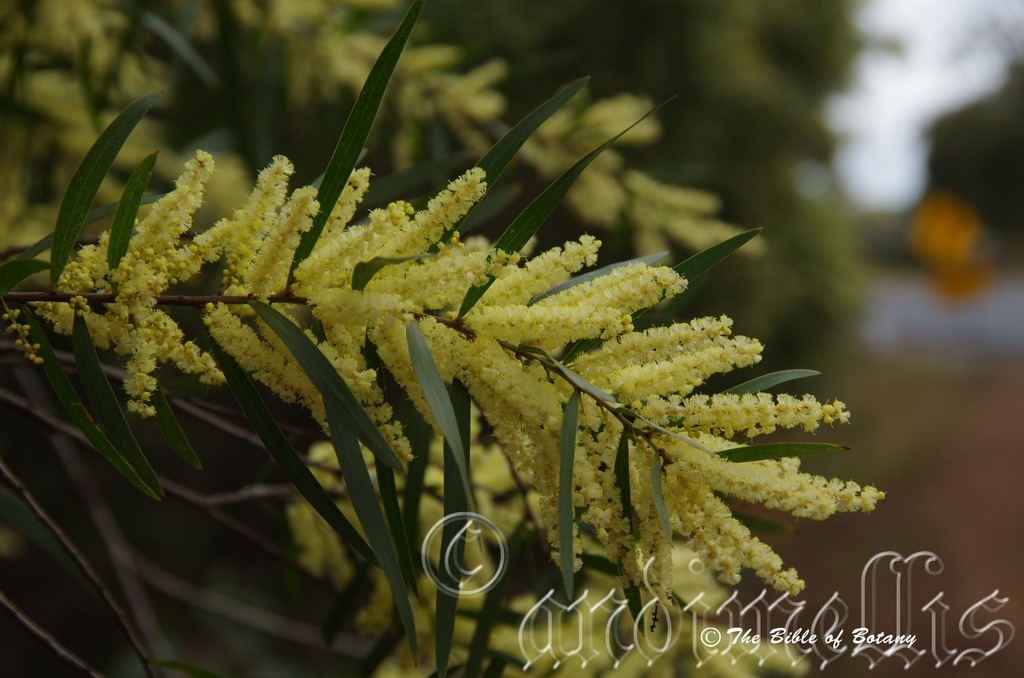
Woolli Beach NSW.

Woolli Beach NSW.

Woolli Beach NSW.
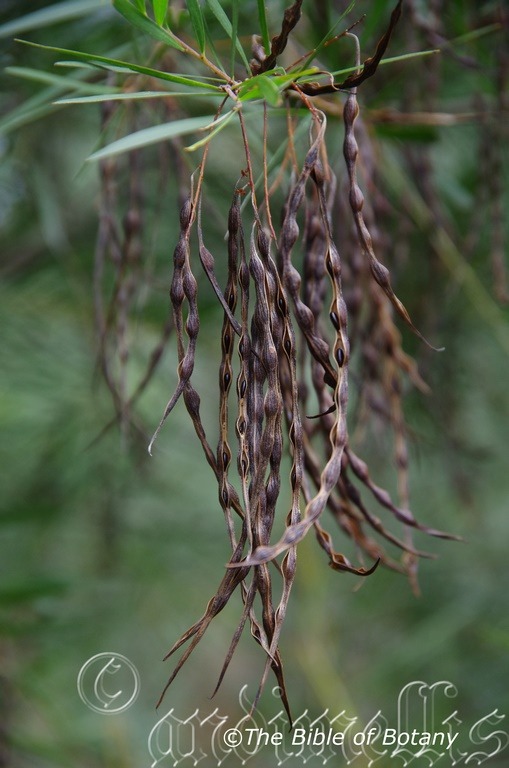
The Pinnacles NSW
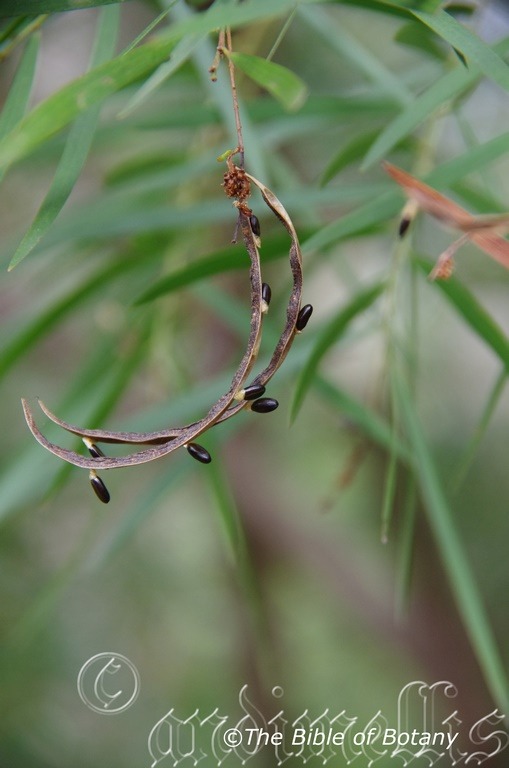
The Pinnacles NSW
Acacia floribunda
Classification:
Class: Magnoliophyta
Order: Fabales
Family: Fabaceae
Subfamily: Mimosoideae
Genus: From ἀκακία, which is Ancient Greek or later Acanthium, which is Latin for to have a sharp point. It refers to the first species named by Dioscorides the Greek Botanist for the Egyptian plant Acacia arabica, which has very sharply pointed spines.
Specie: From Floris, which is Latin for a flower or Floris, which is Roman for the Goddess of spring and flowers and Bundus, which is Latin for abundant or plenty. It refers to flowers, which are born in prolific numbers when in flower.
Sub specie:
Common Name: Coastal Sally Wattle.
Distribution:
Acacia floribunda is found south from Kroombit Tops in central eastern Queensland to Melbourne in southern Victoria. It is found onthe Western Slopes, on and east of the Great Dividing Range to the coast.
https://avh.ala.org.au/occurrences/search?taxa=Acacia+floribunda#tab_mapView
Habitat Aspect Climate:
Acacia floribunda prefers full sun to dappled sun light. It grows in open woodlands, sclerophyll forests, adjacent to coastal rainforests or along riverine rainforests on drier slopes and behind coastal sand dunes. The altitude ranges from 5 meters ASL to 1400 meters ASL
The temperatures range from minus 4 degrees in July to 34 degrees in January.
The rainfalls range from lows of 600mm to 3200mm average per annum.
Soil Requirements:
Acacia floribunda prefers better quality, deep, sandy loams, light fatty clays to medium clays. The soils are usually derived from decomposed sandstones, granites, brown basalts, black basalts, shales, alluvial deposits or accumulated peaty beach sands. The soil?s pH ranges from 4.5pH to 7pH. It does not tolerate water logged soils. None saline soils to moderately saline soils are tolerated.
Height & Spread:
Wild Plants: 3m to 9m by 4m to 6m.
Characteristics:
Acacia floribunda‘s bark is grey to grey-green with paler horizontal raised streaks. The branchlets are grass-green and are covered in dense white antrorse hairs and lenticels.
The phyllodes of Acacia floribunda are narrowly elliptical to linear and measure 50mm to 150mm in length by 2mm to 10mm in width. There is a single prominent gland positioned just above the pulvinus. The pulvinus measures 0.5mm to 2.5mm in length. The bases are tapering while the apexes are acute with a straight mucronate tip. The concolourous laminas are olive?green to grass-green, glabrous to moderately covered in transparent to translucent pannate hairs especially near the basal section. The margins are entire while the laminas are flat. There are 1 to 4 longitudinal veins which are faintly anastomosing.
The inflorescens of Acacia floribunda are spikes from the phyllodes axils. The rachises and peduncles are glabrous or sparsely covered in transparent to translucent antrorse hairs. The 1 or 2 spikes rachises measure 30mm to 80mm in length and have 14 to 40 individual flowers. The individual flowers measure 2.5mm to 3.5mm in length. The rachises and peduncles are glabrous or covered in fine white to golden pannate hairs.
The individual flowers are 4 merous. The 4 pale lemon to bright yellow sepals are erect and glabrous. The orbicular petals are lemon-yellow to bright yellow while the stamens are lemon-yellow to bright yellow. Acacia floribunda flowers appear from mid-June to September.
Acacia floribunda fruits are sub cylindrical, straight to slightly curved glabrous pods. The pods measure 60mm to 120mm in length by 2.5mm to 4.5mm in width. The pods are flat chartaceous only expanding around the seeds and slightly constricted along the margins. The lime-green or at times mid grass-green pods turn brown when ripe. The 4 to 10 narrowly cylindrical seeds measure 3mm to 4.5mm in length by 1.8mm to 2mm in diameter. The glossy, deep brown seeds have a white filiform funicle which expands greatly where it is attached to the seed.
Wildlife:
Acacia floribunda?s flowers are attractive to native bees and beetles while the Wattle Longicorn Beetle (Penthea vermicularia and Penthea solida) are a sap sucker of the smaller branchlets.
Cultivation:
Acacia floribunda is a beautiful wide spreading large shrub that are best suited to temperate to cool tropical gardens east of the Great Dividing Range or western slopes. Garden subjects will grow from 3 meter to 4 meters in height by 3 meters to 4 meters in diameter when grown in the open.
In native gardens it can be used to add nitrogen to the soil and to help break up medium clays making them more friable. It is an excellent starter plant to give quick growth protect more delicate plants and good flowering displays over several weeks throughout the winter months. The foliage is particularly attractive and contrasts well with plants that have deep blue-green, broad leaf plants admirably. Try prostrate red flowering Grevilleas, bright coloured annuals or a mixed bed with a mosaic of different coloured foliages between clumps of Acacia falcata or use it as the central feature in smaller gardens.
Garden beds would need to be open with plenty of space between plants to allow good air flow and plenty of light to reach all the inhabitants. Crowding this type of foliage with other plants will see them lose all the effectiveness. Correct spacing will contrast the foliages better without one overpowering the other plants in the garden. For mass planting and hedgerows space the plants with at least 4 meters to 4.5 meters centers. The plants can be lightly pruned to enhance bushiness and better flowering.
4 plants separately planted or plant 2 close together and separate the other 2 or 3 on the far side of the bed to give width and depth where you want it. The use of annuals helps to attract the viewer to the permanent plants foliage as they are the dominant foliage you want people to notice in the patch. In the case of Acacia falcate you could substitute very small Grevillea, Crowea, Hovea or even Verticordia species in lieu of the native annuals. A bed of mixed Anigozanthus surrounding Acacia falcata is particularly stunning. Remember most annuals flower when Acacia floribunda is resting during the summer and most Grevilleas will flower at the same time so a blend may be the way to go. Annuals mixed with Acacia elongata help to give medium to large gardens depth and make them look larger than what they really are due to the smaller diameter of mature plants. It works well with Grevillea banksii, other Grevilleas of similar size with red and orange flowering Anigozanthus which have beautiful contrasting foliages. This is the key to success with the flowers being a bonus. Plants look good for 4 or 6 years before they should be replaced.
Propagation:
Seeds: Acacia floribunda seeds require treatment before sowing. Pre-treat by placing the seeds into a glass of hot water. Allow the water to cool and leave to soak for 8 to10 hours. Seeds that have not swollen repeat the exercise.
Sow into a seed raising mix. When the seedlings are 25mm to 50mm tall, prick them out and plant them into 50mm native tubes using a seed raising mix.
Once the seedlings reach 150mm to 200mm in height plant them out into their permanent position. If a hedge or low wind break is required plant individual plants at 4 meter spacing?s.
Fertilize using Seaweed, fish emulsion or organic chicken pellets soaked in water on an alternate basis. Fertilize every two months until the plants are established then annually either in early September to March to maintain health, vitality and better flowering.
Further Comments from Readers:
All information is included in good faith and has been thoroughly researched prior to printing. The website or the author does not warrant or guarantee the accuracy of any information on these pages, nor does the website or the author accept any responsibility for any loss arising from the use of the information found within. The views and opinions are strictly those of the author or those members who chose to actively participate in the contents herein.
Hi reader, it seems you use The Bible of Botany a lot. That’s great as we have great pleasure in bringing it to you! It’s a little awkward for us to ask, but our first aim is to purchase land approximately 1,600 hectares to link several parcels of N.P. into one at The Pinnacles NSW Australia, but we need your help. We’re not salespeople. We’re amateur botanists who have dedicated over 30 years to saving the environment in a practical way. We depend on donations to reach our goal. If you donate just $5, the price of your coffee this Sunday, We can help to keep the planet alive in a real way and continue to bring you regular updates and features on Australian plants all in one Botanical Bible. Any support is greatly appreciated. Thank you.
In the spirit of reconciliation we acknowledge the Bundjalung, Gumbaynggirr and Yaegl and all aboriginal nations throughout Australia and their connections to land, sea and community. We pay our respect to their Elders past, present and future for the pleasures we have gained.
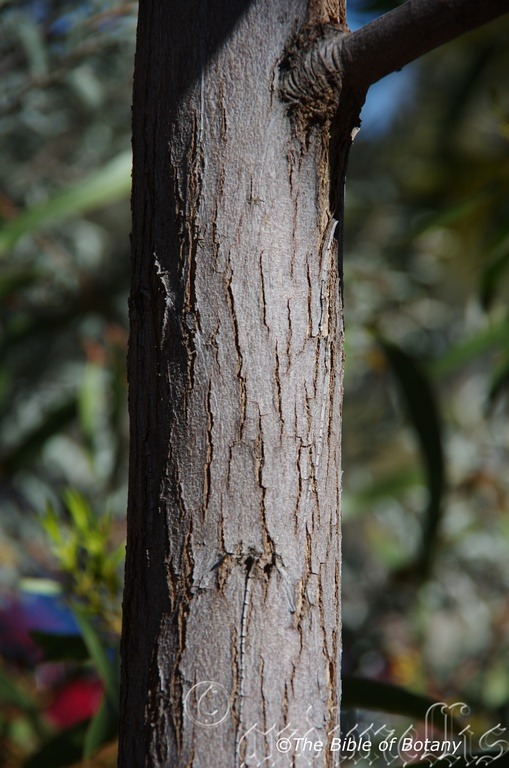
Australian National Botanic Gardens ACT.
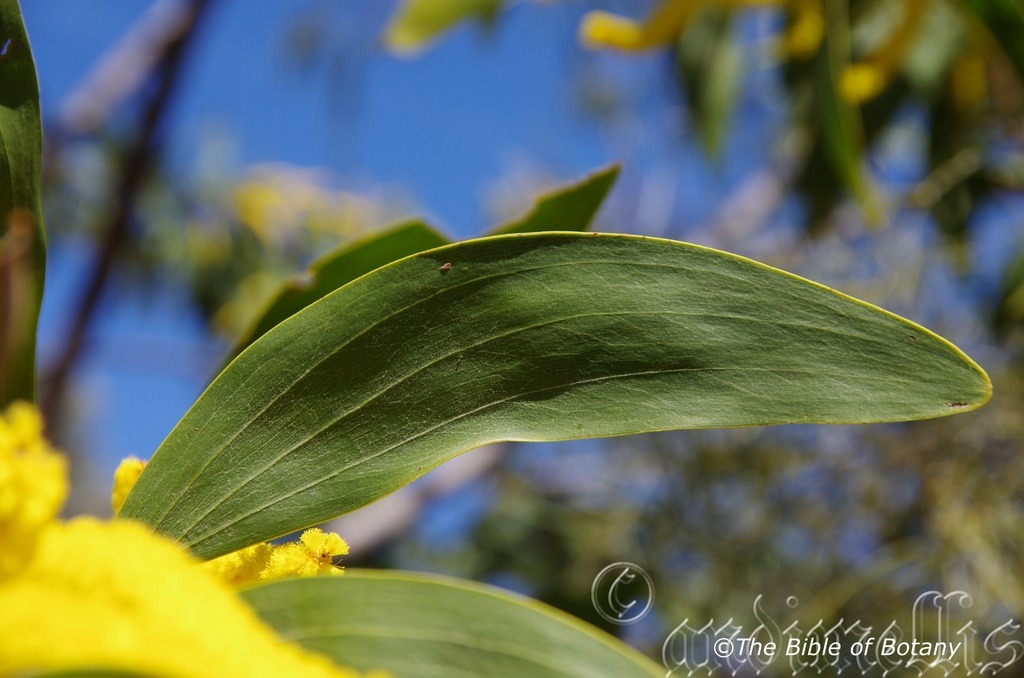
Australian National Botanic Gardens ACT.
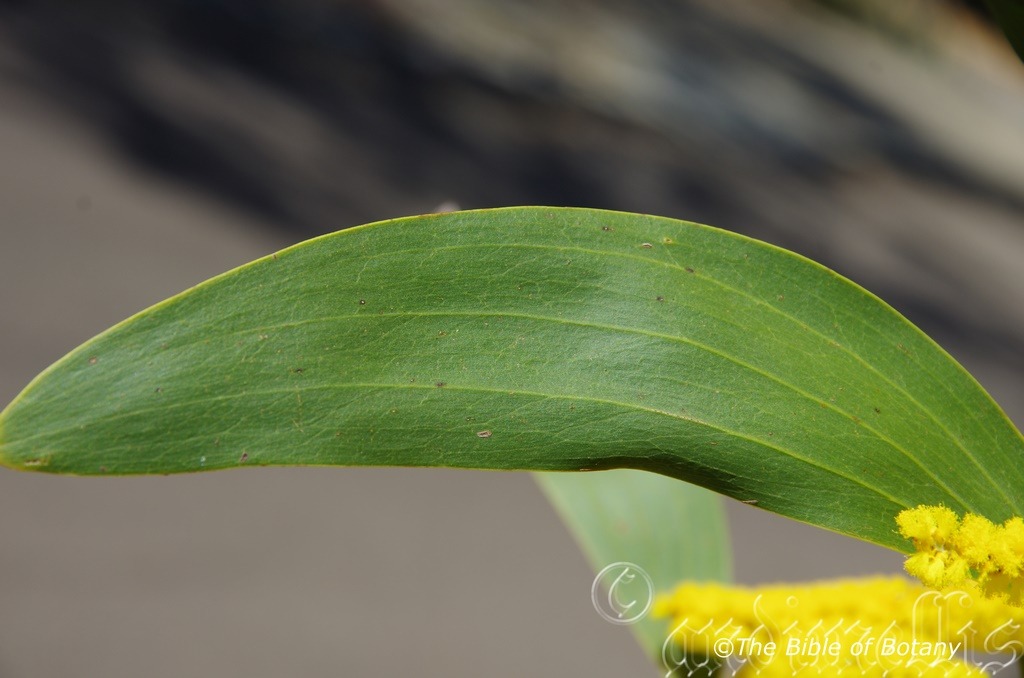
Australian National Botanic Gardens ACT.

Australian National Botanic Gardens ACT.

Australian National Botanic Gardens ACT.
Acacia grandifolia
Classification:
Class: Magnoliophyta
Order: Fabales
Family: Fabaceae
Subfamily: Mimosoideae
Genus: From ἀκακία, which is Ancient Greek or later Acanthium, which is Latin for to have a sharp point. It refers to the first species named by Dioscorides the Greek Botanist for the Egyptian plant Acacia arabica, which has very sharply pointed spines.
Specie: From Grandis, which is Latin for large and Folium, which is Latin for foliage. It refers to leaves, phyllodes or fronds which are much larger than other species in the genus.
Sub specie:
Common Name: Large Leaf Wattle.
Distribution:
Acacia grandifolia is restricted to a small area around Gayndah and Mount Morgan in south eastern Queensland with two disjunct populations further north in Ka Ka Mundi National Park and around Dingo. It grows on the western slopes.
https://avh.ala.org.au/occurrences/search?taxa=Acacia+grandifolia#tab_mapView
Habitat Aspect Climate:
Acacia grandifolia prefers to grow in full sun or light dappled shade. It grows in dry Eucalypts forests, schlerophyll forests and woodlands on hilly terrain on hillcrests, drier gullies and plains. The altitude ranges from 180 meters ASL to 370 meters ASL
The temperatures range from minus 4 degrees in July to 40 degrees in January.
Rainfalls range from lows of 450mm to an average of 1150mm annually.
Soil Requirements:
Acacia grandifolia prefers fine or coarse sands to fatty sandy loams. The soils are usually derived from decomposed sandstone or at times decomposed acidic volcanic soils. The pH ranges from 4.5pH to 6pH. It is not tolerant of water logged soils. Non saline soils to moderately saline soils are tolerated.
Height & Spread:
Wild Plants:3m to 8m by 2m to 4m
Characteristics:
Acacia grandifolia’s deep brown trunk is furrowed. The very acutely angular branchlets are densely covered with soft, grey velutinous hairs.
The phyllodes of Acacia grandifolia are straight and measure 75mm to 150mm in length by 25mm to 75mm in width. There is a single small gland positioned just above the pulvinus. The asymmetrical bases are tapering while the apexes are acute to broad acute. The coriaceous, concolourous laminas are pale greenish-blue and are moderately to densely covered in white appressed hairs. The margins are entire while the laminas are flat. There are 3 or 4 yellowish, longitudinal, prominent veins main veins converging near base and conspicuously anastomosing with free vein endings. There is a strong reticulation between the veins.
The inflorescens of Acacia grandifolia is a pair of spikes from the phyllodes axils. The rachises and peduncles are glabrous to sparsely covered in white pubescent hairs. The golden spikes measure 40mm to 95mm in length by 5mm to 6mm in diameter. The 5 merous individual flower?s cupular calyxes measure 0.7mm to 1mm in length. The calyxes are covered in white pilose especially in upper half. The corolla measures 2mm to 2.5mm in length. The glabrous petals are free with a prominent midrib while the ovary is densely covered in soft, white pubescent hairs. Acacia granitica flowers appear from mid-July to October.
Acacia grandifolia fruits are terete, straight glabrous pods. The pods are moderately covered in white tomentose hairs and measure 60mm to 80mm in length by 5mm to 6mm in width. The chartaceous pods are slightly to moderately constrict between the seeds and strongly raised over the seeds. The blue-green or at times mid grass-green pods turn brown with longitudinal wrinkles when ripe. The 4 to 8 narrowly elliptical-oblong seeds measure 4mm to 5mm in length by 2mm to 2.5mm in diameter. The glossy, deep brown seeds have a white funicle which is folded below the base of the seed.
The obloidal, glossy, black seeds measure 4mm to 5mm in length by 2mm in diameter. The funicle is pale yellow funicle is folded several times beneath the seed while the areole is open.
Confusing Species:
Acacia grandifolia?s phyllodes are 3 to 4 times as long as wide with a very conspicuous vein reticulum on the phyllode.
Acacia crassa?s phyllodes are 4 to 10 times as long as wide with a non-conspicuous vein reticulum on the phyllode. The pulvinus is glabrous or at times surfy.
Acacia longispicata?s phyllodes are 10 to 18 times as long as wide with a non-conspicuous vein reticulum on the phyllode.
Wildlife:
This is an ideal plant forthe control of soil erosion and nitrogen fixation in very sandy hilly soils.
Cultivation:
Acacia grandifolia is a beautiful open shrub that displays its flowers to the best advantage. It would be suitable for sandy loams and coarse sandy gardens in temperate to cool sub-tropical zones. Garden subjects will grow from 6 meter to 10 meters in height by 3 meters to 6 meters in diameter when grown in the open.
In native gardens it can be used to add nitrogen to the soil and to help break up medium clays making them more friable. It is an excellent starter plant to give quick growth protect more delicate plants and good flowering displays over several weeks throughout the winter months. The foliage is particularly attractive and contrasts well with plants that have deep green, broad leaves. Try prostrate red flowering Grevillea species, bright coloured annuals or a mixed bed with a mosaic of different coloured foliages between clumps of Acacia grandifolia or use several clustered together as the central feature in smaller gardens.
Garden beds would need to be open with plenty of space between plants to allow good air flow and plenty of light to reach all the inhabitants of the bed. Crowding this type of foliage with other plants will see them lose all their effectiveness however mass planting of the species as a single unit looks particularly striking throughout the year. Correct spacing will contrast the foliages better when mixed with other plants in the garden. For mass planting and hedge rows space the plants with at 5 meters to 7 meters centers. The plants can be lightly pruned to enhance shorter growth, bushiness and better flowering.
Propagation:
Seeds: Acacia grandifolia seeds require treatment before sowing. Pre-treat the seeds by placing the seeds into a glass of hot water. Allow the water to cool and leave to soak for 10 hours. Seeds that have not swollen repeat the above exercise.
Sow into a seed raising mix. When the seedlings are 25 to 50 mm tall, prick them out and plant them into 50mm native tubes using a seed raising mix.
Once the seedlings reach 200mm to 250mm in height plant them out into their permanent position. Plant them out at 2.5 meter centers where a wind break is desired or a thick clump is wanted.
Fertilize using Seaweed, fish emulsion or organic chicken pellets soaked in water on an alternate basis. Fertilize every two months until the plants are established then annually either in early September to March to maintain health, vitality and better flowering.
Further Comments from Readers:
All information is included in good faith and has been thoroughly researched prior to printing. The website or the author does not warrant or guarantee the accuracy of any information on these pages, nor does the website or the author accept any responsibility for any loss arising from the use of the information found within. The views and opinions are strictly those of the author or those members who chose to actively participate in the contents herein.
Hi reader, it seems you use The Bible of Botany a lot. That’s great as we have great pleasure in bringing it to you! It’s a little awkward for us to ask, but our first aim is to purchase land approximately 1,600 hectares to link several parcels of N.P. into one at The Pinnacles NSW Australia, but we need your help. We’re not salespeople. We’re amateur botanists who have dedicated over 30 years to saving the environment in a practical way. We depend on donations to reach our goal. If you donate just $5, the price of your coffee this Sunday, We can help to keep the planet alive in a real way and continue to bring you regular updates and features on Australian plants all in one Botanical Bible. Any support is greatly appreciated. Thank you.
In the spirit of reconciliation we acknowledge the Bundjalung, Gumbaynggirr and Yaegl and all aboriginal nations throughout Australia and their connections to land, sea and community. We pay our respect to their Elders past, present and future for the pleasures we have gained.

The Pinnacles NSW
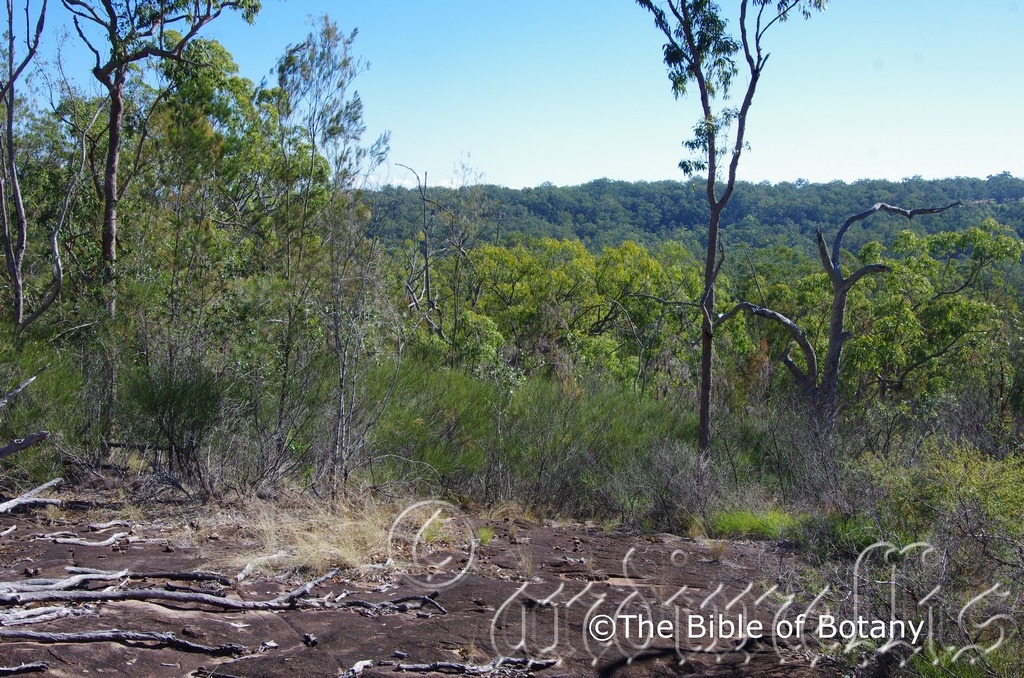
The Pinnacles NSW
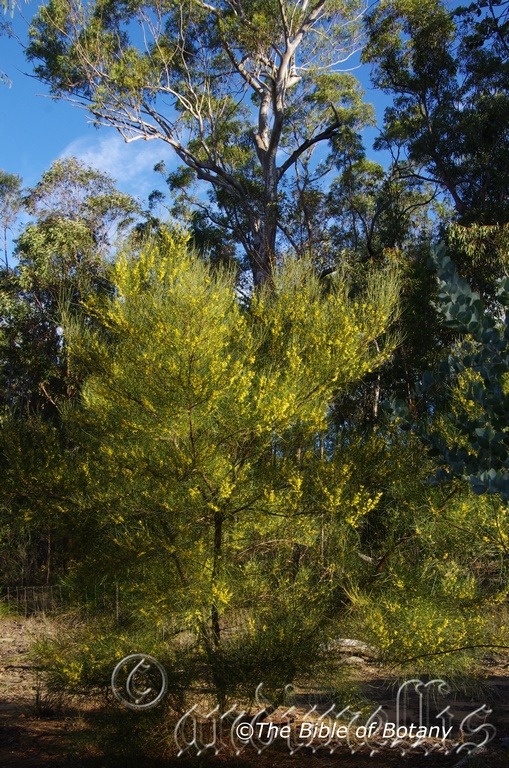
The Pinnacles NSW

The Pinnacles NSW.
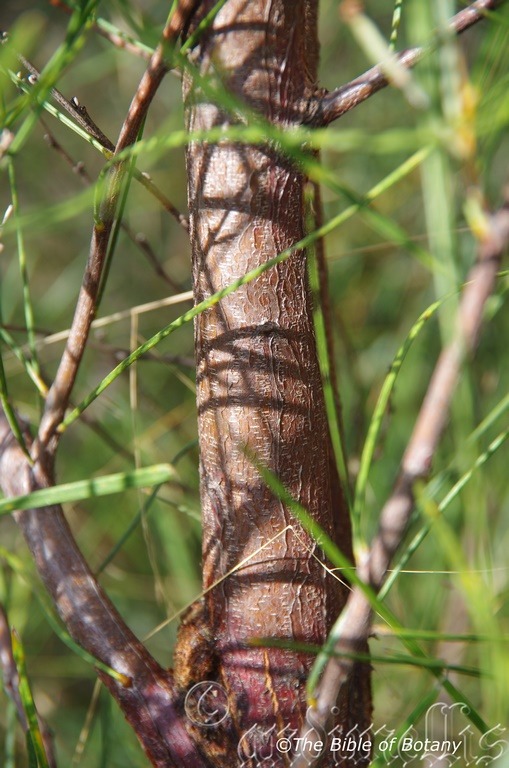
The Pinnacles NSW.

The Pinnacles NSW.

The Pinnacles NSW.
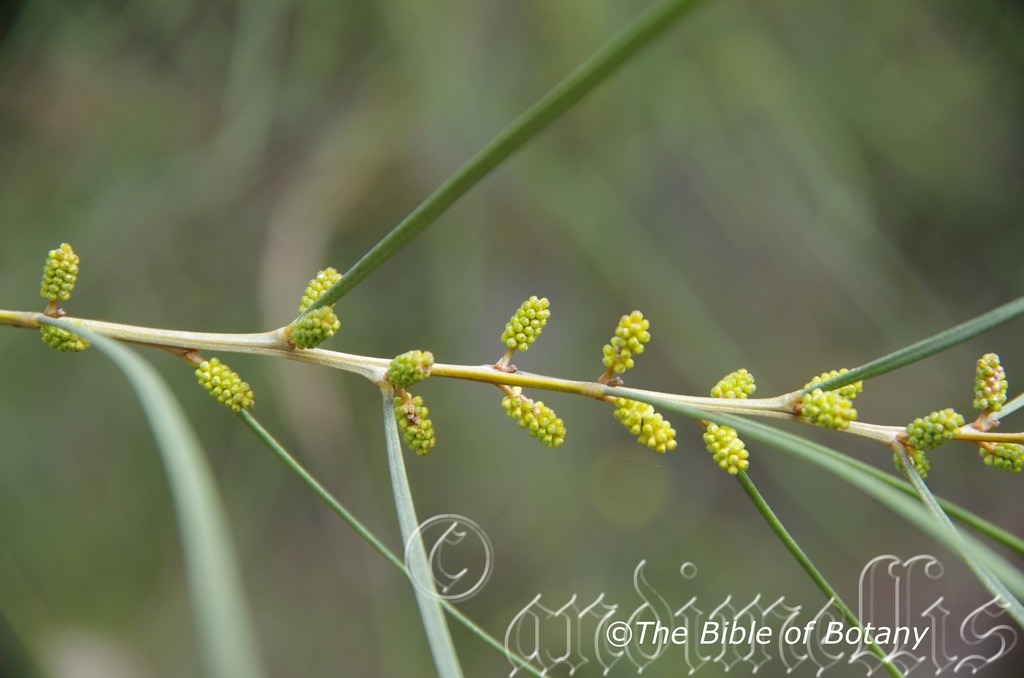
The Pinnacles NSW.

The Pinnacles NSW.
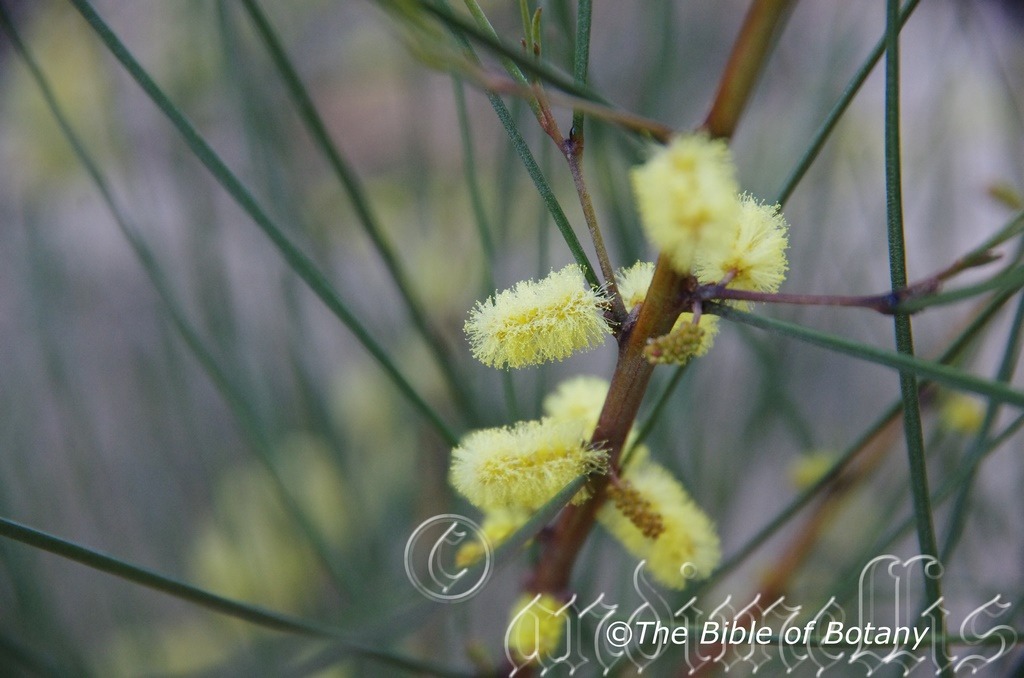
The Pinnacles NSW.

The Pinnacles NSW.
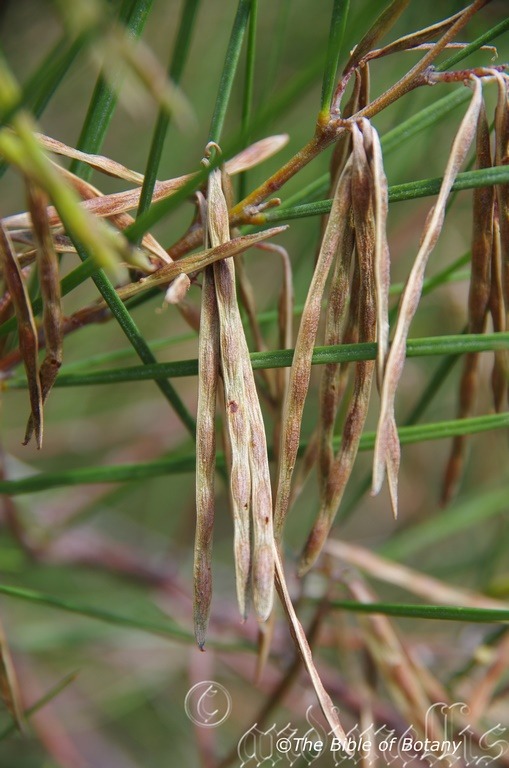
The Pinnacles NSW.
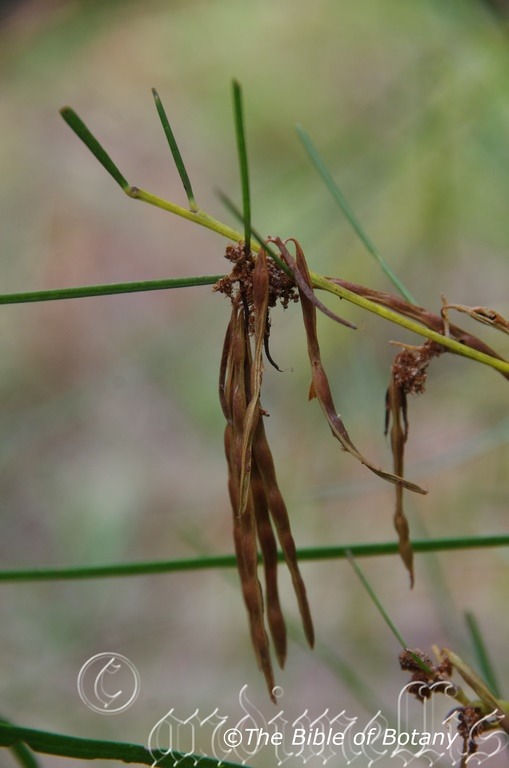
The Pinnacles NSW.

The Pinnacles NSW.
Acacia granitica
Classification:
Class: Magnoliophyta
Order: Fabales
Family: Fabaceae
Subfamily: Mimosoideae
Genus: From ἀκακία, which is Ancient Greek or later Acanthium, which is Latin for to have a sharp point. It refers to the first species named by Dioscorides the Greek Botanist for the Egyptian plant Acacia arabica, which has very sharply pointed spines.
Specie: From Granitica which is Latin for a type of intrusive based rocks. It refers to plants, which prefer to grow on granitic sands.
Sub specie:
Common Name: Granite Wattle.
Distribution:
Acacia granitica is found from Warwick in southern Queensland south to Bendemeer in northern New South Wales in the area known as the Granite belt. There is an out lying colony north of Grafton near the Fortis Creek Floral Reserve.
https://avh.ala.org.au/occurrences/search?taxa=Acacia+granitica#tab_mapView
Habitat Aspect Climate:
Acacia granitica prefers to grow in full sun or light dappled shade. It grows in dry Eucalypts forests, schlerophyll forests and woodlands. The altitude ranges from 180 meters ASL to 900 meters ASL
The temperatures range from minus 4 degrees in July to 40 degrees in January.
Rainfalls range from lows of 450mm to an average of 1150mm annually.
Soil Requirements:
Acacia granitica prefers coarse sands to fine sands. The soils are derived from decomposed granites or in the case of those plants growing near The Pinnacles and Foris Creek it is decomposed sandstone. The pH ranges from 5pH to 6pH. Plants not tolerant of water logged soils. Non saline soils to moderately saline soils are tolerated.
Height & Spread:
Wild Plants: 2m to 4m by 2m to 3.5m.
Characteristics:
Acacia granitica is a beautiful small to medium shrub with a glabrous trunk and glabrous to scurfy branchlets pointing towards the apical.
The phyllodes of Acacia granitica are rigid, linear, and straight and measure 100mm to 250mm in length by 1.5mm to 3mm in width. There is a single small gland positioned just above the pulvinus. The pulvinus measures 1mm to 2.5mm in length. The bases are tapering while the apexes are narrowly acute. The concolourous laminas are pale blue-green to pale grey-green, glabrous to sparsely covered in white pubescent hairs. The margins are entire while the laminas are flat. There are 7 to 11 obscure longitudinal veins.
The inflorescence of Acacia granitica is a single spike from the phyllodes axils. The rachises and peduncles are glabrous to sparsely covered in white pubescent hairs. The rachises measure 1mm to 16mm in length and have 14 to 22 individual flowers. The shrubs at the pinnacles consistently measure 15mm to 16mm in length. The individual flowers measure 2.5mm to 3.5mm in length. The rachises and peduncles are glabrous or covered in fine white to golden pannate hairs.
The individual flowers are 5 merous. The 5 pale lemon to bright yellow sepals are erect and glabrous. The elliptical petals are lemon-yellow to bright yellow while the stamens are lemon-yellow to bright yellow. Acacia granitica flowers appear from mid-June to September.
Acacia granitica fruits are cylindrical, straight to strongly curved glabrous pods. The pods measure 30mm to 95mm in length by 2.5mm to 4mm in width. The pods are chartaceous, constricted around the seeds and constricted along the margins. The blue-green or at times mid grass-green pods turn brown with longitudinal wrinkles when ripe. The 4 to 8 narrowly elliptical-oblong seeds measure 4mm to 5mm in length by 2mm to 2.5mm in diameter. The glossy, deep brown seeds have a white funicle which is folded below the base of the seed.
Wildlife:
This is an ideal plant for the control of soil erosion and nitrogen fixation in very sandy mountainous soils.
Native bees have been seen foraging pollen from the flowers. Crested pigeons, (Ocyphaps lophotes) flock below the shrubs feasting on the freshly fallen seeds every year at the Pinnacles. The Crested pigeon along with the double bar finch (Taeniopygia bichenovii) have been seen to nest in thickets containing Acacia granitica.
The Australian’s favourite bird the Galah, Eolophus roseicapilla, has been observed eating half ripen pods and seeds.
Cultivation:
Acacia granitica is a beautiful open shrub that displays its flowers to the best advantage. They would be suitable for sandy loams and coarse sandy gardens in temperate to cool sub-tropical zones. Garden subjects will grow from 3 meter to 4 meters in height by 3 meters to 4 meters in diameter when grown in the open.
In native gardens they can be used to add nitrogen to the soil and to help break up medium clays making them more friable. They are an excellent starter plant to give quick growth protect more delicate plants and good flowering displays over several weeks throughout the winter months. The foliage is particularly attractive and contrasts well with plants that have deep green, broad leaves. Try prostrate red flowering Grevilleas, bright coloured annuals or a mixed bed with a mosaic of different coloured foliages between clumps of Acacia granitica or use several clustered together as the central feature in smaller gardens.
Garden beds would need to be open with plenty of space between plants to allow good air flow and plenty of light to reach all the inhabitants of the bed. Crowding this type of foliage with other plants will see them lose all their effectiveness however mass planting of the species as a single unit looks particularly striking throughout the year. Correct spacing will contrast the foliages better when mixed with other plants in the garden. For mass planting and hedge rows space the plants with at 2 meters to 2.5 meters centers. The plants can be lightly pruned to enhance shorter growth, bushiness and better flowering.
4 plants separately planted or plant 2 close together and separate the other 2 or 3 on the far side of the bed to give width and depth where you want it. The use of annuals helps to attract the viewer to the permanent plants foliage as they are the dominant foliage you want people to notice in the patch. In the case of Acacia falcate you could substitute very small Grevillea, Crowea, Hovea or even Verticordia species in lieu of the native annuals. A bed of mixed Anigozanthus sp. surrounding Acacia falcata is particularly stunning. Remember most annuals flower when Acacia falcata is resting during the summer and most Grevilleas will flower at the same time so a blend may be the way to go. Annuals mixed with Acacia granitica help to give medium to large gardens depth and make them look larger than what they really are due to the smaller diameter of mature plants. It works well with Grevillea banksii, other Grevilleas of similar size with red and orange flowering Anigozanthus which have beautiful contrasting foliages. This is the key to success with the flowers being a bonus. Plants look good for 4 or 6 years before they should be replaced.
Propagation:
Seeds: Acacia granitica seeds require treatment before sowing. Pre-treat the seeds by placing the seeds into a glass of hot water. Allow the water to cool and leave to soak for 10 hours. Seeds that have not swollen repeat the above exercise.
Sow into a seed raising mix. When the seedlings are 25 to 50 mm tall, prick them out and plant them into 50mm native tubes using a seed raising mix.
Once the seedlings reach 200 to 250mm in height plant them out into their permanent position. Plant them out at 2.5 meter centers where a wind break is desired or a thick clump is wanted.
Fertilize using Seaweed, fish emulsion or organic chicken pellets soaked in water on an alternate basis. Fertilize every two months until the plants are established then annually either in early September to March to maintain health, vitality and better flowering.
Further Comments from Readers:
All information is included in good faith and has been thoroughly researched prior to printing. The website or the author does not warrant or guarantee the accuracy of any information on these pages, nor does the website or the author accept any responsibility for any loss arising from the use of the information found within. The views and opinions are strictly those of the author or those members who chose to actively participate in the contents herein.
Hi reader, it seems you use The Bible of Botany a lot. That’s great as we have great pleasure in bringing it to you! It’s a little awkward for us to ask, but our first aim is to purchase land approximately 1,600 hectares to link several parcels of N.P. into one at The Pinnacles NSW Australia, but we need your help. We’re not salespeople. We’re amateur botanists who have dedicated over 30 years to saving the environment in a practical way. We depend on donations to reach our goal. If you donate just $5, the price of your coffee this Sunday, We can help to keep the planet alive in a real way and continue to bring you regular updates and features on Australian plants all in one Botanical Bible. Any support is greatly appreciated. Thank you.
In the spirit of reconciliation we acknowledge the Bundjalung, Gumbaynggirr and Yaegl and all aboriginal nations throughout Australia and their connections to land, sea and community. We pay our respect to their Elders past, present and future for the pleasures we have gained.

The Pinnacles NSW.

The Pinnacles NSW.

The Pinnacles NSW.

The Pinnacles NSW.

The Pinnacles NSW.
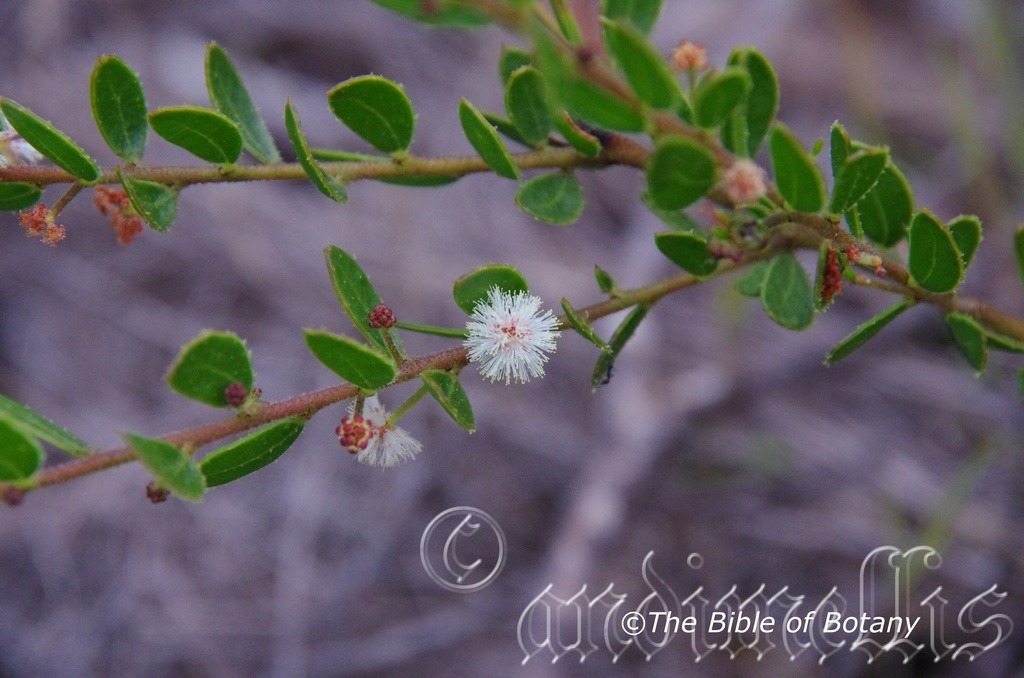
The Pinnacles NSW.
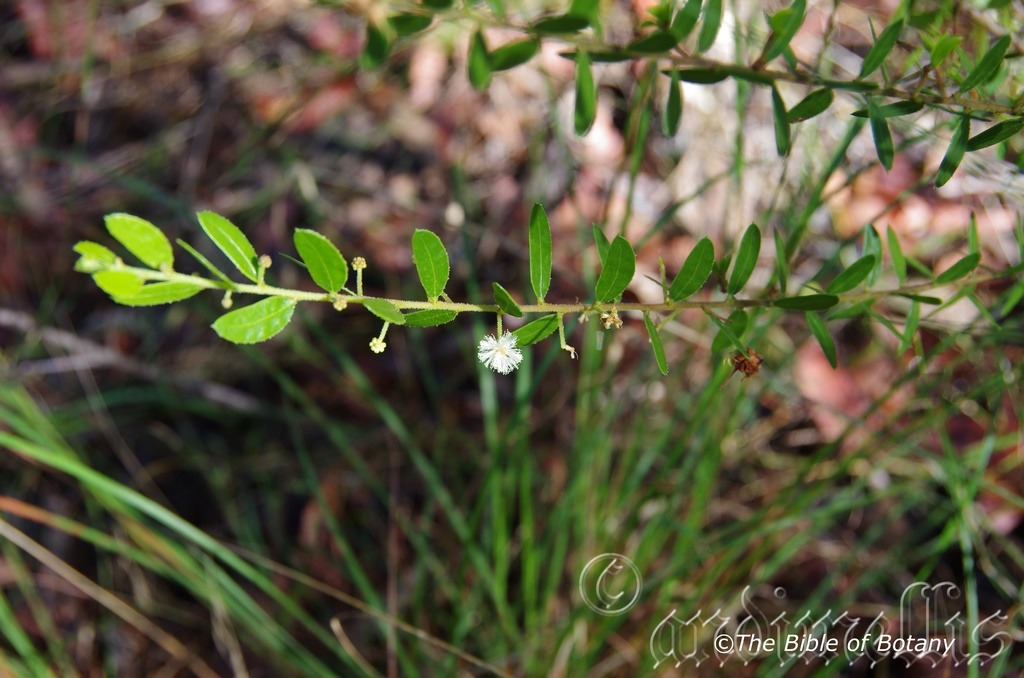
The Pinnacles NSW.

The Pinnacles NSW.
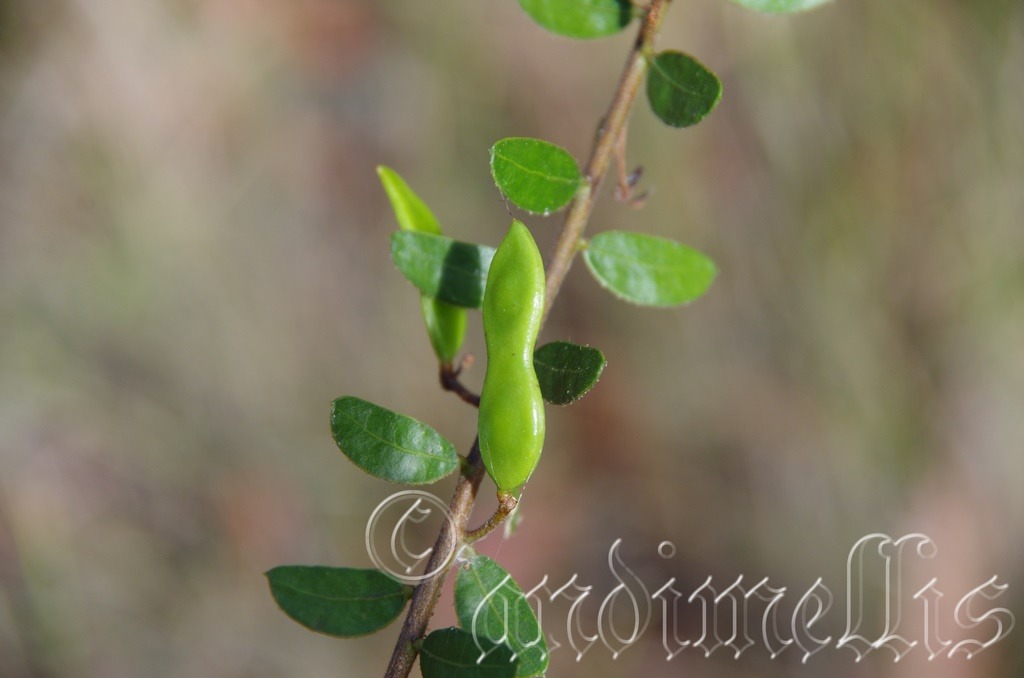
The Pinnacles NSW.
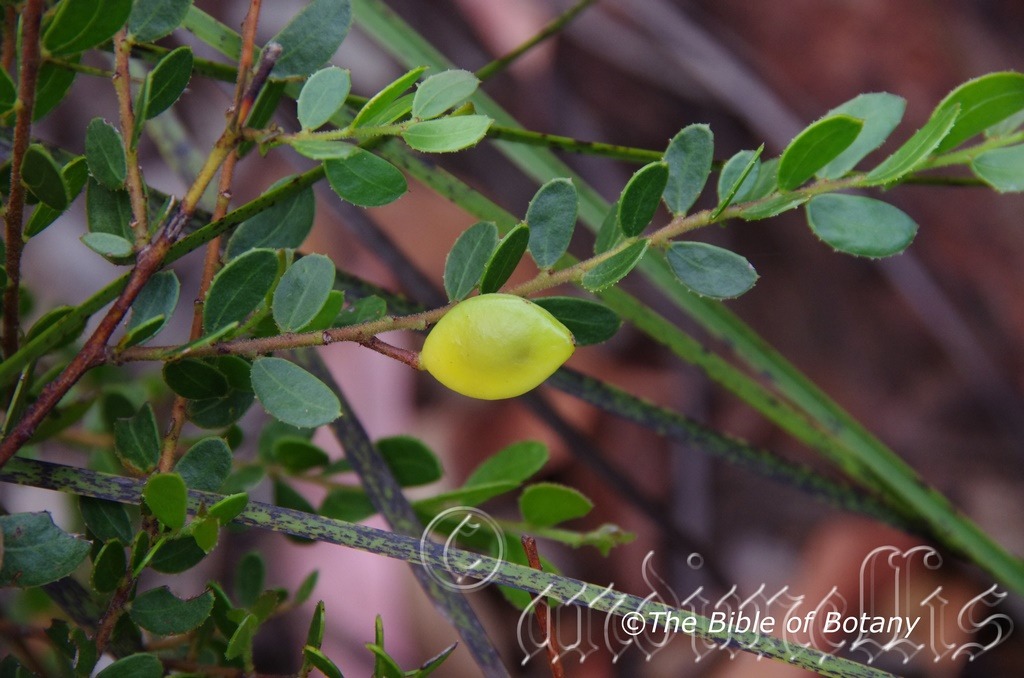
The Pinnacles NSW.
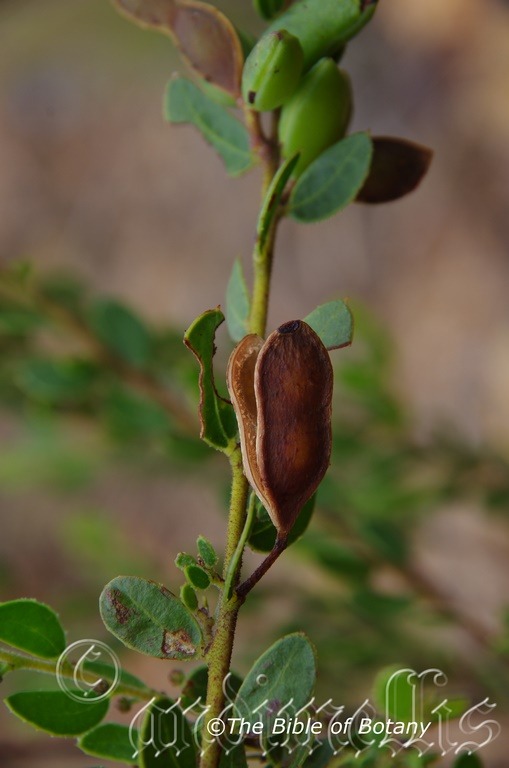
The Pinnacles NSW.

The Pinnacles NSW.
Acacia hispidula
Classification:
Class: Magnoliophyta
Order: Fabales
Family: Fabaceae
Subfamily: Mimosoideae
Genus: From ἀκακία, which is Ancient Greek or later Acanthium, which is Latin for to have a sharp point. It refers to the first species named by Dioscorides the Greek Botanist for the Egyptian plant Acacia arabica, which has very sharply pointed spines.
Specie: From Hispidus, which is Latin for short bristly hairs. It refers to a structure or organ, which has short, bristly course hairs.
Sub specie:
Common Name: Little Harsh Acacia, Rough Acacia or Rough Leaf Acacia
Distribution:
Acacia hispidula is found in several disjunct populations. In Queensland it is found from Gatton to the lower reaches of the Logan River south to south west of Nowra in southern eastern New South Wales. It is found on the Great Dividing Range.
https://avh.ala.org.au/occurrences/search?taxa=Acacia+hispidula#tab_mapView
Habitat Aspect Climate:
Acacia hispidula prefer light dappled shade to full sun. It grows as a dense to open small shrub in open woodlands, open forests on ridges and flats on escarpments, along rocky ridges gentle slopes and seasonal riparian zones in the harsher zones within these zones. The altitude ranges from 300 meters ASL to 980 meters ASL
The temperatures range from minus 2 degrees in July to 40 degrees in January.
The rainfalls range from lows of 800mm to an average of 16000mm annually.
Soil Requirements:
Acacia hispidula prefer deep, coarse sands, sandy loams to light fatty clays. The soils are usually derived from decomposed granites or at times sandstones. The soil?s pH ranges from 5pH to 6pH. It does not tolerate water logged soils. None saline soils to moderately saline soils are tolerated.
Height & Spread:
Wild Plants: 0.5m to 2m by 0.6m to 1.8m.
Characteristics:
Acacia hispidula‘s grows as an erect to spreading shrub with olive-brown bark which is scabrous to rough on older shrubs. The terete branchlets become acutely angled closer to the apex. The branchlets are sparsely covered in tuberculate lumps and densely covered in white hispid hairs.
Acacia hispidula‘s elliptical to narrow elliptical phyllodes are usually slightly curved to slightly falcate and measure 10mm to 32mm in length by 3mm to 11mm in width. The bases are strongly asymmetrically broad cuneate to rounded while the apexes are acute with a mucronate tip. There is a small gland 2mm to 6mm above the pulvinus. The pulvinus measures 1mm to 1.5mm in length while the petiole measures 3mm to 5mm in length. The concolourous phyllodes are a bright grass-green, semi glossy, sub glabrous and sparsely to densely covered in white hispid hairs. The laminas are flat while the margins are entire thickened and with prominent tuberculate based white hispid hairs. The mid vein is slightly prominent on the lower margin and is visible from the upper lamina. The lateral veins form an obscure open reticulum
The inflorescence of Acacia hispidula is a simple head born singularly from the phyllodes axils. There are 10 to 20 individual flowers in a head that measure 5mm to 9mm in diameter. The peduncles are covered in white hispid hairs and measure 4mm to 7mm in length while the individual flowers pedicles measure 0mm to 0.2mm long. Acacia hispidula?s flowers appear from January to April but can be outside this period in favourable seasons.
The individual flowers are 5 merous. The pink to pinkish-red calyxes and 5 calyx lobes are erect are glabrous. The petals are white to pastel pink while the stamens are white or pastel yellow.
Acacia hispidula‘s fruits are irregularly oblong to narrow oblong, flat pods with 2 or 3 seeds or elliptical with a single seed. The thick coriaceous to soft woody pods measure 15mm to 26mm in length by 6mm to 11mm in width. The grass-green pods are slightly constriction between the seeds, glabrous and turn deep grey-brown externally and tan-brown internally when ripe.
The black, obloidal, semi glossy seeds measure 7.5mm to 8.5mm in length by 4mm to 5mm in width and 4mm to 4.5mm in depth. The white funicle is linear to clavate expanding greatly at the base of the seed and lies along one margin of seed.
Wildlife:
Acacia hispidula attract crested doves and probably other parrots which feed on the ripe seeds or funicles.
Cultivation:
Acacia hispidula is an unusual small to medium shrub. As beautiful as well grown plants are the plants have not gained wide spread recognition. In cultivation it will grow from 1.5 meters to 1.8 meters in height by 1.2 meters to 1.6 meters in diameter when grown in the open.
Their best feature is the white wattle flowers born over a long period through summer and autumn. They are best used in the fore ground or mid ground amongst other shrubs with large deep green leaves.
It does exceptionally well on sandy soils to light sandy loams and in exceptional dry seasons within their territories maintaining a fresh green appearance.
Propagation:
Seeds: Acacia hispidula require treatment before sowing. Pre-treat the seeds by placing the seeds into a glass of boiling water. Allow the water to cool and leave to soak for 10 hours. Seeds that have not swollen repeat the exercise.
Sow into a seed raising mix. When the seedlings are 25mm to 50mm tall, prick them out and plant them into 50mm native tubes using a seed raising mix.
Once the seedlings reach 200mm to 250mm in height plant them out into their permanent position. For screen plantings plant Acacia holosericea at 2 meter to 3 meter spacing?s then remove every second tree once they come in contact with each other. Replant new seedlings after 8 years as the trees only live for about 10 years.
Fertilize using Seaweed, fish emulsion or organic chicken pellets soaked in water on an alternate basis. Fertilize every two months until the plants are established then annually either in early September to March to maintain health, vitality and better flowering.
Further Comments from Readers:
All information is included in good faith and has been thoroughly researched prior to printing. The website or the author does not warrant or guarantee the accuracy of any information on these pages, nor does the website or the author accept any responsibility for any loss arising from the use of the information found within. The views and opinions are strictly those of the author or those members who chose to actively participate in the contents herein.
Hi reader, it seems you use The Bible of Botany a lot. That’s great as we have great pleasure in bringing it to you! It’s a little awkward for us to ask, but our first aim is to purchase land approximately 1,600 hectares to link several parcels of N.P. into one at The Pinnacles NSW Australia, but we need your help. We’re not salespeople. We’re amateur botanists who have dedicated over 30 years to saving the environment in a practical way. We depend on donations to reach our goal. If you donate just $5, the price of your coffee this Sunday, We can help to keep the planet alive in a real way and continue to bring you regular updates and features on Australian plants all in one Botanical Bible. Any support is greatly appreciated. Thank you.
In the spirit of reconciliation we acknowledge the Bundjalung, Gumbaynggirr and Yaegl and all aboriginal nations throughout Australia and their connections to land, sea and community. We pay our respect to their Elders past, present and future for the pleasures we have gained.
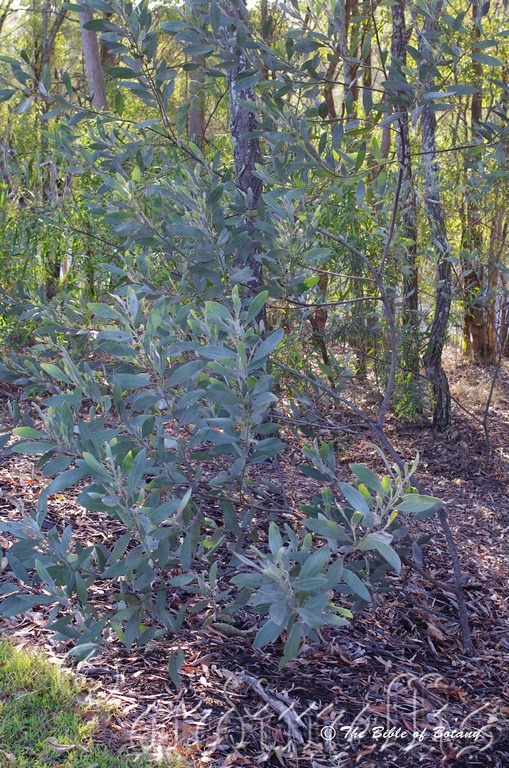
Mount Cootha Botanical Gardens Qld.
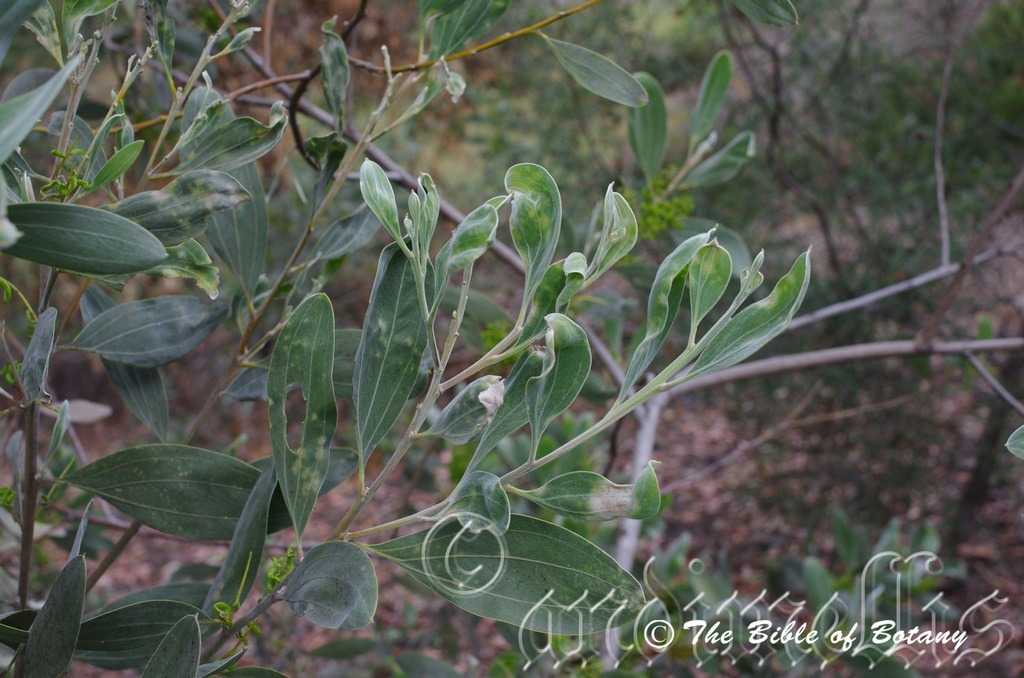
Mount Cootha Botanical Gardens Qld.

Mount Cootha Botanical Gardens Qld.

The Pinnacles NSW
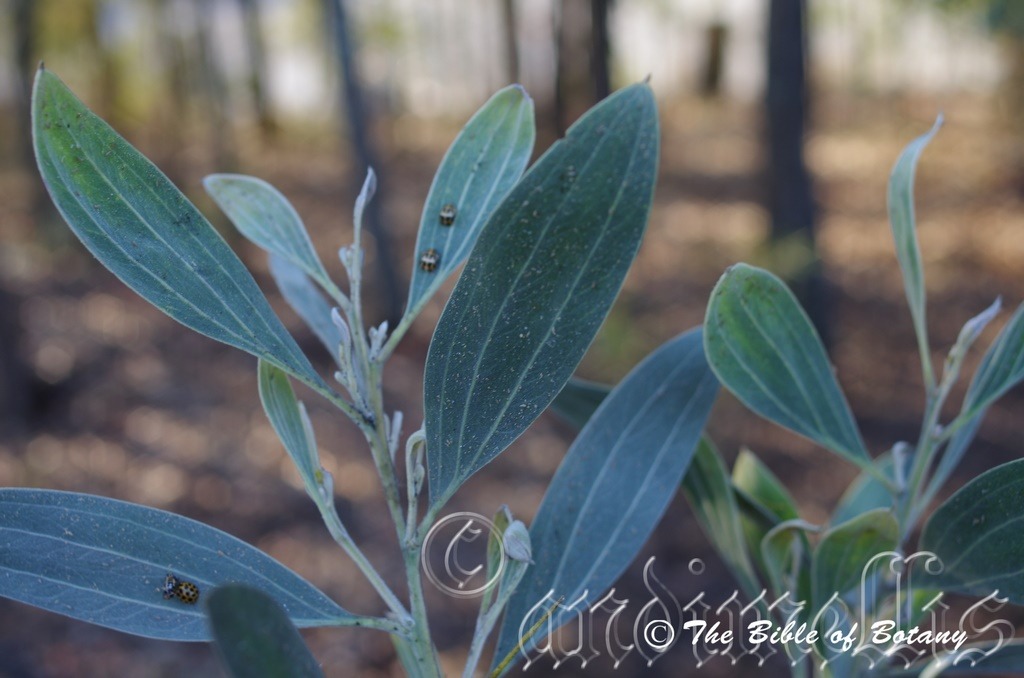
Mount Cootha Botanical Gardens Qld.
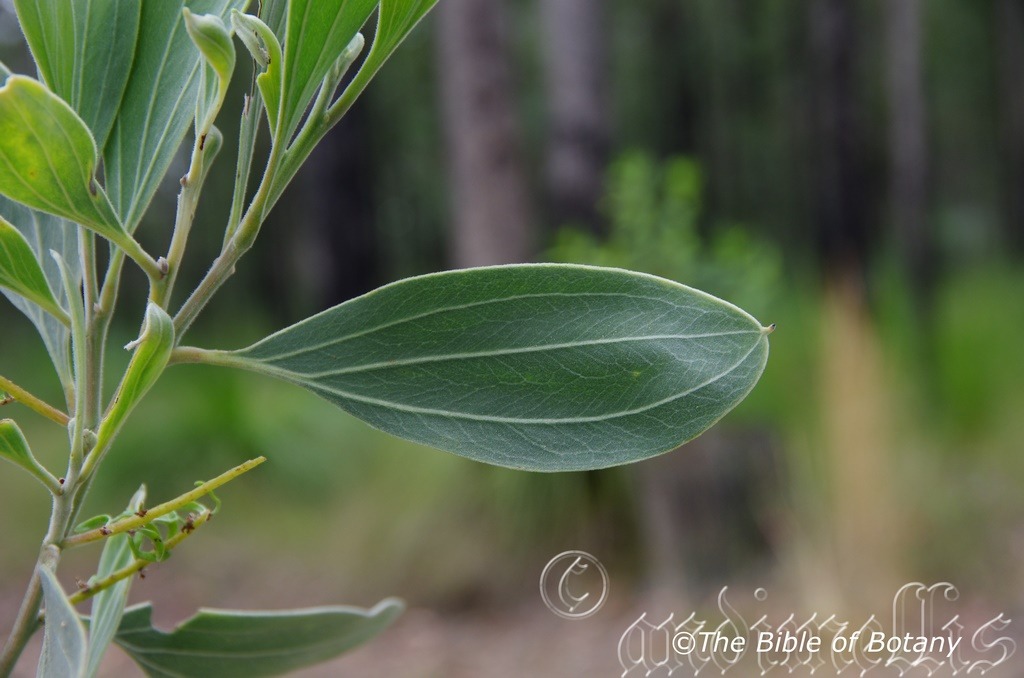
Mount Cootha Botanical Gardens Qld.
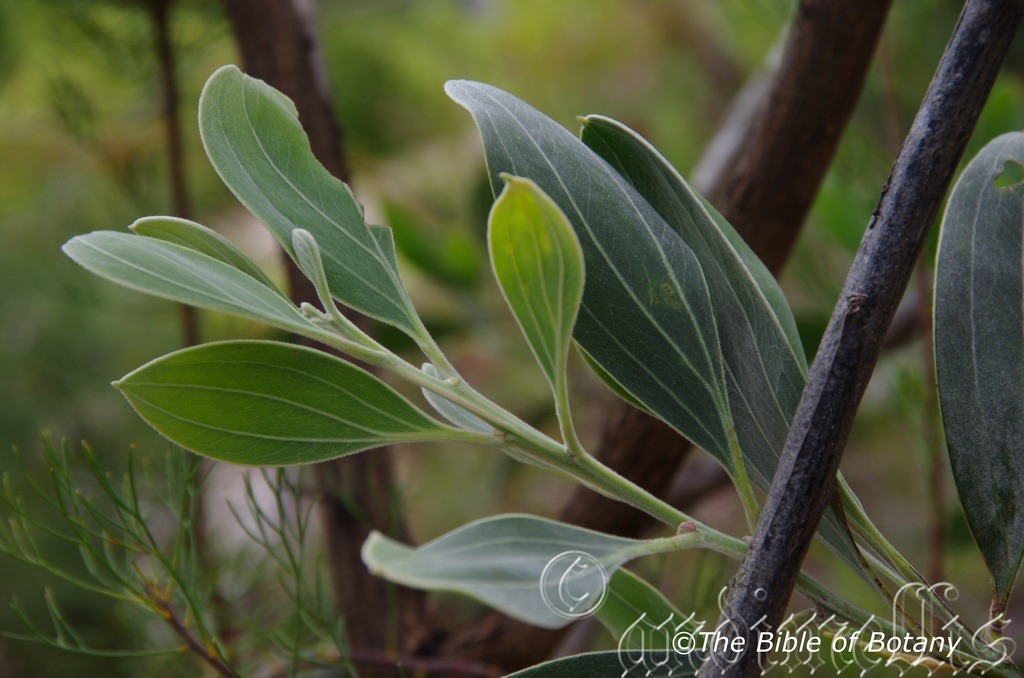
Mount Cootha Botanical Gardens Qld.

Mount Cootha Botanical Gardens Qld.
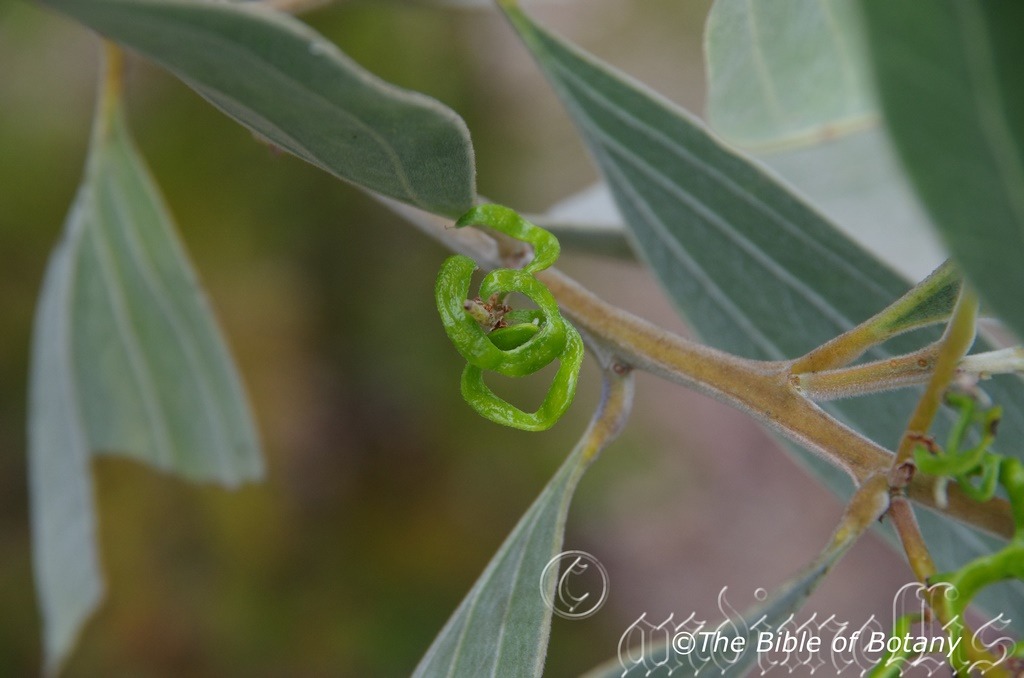
Mount Cootha Botanical Gardens Qld.
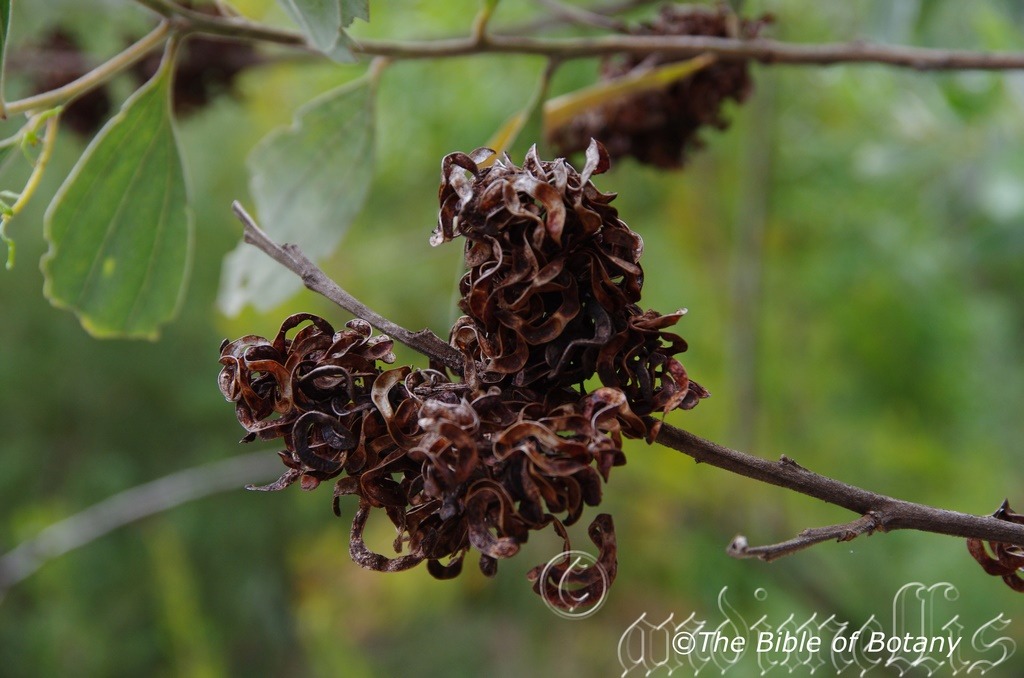
The Pinnacles NSW
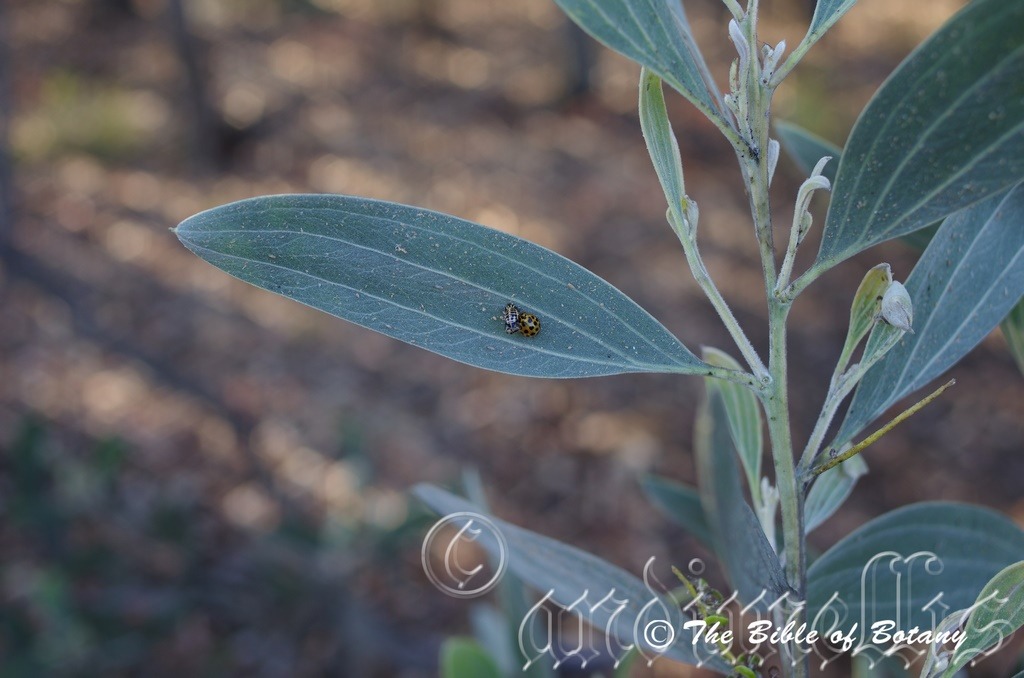
Unknown Lady Beetle Larvae. The Pinnacles NSW
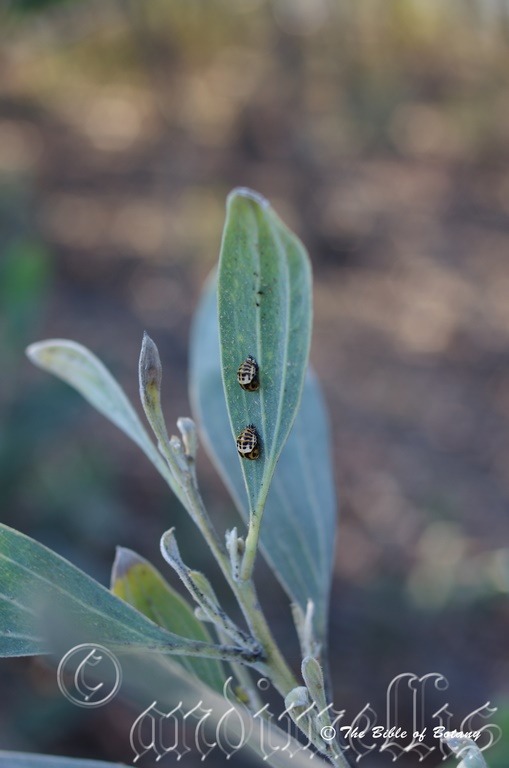
Unknown Lady Beetle Larvae. The Pinnacles NSW
Acacia holosericea
Classification:
Class: Magnoliophyta
Order: Fabales
Family: Fabaceae
Subfamily: Mimosoideae
Genus: From ἀκακία, which is Ancient Greek or later Acanthium, which is Latin for to have a sharp point. It refers to the first species named by Dioscorides the Greek Botanist for the Egyptian plant Acacia arabica, which has very sharply pointed spines.
Specie: From Holo, which is Ancient Greek for entire or complete and Sericea, which is Latin for silky hairs. It refers to a structure or organ, which is completely covered in soft, silky sericeous hairs.
Sub specie:
Common Name: Silver Leaf Wattle or Silky wattle.
Distribution:
Acacia holosericea is found naturally in the top end of Western Australia near Broome to the bordering areas of the Victoria River in the Northern Territory to the border with Queensland.
It is also found in a large area in north western Queensland south from Mount Isa, Camooweal and Home Hill to west of Rockhampton.
https://avh.ala.org.au/occurrences/search?taxa=Acacia+holosericea#tab_mapView
Habitat Aspect Climate:
Acacia holosericea prefer full sun. It grows as a medium size tree in country dominated by open woodlands and savannah grasses. It is commonly found in small depressions or adjacent to cliffs where even soil moisture is retained for longer periods and along rivers and creeks. The altitude ranges from 15 meters ASL to 500 meters ASL
The temperatures range from 4 degrees in July to 44 degrees in January.
The rainfalls range from lows of 450mm to an average of 3.2m annually.
Soil Requirements:
Acacia holosericea prefer deep, sandy loams to light fatty clays. The soils are usually derived from decomposed sandstones granites, brown basalts. The soil?s pH ranges from 5pH to 6.5pH. It does not tolerate waterlogged soils. None saline soils to moderately saline soils are tolerated.
Height & Spread:
Wild Plants: 2m to 9m by 2m to 6m.
Characteristics:
Acacia holosericea‘s dull grey bark is a smooth to slightly scabrous on older trees. The terete branchlets become acutely angled closer to the apex. The branchlets are densely covered in minute white to silvery sericeous hairs.
Acacia holosericea‘s narrowly elliptical to elliptical phyllodes measure 100mm to 220mm in length by 15mm to 60mm in width. The bases are strongly oblique cuneate while the apexes are acute with a distinct mucronate tip. There is a large 2mm gland near the base on the upper margin with a smaller gland adjacent to the base of the mucronate tip. The concolourous phyllodes are a pale blue to pale grey-blue and covered in soft white sericeous hairs. The margins are entire, yellow and thickened while the laminas are flat. The main vein and 2 basal longitudinal veins are strongly prominent on the lower margin and distinctly visible from the upper laminas.
The inflorescence of Acacia holosericea is a raceme born from the phyllodes axils. The yellow-green rachises and pedicels are glabrous to sparsely covered in white sericeous hairs. The racemes measure 20mm to 60mm in length by 4mm to 6mm in diameter while the individual flowers measure 1.8mm to 2.7mm long. Acacia holosericeous?s flowers appear from August through to October.
The individual flowers are 5 merous. The pale olive-yellow calyxes and 5 calyx lobes are erect, glabrous and are densely covered in white sericeous hairs. The orbicular petals are pale creamy yellow to pale yellow while the stamens are pale yellow.
Acacia holosericea fruits are irregularly coiled and twisted pods. The thinly coriaceous pods measure 50mm to 90mm in length by 2.5mm to 4mm in width with no constriction between the seeds. The calcareous pods are glaucous blue and are glabrous to sparsely covered in sericeous white hairs turn deep grey-brown externally and brown internally when ripe.
The deep brown-black, flattened semi glossy seeds measure 3.5mm to 4mm in length by 1.8mm to 2mm in width by 1.5mm to 1.6mm in depth. The deep yellow to yellow-orange filiform funicle expands greatly at the base of the seed. The funicle folds below the seed before half encircling it.
Wildlife:
Acacia holosericeous attract little corollas and probably other parrots which feed on the ripe seeds.
Cultivation:
It would make an good fire retardant large shrub.
* Fire retardant plants act as radiant heat screens and absorb more heat from an approaching fire without burning.
* Fire retardant trees are able reduce wind speed near a house or out buildings.
* Fire retardant also trap embers and sparks carried by the wind.
* Fire retardant ground covers are able to catch burning embers without catching fire themselves, and also slow the travel of a fire through debris and litter on the ground.
Acacia holosericea is a very beautiful broad shrub or small tree with large glaucous velvety phyllode s. As beautiful as it is the plants have not gained widespread use outside the tropics and semi-arid area. In tropical Native gardens they can be used to add nitrogen to the soil. Coffs Harbour Botanic gardens have these Acacias growing in the car park area between the eastern car park and the tidal creek. The shrubs have thrived with their roots down in permanent saline conditions so would indicate that the trees would do reasonably well in warm temperate areas of Australia. In cultivation they will grow from 5 meters to 7 meters in height by 4 meters to 6 meters in diameter when grown in the open.
Its best feature is the large glaucous blue phyllodes that can be used to attract the viewer’s attention especially when not much else is in flower. They are best used as a back ground or mid ground plant as they are too overpowering if placed in the mid ground. This is one plant that should never be used in mass plantings but instead scattered throughout the garden where it can contrast other foliages. In saying that the Coffs Harbour Botanic Gardens have used them as a windbreak in the foreground with Avecinnia sp. or the grey mangrove in the background to great effect. These are excellent small trees where rapid growth and accents are required. Another advantage is the interest they attract when the pods start twisting and coiling as they ripen.
It does exceptionally well in Mount Isa and Darwin where the humidity is high in contrast. The dry season has very dry air and during the wet season the humidity can be unbearably high.
It has been successfully grown in the car park area of the Coffs Harbour Botanic Gardens adjacent to Coffs creek which is tidal. This indicates that the salt tolerance of the plants may be a lot better than what is found naturally in it wild habitat.
Propagation:
Seeds: The seeds of Acacia holosericea require treatment before sowing. Pre-treat the seeds by placing the seeds into a glass of boiling water. Allow the water to cool and leave to soak for 10 hours. Seeds that have not swollen repeat the exercise.
Sow into a seed raising mix. When the seedlings are 25mm to 50mm tall, prick them out and plant them into 50mm native tubes using a seed raising mix.
Once the seedlings reach 200mm to 250mm in height plant them out into their permanent position. For screen plantings plant Acacia holosericea at 2 meter to 3 meter spacing?s then remove every second tree once they come in contact with each other. Replant new seedlings after 8 years as the trees only live for about 10 years.
Fertilize using Seaweed, fish emulsion or organic chicken pellets soaked in water on an alternate basis. Fertilize every two months until the plants are established then annually either in early September to March to maintain health, vitality and better flowering.
Further Comments from Readers:
All information is included in good faith and has been thoroughly researched prior to printing. The website or the author does not warrant or guarantee the accuracy of any information on these pages, nor does the website or the author accept any responsibility for any loss arising from the use of the information found within. The views and opinions are strictly those of the author or those members who chose to actively participate in the contents herein.
Hi reader, it seems you use The Bible of Botany a lot. That’s great as we have great pleasure in bringing it to you! It’s a little awkward for us to ask, but our first aim is to purchase land approximately 1,600 hectares to link several parcels of N.P. into one at The Pinnacles NSW Australia, but we need your help. We’re not salespeople. We’re amateur botanists who have dedicated over 30 years to saving the environment in a practical way. We depend on donations to reach our goal. If you donate just $5, the price of your coffee this Sunday, We can help to keep the planet alive in a real way and continue to bring you regular updates and features on Australian plants all in one Botanical Bible. Any support is greatly appreciated. Thank you.
In the spirit of reconciliation we acknowledge the Bundjalung, Gumbaynggirr and Yaegl and all aboriginal nations throughout Australia and their connections to land, sea and community. We pay our respect to their Elders past, present and future for the pleasures we have gained.
Acacia howittii
Classification:
Class: Magnoliophyta
Order: Fabales
Family: Fabaceae
Subfamily: Mimosoideae
Genus: From ἀκακία, which is Ancient Greek or later Acanthium, which is Latin for to have a sharp point. It refers to the first species named by Dioscorides the Greek Botanist for the Egyptian plant Acacia arabica, which has very sharply pointed spines.
Specie: Is probably named in honour of Dr. Godfrey Howitt; 1800-1873, who was an English born Australian physician, botanist and entomologist in Melbourne.
Sub specie:
Common Name: Sticky Wattle.
Distribution:
Acacia howittii is located in several disjunct populations south from the Blue Mountains in central coastal New South Wales to north of Adelaide in southern South Australia.
https://avh.ala.org.au/occurrences/search?taxa=Acacia+howittii#tab_mapView
Habitat Aspect Climate:
Acacia howittii prefer full sun to dappled shade. It grows woodlands to sclerophyll forests and open tall Eucalyptus forests. The altitude ranges from 10 meters ASL to 600 meters ASL
The temperatures range from minus 2 degrees in July to 34 degrees in January.
The rainfalls range from lows of 750mm to an average of 1000mm annually.
Soil Requirements:
Acacia howittii grows mainly on decomposed hard sandstones and conglomerate soils. Soils with a 6 PH through to a 7 PH are preferred where the water can drain freely. They are not tolerant of water logged soils. Non saline soils to slightly saline soils are tolerated.
Height & Spread:
Wild Plants: 5m to 9m by 4m to 6m.
Characteristics:
Acacia howittii’s bark is smooth pale brown to pale grey-brown. The branchlets are pale grey-green to a dull green and covered in white hirtellous and hirsute hairs. The branchlets and new growth are resinous. The branchlets are strongly pendulous.
Acacia howittii’s narrowly elliptical to lanceolate measure 15mm to 25mm in length by 4mm to 8mm in width. The bases are slightly oblique and cuneate while the apexes are acute to acuminate apex. The concolourous phyllodes are pale green, resinous and viscous, glabrous except for the margins and the main vein which are sparsely covered in appressed, white puberulent hairs when young especially when young. The phyllodes have 2 or 3 prominent veins. The pulvinus measures 1mm to 2mm.
The inflorescence of Acacia howittii are 1 or 2 globose balls born auxiliary. The yellow-green rachises and pedicels are sparsely covered in white hirtellous and hirsute hairs. The peduncles measure 3mm to 10mm in length. The 12 to 20 individual flowers measure 2.6mm to 3mm in length and 6mm to 7mm over all.
The individual flowers are 5 merous. The pale olive-yellow calyxes and 5 calyx lobes are erect, glabrous and are densely covered in white sericeous hairs. The orbicular petals are covered in white sericeous hairs and are pale creamy yellow to pale yellow while the stamens are pale yellow. Acacia howitti?s flowers appear from September through to mid-November.
Acacia howittii fruits are oblong to linear pods. The thinly coriaceous pods measure 30mm to 60mm in length by 4mm to 5mm. The pods are constriction between the seeds while the margins are straight to slightly constrict. The pale green, thinly chartaceous to coriaceous pods are glabrous except for the margins which are sparsely covered in white sericeous hairs. They turn pinkish to pink-brown when ripe. The deep brown-black, flattened semi glossy seeds measure 3.5mm to 4mm in length by 1.8mm to 2mm in diameter. The funicle tapers and folds below the base of the seed.
Acacia howittii fruits are long straight pods. They are 40mm to 60mm in length by 4mm to 5mm width with no constriction between the seeds. The thin papery pods are green and covered in white pubescent hairs along the margin before ripening. On ripening they are glabrous and a reddish brown colour. Pods ripen during late October to December. The seeds are deep brown with a creamy funicle.
Wildlife:
Acacia howitti?s wildlife is unknown to the author.
Cultivation:
Acacia howittii are beautiful wide spreading large shrubs or small trees that are best suited to temperate to cool tropical gardens in cool temperate gardens. In cultivation it will grow from 3 meters to 7 meters in height by 4 meters to 7 meters in diameter when grown in the open.
In native gardens it can be used to add nitrogen to the soil and to help break up medium to heavy clays making them more friable. It is an excellent starter plant to give quick growth, protect more delicate plants and offer good flowering displays over several weeks throughout the winter months. The foliage is particularly attractive and contrasts well with most other foliages admirably. Try prostrate red flowering Grevilleas, bright coloured annuals or a mixed bed with a mosaic of different coloured foliages between clumps of Acacia howittii or use it as the central feature in smaller gardens.
It makes an ideal small tree for shade near the Bar-B-Que offering protection and shelter in a short time.
4 plants separately planted or plant 2 close together and separate the other 2 or 3 on the far side of the bed to give width and depth where you want it. The use of annuals helps to attract the viewer to the permanent plants foliage as they are the dominant foliage you want people to notice in the patch. In the case of Acacia howittii you could substitute very small Grevillea, Crowea, Hovea or even Verticordia species in lieu of the native annuals. A bed of mixed Anigozanthus sp. surrounding Acacia falcata is particularly stunning. Remember most annuals flower when Acacia falcata is resting during the summer and most Grevilleas will flower at the same time so a blend may be the way to go. Annuals mixed with Acacia howitti help to give medium to large gardens depth and make them look larger than what they really are due to the smaller diameter of mature plants. It works well with Grevillea banksii, other Grevilleas of similar size with red and orange flowering Anigozanthus which have beautiful contrasting foliages. This is the key to success with the flowers being a bonus. Plants look good for 4 or 6 years before they should be replaced.
Another area where this tree could excel is that of replacing the exotic weeping willow along creek banks and streams.
Acacia howitti has proven itself as an ideal bonsai tree and large container plant for around pools or on verandas. It may also be well suited for topiary work as well as it recovers from pruning very quickly.
Propagation:
Seeds: Acacia howittii require treatment before sowing. Pre-treat the seeds by placing the seeds into a glass of boiling water. Allow the water to cool and leave to soak for 10 hours. Seeds that have not swollen repeat the exercise.
Sow into a seed raising mix. When the seedlings are 25mm to 50mm tall, prick them out and plant them into 50mm native tubes using a seed raising mix.
Once the seedlings reach 200mm to 250mm in height plant them out into their permanent position. For screen plantings along long driveways plant them at 3 meters to 3.5 meters spacing?s then remove every second tree once they come into contact with each other.
Fertilize using Seaweed, fish emulsion or organic chicken pellets soaked in water on an alternate basis. Fertilize every two months until the plants are established then annually either in early September to March to maintain health, vitality and better flowering.
Further Comments from Readers:
All information is included in good faith and has been thoroughly researched prior to printing. The website or the author does not warrant or guarantee the accuracy of any information on these pages, nor does the website or the author accept any responsibility for any loss arising from the use of the information found within. The views and opinions are strictly those of the author or those members who chose to actively participate in the contents herein.
Hi reader, it seems you use The Bible of Botany a lot. That’s great as we have great pleasure in bringing it to you! It’s a little awkward for us to ask, but our first aim is to purchase land approximately 1,600 hectares to link several parcels of N.P. into one at The Pinnacles NSW Australia, but we need your help. We’re not salespeople. We’re amateur botanists who have dedicated over 30 years to saving the environment in a practical way. We depend on donations to reach our goal. If you donate just $5, the price of your coffee this Sunday, We can help to keep the planet alive in a real way and continue to bring you regular updates and features on Australian plants all in one Botanical Bible. Any support is greatly appreciated. Thank you.
In the spirit of reconciliation we acknowledge the Bundjalung, Gumbaynggirr and Yaegl and all aboriginal nations throughout Australia and their connections to land, sea and community. We pay our respect to their Elders past, present and future for the pleasures we have gained.

Rosser Botanic Gardens Qld

Rosser Botanic Gardens Qld

Rosser Botanic Gardens Qld

Rosser Botanic Gardens Qld
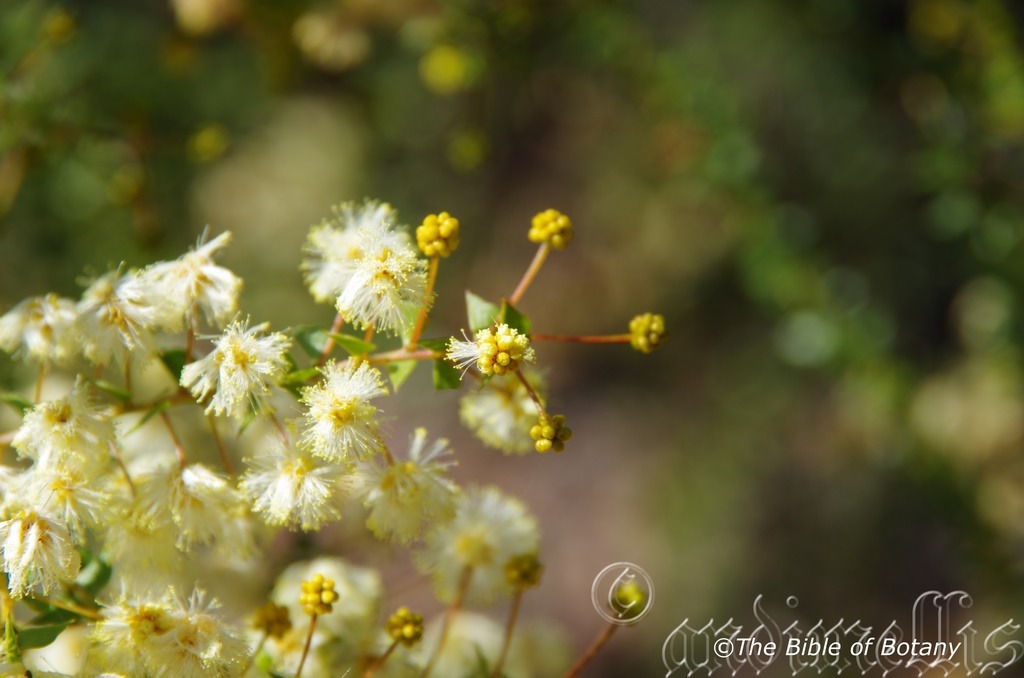
Rosser Botanic Gardens Qld

Rosser Botanic Gardens Qld
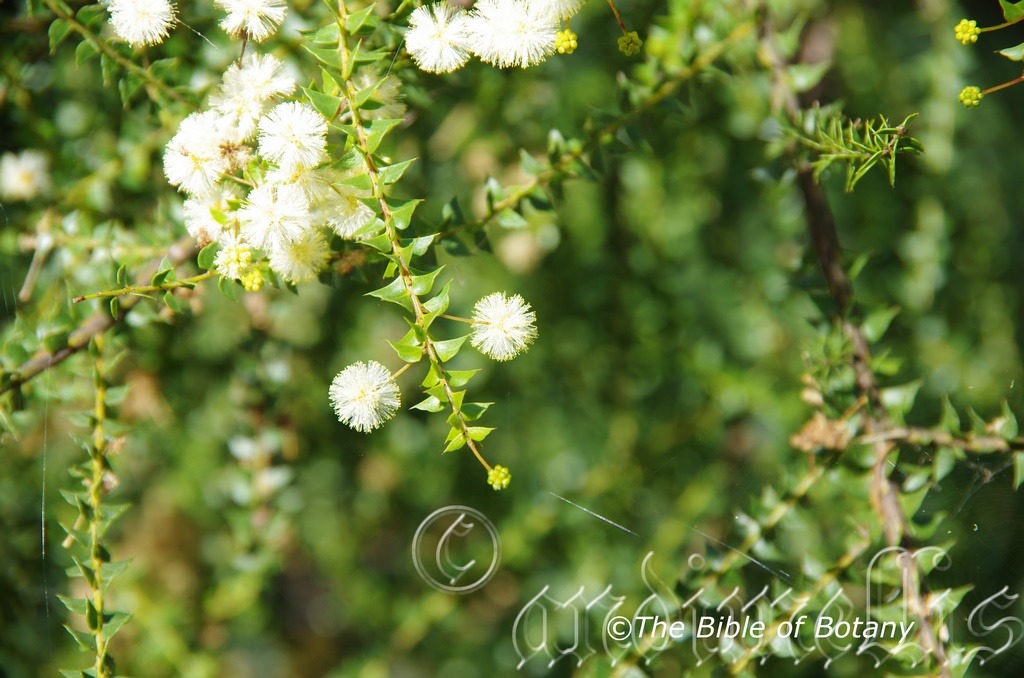
Rosser Botanic Gardens Qld
Acacia hubbardiana
Classification:
Class: Magnoliophyta
Order: Fabales
Family: Fabaceae
Subfamily: Mimosoideae
Genus: From ἀκακία, which is Ancient Greek or later Acanthium, which is Latin for to have a sharp point. It refers to the first species named by Dioscorides the Greek Botanist for the Egyptian plant Acacia arabica, which has very sharply pointed spines.
Specie: Is named in honour of Charles Edward Hubbard; 1900-1980, who was an English botanist who specialised in grasses.
Sub specie:
Common Name: Yellow Prickly Moses.
Distribution:
Acacia hubbardiana is found south from Deepwater National Park to Caboolture in southern coastal Queensland. It is found east of the Great Dividing Range to the coast.
https://avh.ala.org.au/occurrences/search?taxa=Acacia+hubbardiana#tab_mapView
Habitat Aspect Climate:
Acacia hubbardiana prefers coastal lowlands it often grows in poorly drained sand in open forest or heath associated with swamps, and on rocky slopes above about 150 m alt. on peaks of the Glasshouse Mtns. The altitude ranges from 3 meters ASL to 150 meters ASL
The temperatures range from 2 degrees in July to 40 degrees in January.
The rainfalls range from lows of 800mm to an average of 1400mm annually.
Soil Requirements:
Acacia hubbardiana prefer poorly drained, sandy heaths, peaty sands to light clays. The soils are usually derived from decomposed sandstones, basalts and accumulated sands. The soil?s pH ranges from 5pH to 6pH. It does not tolerate water logged soils. None saline soils to moderately saline soils are tolerated.
Height & Spread:
Wild Plants: 1m to 2m by 2m to 2.5m.
Characteristics:
Acacia hubbardiana is a spreading shrub with puberulous or at times subglabrous branchlets.
The phyllodes are dimidiate, orbicular to oblong and measure 5mm to 10mm in length by 3mm to 8mm in width at the broadest point, near or below middle. The glabrous phyllodes are markedly rounded with adaxial margin slightly angled at the gland and with its proximal edge parallel to branchlet, the abaxial margin straight. The midrib is curved and intersecting adaxial margin below the cusp with marginal nerves prominent.
The inflorescences are usually simple within the axils of reduced phyllodes near the apexes of the branchlets. Rarely forming axillary racemes to 30mm in length. The terete peduncles are glabrous or sparsely covered in puberulent hairs and measure 5mm to 12mm in length. The globular heads have 15 to 20 creamy yellow flowers. The flowers are five merous with a cupular sepals. The flowers appear from July to early September.
The pods are stipitate, oblong to narrowly oblong, raised over seeds, which alternate on each side and measure 40mm to 50mm in length by 10 to 15mm in width. They are thinly coriaceous and glabrous. The black, semi glossy seeds measure 4.5mm in length.
Wildlife:
Acacia hubbardiana is unknown to the author.
Cultivation:
Acacia hubbardiana is an unusual small to medium shrub. It is worthy of being grown in drainage problem areas in the garden. In cultivation it will grow from 1.5 meters to 1.8 meters in height by 2 meters to 2.5 meters in diameter when grown in the open.
It is best used away from paths as a back drop feature is the white wattle flowers born over a long period through summer and autumn. It is best used in to highlight fine leaf colourful plants in the foreground.
Propagation:
Seeds: Acacia hubbardiana require treatment before sowing. Pre-treat the seeds by placing the seeds into a glass of boiling water. Allow the water to cool and leave to soak for 4 to 5 hours. Seeds that have not swollen repeat the exercise.
Sow into a seed raising mix. When the seedlings are 25mm to 50mm tall, prick them out and plant them into 50mm native tubes using a seed raising mix.
Once the seedlings reach 200mm to 250mm in height plant them out into their permanent position. For screen plantings plant Acacia holosericea at 2 meter to 3 meter spacing?s then remove every second tree once they come in contact with each other. Replant new seedlings after 8 years as the trees only live for about 10 years.
Fertilize using Seaweed, fish emulsion or organic chicken pellets soaked in water on an alternate basis. Fertilize every two months until the plants are established then annually either in early September to March to maintain health, vitality and better flowering.
Further Comments from Readers:
All information is included in good faith and has been thoroughly researched prior to printing. The website or the author does not warrant or guarantee the accuracy of any information on these pages, nor does the website or the author accept any responsibility for any loss arising from the use of the information found within. The views and opinions are strictly those of the author or those members who chose to actively participate in the contents herein.
Hi reader, it seems you use The Bible of Botany a lot. That’s great as we have great pleasure in bringing it to you! It’s a little awkward for us to ask, but our first aim is to purchase land approximately 1,600 hectares to link several parcels of N.P. into one at The Pinnacles NSW Australia, but we need your help. We’re not salespeople. We’re amateur botanists who have dedicated over 30 years to saving the environment in a practical way. We depend on donations to reach our goal. If you donate just $5, the price of your coffee this Sunday, We can help to keep the planet alive in a real way and continue to bring you regular updates and features on Australian plants all in one Botanical Bible. Any support is greatly appreciated. Thank you.
In the spirit of reconciliation we acknowledge the Bundjalung, Gumbaynggirr and Yaegl and all aboriginal nations throughout Australia and their connections to land, sea and community. We pay our respect to their Elders past, present and future for the pleasures we have gained.
Acacia implexa
Classification:
Class: Magnoliophyta
Order: Fabales
Family: Fabaceae
Subfamily: Mimosoideae
Genus: From ἀκακία, which is Ancient Greek or later Acanthium, which is Latin for to have a sharp point. It refers to the first species named by Dioscorides the Greek Botanist for the Egyptian plant Acacia arabica, which has very sharply pointed spines.
Specie: From Implexus, which is Latin for interwoven or tangled. It refers to secondary veins on the fruits or pods, which have a network of veins or have twisted and entangled.
Sub specie:
Common Name: Hickory Wattle.
Distribution:
Acacia implexa is found south from Rockhampton in central Queensland to Bega in southern New South Wales. There is an isolated colony around Townsville in Queensland. It grows on the western slopes on and east of the Great Dividing Range to the coast.
https://avh.ala.org.au/occurrences/search?taxa=Acacia+implexa#tab_mapView
Habitat Aspect Climate:
Acacia implexa prefers full sun to partial shade. It grows in moist areas in dry rainforests, in moist rainforests, littoral rainforests, temperate rainforests or moist Eucalyptus forests. The altitude ranges from 10 meters ASL to 1200 meters ASL.
The temperatures range from lows of minus 4 degrees in July to 40 degrees in January.
The rainfall ranges from 700mm to 1650mm annually.
Soil Requirements:
Acacia implexa prefer better quality deep, sandy loams, light fatty clays to medium clays or light silts to heavy silts. The soils are usually derived from decomposed sandstones granites, brown basalts, black basalts, shales, metamorphic rocks, alluvial deposits or accumulated peaty beach sands. The soil?s pH ranges from 5pH to 7pH. It does not tolerate waterlogged soils. None saline soils to moderately saline soils are tolerated.
Height & Spread:
Wild Plants: 5m to 12m by 4m to 6m.
Characteristics:
Acacia implexa bark is pale brown to red-brown and hard becoming slightly fissured to corrugate on old trees especially near the base. The branchlets are brown with paler coloured lenticels while the terete or rarely angled smaller branchlets are pale blue-green to purple or yellow-green and pruinose.
The phyllodes are narrowly elliptical sub falcate to falcate and measuring 70mm to 180mm in length by 6mm to 25mm in width. There is a single prominent gland positioned just above the pulvinus which measures 1mm to 5mm in length. The bases are tapering while the apexes are acute to obtuse-acute with a straight mucronate tip. The concolourous laminas are blue?green to grass-green and glabrous. The margins are entire while the laminas are flat. The margins are entire while the laminas are flat. There are 3 to 7 longitudinal prominent veins, with several faintly visible anastomosing veins in between.
The inflorescences of Acacia implexa are globose heads on short racemes from the phyllodes axils. The rachises and peduncles are glabrous. The rachises measure 20mm to 30mm in length while the peduncles measure 6mm to 13mm in length. There is 4 to 8 globose heads on a raceme with 30 to 50 individual flowers in each globose head. The globose heads measure 6mm to 10mm in diameter while the individual flowers measure 2.5mm to 3.5mm in length.
The individual flowers are 5 merous. The 5 cream to pale lemon sepals are erect and glabrous. The orbicular petals are cream to pale lemon-yellow while the stamens are pale lemon yellow. The flowers measure 3.5mm to 5mm in diameter overall. Acacia implexa flowers appear from mid-August to September.
Acacia implexa fruits are twisted, coiled, glabrous pods. The pods measure 60mm to 200mm in length by 4mm to 7mm in width. The pods are flat, thinly coriaceous, only expanding around the seeds and slightly constricted along the margins. The blue-green or at times mid grass-green pods turn fawn-brown when ripe. The 4 to 9 broadly oblong to ovate?elliptical seeds measure 4.5mm to 5mm in length by 2.4mm to 2.6mm in width and 2.2mm to 2.4mm in depth. The glossy, black seeds have a long, white tapering funicle which is folded below the seed.
Wildlife:
This is an ideal plant for the control of soil erosion and nitrogen fixation.
It supports a large variety of small beetles including the green wattle hopper, (Hackerobrachys viridiventris) Native bees have been seen foraging pollen from the flowers.
The seeds are eaten by the Crimson Rosella (Platycerus elegans) and the King Parrot. (Alisterus scapularis) It is also visited by the Imperial Hairstreak butterfly. (Jalmenus evagoras evagoras)
www.saveourwaterwaysnow.com. au
Cultivation:
Acacia implexa is an attractive, upright, small bushy tree that are best suited to warm temperate to cool tropical gardens east of the Great Dividing Range or on the western slopes. Garden subjects will grow from 6 meter to 10 meters in height by 3 meters to 4 meters in diameter when grown in the open.
In native gardens it can be used to add nitrogen to the soil and to help break up medium clays making them more friable. This makes it an excellent starter plant for rainforest gardens or gardens where there may be moisture problems and where large amounts of mulch are required.
Garden beds would need to be open with plenty of space between plants to allow good air flow and plenty of light to reach all the inhabitants as they have a rather dense canopy.
Plants can be lightly pruned regularly to maintain a smaller bushy plant and to induce suckering where hedge rows are wanted. Crowding this type of foliage will see them form impenetrable barriers. Correct spacing is necessary to contrast the foliages of other small trees without one overpowering the other plants in the garden. For mass planting and hedgerows space the plants with at least 2 meters to 3 meters centers.
Single plants mixed with annuals helps to attract the viewer to the permanent plant?s foliage as it is the dominant foliage you want people to notice in the patch. In the case of Acacia implexa you could substitute annuals for the pink and red flowers of Boronia, Crowea, Hovea or even Verticordia species. Remember most annuals flower when Acacia implexa is resting during the summer and most Grevilleas will flower at the same time so a blend may be the way to go. Annuals mixed with Acacia implexa help to give medium to large gardens depth and make them look larger than what they really are due to the smaller diameter of mature plants. It works well with Grevillea banksii, other Grevilleas of similar size with red and orange flowering Anigozanthos which have beautiful contrasting foliages. This is the key to success with the flowers being a bonus. Plants look good for 8 or 10 years before its time to replace them.
Propagation:
Seeds: Acacia implexa seeds require treatment before sowing. Pre-treat the seeds by placing the seeds into a glass of boiling water. Allow the water to cool and leave to soak for 10 hours. Seeds that have not swollen repeat the above exercise.
Sow into a seed raising mix. When the seedlings are 25mm to 50mm tall, prick them out and plant them into 50mm native tubes using a seed raising mix.
Once the seedlings reach 200mm to 250mm in height plant them out into their permanent position. Plant them at 5 meter centers to create a quick growing screen or to cover hot blank walls.
Fertilize using Seaweed, fish emulsion or organic chicken pellets soaked in water on an alternate basis. Fertilize every two months until the plants are established then annually either in early September to March to maintain health, vitality and better flowering.
Further Comments from Readers:
All information is included in good faith and has been thoroughly researched prior to printing. The website or the author does not warrant or guarantee the accuracy of any information on these pages, nor does the website or the author accept any responsibility for any loss arising from the use of the information found within. The views and opinions are strictly those of the author or those members who chose to actively participate in the contents herein.
Hi reader, it seems you use The Bible of Botany a lot. That’s great as we have great pleasure in bringing it to you! It’s a little awkward for us to ask, but our first aim is to purchase land approximately 1,600 hectares to link several parcels of N.P. into one at The Pinnacles NSW Australia, but we need your help. We’re not salespeople. We’re amateur botanists who have dedicated over 30 years to saving the environment in a practical way. We depend on donations to reach our goal. If you donate just $5, the price of your coffee this Sunday, We can help to keep the planet alive in a real way and continue to bring you regular updates and features on Australian plants all in one Botanical Bible. Any support is greatly appreciated. Thank you.
In the spirit of reconciliation we acknowledge the Bundjalung, Gumbaynggirr and Yaegl and all aboriginal nations throughout Australia and their connections to land, sea and community. We pay our respect to their Elders past, present and future for the pleasures we have gained.

Woodenbong NSW.
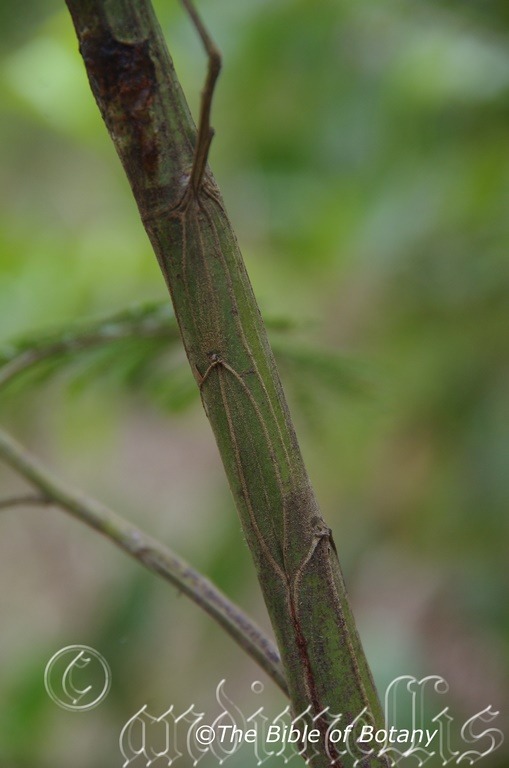
Woodenbong NSW.

Woodenbong NSW.
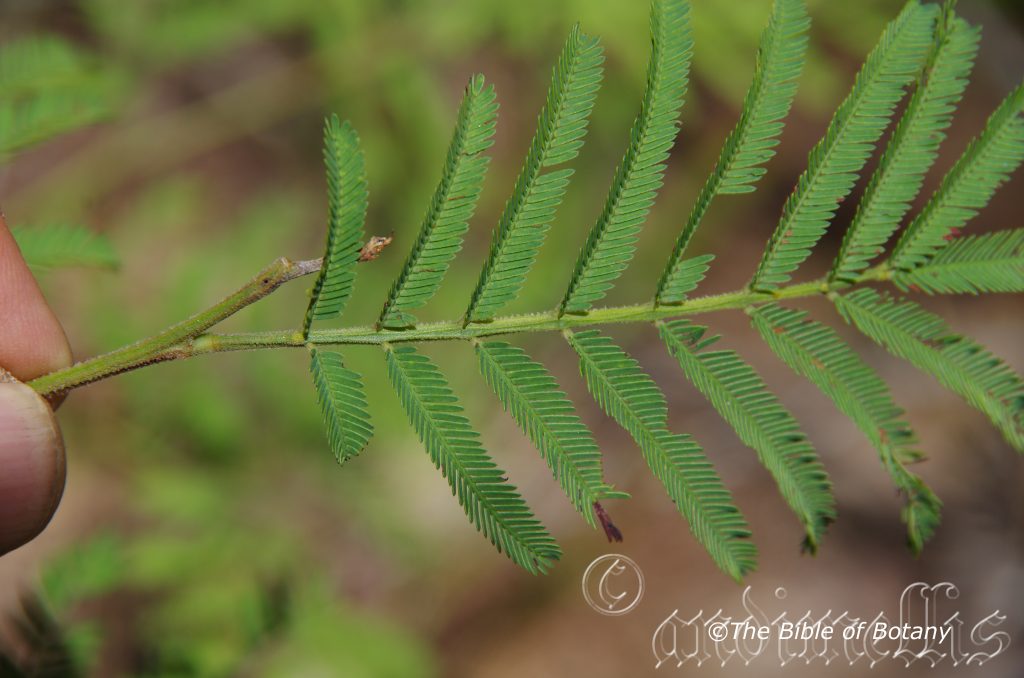
Cangai State Forest NSW.

Cangai State Forest NSW.
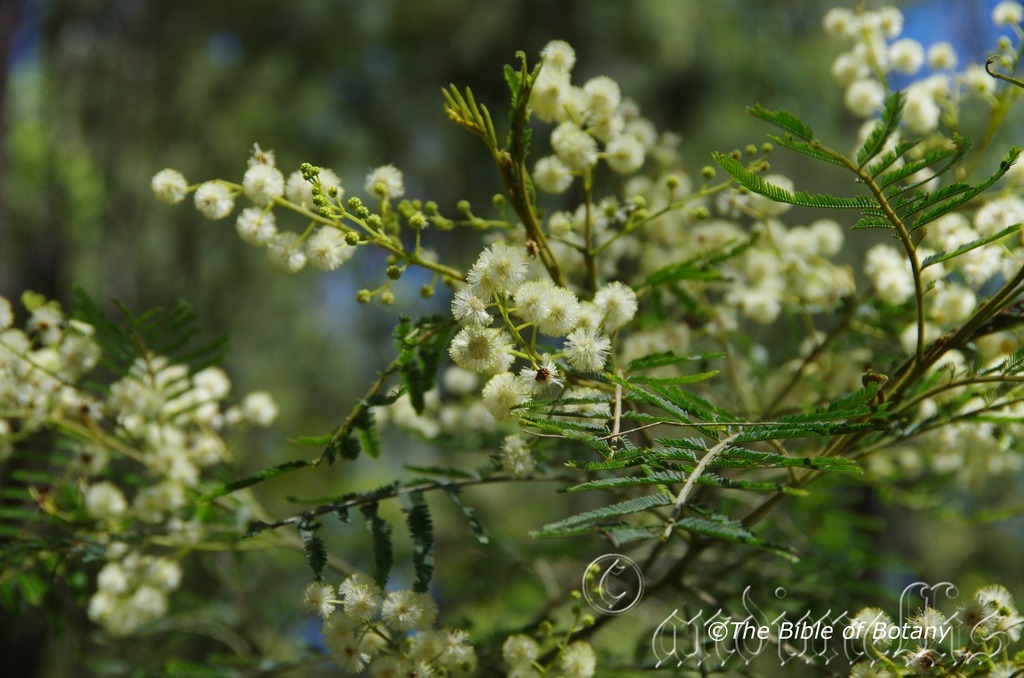
Woodenbong NSW.
Acacia irrorata
Classification:
Class: Magnoliophyta
Order: Fabales
Family: Fabaceae
Subfamily: Mimosoideae
Genus: From ἀκακία, which is Ancient Greek or later Acanthium, which is Latin for to have a sharp point. It refers to the first species named by Dioscorides the Greek Botanist for the Egyptian plant Acacia arabica, which has very sharply pointed spines.
Specie: From Irr?r?ta, which is Latin for to be sprinkled on or dewy. It refers to plants which appear to be moistened with dew or have had a light shower.
Sub specie: Acacia irrorata subsp. irrorata – From Irr?r?ta, which is Latin for to be sprinkled on or dewy. It refers to plants which appear to be moistened with dew or have had a light shower.
Sub specie: Acacia irrorata subsp. velutinella – From Velutinum, which is Latin for velvety. It refers to plants, which appear to have a velvet covering or are covered in velutinous hairs.
Common Name:
Distribution:
Acacia irrorata is found south from Gladstone in central coastal Queensland to Mount Everard in east Gippsland in eastern Victoria. It grows on and east of the Great Dividing Range to the coast and on the western slopes in central New South Wales.
https://avh.ala.org.au/occurrences/search?taxa=Acacia+irrorata#tab_mapView
Habitat Aspect Climate:
Acacia irrorata prefers full sun to partial shade. It grows in dry or wet sclerophyll forest and on the margins of mountain rainforests, often near watercourses and literal rainforests. The altitude ranges from 5 meters ASL to 1600 meters ASL.
The temperatures range from lows of minus 4 degrees in July to 40 degrees in January.
The rainfall ranges from 600mm to 1600mm annually.
Soil Requirements:
Acacia irrorata prefer better quality deep, sandy loams, light fatty clays to medium clays or light silts to heavy silts. The soils are usually derived from decomposed sandstones, granites, brown basalts, black basalts, shales, metamorphic rocks, alluvial deposits or accumulated peaty beach sands. The soil?s pH ranges from 5pH to 7pH. It does not tolerate water logged soils. None saline soils to moderately saline soils are tolerated.
Height & Spread:
Wild Plants: 4m to 12m by 4m to 6m.
Characteristics:
Acacia irrorata?s dark grey to almost black bark is smooth or sometimes finely fissured on older trees. The stems are mid green while the branchlets are angled to terete with ridges. The young stems are covered in yellow- to creamy-white hirsute hairs.
The petiole 1usually has a single gland at base of or just below the lowest pair of pinnae and measure 7mm to 20mm in length. The 20mm to 125mm long rachis is covered in yellowish hirsute hairs. Jugary glands are usually present at the upper 1 to 4 pairs of pinnae. There are 5 to 26 pairs of petiolules which measure 15mm to 50mm in length with 15 to 72 pairs of pinnules. The oblong to narrowly oblong pinnules measure 2mm to 5mm in length by 0.4mm to 1mm wide and are covered in fine yellowish hirsute hairs on margins and sometimes partly beneath.
The inflorescences of Acacia irrorata are globose heads on terminal, auxiliary racemes. The rachises and peduncles are glabrous. The rachises measure 20mm to 30mm in length while the peduncles measure 6mm to 13mm in length. There is 4 to 8 globose heads on a raceme with 15 to 50 individual flowers in each globose head. The globose heads measure 5mm to 7mm in diameter while the individual flowers measure 2.5mm to 3.5mm in length.
The individual flowers are 5 merous with 5 cream to pale lemon orbicular petals, while the stamens are pale lemon yellow. The flowers measure 3.5mm to 5mm in diameter overall. Acacia implexa flowers appear from mid-December to early February.
Acacia irrorata?s leathery pods are straight to slightly curved, or at times have a slight twist and are covered in minute yellow, cream or white hirtellus hairs and measure 20mm to 120mm in length by 5mm to 11mm in width. The longitudinal black seeds have a white filiform funicle.
Wildlife:
This is an ideal plant for the control of soil erosion and nitrogen fixation in riparian zones.
They support a large variety of small beetles including the green wattle hopper, Hackerobrachys viridiventris. Native bees have been seen foraging pollen from the flowers.
Cultivation:
Acacia irrorata is an attractive, upright, small bushy tree that is best suited to warm temperate to cool tropical gardens east of the Great Dividing Range or on the western slopes where soil moisture is retained for long periods. Garden subjects will grow from 6 meter to 10 meters in height by 3 meters to 4 meters in diameter when grown in the open.
In native gardens it can be used to help break up medium clays making them more friable. This makes it an excellent starter plant for rainforest gardens or gardens where there may be moisture problems and where large amounts of mulch are required.
Garden beds would need to be open with plenty of space between plants to allow good air flow and plenty of light to reach all the inhabitants as it will lose leave if it is too crowded.
For mass planting and hedgerows space the plants with at least 2 meters to 3 meters centers.
Single plants mixed with annuals helps to attract the viewer to the permanent plant?s foliage as it is the dominant foliage you want people to notice in the patch. In the case of Acacia irrorata you could substitute annuals for the pink and red flowers of Boronia, Crowea, purple Hovea or even Verticordia species. Remember most annuals flower in summer at the same time as Acacia irrorata so a brilliant summer colour is assured. Annuals mixed with Acacia irrorata help to give medium to large gardens depth and make them look larger than what they really are due to the smaller diameter of mature plants. It works well with the hybrid from Grevillea banksii, robin-gordon and other Grevilleas of similar size with red and orange flowering Anigozanthus sp. which have beautiful contrasting foliages. This is the key to success with the flowers being a bonus. Plants look good for 5 or 8 years before its time to replace them.
Propagation:
Seeds: Acacia irrorata seeds require treatment before sowing. Pre-treat the seeds by placing the seeds into a glass of boiling water. Allow the water to cool and leave to soak for 10 hours. Seeds that have not swollen repeat the above exercise.
Sow into a seed raising mix. When the seedlings are 25mm to 50mm tall, prick them out and plant them into 50mm native tubes using a seed raising mix.
Once the seedlings reach 200mm to 250mm in height plant them out into their permanent position. Plant them at 5 meter centers to create a quick growing screen or to cover hot blank walls.
Fertilize using Seaweed, fish emulsion or organic chicken pellets soaked in water on an alternate basis. Fertilize every two months until the plants are established then annually either in early September to March to maintain health, vitality and better flowering.
Further Comments from Readers:
All information is included in good faith and has been thoroughly researched prior to printing. The website or the author does not warrant or guarantee the accuracy of any information on these pages, nor does the website or the author accept any responsibility for any loss arising from the use of the information found within. The views and opinions are strictly those of the author or those members who chose to actively participate in the contents herein.
Hi reader, it seems you use The Bible of Botany a lot. That’s great as we have great pleasure in bringing it to you! It’s a little awkward for us to ask, but our first aim is to purchase land approximately 1,600 hectares to link several parcels of N.P. into one at The Pinnacles NSW Australia, but we need your help. We’re not salespeople. We’re amateur botanists who have dedicated over 30 years to saving the environment in a practical way. We depend on donations to reach our goal. If you donate just $5, the price of your coffee this Sunday, We can help to keep the planet alive in a real way and continue to bring you regular updates and features on Australian plants all in one Botanical Bible. Any support is greatly appreciated. Thank you.
In the spirit of reconciliation we acknowledge the Bundjalung, Gumbaynggirr and Yaegl and all aboriginal nations throughout Australia and their connections to land, sea and community. We pay our respect to their Elders past, present and future for the pleasures we have gained.

The Pinnacles NSW
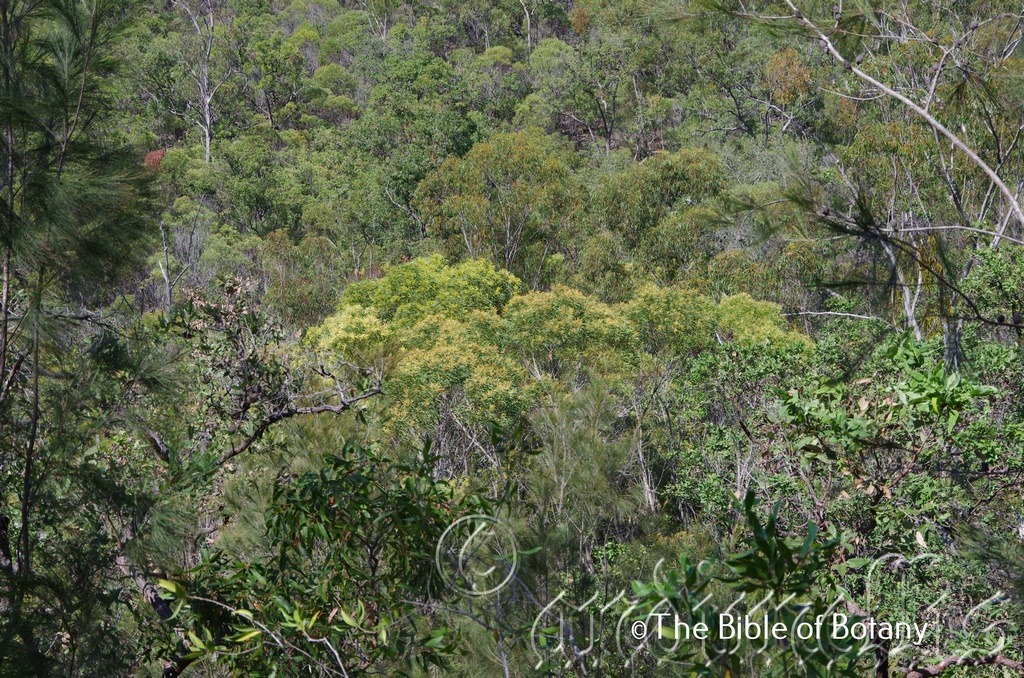
The Pinnacles NSW
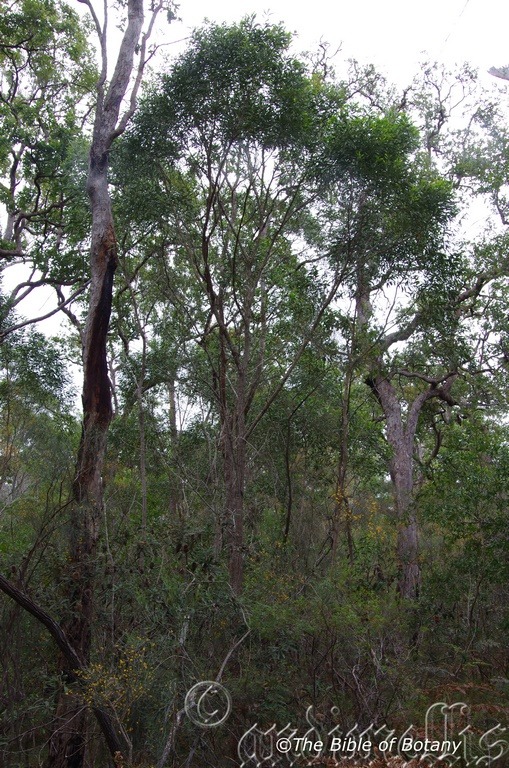

The Pinnacles NSW
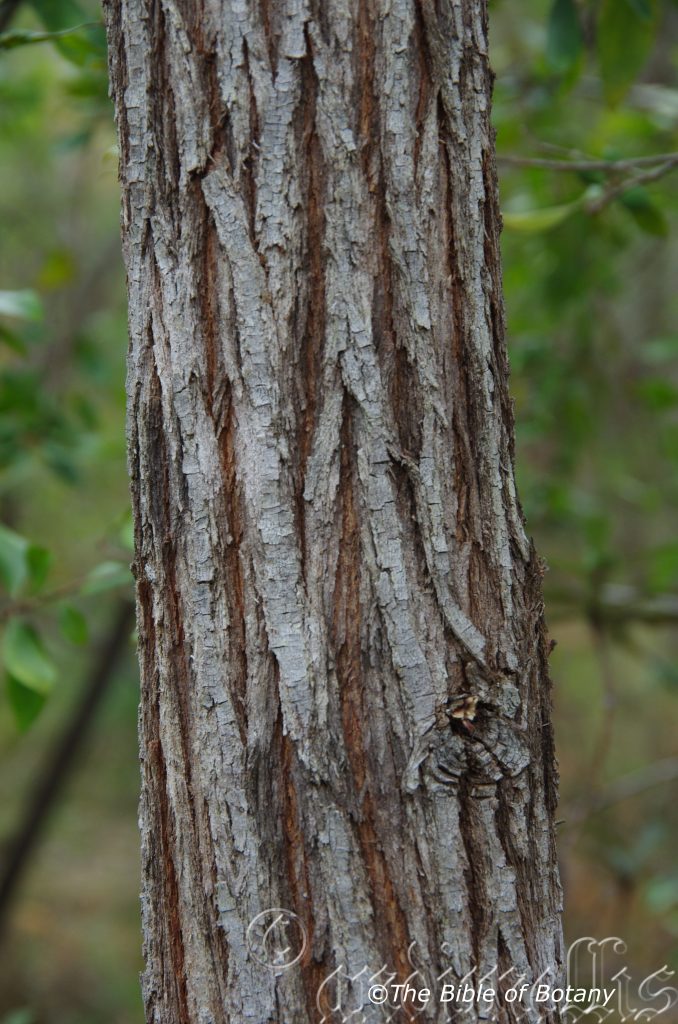
The Pinnacles NSW
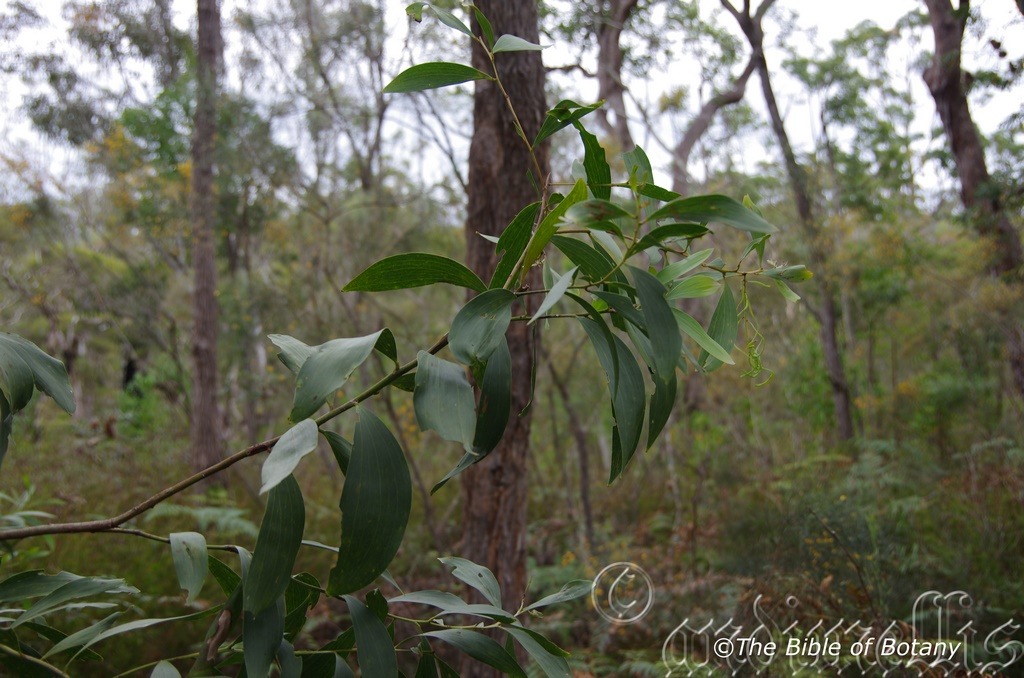
The Pinnacles NSW
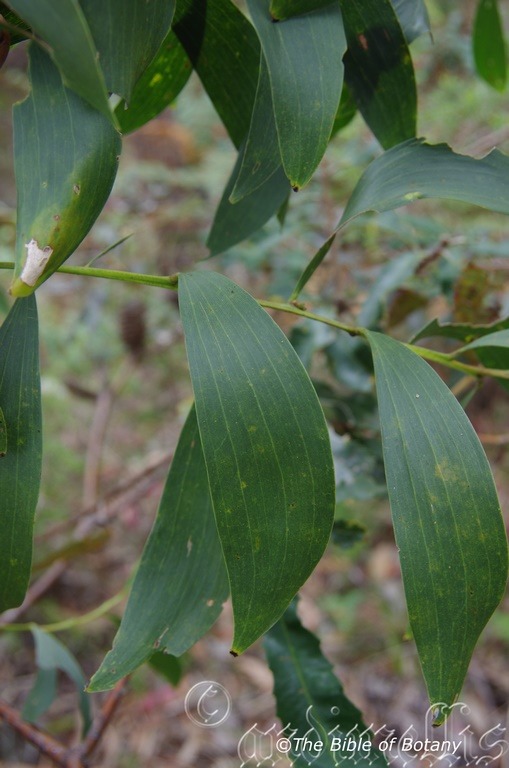
The Pinnacles NSW

The Pinnacles NSW
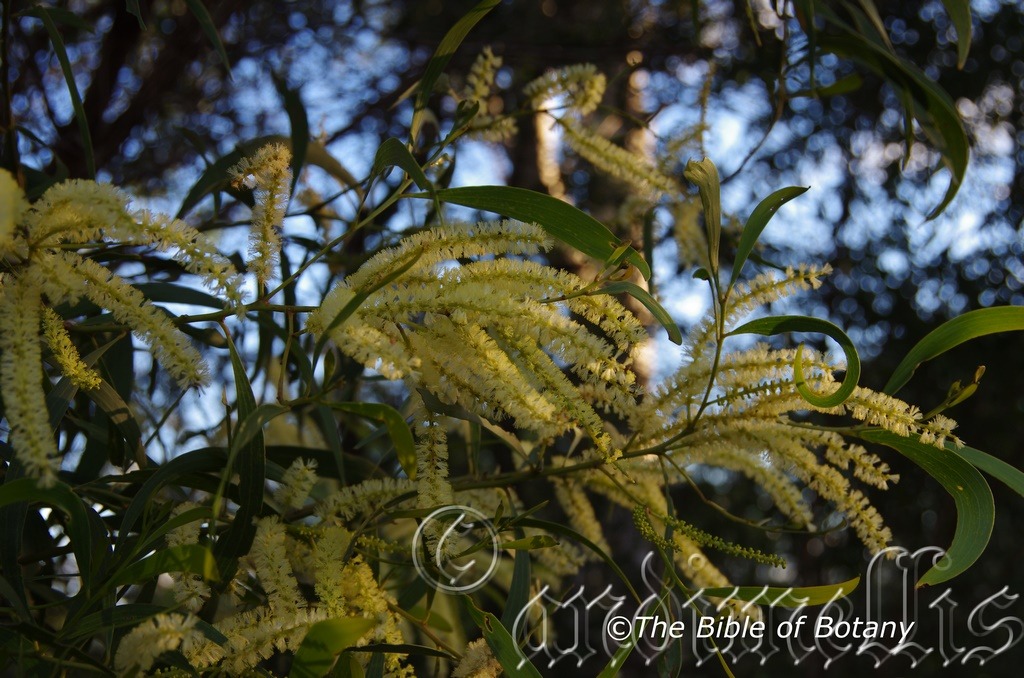
The Pinnacles NSW
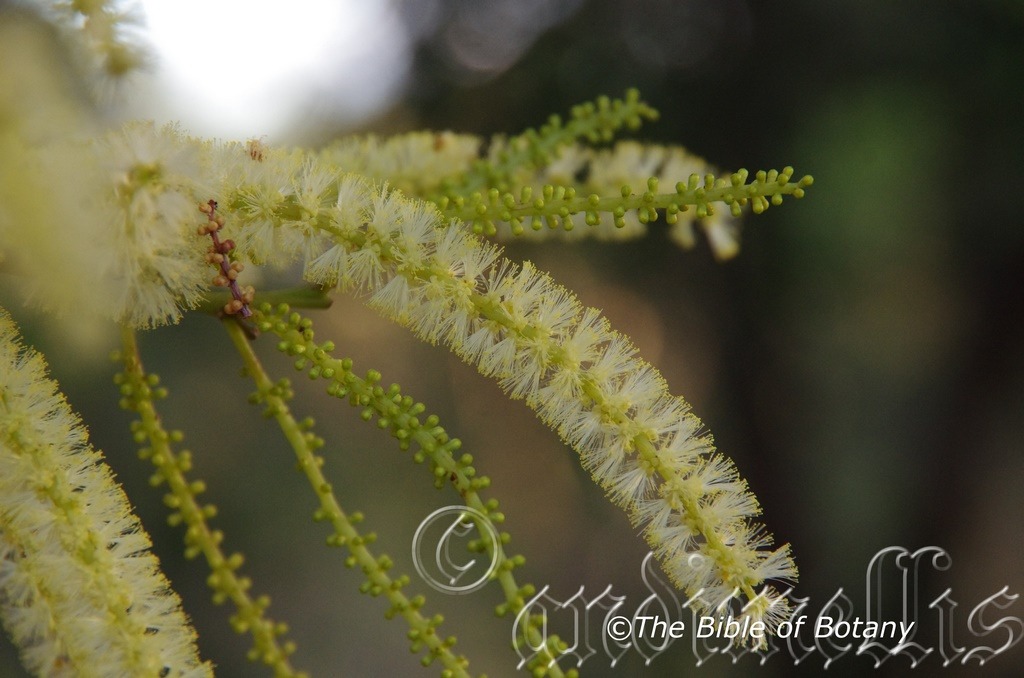
The Pinnacles NSW
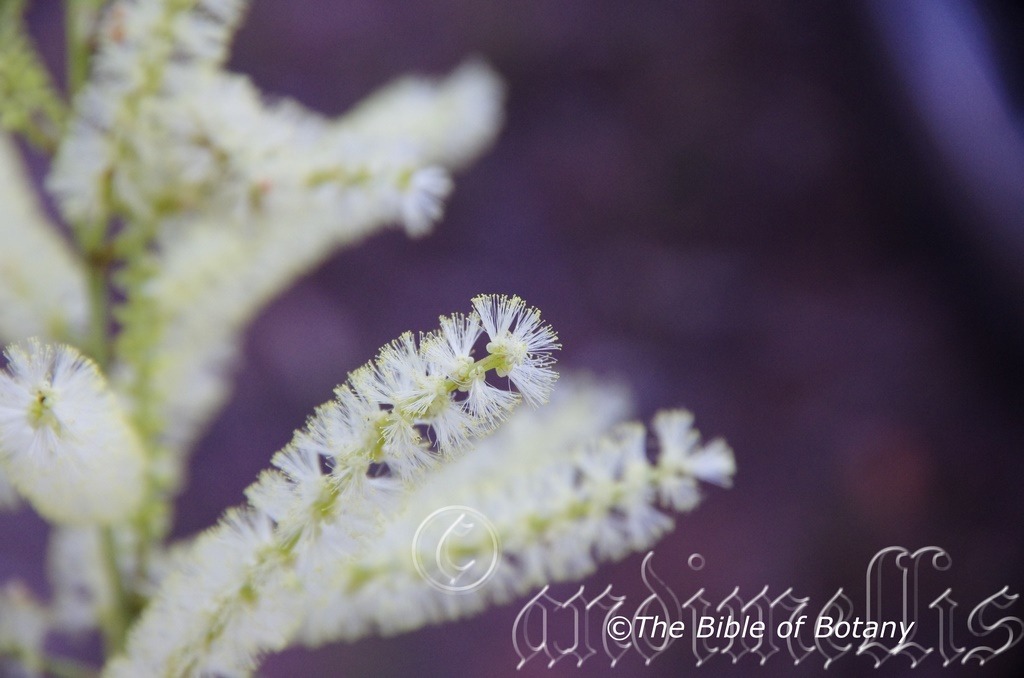
The Pinnacles NSW

The Pinnacles NSW

The Pinnacles NSW.

The Pinnacles NSW.
Acacia leiocalyx
Classification:
Class: Magnoliophyta
Order: Fabales
Family: Fabaceae
Subfamily: Mimosoideae
Genus: From ἀκακία, which is Ancient Greek or later Acanthium, which is Latin for to have a sharp point. It refers to the first species named by Dioscorides the Greek Botanist for the Egyptian plant Acacia arabica, which has very sharply pointed spines.
Specie: From Le?os, which is Ancient Greek, smooth or sleek and K?lux, which is Ancient Greek, for a cup or chalice. It refers to the cup shape protective covering at the base of many flowers.
Sub specie: Acacia leiocalyx subsp. herveyensis?s ? From Hervey Bay and ??nse, which is Latin for making a topographical place an adjective. It refers to plants, which were first discovered around Hervey Bay.
Acacia leiocalyx subsp. leiocalyx?s – From Le?os, which is Ancient Greek, smooth or sleek and K?lux, which is Ancient Greek, for a cup or chalice. It refers to the cup shape protective covering at the base of many flowers.
Common Name:
Distribution:
Acacia leiocalyx is found south from Mackay in central coastal Queensland west to Blackhall and Tambo in Queensland and south Sydney in central coastal New South Wales. It grows on the western plains, on and and east of the Great Dividing Range to the coast.
https://avh.ala.org.au/occurrences/search?taxa=Acacia+leiocalyx#tab_mapView
Habitat Aspect Climate:
Acacia leiocalyx prefers full sun to partial shade. It grows in dry or wet sclerophyll forest and on the margins of literal rainforests and in open woodlands. The altitude ranges from 5 meters ASL to 1400 meters ASL.
The temperatures range from lows of minus 4 degrees in July to 40 degrees in January.
The rainfall ranges from 600mm to 1600mm annually.
Soil Requirements:
Acacia leiocalyx subsp. herveyensis?s prefers to grow on sand on the back dunes and beach scrub or on clay soils in drier eucalyptus forests.
Acacia leiocalyx subsp. leiocalyx?s prefers a wide range of soils derived from decomposed sandstones, granites, brown basalts, black basalts, shales, metamorphic rocks, alluvial deposits or accumulated peaty beach sands. The soil?s pH ranges from 5pH to 7pH. It does not tolerate water logged soils. None saline soils to moderately saline soils are tolerated.
Height & Spread:
Wild Plants: 4m to 7m by 4m to 5m.
Characteristics:
Acacia leiocalyx grows as a shrub or small tree. The usually red-brown to grey-brown bark is slightly corrugated to fissured on older plants. The branchlets are sharply angled, glabrous, or at times slightly scurfy.
The pulvinus petiole measures 2mm to 5mm in length. The elliptic to narrowly elliptic, straight to falcate Phyllodes measure 70mm to 180mm in length by 7mm to 35mm in width, while juvenile phyllodes are much broader. The phyllodes are glabrous, with 3 or more longitudinal veins more prominent. The lower 2 join together near base, while the minor longitudinal veins are anastomosing. The phyllode bases are strongly tapering oblique while the apexes are acute to obtuse. There is a single gland near the base;
There are two or rarely a single pale yellow or at times yellow inflorescence are cylindrical spikes from the axils which measure 30mm to 100mm in length. Acacia leiocalyx?s peduncles are glabrous and measure 3mm to 8mm in length.
The individual flowers are 5 merous Acacia leiocalyx flowers appear from April to September.
Acacia leiocalyx pods are curved, twisted or coiled 1 to 2 times, variably raised over the seeds and more deeply, constricted between seeds. The pods measure 40mm to 150mm in length by 2mm to 4mm in width. They are papery to thinly leathery, brittle and longitudinally ridged or wrinkled when dry. The longitudinal black seeds? have a bright yellow funicle that is folded several times and terminating in an aril.
Specie Differences:
Acacia leiocalyx subsp. herveyensis?s phyllodes measure 70mm to 180mm in length by 12mm to 35mm in width wit a ratio of 4 to 9 time. Flowering occurs from July to September.
Acacia leiocalyx subsp. leiocalyx?s phyllodes measure 90mm to 160mm in length by 7mm to 16mm in length with a ratio of 8 to 19 times. Flowering occurs from mid-April to July in coastal Qld, late April to August in inland Qld.
Wildlife:
Acacia leiocalyx is an ideal plant for the control of soil erosion and nitrogen fixation in riparian zones.
They support a large variety of small beetles including the green wattle hopper, Hackerobrachys viridiventris. Native bees have been seen foraging pollen from the flowers.
Cultivation:
Acacia leiocalyx is an attractive, upright, small bushy tree that is best suited to warmer temperate to cool tropical gardens east of the Great Dividing Range or on the western slopes where soil moisture is retained for long periods. Garden subjects will grow from 6 meter to 8 meters in height by 3 meters to 4 meters in diameter when grown in the open.
In native gardens it can be used to help break up medium clays making them more friable. This makes it an excellent starter plant for rainforest gardens or gardens where there may be moisture problems and where large amounts of mulch are required.
Garden beds would need to be open with plenty of space between plants to allow good air flow and plenty of light to reach all the inhabitants as it will lose leave if it is too crowded.
For mass planting for quick hedgerows space the plants with at least 3 meters to 4 meters centers.
Single plants mixed with annuals helps to attract the viewer to the permanent plant?s foliage as it is the dominant foliage you want people to notice in the patch. In the case of Acacia irrorata you could substitute annuals for the pink and red flowers of Boronia, Crowea, purple Hovea or even Verticordia species. Remember most annuals flower in summer at the same time as Acacia irrorata so a brilliant summer colour is assured. Annuals mixed with Acacia irrorata help to give medium to large gardens depth and make them look larger than what they really are due to the smaller diameter of mature plants. It works well with the hybrid from????? Grevillea banksii, robin-gordon and other Grevilleas of similar size with red and orange flowering Anigozanthos which have beautiful contrasting foliages. This is the key to success with the flowers being a bonus. Plants look good for 5 or 8 years before its time to replace them.
Propagation:
Seeds: Acacia leiocalyx seeds require treatment before sowing. Pre-treat the seeds by placing the seeds into a glass of boiling water. Allow the water to cool and leave to soak for 10 hours. Seeds that have not swollen repeat the above exercise.
Sow into a seed raising mix. When the seedlings are 25mm to 50mm tall, prick them out and plant them into 50mm native tubes using a seed raising mix.
Once the seedlings reach 200mm to 250mm in height plant them out into their permanent position. Plant them at 5 meter centers to create a quick growing screen or to cover hot blank walls.
Fertilize using Seaweed, fish emulsion or organic chicken pellets soaked in water on an alternate basis. Fertilize every two months until the plants are established then annually either in early September to March to maintain health, vitality and better flowering.
Further Comments from Readers:
All information is included in good faith and has been thoroughly researched prior to printing. The website or the author does not warrant or guarantee the accuracy of any information on these pages, nor does the website or the author accept any responsibility for any loss arising from the use of the information found within. The views and opinions are strictly those of the author or those members who chose to actively participate in the contents herein.
Hi reader, it seems you use The Bible of Botany a lot. That’s great as we have great pleasure in bringing it to you! It’s a little awkward for us to ask, but our first aim is to purchase land approximately 1,600 hectares to link several parcels of N.P. into one at The Pinnacles NSW Australia, but we need your help. We’re not salespeople. We’re amateur botanists who have dedicated over 30 years to saving the environment in a practical way. We depend on donations to reach our goal. If you donate just $5, the price of your coffee this Sunday, We can help to keep the planet alive in a real way and continue to bring you regular updates and features on Australian plants all in one Botanical Bible. Any support is greatly appreciated. Thank you.
In the spirit of reconciliation we acknowledge the Bundjalung, Gumbaynggirr and Yaegl and all aboriginal nations throughout Australia and their connections to land, sea and community. We pay our respect to their Elders past, present and future for the pleasures we have gained.

Hidden Valley Paluma Range Qld.

Mount Zero Paluma Range Qld.
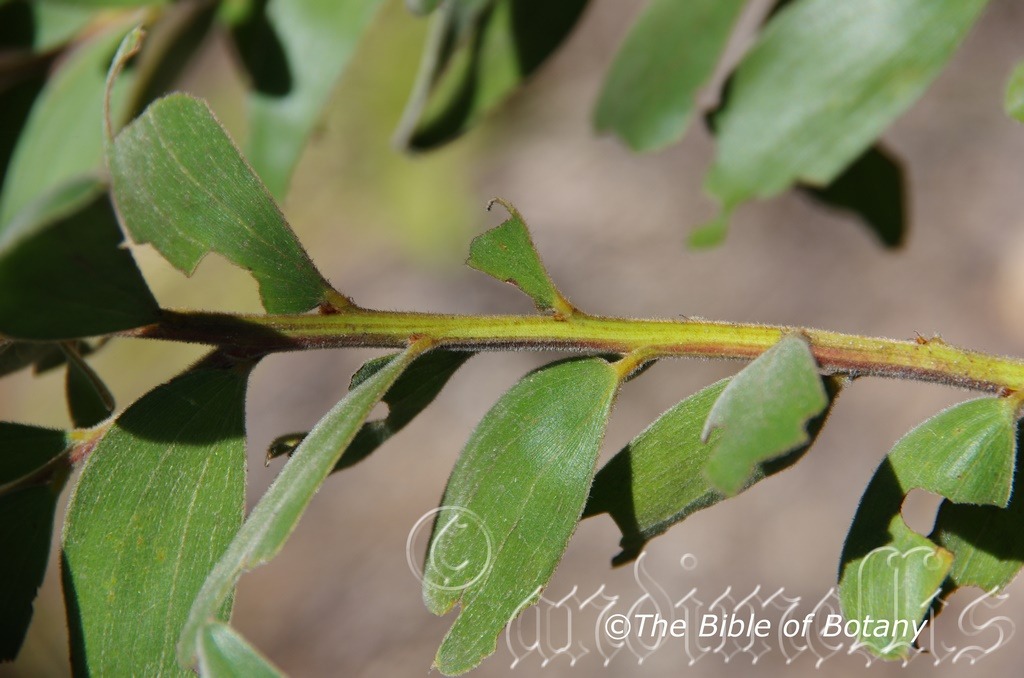
Mount Zero Paluma Range Qld.

Mount Zero Paluma Range Qld.
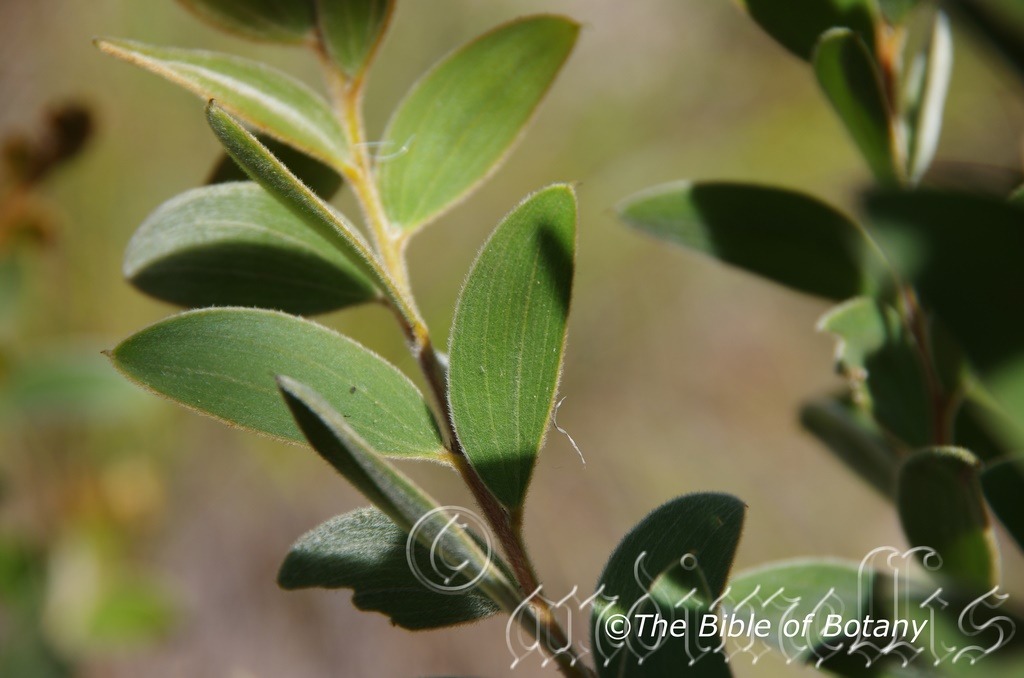
Mount Zero Paluma Range Qld.
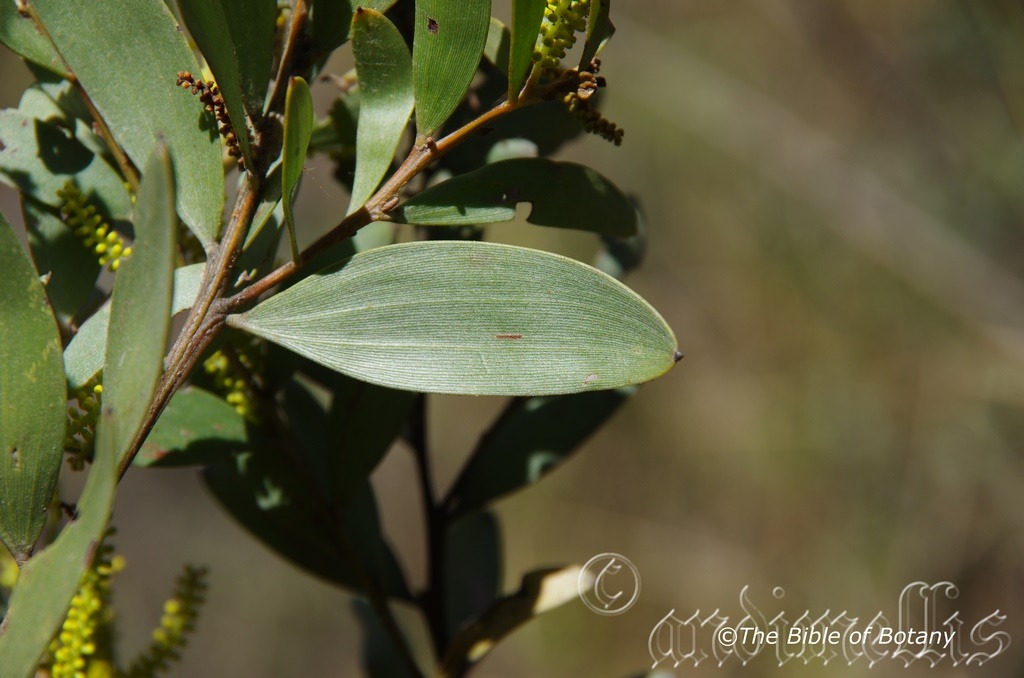
Hidden Valley Paluma Range Qld.

Hidden Valley Paluma Range Qld.

Mount Zero Paluma Range Qld.

Hidden Valley Paluma Range Qld.

Hidden Valley Paluma Range Qld.
Acacia leptostachya
Classification:
Class: Magnoliophyta
Order: Fabales
Family: Fabaceae
Subfamily: Mimosoideae
Genus: From ἀκακία, which is Ancient Greek or later Acanthium, which is Latin for to have a sharp point. It refers to the first species named by Dioscorides the Greek Botanist for the Egyptian plant Acacia arabica, which has very sharply pointed spines.
Specie: From Leptos, which is Ancient Greek, slender or fine, and stakhus which is Ancient Greek for an ear of grain. It refers to flowers, which usually appear on a spike.
Sub specie:
Common Name: Slender Wattle or Townsville Wattle.
Distribution:
Acacia leptostachya grows on the Eastern central zone on Cape York Peninsula near Coen through coastal and inland districts to as far south as Maryborough and Boatman Station, south of Charleville, It also occurs near Riversleigh Station about 200 kilometres northwest of Mount Isa.
There are several isolated populations in Western Australia between Mount Marshal in the south west to Warburton in the north east.
https://avh.ala.org.au/occurrences/search?taxa=Acacia+leptostachya#tab_mapView
Habitat Aspect Climate:
Acacia leptostachya prefers full sun to partial shade. It prefers drier eucalyptus woodlands, open eucalyptus forests or amongst Triodia hummock grassland on plains. The altitude ranges from 5 meters ASL to 1600 meters ASL.
The temperatures range from lows of 4 degrees in July to 40 degrees in January.
The rainfall ranges from 400mm to 3200mm annually.
Soil Requirements:
Acacia leptostachya grows on a wide range deep fine to course sands, accumulated sands and skeletal soils over sandstone or granite and usually derived from decomposed sandstone or granite. The soil?s pH ranges from 5pH to 7pH. It does not tolerate water logged soils. None saline soils to moderately saline soils are tolerated.
Height & Spread:
Wild Plants: 1m to 6m by 1.5m to 3m.
Characteristics:
Acacia leptostachya grows as a small shrub to small tree. The new growth is somewhat resinous. Stems are sparsely to moderately covered in appressed pubescent hairs.
The phyllodes are narrow elliptic to lanceolate, or at times almost linear, straight to slightly curved and measure 3.5mm to 120mm in length by 3mm to 20mm in width. The phylodes are subglabrous to moderately covered in soft pubescent and silvery appressed pubescent hairs. The 5 to 7 parallel veins are numerous and non anastomosing.
The peduncles are sparsely to moderately covered in appressed pubescent hairs and measure 1mm to 5mm in length. The deep golden yellow inflorescences appear in pairs as cylindrical racemes and measure 20mm to 50mm in length. The sepals are united forming a glabrous receptacle.
Acacia leptostachya linear, chartaceous to thinly coriaceous pods are are glabrous. They are raised over the seeds and are non restrictive between the seeds and measure to 40mm to 60mm in length by 20 to 90mm in width.
The glossy, oblong, deep brown seeds measure 2.7mm to 4 mm in length. The short aril is white to pale grey.11mm in width.
Wildlife:
Acacia leptostachya is unknown to the author.
Cultivation:
Acacia leptostachya is an attractive, upright, bushy shrub with attractive glaucous foliage and would be best suited to warm temperate dry climates either side of the Great Dividing Range. Garden subjects will grow from 1 meter to 8 meters in height by 3 meters to 4 meters in diameter when grown in the open or as the focal point.
In native gardens it can be used to help break up medium clays making them more friable. This makes it an excellent starter plant for rainforest gardens or gardens where there may be moisture problems and where large amounts of mulch are required.
Garden beds would need to be open with plenty of space between plants to allow good air flow and plenty of light to reach all the inhabitants as it will lose leave if it is too crowded.
Single plants mixed with annuals helps to attract the viewer to the permanent its foliage. In the case of Acacia leptostachya you could substitute annuals for the pink and red flowers of Boronia, Crowea, purple Hovea or even Verticordia species or other arid perennials. Remember most annuals flower in summer at the same time as Acacia irrorata so a brilliant summer colour is assured. Annuals mixed with Acacia irrorata help to give medium to large gardens depth and make them look larger than what they really are due to the smaller diameter of mature plants. It works well with the hybrid from Grevillea banksii, robin-gordon and other Grevilleas of similar size with red and orange flowering Anigozanthos which have beautiful contrasting foliages. This is the key to success with the flowers being a bonus. Plants look good for 5 or 8 years before its time to replace them.
Propagation:
Seeds: Acacia leptostachya seeds require treatment before sowing. Pre-treat the seeds by placing the seeds into a glass of boiling water. Allow the water to cool and leave to soak for 10 hours. Seeds that have not swollen repeat the above exercise.
Sow into a seed raising mix. When the seedlings are 25mm to 50mm tall, prick them out and plant them into 50mm native tubes using a seed raising mix.
Once the seedlings reach 200mm to 250mm in height plant them out into their permanent position. Plant them at 5 meter centers to create a quick growing screen or to cover hot blank walls.
Fertilize using Seaweed, fish emulsion or organic chicken pellets soaked in water on an alternate basis. Fertilize every two months until the plants are established then annually either in early September to March to maintain health, vitality and better flowering.
Further Comments from Readers:
All information is included in good faith and has been thoroughly researched prior to printing. The website or the author does not warrant or guarantee the accuracy of any information on these pages, nor does the website or the author accept any responsibility for any loss arising from the use of the information found within. The views and opinions are strictly those of the author or those members who chose to actively participate in the contents herein.
Hi reader, it seems you use The Bible of Botany a lot. That’s great as we have great pleasure in bringing it to you! It’s a little awkward for us to ask, but our first aim is to purchase land approximately 1,600 hectares to link several parcels of N.P. into one at The Pinnacles NSW Australia, but we need your help. We’re not salespeople. We’re amateur botanists who have dedicated over 30 years to saving the environment in a practical way. We depend on donations to reach our goal. If you donate just $5, the price of your coffee this Sunday, We can help to keep the planet alive in a real way and continue to bring you regular updates and features on Australian plants all in one Botanical Bible. Any support is greatly appreciated. Thank you.
In the spirit of reconciliation we acknowledge the Bundjalung, Gumbaynggirr and Yaegl and all aboriginal nations throughout Australia and their connections to land, sea and community. We pay our respect to their Elders past, present and future for the pleasures we have gained.
Acacia linearifolia
Classification:
Class: Magnoliophyta
Order: Fabales
Family: Fabaceae
Subfamily: Mimosoideae
Genus: From ἀκακία, which is Ancient Greek or later Acanthium, which is Latin for to have a sharp point. It refers to the first species named by Dioscorides the Greek Botanist for the Egyptian plant Acacia arabica, which has very sharply pointed spines.
Specie: From linearis, which is Latin for linear or straight and Folia, which is Latin for a leaf or foliage. It refers to plants, which have straight leaves or phyllodes.
Sub specie:
Common Name: Stringy Bark Wattle or Linear Leaf Wattle.
Distribution:
Acacia linearifolia is found growing from the Scone to Denman area west to Dunedoo to Gulgong. There are isolated populations further south near Binalong and Wagga Wagga and further north near Tamworth in New South Wales.
https://avh.ala.org.au/occurrences/search?taxa=Acacia+linearifolia#tab_mapView
Habitat Aspect Climate:
Acacia linearifolia prefers full sun to partial shade. It prefers drier eucalyptus woodlands to open eucalyptus forests. The altitude ranges from 300 meters ASL to 900 meters ASL.
The temperatures range from lows of 0 degrees in July to 40 degrees in January.
The rainfall ranges from 400mm to 800mm annually.
Soil Requirements:
Acacia linearifolia is restricted in its preference for colluvial sands on lower slopes on sand over sandstone.
Height & Spread:
Wild Plants: 4m to 10m by 2m to 5m.
Characteristics:
Acacia linearifolia’s juvenile leaves are bipinnate and may persist on lower branches. The usually glabrous stems are deep reddish maroon or at times are somewhat glaucous.
The thin, smooth, green to greyish-green, glabrous phyllodes are narrow linear and measure 60mm to 140mm in length by 2mm to 5mm in width. The bases taper while the apexes are apices recurved mucronate to uncinate. The lateral nerves are absent or obscure. There is a single pustular gland or at times 2 positioned 10mm to 60mm from the pulvinus.
Acacia linearifolia’s glabrous peduncles measure 2mm to 4mm in length. The flowers are 5-merous with the sepals being united. The pale cream to golden yellow, glabrous inflorescences are globular raceme from the upper axes and measure 25mm to 60mm in length. There are 20 to 30 individual flowers in a head. The flowers appear from late July to October.
The Pods are raised on opposite sides over alternate seeds and are slightly constricted between seeds. The firmly chartaceous to thinly coriaceous, reddish-brown seeds are glabrous and measure 80mm to 120mm in length by 5mm to 7.5mm in width. The longitudinal seeds are oblong to elliptic and measure 5mm to 6mm in length. The glossy black seeds have a short, whitish clavate aril.
Wildlife:
Acacia linearifolia is affected by borer as the trees age.
Cultivation:
Acacia linearifolia is an attractive, spreading, shrub or small tree with attractive green foliage and would be best suited to warm temperate dry climates either side of the Great Dividing Range. Garden subjects will grow from 6 meter to 10 meters in height by 3 meters to 5 meters in diameter when grown in the open or as the focal point.
In native gardens it detests clay soils and should be restricted to sandy soils. This makes it an excellent starter plant for woodland gardens or gardens where there may be watering problems.
Garden beds would need to be open with plenty of space between plants to allow good air flow and plenty of light to reach all the inhabitants as it will lose leave if it is too crowded.
Single plants scattered with shorter perennials and ground covers does it justice. In the case of Acacia linearifolia plants with pink and red flowers like Boronia, Crowea, or even Verticordia species look good. Ground covers with purple flowers like Scaevola aemula or a variety of Hovea species look terrific when the wattle is in flower.
Annuals mixed with Acacia linearifolia help to give medium to large gardens depth and make them look larger than what they really are due to the smaller diameter of mature plants. It works well with the hybrid from Grevillea banksii, robin-gordon and other Grevilleas of similar size with red and orange flowering Anigozanthos which have beautiful contrasting foliages. This is the key to success with the flowers being a bonus. Plants look good for 5 or 8 years before its time to replace them.
Unfortunately as good as the trees looked for 4 years they deteriorated quickly without producing any viable seed.
Propagation:
Seeds: Acacia linearifolia seeds require treatment before sowing. Pre-treat the seeds by placing the seeds into a glass of boiling water. Allow the water to cool and leave to soak for 10 hours. Seeds that have not swollen repeat the above exercise.
Sow into a seed raising mix and cover with 5mm to 10mm of the mix. When the seedlings are 25mm to 50mm tall, prick them out and plant them into 50mm native tubes using a seed raising mix.
Once the seedlings reach 200mm to 250mm in height plant them out into their permanent position. Plant them at 5 meter centers to create a quick growing screen or to cover hot blank walls.
Fertilize using Seaweed, fish emulsion or organic chicken pellets soaked in water on an alternate basis. Fertilize every two months until the plants are established then annually either in early September to March to maintain health, vitality and better flowering.
Further Comments from Readers:
All information is included in good faith and has been thoroughly researched prior to printing. The website or the author does not warrant or guarantee the accuracy of any information on these pages, nor does the website or the author accept any responsibility for any loss arising from the use of the information found within. The views and opinions are strictly those of the author or those members who chose to actively participate in the contents herein.
Hi reader, it seems you use The Bible of Botany a lot. That’s great as we have great pleasure in bringing it to you! It’s a little awkward for us to ask, but our first aim is to purchase land approximately 1,600 hectares to link several parcels of N.P. into one at The Pinnacles NSW Australia, but we need your help. We’re not salespeople. We’re amateur botanists who have dedicated over 30 years to saving the environment in a practical way. We depend on donations to reach our goal. If you donate just $5, the price of your coffee this Sunday, We can help to keep the planet alive in a real way and continue to bring you regular updates and features on Australian plants all in one Botanical Bible. Any support is greatly appreciated. Thank you.
In the spirit of reconciliation we acknowledge the Bundjalung, Gumbaynggirr and Yaegl and all aboriginal nations throughout Australia and their connections to land, sea and community. We pay our respect to their Elders past, present and future for the pleasures we have gained.

The Pinnacles NSW

The Pinnacles NSW
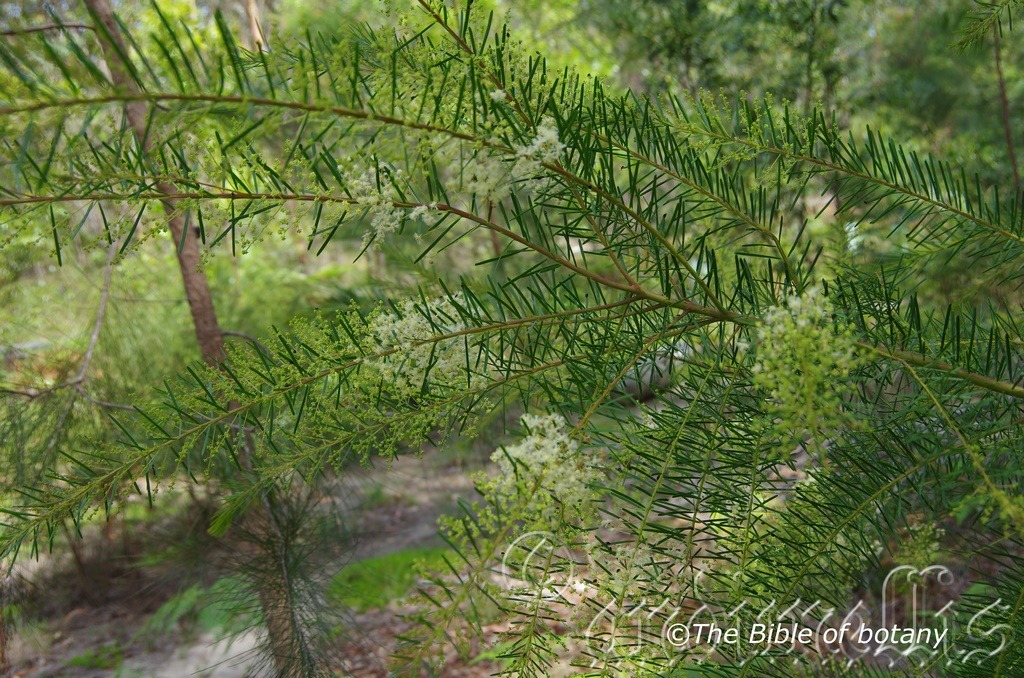
The Pinnacles NSW
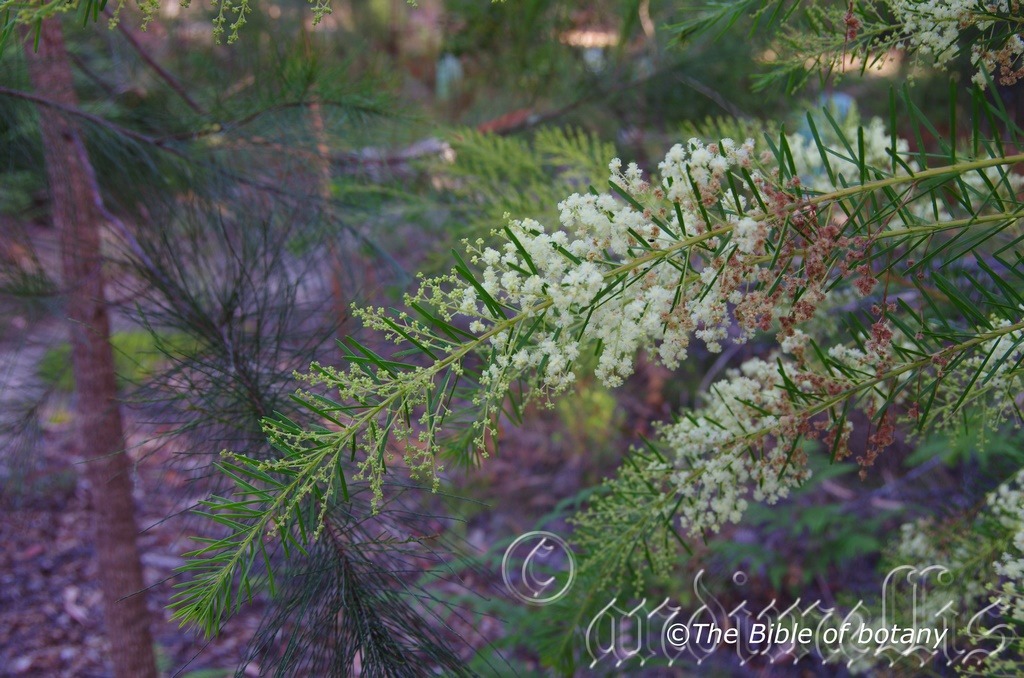
The Pinnacles NSW
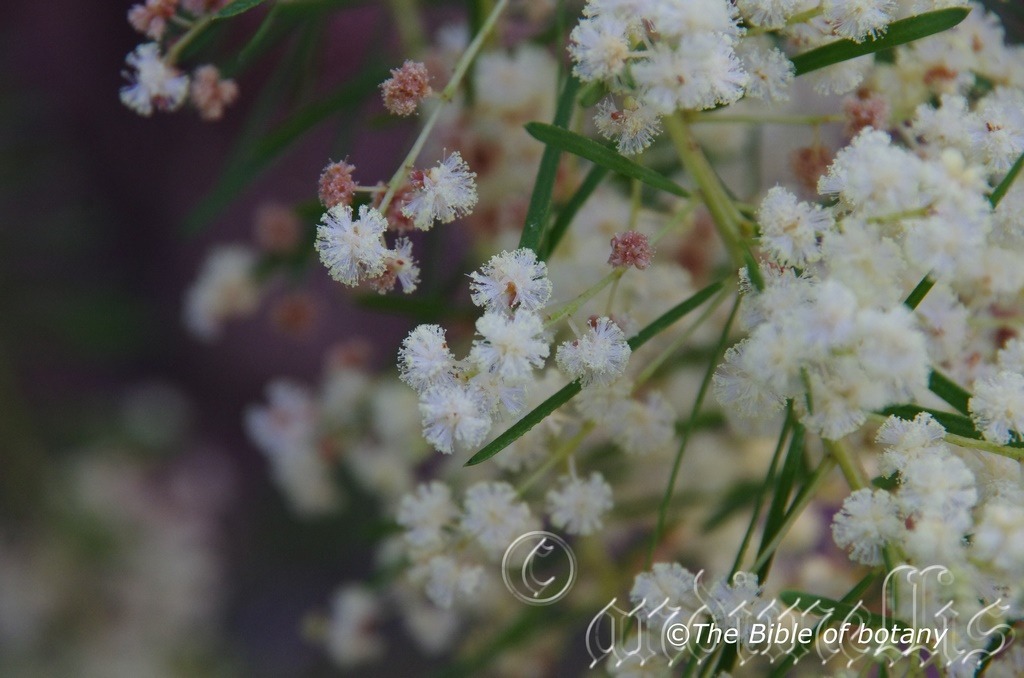
The Pinnacles NSW

The Pinnacles NSW

The Pinnacles NSW

The Pinnacles NSW

The Pinnacles NSW
Acacia linifolia
Classification:
Class: Magnoliophyta
Order: Fabales
Family: Fabaceae
Subfamily: Mimosoideae
Genus: From ἀκακία, which is Ancient Greek or later Acanthium, which is Latin for to have a sharp point. It refers to the first species named by Dioscorides the Greek Botanist for the Egyptian plant Acacia arabica, which has very sharply pointed spines.
Specie: From Linis, which is Latin for linear or straight and Folia, which is Latin for a leaf or foliage. It refers to plants, which have straight leaves or phyllodes.
Sub specie:
Common Name: WhiteWattle or Flax Wattle.
Distribution:
Acacia linifolia is found growing from the Hunter Valley south to the Hill Top district south to Mittagong. There are isolated populations further south near Binalong and Wagga Wagga and further north near Tamworth, Coramba and the Gibraltar Range National Park in New South Wales.
https://avh.ala.org.au/occurrences/search?taxa=Acacia+linifolia#tab_mapView
Habitat Aspect Climate:
Acacia linifolia prefers full sun to partial shade. It prefers grows in dry sclerophyll forests, woodlands and coastal and mountainous heaths. The altitude ranges from 3 meters ASL to 1000 meters ASL.
The temperatures range from lows of minus 3 degrees in July to 40 degrees in January.
The rainfall ranges from 600mm to 1200mm annually.
Soil Requirements:
Acacia linifolia grows in sandy, often skeletal soils on or over sandstone.
Height & Spread:
Wild Plants: 1.5m to 5.5m by 2m to 4m.
Characteristics:
Acacia linifolia’s greyish bark is smooth or finely fissured. The branchlets are somewhat angular especially near the apices, finely ridged, glabrous or at times sparsely to moderately covered in white hirsute hairs.
The thin, smooth, green to greyish-green, usually linear phyllodes are glabrous or sparsely covered in white hirsute hairs and measure 20mm to 75mm in length by 7mm to 3mm in width. The bases taper slightly near the stem while the apexes are acute with a small mucronate tip. The midvein is prominent on both laminas, while the lateral veins are obscure. There is a single pustular gland or at times 2 positioned 10mm to 60mm from the pulvinus. 1 small gland 5mm to 15mm above the pulvinus, while the pulvinus measures 0.5mm to 2mm in length.
Acacia linifolia?s inflorescences are axillary raceme with 5 to 17 ball like flowers on each raceme. The racemes measure 20mm to 50mm in length. The slender, glabrous or at times are sparsely covered in white hairs. The peduncles measure 2mm to 5mm in length. The individual globose heads have 6 to 12 individual, pale yellow to almost white flowers measure 4mm to 6mm in diameter. The flowers appear throughout the year with a slight peak during August to October.
The straight to slightly curved pods are flat except where they are raised over the seeds. The firmly chartaceous to thinly coriaceous, reddish-brown seeds are glabrous and measure 30mm to 120mm in length by 8mm to 15mm in width. The glossy black seeds are oblong to elliptic and measure 5mm to 6mm in length including the white subclavate aril.
Wildlife:
Acacia linifolia is affected by borer as the trees age.
Cultivation:
Acacia linifolia is an attractive, small upright to semi spreading, shrub with attractive green foliage and would be best suited to warm temperate dry climates either side of the Great Dividing Range. Garden subjects will grow from 4 meter to 6 meters in height by 3 meters to 5 meters in diameter when grown in the open or as the focal point.
In native gardens it detests clay soils and should be restricted to sandy soils. This makes it an excellent starter plant for woodland gardens or gardens where there may be watering problems.
Garden beds would need to be open with plenty of space between plants to allow good air flow and plenty of light to reach all the inhabitants as it will lose leave if it is too crowded.
Single plants scattered with shorter perennials and ground covers does it justice. In the case of Acacia linifolia plants with pink and red flowers like Boronia, Crowea, or even Verticordia species will contrast well. Ground covers with purple flowers like Scaevola aemula or a variety of Hovea species look terrific when the wattle is in flower.
Annuals mixed with Acacia linifolia help to give medium to large gardens depth and make them look larger than what they really are due to the smaller diameter of mature plants. It works well with the hybrid from Grevillea banksii, robin-gordon and other Grevilleas of similar size with red and orange flowering Anigozanthos which have beautiful contrasting foliages. This is the key to success with the flowers being a bonus. Plants look good for 5 or 8 years before its time to replace them.
Unfortunately as good as the shrubs are it will start to deteriorate after four or five years.
Propagation:
Seeds: Acacia linifolia seeds require treatment before sowing. Pre-treat the seeds by placing the seeds into a glass of boiling water. Allow the water to cool and leave to soak for 10 hours. Seeds that have not swollen repeat the above exercise.
Sow into a seed raising mix and cover with 5mm to 10mm of the mix. When the seedlings are 25mm to 50mm tall, prick them out and plant them into 50mm native tubes using a seed raising mix.
Once the seedlings reach 200mm to 250mm in height plant them out into their permanent position. Plant them at three to five 5 meter centers to create a quick growing screen or to cover hot blank walls.
Fertilize using Seaweed, fish emulsion or organic chicken pellets soaked in water on an alternate basis. Fertilize every two months until the plants are established then annually either in early September to March to maintain health, vitality and better flowering.
Further Comments from Readers:
Hi reader, it seems you use The Bible of Botany a lot. That’s great as we have great pleasure in bringing it to you! It’s a little awkward for us to ask, but our first aim is to purchase land approximately 1,600 hectares to link several parcels of N.P. into one at The Pinnacles NSW Australia, but we need your help. We’re not salespeople. We’re amateur botanists who have dedicated over 30 years to saving the environment in a practical way. We depend on donations to reach our goal. If you donate just $5, the price of your coffee this Sunday, We can help to keep the planet alive in a real way and continue to bring you regular updates and features on Australian plants all in one Botanical Bible. Any support is greatly appreciated. Thank you.
In the spirit of reconciliation we acknowledge the Bundjalung, Gumbaynggirr and Yaegl and all aboriginal nations throughout Australia and their connections to land, sea and community. We pay our respect to their Elders past, present and future for the pleasures we have gained.
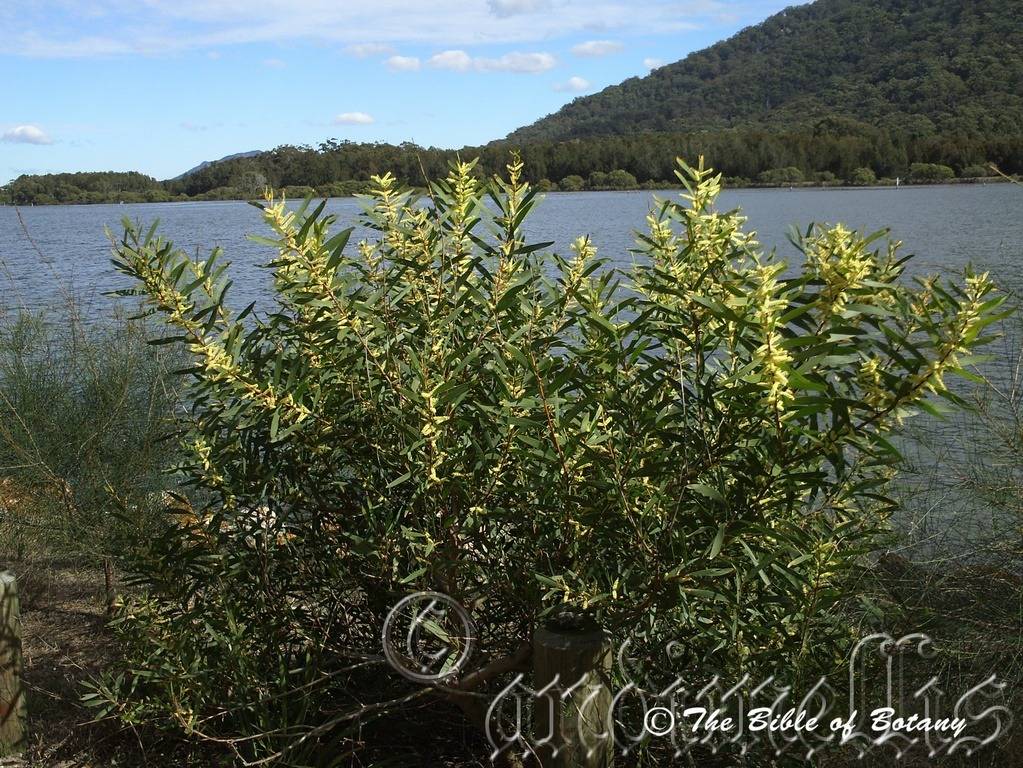
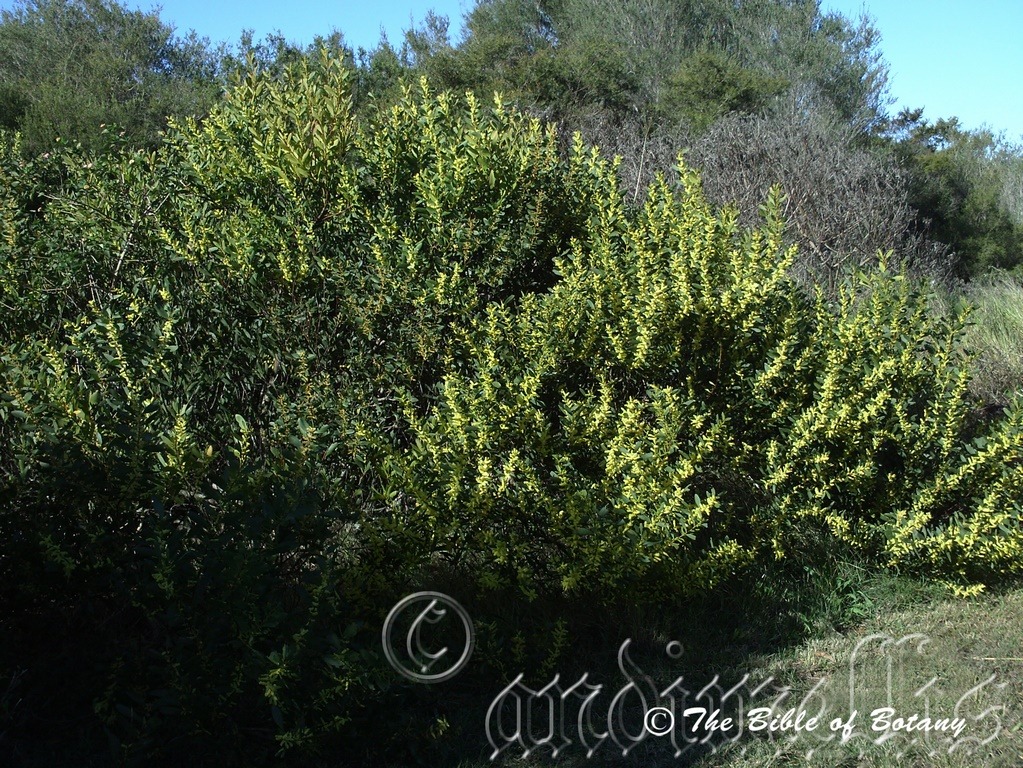
Acacia longifolia
Classification:
Class: Magnoliophyta
Order: Fabales
Family: Fabaceae
Subfamily: Mimosoideae
Genus: From ἀκακία, which is Ancient Greek or later Acanthium, which is Latin for to have a sharp point. It refers to the first species named by Dioscorides the Greek Botanist for the Egyptian plant Acacia arabica, which has very sharply pointed spines.
Specie: From Longitia/Longus, which is Latin for long in length and Folium, which is Latin for foliage. It refers to leaves, which are long and strap like.
Sub specie: Acacia longifolia subsp. longifolia: From Longitia/Longus, which is Latin for long in length and Folium, which is Latin for foliage. It refers to leaves, which are long and strap like.
Sub specie: Acacia longifolia subsp. sophorae: From Sophora, which is Latinized for the Arabic word for a similar looking plant with yellow pea flowers. It refers to plants, which resemble the Arabian plant.
Common Name: Coastal Wattle or Sydney Golden Wattle.
In the Aboriginal language it is known as Buandig.
Distribution: Acacia longifolia can be found growing naturally along streams and creeks along the East coast of Australia between Carnarvon Gorge in the north south to Wilsons Promontory and west to Streaky bay in South Australia. It is also found on the Bass Strait Islands and the coastal rim of Tasmania. The western Australian populations are garden escapees.
Acacia longifolia Subsp. longifolia prefers slopes & inland forests away from the coast.
Acacia longifolia Subsp. sophorae prefers coastal habitats.
https://avh.ala.org.au/occurrences/search?taxa=Acacia+longifolia#tab_mapView
Habitat Aspect Climate:
Acacia longifolia prefers full sun to partial shade. It grows in moist areas in dry rainforests, in moist rainforests, littoral rainforests, temperate rainforests or moist Eucalyptus forests. The altitude ranges from 1 meters ASL to 1300 meters ASL
The temperatures range from lows of minus 4 degrees in July to 40 degrees in January.
The rainfall ranges from 700mm to 2050mm annually.
Soil Requirements:
Acacia longifolia prefer better quality deep, sandy loams, light fatty clays to medium clays or light silts to heavy silts. The soils are usually derived from decomposed sandstones granites, brown basalts, black basalts, shales, metamorphic rocks, alluvial deposits or accumulated peaty beach sands. The soil?s pH ranges from 5pH to 7pH. It does not tolerate water logged soils. None saline soils to moderately saline soils are tolerated.
Height & Spread:
Wild Plants:
Acacia longifolia Sub specie. longifolia 2m to 8m by 4m to 6m.
Acacia longifolia Sub specie. sophorae 0.5m to 3m by 4m to 6m.
Characteristics:
Acacia longifolia bark is grey, smooth to finely fissure. The branchlets curve towards the apexes and are grass-green and glabrous to sparsely covered in white sericeous hairs.
The phyllodes of Acacia longifolia sub specie longifolia are narrowly elliptical very narrowly elliptical and measure 60mm to 200mm in length by 5mm to 20mm in width. There is a single gland positioned just above the pulvinus which measures 3mm to 5mm in length. The bases are cuneate while the apexes are acute to acute-obtuse. The concolourous laminas are deep grass-green and glabrous to sparsely covered in white caduceus sericeous hairs. The margins are entire while the laminas are flat. There are usually 2 or 3 sometimes 4 longitudinal veins which are more prominent compared to the other longitudinal veins and faintly anastomosing between the longitudinal veins.
The phyllodes of Acacia longifolia sub specie sophorae are obovate to narrowly elliptical or oblanceolate and measure 40mm to 110mm in length by 10mm to 30mm in width. There is a single gland positioned just above the pulvinus which measures 3mm to 5mm in length. The bases are cuneate while the apexes are acute to obtuse. The concolourous laminas are deep grass-green and glabrous to sparsely covered in white caduceus sericeous hairs. The margins are entire while the laminas are flat. There are 2 to 4 longitudinal veins which are more prominent compared to the other longitudinal veins.
The inflorescences of Acacia longifolia are 1 or 2 cylindrical spikes on racemes born from the phyllodes axils. The rachises and peduncles are glabrous. The rachises measure 20mm to 45mm in length while the peduncles measure 0mm to 3mm in length.
The individual flowers are 4 merous. The 4 pale lemon to bright yellow sepals are erect and glabrous. The orbicular petals are pale lemon-yellow to bright yellow while the stamens are pale lemon-yellow. The flowers measure 3.5mm to 5mm in diameter overall. Acacia longifolia flowers appear from mid-June to October.
Acacia longifolia sub specie longifolia pods are straight to curved, sometimes curled back or twisted on opening.
Acacia longifolia sub specie sophorae pods are usually coiled or twisted on opening.
The pods of Acacia longifolia measure 40mm to 190mm in length by 3mm to 6mm in width. The pods are chartaceous, constricted around the seeds and constricted along the margins. The mid grass-green pods turn brown externally and orange brown internally when ripe. The ripe pods are longitudinally wrinkled, ridged and glabrous or very sparsely covered in white hirtellus hairs. The 4 to 8 oblong to oblong?elliptical seeds measure 4mm to 4.5mm in length by 3mm to 3.6mm in diameter. The glossy, black seeds have an orange to orange-yellow funicle which expands greatly where it is attached to the seed and is folded into an aril below the seeds base.
Wildlife:
This is an ideal plant for the control of soil erosion and nitrogen fixation.
Acacia longifolia support a large variety of small beetles including the green wattle hopper. (Hackerobrachys viridiventris) Other beautiful beetles are the Blue spotted Weevils (Chrysologus spectabilis) unfortunately they also like to lay their eggs where the larvae form burrows into the stems and branches.
Mealy bugs (Pseudococcidae) are often seen feeding on the sap on the trees even in isolated places in the bush. In nature there is a balance and help feed many small birds
Numerous species of flies have been seen feeding on the spittle foam which often exudes from the branches.
The green pods can be harvested, steamed or roasted and eaten. I believe they have a taste reminiscent of green peas.
Native bees have been seen foraging pollen from the flowers.
The seeds are probably eaten by the Crimson Rosella (Platycerus elegans) and the King Parrot (Alisterus scapularis) as I have seen both specie frequenting the trees as the seeds ripen year after year but cannot say for sure that they actually eat the seeds because the birds are rather flighty in our neck of the woods when you approach them.
Cultivation:
It would make an good fire retardant large shrub.
* Fire retardant plants act as radiant heat screens and absorb more heat from an approaching fire without burning.
* Fire retardant trees are able reduce wind speed near a house or out buildings.
* Fire retardant also trap embers and sparks carried by the wind.
* Fire retardant ground covers are able to catch burning embers without catching fire themselves, and also slow the travel of a fire through debris and litter on the ground.
Acacia longifolia is a beautiful wide spreading large shrub or small tree that are best suited to cool temperate to cool tropical gardens up the east coast on both sides of the Great Dividing Range. Acacia longifolia sub specie longifolia will grow from 5 meter to 9 meters in height by 3 meters to 5 meters in diameter when grown in the open while Acacia longifolia sub specie sophorae will grow from 1 meter to 4 meters in height by 4 meters to 6 meters in diameter when grown in the open.
In native gardens it can be used to add nitrogen to the soil and to help break up medium clays in the case of Acacia longifolia sub specie longifolia making them more friable or binding very sandy soils in the case of Acacia longifolia sub specie sophorae. It is an excellent starter plant to give quick growth protect more delicate plants and good flowering displays over several weeks throughout the winter months in large gardens. The foliage is particularly attractive and contrasts well with plants that have deep blue-green, broad leaf plants admirably. Try prostrate red flowering Grevilleas or tall narrow red flowering Grevilleas for contrasting foliages. Bright coloured annuals or mixed beds with a mosaic of different coloured foliages between clumps of Acacia longifolia or use it as the central feature surrounded by annuals or perennials.
Single plants mixed with annuals helps to attract the viewer to the permanent plant?s foliage as it is the dominant foliage you want people to notice in the patch. In the case of Acacia longifolia you could substitute very small Grevillea, Crowea, Hovea or even Verticordia species in lieu of the native annuals. A bed of mixed Anigozanthos surrounding Acacia implexa is particularly stunning when young. Remember most annuals flower when Acacia longifolia is resting during the summer and most Grevillea specie will flower at the same time so a blend may be the way to go. Annuals mixed with Acacia longifolia help to give medium to large gardens depth and make them look larger than what they really are due to the smaller diameter of mature plants. It works well with Grevillea banksii, other Grevilleas of similar size with red and orange flowering Anigozanthos specie which have beautiful contrasting foliages. This is the key to success with the flowers being a bonus.
Acacia longifolia sub specie longifolia makes a great addition to a new rainforest garden on a medium size block where fast growth is required with good shade and trunk formation. They make reasonable host plants for larger epiphytic ferns like Platycerium.
Propagation:
Seeds: Acacia longifolia seeds require treatment before sowing. Pre-treat the seeds by placing the seeds into a glass of boiling water. Allow the water to cool and leave to soak for 10 hours. Seeds that have not swollen repeat the above exercise.
Sow into a seed raising mix. When the seedlings are 25 to 50 mm tall, prick them out and plant them into 50mm native tubes using a seed raising mix.
Once the seedlings reach 200mm to 250mm in height plant them out into their permanent position. Plant them at 5 meter centers to create a quick growing screen or to cover hot blank walls.
Fertilize using Seaweed, fish emulsion or organic chicken pellets soaked in water on an alternate basis. Fertilize every two months until the plants are established then annually either in early September to March to maintain health, vitality and better flowering.
Further Comments from Readers:
All information is included in good faith and has been thoroughly researched prior to printing. The website or the author does not warrant or guarantee the accuracy of any information on these pages, nor does the website or the author accept any responsibility for any loss arising from the use of the information found within. The views and opinions are strictly those of the author or those members who chose to actively participate in the contents herein.
Hi reader, it seems you use The Bible of Botany a lot. That’s great as we have great pleasure in bringing it to you! It’s a little awkward for us to ask, but our first aim is to purchase land approximately 1,600 hectares to link several parcels of N.P. into one at The Pinnacles NSW Australia, but we need your help. We’re not salespeople. We’re amateur botanists who have dedicated over 30 years to saving the environment in a practical way. We depend on donations to reach our goal. If you donate just $5, the price of your coffee this Sunday, We can help to keep the planet alive in a real way and continue to bring you regular updates and features on Australian plants all in one Botanical Bible. Any support is greatly appreciated. Thank you.
In the spirit of reconciliation we acknowledge the Bundjalung, Gumbaynggirr and Yaegl and all aboriginal nations throughout Australia and their connections to land, sea and community. We pay our respect to their Elders past, present and future for the pleasures we have gained.
Acacia longissima
Classification:
Class: Magnoliophyta
Order: Fabales
Family: Fabaceae
Subfamily: Mimosoideae
Genus: From ἀκακία, which is Ancient Greek or later Acanthium, which is Latin for to have a sharp point. It refers to the first species named by Dioscorides the Greek Botanist for the Egyptian plant Acacia arabica, which has very sharply pointed spines.
Specie: From Longitia/Longus, which is Latin for long in length and -Issima, which is Latin for the superlative or most. It refers to a structure or organ, which is extremely long.
Sub specie:
Common Name: Long Leaf Wattle.
Distribution:
Acacia longissima is found south from Mackay in Queensland to near Melbourne in southern Victoria. It grows on and east of the Great Dividing Range to the coast.
https://avh.ala.org.au/occurrences/search?taxa=Acacia+longissima+var. +longissima#tab_mapView
Habitat Aspect Climate:
Acacia longissima prefers full sun to partial shade. It grows in moist sclerophyll forests, adjacent to rainforests or littoral forests. The altitude ranges from 10 meters ASL to 600 meters ASL
The temperatures range from lows of minus 2 degrees in July to 38 degrees in January.
The rainfall ranges from 700mm to 1600mm annually.
Soil Requirements:
Acacia longissima prefers deep, sandy loams, light fatty clays to medium clays. The soils are usually derived from decomposed sandstones, brown basalts, black basalts, shales, metamorphic rocks, alluvial deposits or at times accumulated peaty beach sands. The soil?s pH ranges from 5pH to 7pH. It does not tolerate water logged soils. None saline soils to moderately saline soils are tolerated.
Height & Spread:
Wild Plants: 2.5m to 6m by 4m to 6m.
Characteristics:
Acacia longissimi’s bark is grey to pale grey-brown while the angled branchlets become more flattened near the apexes. The branchlets are grass-green to lime-green and are glabrous to sparsely covered in white sericeous hairs.
The phyllodes are linear to narrowly linear and straight to slightly curved and measure 100mm to 250mm in length by 1.5mm to 8mm in width. Glands are absent on this species of wattle. The pulvinus measures 1mm to 2mm in length. The bases are tapering while the apexes are acute to acute-obtuse. The concolourous laminas are olive?green to grass-green and glabrous to sparsely covered in white sericeous hairs. The margins are entire while the laminas are flat. The mid vein is slightly prominent while the 2 to 6 longitudinal veins are faintly to sparingly anastomosing.
The inflorescences of Acacia longissima is 1 or 2 or at times 3 cylindrical racemes from the auxiliary phyllode s. The rachises and peduncles are glabrous or sparsely covered in white sericeous hairs. The rachises measure 20 to 50mm in length while the peduncles measure 3mm to 10mm in length and the pedicels measure 0mm to 0.2mm in length. There are 80 to 108 globose heads on a raceme. Individual heads measure 6mm to 8mm in diameter while the individual flowers measure 2.5mm to 3.5mm in length.
The individual flowers are 4 merous. The calyxes are cupular and glabrous to sparsely covered in white sericeous hairs. The orbicular petals are pale cream almost white to pale yellow while the stamens are pale cream almost white to pale yellow. The flowers measure 3.5mm to 5mm in length overall. Acacia longissima flowers appear from mid-October through to March.
Acacia longissima fruits are linear, straight to slightly curved glabrous pods. The pods measure 65mm to 140mm in length by 2.5mm to 4.5mm in diameter. The pods are sub terete chartaceous to slightly woody and slightly constricted along the margins and between the seeds. The lime-green or at times mid grass-green pods turn brown when ripe. The 4 to 10 broadly oblong seeds measure 5mm to 6mm in length by 2mm to 2.2mm in diameter. The dull, deep brown seeds have a white funicle which folds several times below the seed to the seed.
Wildlife:
Acacia longissima is an ideal plant for the control of soil erosion and nitrogen fixation.
They support a large variety of small beetles including the green wattle hopper. (Hackerobrachys viridiventris) Native bees have been seen foraging pollen from the flowers.
The seeds are eaten by the Crimson Rosella (Platycerus elegans) and the King Parrot. (Alisterus scapularis)
Cultivation:
Acacia longissima is a beautiful wide spreading large shrub that are best suited to temperate to cool tropical gardens east of the Great Dividing Range or western slopes. Garden subjects will grow from 3 meter to 5 meters by 3 meters to 5 meters in diameter when grown in the open.
In native gardens they can be used to add nitrogen to the soil and to help break up medium clays making them more friable. They are an excellent starter plant to give quick growth protect more delicate plants and good flowering displays over several months. The foliage is particularly attractive and contrasts well with plants that have deep blue-green, broad leaf plants admirably. Try prostrate red flowering Grevilleas, bright coloured annuals or a mixed bed with a mosaic of different coloured foliages between clumps of Acacia longissima or use it as the central feature in smaller gardens. They also contrast beautifully with many taller growing red flowering Grevillea specie like Grevillea banksii or Grevillea speciosus.
Garden beds would need to be open with plenty of space between plants to allow good air flow and plenty of light to reach all the inhabitants. Crowding this type of foliage with other plants will see them lose all the effectiveness. Correct spacing will contrast the foliages better without one overpowering the other plants in the garden. The plants can be lightly pruned to enhance bushiness and better flowering.
4 plants separately planted or plant 2 close together and separate the other 2 or 3 on the far side of very large garden beds to give width and depth where you want it. The use of annuals helps to attract the viewer to the permanent plants foliage as they are the dominant foliage you want people to notice in the patch. In the case of Acacia longissima you could substitute very small Boronia, Crowea, Hovea or even Verticordia species in lieu of the native annuals. A bed of mixed Anigozanthos specie surrounding Acacia longissima is particularly stunning. Remember most annuals flower at the same time as Acacia longissima so great summer displays can be achieved and most Grevillea specie will flower when Acacia longissima is resting during the winter with some overlapping in late spring. Annuals mixed with Acacia longissima help to give medium to large gardens depth and make them look larger than what they really are due to the smaller diameter of mature plants. It works well with Grevillea banksii, other Grevilleas of similar size with red or orange flowers and orange flowering Anigozanthos specie which have beautiful contrasting foliages. This is the key to success with the flowers being a bonus. Plants look good for 4 or 6 years before they should be replaced.
Propagation:
Seeds: Acacia longissima seeds require treatment before sowing. Pre-treat the seeds by placing the seeds into a glass of hot not boiling water. Allow the water to cool and leave to soak for 10 hours. Seeds that have not swollen repeat the above exercise.
Sow into a seed raising mix. When the seedlings are 25mm to 50mm tall, prick them out and plant them into 50mm native tubes using a seed raising mix.
Once the seedlings reach 200mm to 250mm in height plant them out into their permanent position. Plant them at 5 meter centers to create a quick growing screen or to cover hot blank walls.
Fertilize using Seaweed, fish emulsion or organic chicken pellets soaked in water on an alternate basis. Fertilize every two months until the plants are established then annually either in early September to March to maintain health, vitality and better flowering.
Further Comments from Readers:
All information is included in good faith and has been thoroughly researched prior to printing. The website or the author does not warrant or guarantee the accuracy of any information on these pages, nor does the website or the author accept any responsibility for any loss arising from the use of the information found within. The views and opinions are strictly those of the author or those members who chose to actively participate in the contents herein.
Hi reader, it seems you use The Bible of Botany a lot. That’s great as we have great pleasure in bringing it to you! It’s a little awkward for us to ask, but our first aim is to purchase land approximately 1,600 hectares to link several parcels of N.P. into one at The Pinnacles NSW Australia, but we need your help. We’re not salespeople. We’re amateur botanists who have dedicated over 30 years to saving the environment in a practical way. We depend on donations to reach our goal. If you donate just $5, the price of your coffee this Sunday, We can help to keep the planet alive in a real way and continue to bring you regular updates and features on Australian plants all in one Botanical Bible. Any support is greatly appreciated. Thank you.
In the spirit of reconciliation we acknowledge the Bundjalung, Gumbaynggirr and Yaegl and all aboriginal nations throughout Australia and their connections to land, sea and community. We pay our respect to their Elders past, present and future for the pleasures we have gained.
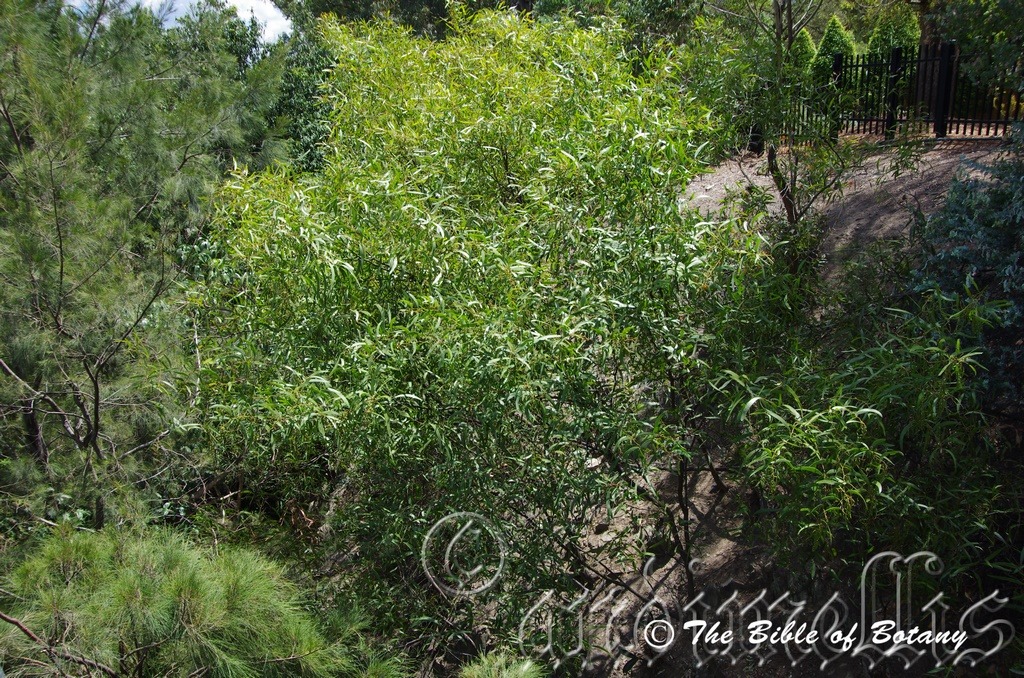
Brisbane Qld.
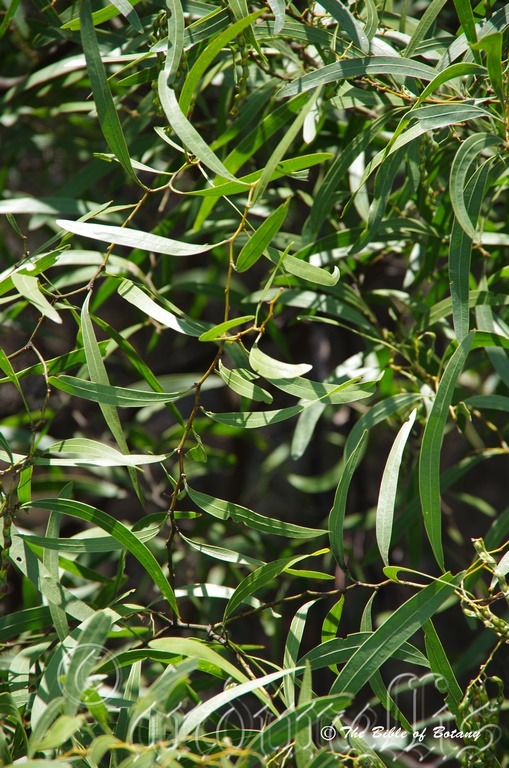
Brisbane

Brisbane
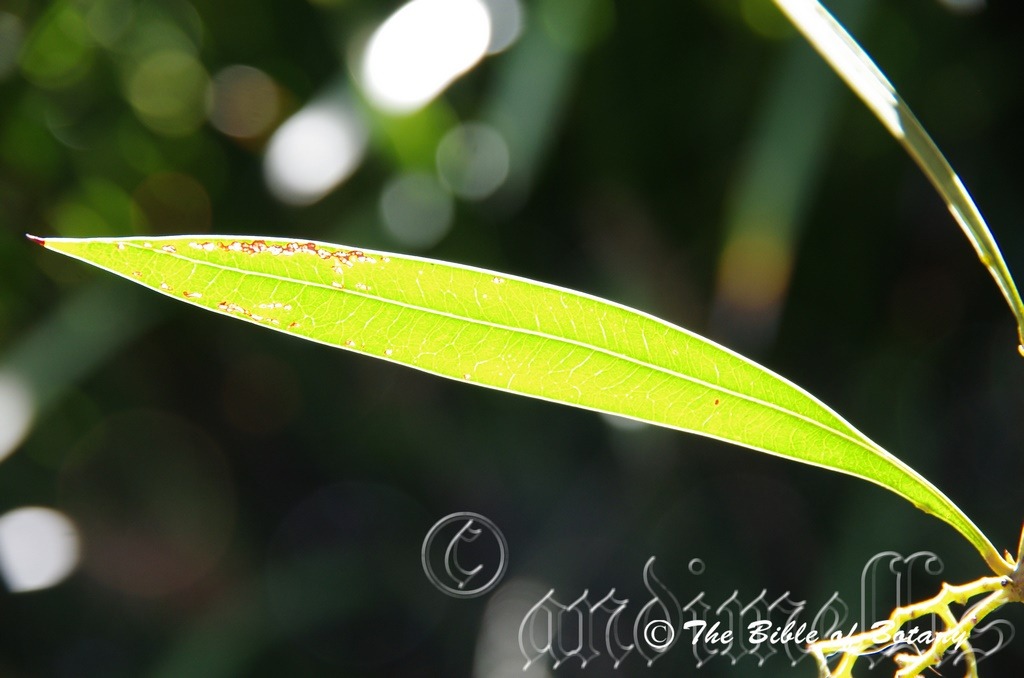
Seven Hills Qld.
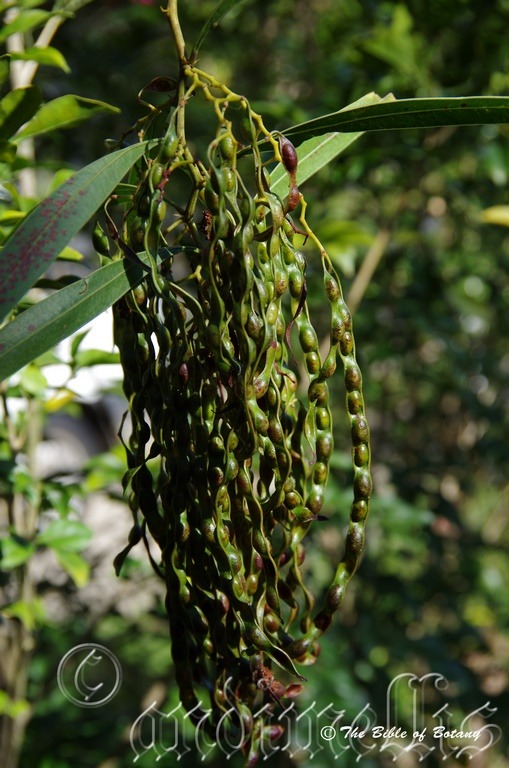
Seven Hills Qld.

Seven Hills Qld.

Seven Hills Qld.

Camp Hill Qld.
Acacia macradenia
Classification:
Class: Magnoliophyta
Order: Fabales
Family: Fabaceae
Subfamily: Mimosoideae
Genus: From ἀκακία, which is Ancient Greek or later Acanthium, which is Latin for to have a sharp point. It refers to the first species named by Dioscorides the Greek Botanist for the Egyptian plant Acacia arabica, which has very sharply pointed spines.
Specie:From Makros, which is Ancient Greek for large and Denia, which is Ancient Greek for a gland. It refers to the plants, which have large glands on the leaves, rachis or petioles.
Sub specie:
Common Name: Zig Zag Wattle.
Distribution:
Acacia macradenia is restricted to a small area from Chinchilla in the south west to the Black Down Tablelands west of Rockhampton. It is also found around Pentland on the White Mountains National Park in far north Queensland.
https://avh.ala.org.au/occurrences/search?taxa=Acacia+macradenia+#tab_mapView
Habitat Aspect Climate:
Acacia macradenia prefer full sun to dappled shade. It grows in open woodlands to sclerophyll forests. The altitude ranges from 300 meters ASL to 980 meters ASL
The temperatures range from 1 degree in July to 37 degrees in January.
The rainfalls range from lows of 400mm to 800mm average per annum.
Soil Requirements:
Acacia macradenia prefers sandy loams, light fatty clays to medium clays or medium silts. The soils are usually derived from decomposed sandstones, granites or at times alluvial deposits. The soil?s pH ranges from 4.5pH to 6.5pH. It does not tolerate water logged soils. None saline soils to moderately saline soils are tolerated.
The soils that have high sand content to light gravelly clays. The soils range from a pH of 5 to pH6.It is tolerant of water logged soils for short periods. Non saline soils to moderately saline soils are tolerated at all.
Height & Spread:
Wild Plants: 3m to 5m by 3m to 5m.
Characteristics:
Acacia macradenia grows as a multi trunked small tree to 5 meters. The bark is a dull grey-green on older trees. Young branchlets remain olive-green with some plants having a purple-brown tinge. The branchlets are glabrous and have a very distinct zig zag growth pattern which is a distinct feature of the plant. The branchlets are pendulous to sub pendulous and flexuosa.
The narrowly elliptical to narrowly oblong sub falcate phyllodes of Acacia macradenia measure 130mm to 250mm in length by 12mm to 26mm in width. The base is strongly oblique and attenuate while the apex is narrowly acuminate. There are 2 reflexed, indurate stipules which measure 5mm to 6mm in length. The concolourous laminas are olive-green and glabrous often with a purple or brown tinge. The new growth is lime green tinged rusty brown and glossy. The leaf margins are entire and flat while the marginal veins are strongly thickened. The main vein is strongly prominent below, distinctly visible above and anastomosing. The elongated pulvinus measures 5mm to 8mm in length. There is a gland 1mm to 10mm above the pulvinus and 1 or 2 more on the apex half.
Inflorescences of Acacia macradenia are globular heads on racemes from the auxiliary phyllodes. The rachises and peduncles are glabrous. The rachises measure 35 to 75mm in length while the peduncles measure 3mm to 9mm in length. There are 8 to 15 globose heads on a raceme with 35 to 50 individual flowers. Individual heads measure 6mm to 8mm in diameter while the individual flowers measure 2.5mm to 3.5mm in length.
The individual flowers are 5 merous. The calyxes are cupular and glabrous. The orbicular petals are deep yellow to bright golden yellow while the filaments are pale yellow and the anthers are yellow to deep yellow. The flowers measure 3.5mm to 5mm in length overall. Acacia macradenia?s flowers appear from late July through to early September. Flowering appears to be more prolific following a prolonged colder period.
The pods of Acacia macradenia are linear, slightly curved and glabrous. The pods measure 65mm to 120mm in length by 4.5mm to 5.5mm in diameter. The pods are flat to sub terete coriaceous and slightly constricted along the margins and deeply constricted between the seeds. The lime-green or at times mid grass-green pods turn brown when ripe. The 4 to 10 broadly oblong seeds measure 5mm to 5.5mm in length by 2mm to 2.2mm in diameter. The black seeds have a 4mm, white funicle, along one side which expands greatly as it approaches the base of the seed.
Wildlife:
Acacia macradenia is the host to numerous beetles, native flies, small wasps, butterflies and native bees when in flower. Many of the legumes are damaged by beetle grubs. Small insectivorous birds find the trees attractive when in flower due to the large number of small insects congregating there.
Cultivation:
Acacia macradenia is a beautiful small tree or large shrub that looks great in the garden as a feature plant or in the center of a bush garden. The zig zagging of the branches, the weeping habit and large rich golden flowers make it very attractive.
It often reaches its full potential of 4 meters to 5 meters by 4 meters to 5 meters in just 3 years and flower from the second year. It flowers best where winters reach sub zero temperatures however young plants are frost tender. One of the best flowering Acacias in Australia but give it the room to reach its full potential. It resents pruning and being placed in confined spaces which ruin its naturally beautiful shape.
Acacia macradenia is a short lived Acacia living for around 9 to 12 years so seedlings should be replanted beneath the original tree after 8 to 10 years removing the original plant the following season to maintain year round beauty.
Both the flowers and seeds were eaten by aborigines. Acacia macradenia was a staple diet to the Aborigines who lived within the areas it grew. Try adding a large handful of flowers to Saturday’s pancakes for an aromatic sweet flavour. The seeds can be ground into flour for dampers or even to make your pancakes.
According to the CSIRO Acacia pycnantha, contains the following minerals: Potassium, Calcium, iron, zinc, in fairly high concentrations. Protein is approximately 23mm, carbohydrate 26mm, Fat/oil 9mm (poly and monosaturated). Wattle seeds have a low in glycaemic index meaning they are a good source of the above for diabetics. Most Vitamins are found except for Vitamin C, B12 and riboflavin. They contain 39mm fibre. This is not to say that Acacia macradenia contains exactly the same breakdown of minerals but it is a good indicator of its nutritional value.
Propagation:
Seeds: Acacia macradenia seeds require treatment before sowing. Pre-treat the seeds by placing the seeds into a glass of hot water. Allow the water to cool and leave to soak for 6 to 10 hours. Seeds that have not swollen repeat the exercise.
Sow into a seed raising mix. When the seedlings are 25 to 50 mm tall, prick them out and plant them into 50mm native tubes using a seed raising mix.
Once the seedlings reach 150 to 200mm in height plant them out into their permanent position. Mass plantings can be achieved with spacing?s of 4 meters.
Fertilize using Seaweed, fish emulsion or organic chicken pellets soaked in water on an alternate basis. Fertilize every two months until the plants are established then annually either in early September to March to maintain health, vitality and better flowering.
Further Comments from Readers:
All information is included in good faith and has been thoroughly researched prior to printing. The website or the author does not warrant or guarantee the accuracy of any information on these pages, nor does the website or the author accept any responsibility for any loss arising from the use of the information found within. The views and opinions are strictly those of the author or those members who chose to actively participate in the contents herein.
Hi reader, it seems you use The Bible of Botany a lot. That’s great as we have great pleasure in bringing it to you! It’s a little awkward for us to ask, but our first aim is to purchase land approximately 1,600 hectares to link several parcels of N.P. into one at The Pinnacles NSW Australia, but we need your help. We’re not salespeople. We’re amateur botanists who have dedicated over 30 years to saving the environment in a practical way. We depend on donations to reach our goal. If you donate just $5, the price of your coffee this Sunday, We can help to keep the planet alive in a real way and continue to bring you regular updates and features on Australian plants all in one Botanical Bible. Any support is greatly appreciated. Thank you.
In the spirit of reconciliation we acknowledge the Bundjalung, Gumbaynggirr and Yaegl and all aboriginal nations throughout Australia and their connections to land, sea and community. We pay our respect to their Elders past, present and future for the pleasures we have gained.
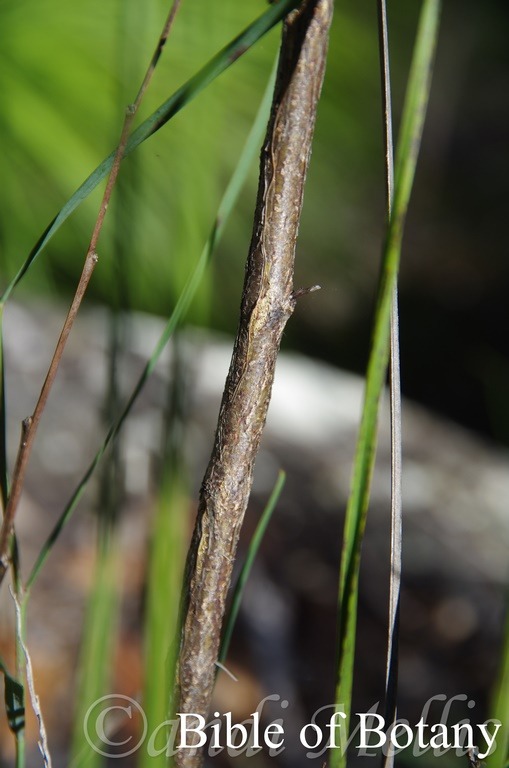
Sherwood Nature Reserve NSW.
Acacia maidenii
Classification:
Class: Magnoliophyta
Order: Fabales
Family: Fabaceae
Subfamily: Mimosoideae
Genus: From ἀκακία, which is Ancient Greek or later Acanthium, which is Latin for to have a sharp point. It refers to the first species named by Dioscorides the Greek Botanist for the Egyptian plant Acacia arabica, which has very sharply pointed spines.
Specie: Is named in honour of Joseph Henry Maiden; 1859-1925, who was a British born Australian botanist who established the Sydney Herbarium and advised botanists in the agricultural industry. He was a prodigious worker for Australian botany.
Sub specie:
Common Name: Maiden?s Wattle.
Distribution:
Acacia maidenii is found along the coastal side of the Great Dividing Range in disjunct populations from Orbost in Victoria through to Bowen in Queensland.
https://avh.ala.org.au/occurrences/search?taxa=Acacia+maidenii+ #tab_mapView
Habitat Aspect Climate:
Acacia maidenii prefer full sun to dappled shade. It grows in sclerophyll forests, littoral rainforests or woodlands. The altitude ranges from 300 meters ASL to 980 meters ASL
The temperatures range from minus 4 degrees in July to 37 degrees in January.
The rainfalls range from lows of 800mm to 2000mm average per annum.
Soil Requirements:
Acacia maidenii prefers deep, sandy loams, light fatty clays to medium clays. The soils are usually derived from decomposed sandstones or granites. The soil?s pH ranges from 4.5pH to 6.5pH. It does not tolerate water logged soils. None saline soils to moderately saline soils are tolerated.
Height & Spread:
Wild Plants: 8m to 20m by 6m to 12m.
Characteristics:
Acacia maidenii grows as an n erect single trunk medium size tree to a small multi trunked. The bark is a dull grey to grey-brown deeply fissured on older trees extending to the larger branches. Young branchlets are angular, pale grey-green to pale brown-green with prominent lenticels. The branchlets are glabrous to sparsely covered in white sericeous hairs.
The narrowly elliptical to very narrowly elliptical, straight to sub falcate phyllodes measure 80mm to 200mm in length by 7mm to 22mm in width. The base is tapering attenuate to cuneate while the apex is narrowly acute. The concolourous laminas are grey-green and glabrous to sparsely covered in white sericeous hairs especially closer to the base. The leaf margins are entire and flat while the marginal veins are thickened. The main vein is strongly below, distinctly visible above while the minor longitudinal veins are anastomosing. The elongated pulvinus measures 1mm to 2.5mm in length. There is a small gland 7mm to 10mm above the pulvinus.
Inflorescences of Acacia maidenii are 1 or 2 cylindrical racemes from the auxiliary phyllodes. The rachises and peduncles are covered in white, yellow or golden?yellow sericeous hairs. The rachises measure 40 to 60mm in length while the peduncles measure 0.5mm to 4mm in length and the pedicels measure 0mm to 0.2mm in length. There are 18 to 34 individual flowers scattered along the rachises. Individual heads measure 5mm to 6mm in diameter.
The individual flowers are 4 merous. The 4 calyxes are cupular and densely covered in white sericeous hairs. The orbicular petals are pale cream almost white to pale yellow while the stamens are pale cream almost white to pale yellow. The flowers measure 3.5mm to 5mm in length overall. Acacia maidenii flowers appear from mid-January through to June.
The fruit of Acacia maidenii are pods that are twisted or coiled, 1 or more times and are sub terete. The pods measure 50mm to 150mm in length by 4mm to 5.5mm in width. The pods are coriaceous to brittle and slightly constricted along the margins and between the seeds. The lime-green or at times mid grass-green pods turn brown when ripe. The 4 to 8 asymmetrical oblong seeds measure 4.5mm to 5mm in length by 2.5mm to 3.2mm in diameter. The black seeds have a broad white funicle, folded at the base of the seed.
Wildlife:
Acacia maidenii is the host to numerous beetles, native flies, small wasps, butterflies and native bees when in flower. Many of the legumes are damaged by beetle grubs. Small insectivorous birds find the trees attractive when in flower due to the large number of small insects congregating there.
Cultivation:
Acacia maidenii is a fast growing medium that looks great in the small rainforest garden or as a feature plant or in the center of a bush garden.
It often reaches its full potential of 12meters to 15 meters by 6 meters to 8 meters in just 10 years and flower from the second or third year. It flowers best where winters reach sub zero temperatures however young plants are frost tender. It resents pruning and being placed in confined spaces which ruin its naturally beautiful shape however trimming of lower branches to form a well-shaped tree is no problem and will enhance upper growth and flowering in the following season.
Both the flowers and seeds were eaten by aborigines. Acacia macradenia was a staple diet to the Aborigines who lived within the areas it grew. Try adding a large handful of flowers to Saturday?s pancakes for an aromatic sweet flavour. The seeds can be ground into flour for dampers or even to make your pancakes.
According to the CSIRO Acacia pycnantha, contains the following minerals: Potassium, Calcium, iron, zinc, in fairly high concentrations. Protein is approximately 23mm, carbohydrate 26mm, Fat/oil 9mm (poly and mono saturated). Wattle seeds have a low in glycaemic index meaning they are a good source of the above for diabetics. Most Vitamins are found except for Vitamin C, B12 and riboflavin. They contain 39mm fibre. This is not to say that Acacia maidenii contains exactly the same breakdown of minerals but it is a good indicator of its nutritional value.
Propagation:
Seeds: Acacia maidenii seeds require treatment before sowing. Pre-treat the seeds by placing the seeds into a glass of hot water. Allow the water to cool and leave to soak for 6 to 10 hours. Seeds that have not swollen repeat the exercise.
Sow into a seed raising mix. When the seedlings are 25 to 50 mm tall, prick them out and plant them into 50mm native tubes using a seed raising mix.
Once the seedlings reach 150 to 200mm in height plant them out into their permanent position. Mass plantings can be achieved with spacing?s of 4 meters.
Fertilize using Seaweed, fish emulsion or organic chicken pellets soaked in water on an alternate basis. Fertilize every two months until the plants are established then annually either in early September to March to maintain health, vitality and better flowering.
Further Comments from Readers:
All information is included in good faith and has been thoroughly researched prior to printing. The website or the author does not warrant or guarantee the accuracy of any information on these pages, nor does the website or the author accept any responsibility for any loss arising from the use of the information found within. The views and opinions are strictly those of the author or those members who chose to actively participate in the contents herein.
Hi reader, it seems you use The Bible of Botany a lot. That’s great as we have great pleasure in bringing it to you! It’s a little awkward for us to ask, but our first aim is to purchase land approximately 1,600 hectares to link several parcels of N.P. into one at The Pinnacles NSW Australia, but we need your help. We’re not salespeople. We’re amateur botanists who have dedicated over 30 years to saving the environment in a practical way. We depend on donations to reach our goal. If you donate just $5, the price of your coffee this Sunday, We can help to keep the planet alive in a real way and continue to bring you regular updates and features on Australian plants all in one Botanical Bible. Any support is greatly appreciated. Thank you.
In the spirit of reconciliation we acknowledge the Bundjalung, Gumbaynggirr and Yaegl and all aboriginal nations throughout Australia and their connections to land, sea and community. We pay our respect to their Elders past, present and future for the pleasures we have gained.
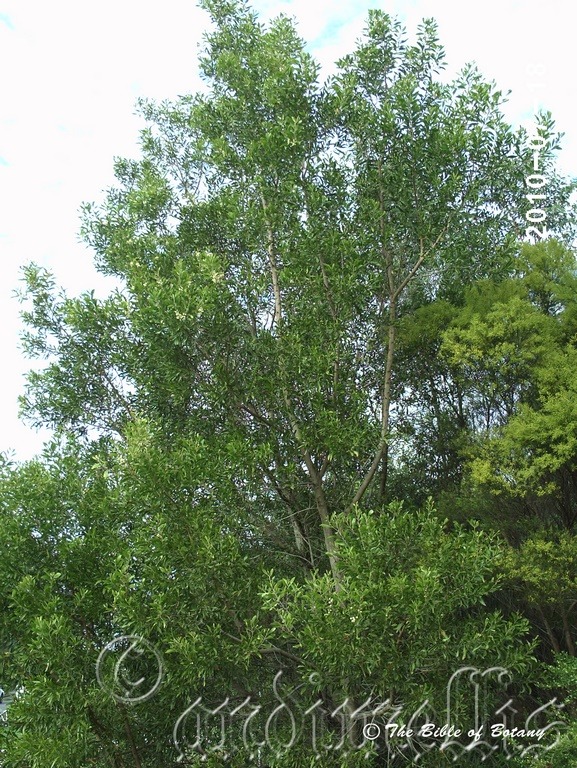
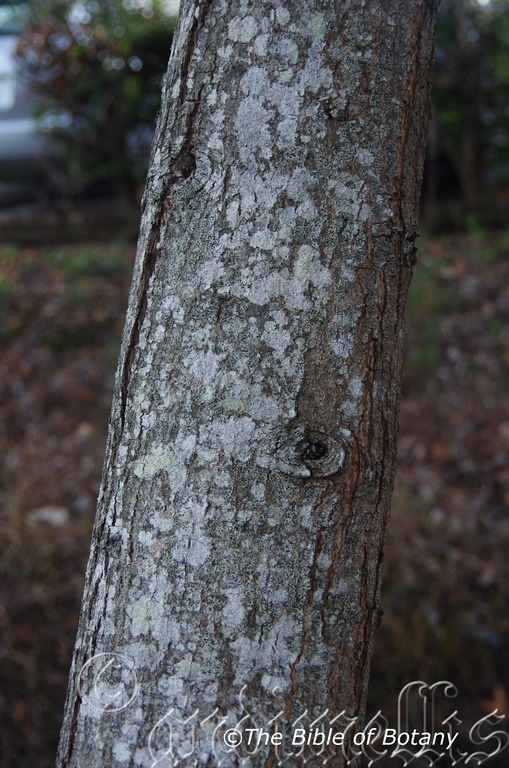
Cotton National Park NSW.

Grafton NSW.

Grafton NSW.

Cotton National Park NSW.
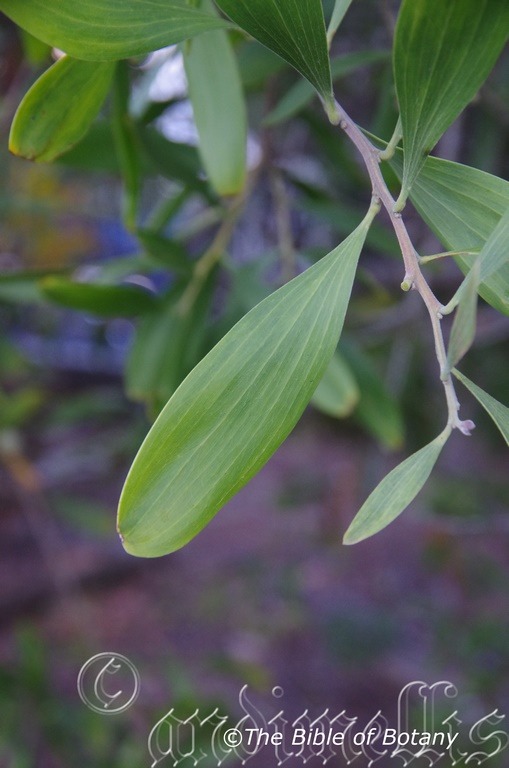
Cotton National Park NSW.

Grafton NSW.

Grafton NSW.
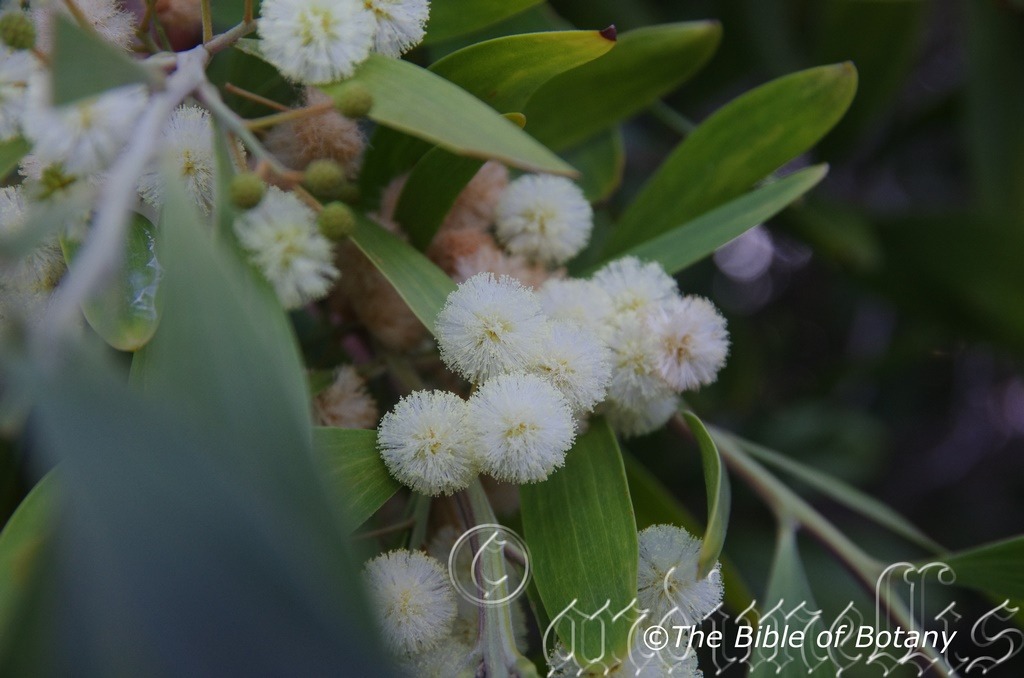
Cotton National Park NSW.
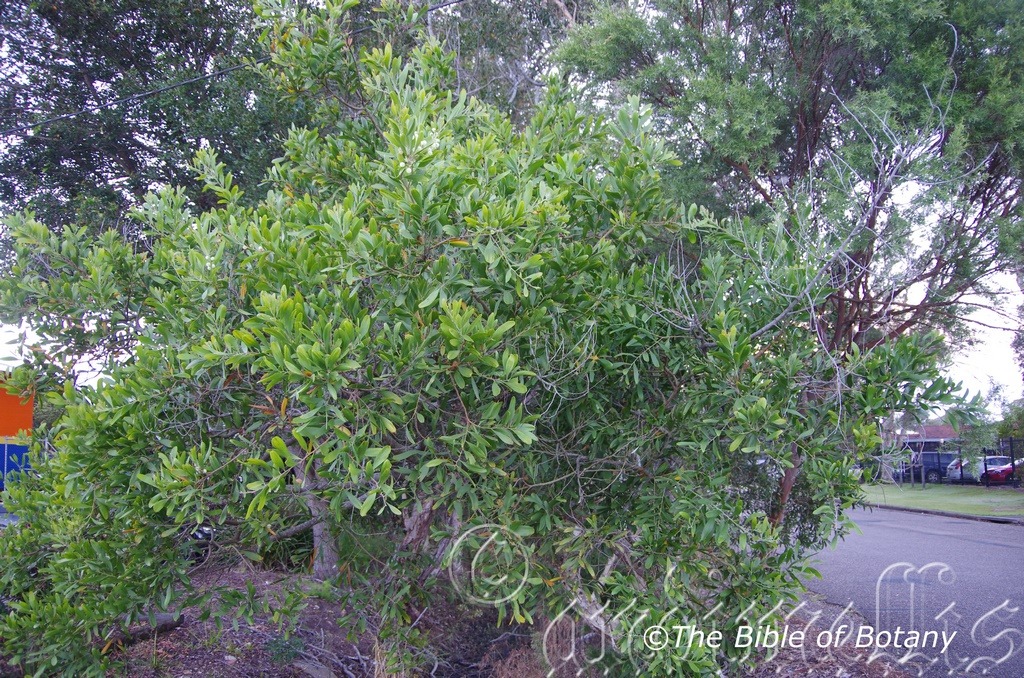
Tidal estuary Camphill Qld.

Acacia melanoxylon
Classification:
Class: Magnoliophyta
Order: Fabales
Family: Fabaceae
Subfamily: Mimosoideae
Genus: From ἀκακία, which is Ancient Greek or later Acanthium, which is Latin for to have a sharp point. It refers to the first species named by Dioscorides the Greek Botanist for the Egyptian plant Acacia arabica, which has very sharply pointed spines.
Specie: From M?las, which is Ancient Greek for black and Xylon which is Greek wood or at times timber. It refers to the wood of trees which is black or very deep in colour.
Common Name: Black Wattle or Tasmania Black wood.
In the Wurundjeri Aboriginal language it is known as Burn a look.
Distribution:
Acacia melanoxylon grows along the Great Dividing Range south from near Cairns in far north Queensland to southern Tasmania. In the south it is found as far west as Eyre Peninsular.
https://avh.ala.org.au/occurrences/search?q=taxamm3Amm22Acacia+melanoxylonmm22#tab_mapView
Habitat Aspect Climate:
Acacia melanoxylon prefer full sun to dappled shade. It grows in cool mountain areas in tropical rainforests, sub-tropical rainforests, and temperate rainforests. The altitude ranges from 40 meters ASL to 900 meters ASL
The temperatures range from lows of minus 5 degrees in July to August to 36 degrees in January.
The rainfalls range from lows of 600mm to an average of 3200mm annually.
Soil Requirements:
Acacia melanoxylon prefers deep, fertile light clays to medium clays or light silts to heavy silts. The soils are usually derived from decomposed brown basalts, black basalts, shales, metamorphic rocks or alluvial deposits. The soil?s pH ranges from 5pH to 6.5pH. It does not tolerate water logged soils. None saline soils to moderately saline soils are tolerated.
Height & Spread:
Wild Plants:10m to 45m by 8m to 10m.
Characteristics:
The trunk is mid grey to deep grey and deeply fissured on older trees, with horizontal brown markings and lichens. The branchlets are covered in white lenticels while the young branchlets are grey-green and glabrous to sparsely covered in white sericeous hairs.
Left: Trunk of 5 or 6 year old tree. Right: Trunk of 20 year old tree. Both photos taken at Nana Glen cultivated from local seed stocks.
Acacia melanoxylon phyllodes are elliptical to lanceolate, straight to sub falcate and measure 70mm to 140mm in length by 8mm to 30 mm in width. The phyllodes are dull mid grey-green. The phyllodes bases are cuneate to tapering attenuate while the apex is obtuse-acute with a mucronate point. The concolourous laminas are grey-green and glabrous to sparsely covered in white caduceus sericeous hairs. There are 3-7 slightly prominent longitudinal veins which are anastomosing. The margins are entire and flat. The pulvinus measures 2mm to 4mm in length. There is a single gland near the base.
Acacia melanoxylon‘s flowers are born singly to 8 individual flowers to the phyllode axil. There are 30 to 56 individual flowers to a globose head. The peduncles are glabrous and measure 5mm to 20mm in length.
The individual flowers are 5 merous. The calyxes are cupular glabrous and pale yellow-green. The orbicular petals are pale cream to pale yellow-green while the stamens are pale cream almost white to pale yellow. The flowers measure 3.5mm to 5mm in length overall. Acacia melanoxolin?s flowers appear from August through to December.
Acacia melanoxylon‘s fruits are long strongly curved to twisted flattened pods which are sometimes coiled. The pods measure 40mm to 120mm in length by 5mm to 8mm in width. The pods are coriaceous to brittle and entire along the margins and slightly constricted between the seeds. The lime-green pods turn brown when ripe. The 4 to 10 ellipsoidal seeds measure 3.5mm to 5mm in length by 2mm to 2.2mm in diameter. The black seeds have a broad orange to red funicle, folded at the base and partially to fully surrounding the black seed.
Confusing Specie:
Acacia Implexa is very similar. The seeds vary in that they have a white aril instead of the orange to red aril which does not surround the seed. The trees are smaller growing to 15 meters and the phyllodes are falcate to sub falcate. The trees can also stand drier conditions than Acacia melanoxylon.
Wildlife:
Acacia melanoxylon is an ideal plant for Nitrogen fixation and as a host tree for all the Platycerium specie, many epiphytic orchids and epiphytic ferns such as Asplenium and Pyrrosia species as the trees canopy spreads. The beautiful Tailed Emperor Butterfly, Polyura sempronus uses Acacia melanoxylin as a host plant for its larvae.
According to the CSIRO Acacia pycnantha, contains the following minerals: Potassium, Calcium, iron, zinc, in fairly high concentrations. Protein is approximately 23mm, carbohydrate 26mm, Fat/oil 9mm (poly and mono saturated). Wattle seeds have a low in glycaemic index meaning they are a good source of the above for diabetics. Most Vitamins are found except for Vitamin C, B12 and riboflavin. They contain 39mm fibre. This is not to say that Acacia macradenia contains exactly the same breakdown of minerals but it is a good indicator of its nutritional value.
Cultivation:
It would make an good fire retardant medium fast growing tree.
* Fire retardant plants act as radiant heat screens and absorb more heat from an approaching fire without burning.
* Fire retardant trees are able reduce wind speed near a house or out buildings.
* Fire retardant also trap embers and sparks carried by the wind.
* Fire retardant ground covers are able to catch burning embers without catching fire themselves, and also slow the travel of a fire through debris and litter on the ground.
This is a beautiful fast growing tree in cultivation that will grow 8 meters to 18 meters in height by 6 meters to 15 meters in diameter in the garden when grown in the open or much taller when grown in a forest situation. It is particularly hardy on heavier clays but adapts best where the soils have some gravel.
It will take about 7 years to flower in cultivation from seed. Flowering is not the reason to grow for growing this Acacia. Acacia melanoxylon is suitable for a quick rainforest effect on heavy moist soils even in cold areas provided the soils are not waterlogged for extended periods.
Acacia melanoxylon will also provide a good layer of mulch as it drops a lot of leaves as it makes quick growth. It is also a good tree for shelter belts and can be used as stock food in times of drought. It is now being grown for its valuable timber in the cabinet industry.
It also makes a good tree for epiphytic ferns like Platycerium superbum and Platycerium bifurcatum and many epiphytic orchids like Dendrobium aemula.
Propagation:
Seeds: Acacia melanoxylon seeds require treatment before sowing. Pre-treat the seeds by placing the seeds into a glass of hot water. Allow the water to cool and leave to soak for 10 hours. Seeds that have not swollen repeat the exercise.
Sow into a seed raising mix. When the seedlings are 25mm to 50 mm tall, prick them out and plant them into 50mm native tubes using a seed raising mix.
Once the seedlings reach 200 to 250mm in height plant them out into their permanent position. Plant A. melanoxolyn at 6 meters to gain a real rain forest look within 10 years or 8 meters where they are to be used as a screen or wind break. 10 meter spacing?s are ideal along driveways.
Fertilize using Seaweed, fish emulsion or organic chicken pellets soaked in water on an alternate basis. Fertilize every two months until the plants are established then annually either in early September to March to maintain health, vitality and better flowering.
Further Comments from Readers:
All information is included in good faith and has been thoroughly researched prior to printing. The website or the author does not warrant or guarantee the accuracy of any information on these pages, nor does the website or the author accept any responsibility for any loss arising from the use of the information found within. The views and opinions are strictly those of the author or those members who chose to actively participate in the contents herein.
Hi reader, it seems you use The Bible of Botany a lot. That’s great as we have great pleasure in bringing it to you! It’s a little awkward for us to ask, but our first aim is to purchase land approximately 1,600 hectares to link several parcels of N.P. into one at The Pinnacles NSW Australia, but we need your help. We’re not salespeople. We’re amateur botanists who have dedicated over 30 years to saving the environment in a practical way. We depend on donations to reach our goal. If you donate just $5, the price of your coffee this Sunday, We can help to keep the planet alive in a real way and continue to bring you regular updates and features on Australian plants all in one Botanical Bible. Any support is greatly appreciated. Thank you.
In the spirit of reconciliation we acknowledge the Bundjalung, Gumbaynggirr and Yaegl and all aboriginal nations throughout Australia and their connections to land, sea and community. We pay our respect to their Elders past, present and future for the pleasures we have gained.
Grafton NSW.
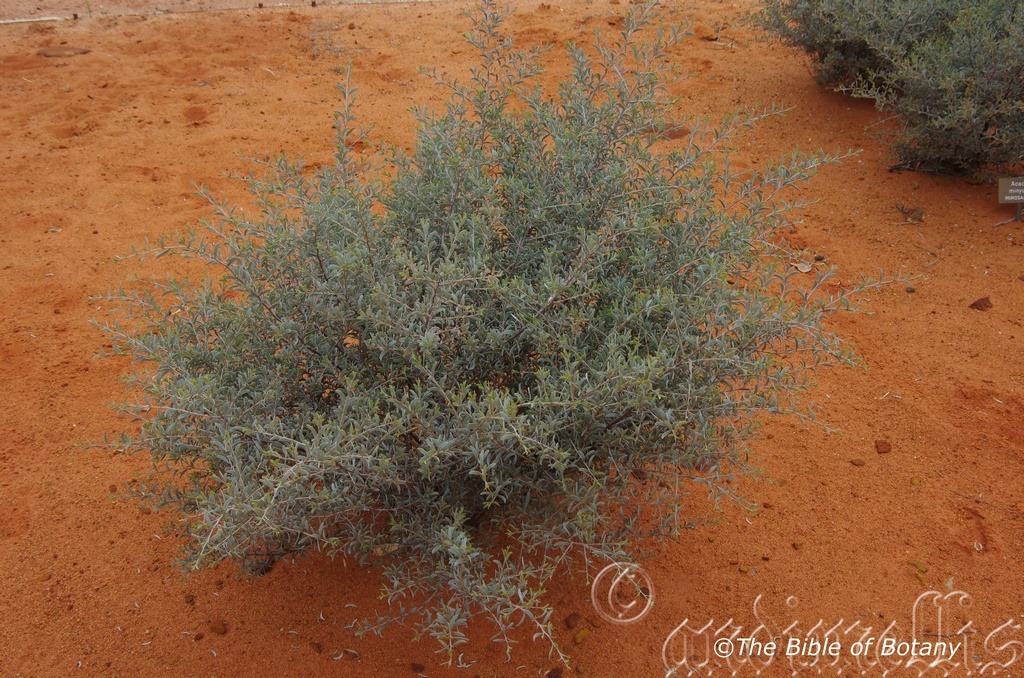
National Botanic Gardens ACT.
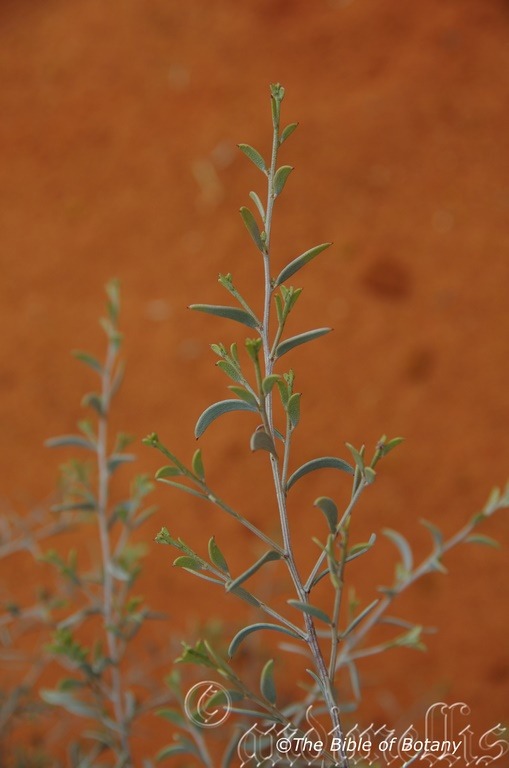
National Botanic Gardens ACT.
Acacia minyura
Classification:
Class: Magnoliophyta
Order: Fabales
Family: Fabaceae
Subfamily: Mimosoideae
Genus: From ἀκακία, which is Ancient Greek or later Acanthium, which is Latin for to have a sharp point. It refers to the first species named by Dioscorides the Greek Botanist for the Egyptian plant Acacia arabica, which has very sharply pointed spines.
Specie: From Minyura, which is Latinized from the local aboriginal vernacular for the species found in the Pilbara district.
Common Name:
Distribution:
Acacia minyura is wide spread throughout central Australia especially in the Northern Territory, Western Australia and South Australia. It may be more wide spread than the maps indicate.
https://avh.ala.org.au/occurrences/search?taxa=Acacia+minyura+#tab_mapView
Habitat Aspect Climate:
Acacia minyura prefer full sun on hot plains and seasonally moist riparian zones in desert localities. The altitude ranges from 40 meters ASL to 650 meters ASL
The temperatures range from lows of minus 2 degrees in July to August to 40 degrees in January.
The rainfalls range from lows of 200mm to an average of 600mm annually.
Soil Requirements:
Acacia minyura usually prefers to grow on sandy soils particularly those found in dune swales and occasionally on skeletal rocky soils. The soils are usually derived from decomposed brown or red sandstones. The soil?s pH ranges from 4.5pH to 6.5pH. It does not tolerate water logged soils. None saline soils to moderately saline soils are tolerated.
Height & Spread:
Wild Plants:1m to 4m by 1.5m to 4m.
Characteristics:
The multi deep grey to black trunks of Acacia minyura are covered in resinous ribs. The branchlets are moderately to densely covered in white appressed hairs between crenulated-resinous ribs of which a resin occurs in layers or thick droplets. The opaque blue-grey resin coating covers all the growing points and young phyllodes.
Acacia minyura narrow elliptical phyllodes are flat, straight or have a slight sigmoidal curve and measure 5mm to 30mm in length by 2.2mm to 5mm in width. The pulvinus measures 1mm to 2mm in length. The mid blue-grey coriaceous phyllodes are dull. The asymmetrical bases are cuneate to tapering attenuate while the apexes are obtuse with a mucronate point. The concolourous laminas are moderately covered in white appressed hairs. There are numerous prominent longitudinal veins. The margins are entire while the laminas are flat. There is a single small gland near the base.
Acacia minyura‘s flowers are borne as a single cylindrical spike from the phyllode axil. The spikes measure 10mm to 15mm in length. The glabrous peduncles measure 4mm to 12mm in length. The individual flowers are 5 merous. The sepals measure 0.5mm to 0.8mm long while the corolla measures 1.4mm to 1.5mm in length. The stamens measure 2.5mm to 3mm in length while the ovary is covered in minute white appressed scale like hairs. Acacia minyura?s flowers appear from June through to October.
Acacia minyura‘s fruits are stipitate, oblong, flat, chartaceous and measure 30mm to 35mm in length by 11mm to 15mm in width including the 1mm to 2mm wings.
The oblong seeds are obliquely transverse and measure 4mm to 5mm in length by 2mm to 2.5mm in diameter. The black seeds have a small, terminal, aril that is oblique, pileate and cream.
Wildlife:
Acacia minyura is an ideal plant for Nitrogen fixation.
According to the CSIRO Acacia pycnantha, contains the following minerals: Potasium, Calcium, iron, zinc, in fairly high concentrations. Protein is approximately 23mm, carbohydrate 26mm, Fat/oil 9mm (poly and mono saturated). Wattle seeds have a low in glycaemic index meaning they are a good source of the above for diabetics. Most Vitamins are found except for Vitamin C, B12 and riboflavin. They contain 39mm fibre. This is not to say that Acacia minyura contains exactly the same breakdown of minerals but it is a good indicator of its nutritional value.
Cultivation:
This is a beautiful fast growing shrub in cultivation that will grow 3 meters to 5 meters in height by 3 meters to 5 meters in diameter in the garden when grown in the open. It is particularly hardy on deep sands through to skeletal gravelly sands.
In native gardens it can be used to add nitrogen to the soil and help bind sandy soils. It is an excellent starter plant to give quick growth and to protect more delicate plants in arid zones. The good flowering displays cover several weeks during winter while the foliage is particularly attractive and contrasts well with plants that have deep green strap like leaves or broad leaves admirably. Try prostrate red or deep orange and purple flowering Grevillea specie or Kangaroo paws or bright coloured annuals for great contrasts. A mixed bed of mosaic foliage patterns placed between clumps of Acacia minyura can also make a great feature in smaller gardens.
Propagation:
Seeds: Acacia minyura seeds require treatment before sowing. Pre-treat the seeds by placing the seeds into a glass of hot water. Allow the water to cool and leave to soak for 10 hours. Seeds that have not swollen repeat the exercise.
Sow into a seed raising mix. When the seedlings are 25mm to 50 mm tall, prick them out and plant them into 50mm native tubes using a seed raising mix.
Once the seedlings reach 200 to 250mm in height plant them out into their permanent position. Plant A. melanoxolyn at 6 meters to gain a real rain forest look within 10 years or 8 meters where they are to be used as a screen or wind break. 10 meter spacing?s are ideal along driveways.
Fertilize using Seaweed, fish emulsion or organic chicken pellets soaked in water on an alternate basis. Fertilize every two months until the plants are established then annually either in early September to March to maintain health, vitality and better flowering.
Further Comments from Readers:
All information is included in good faith and has been thoroughly researched prior to printing. The website or the author does not warrant or guarantee the accuracy of any information on these pages, nor does the website or the author accept any responsibility for any loss arising from the use of the information found within. The views and opinions are strictly those of the author or those members who chose to actively participate in the contents herein.
Hi reader, it seems you use The Bible of Botany a lot. That’s great as we have great pleasure in bringing it to you! It’s a little awkward for us to ask, but our first aim is to purchase land approximately 1,600 hectares to link several parcels of N.P. into one at The Pinnacles NSW Australia, but we need your help. We’re not salespeople. We’re amateur botanists who have dedicated over 30 years to saving the environment in a practical way. We depend on donations to reach our goal. If you donate just $5, the price of your coffee this Sunday, We can help to keep the planet alive in a real way and continue to bring you regular updates and features on Australian plants all in one Botanical Bible. Any support is greatly appreciated. Thank you.
In the spirit of reconciliation we acknowledge the Bundjalung, Gumbaynggirr and Yaegl and all aboriginal nations throughout Australia and their connections to land, sea and community. We pay our respect to their Elders past, present and future for the pleasures we have gained.
Acacia mitchellii
Classification:
Class: Magnoliophyta
Order: Fabales
Family: Fabaceae
Subfamily: Mimosoideae
Genus: From ἀκακία, which is Ancient Greek or later Acanthium, which is Latin for to have a sharp point. It refers to the first species named by Dioscorides the Greek Botanist for the Egyptian plant Acacia arabica, which has very sharply pointed spines.
Specie: Is probably named in honour of Sir Thomas Livingstone Mitchell; 1792-1855, who was a Scottish born Australian explorer and surveyor.
Sub specie:
Common Name: Mitchell?s Wattle.
Distribution:
Acacia mitchellii is found in the Cathedral Rock National Park, Single National Park and on the Gibraltar Range.
https://avh.ala.org.au/occurrences/search?taxa=Acacia+mitchellii+#tab_mapView
Habitat Aspect Climate:
Acacia mitchellii prefer full sun to partial shade. It grows in dry schlerophyll forests, woodlands or adjacent to heaths. The altitude ranges from 500 meters ASL to 1350 meters ASL
The temperatures range from lows of minus 4 degrees in August to 34 degrees in January.
The rainfall ranges from 600mm to 1200mm annually.
Soil Requirements:
Acacia mitchellii prefers deep to shallow, sandy loams, light fatty clays or medium clays. The soils are derived from decomposed granites. The soil?s pH ranges from 5pH to 6pH. It does not tolerate water logged soils. None saline soils to moderately saline soils are tolerated.
Height & Spread:
Wild Plants: 0.5m to 2m by 1m to 2m.
Characteristics:
Acacia mitchellii is a small erect to spreading shrub with purple-brown to purple-grey glabrous stems. The branchlets are terete to sub terete, slightly resinous purple?brown to red-brown and covered in white to translucent puberulent to pubescent hairs. There are several differences in stem, leaf and pod characters between the disjunct N. S. W. species and the southern populations in Victoria which may lead to them becoming sub species or even new specie names attached to the plants.
The 4 to 12 pinnae of Acacia mitchellii are shortest near the base with the longest pinnae near the apex. The green rachises are covered in white to translucent puberulent to pubescent hairs and measure 2mm to 30mm in length. There are 4 to 14 elliptical to narrowly oblong or sometimes ovate to obovate pinnules on the rachises. The pinnules measure 2mm to 4.5mm in length by 1mm to 1.7mm in width. The gland is absent while the pulvinus measure 0.1mm to 0.2mm in length. The bases are oblique, obtuse while the apexes are acute with a straight mucronate tip. The concolourous laminas are asymmetrical, blue?green to bright grass-green and glabrous. The margins are entire while the laminas are flat.
The inflorescence of Acacia mitchellii are globose heads born from the auxiliary leaves. The peduncles are glabrous or sparsely covered in white to translucent puberulent to pulverulent hairs. The peduncles measure 7mm to 17mm in length. There are 1 to 3 globose flower heads in an axil with 30 to 45 individual flowers in the heads. Individual heads measure 3.5mm to 5mm in diameter while the individual flowers measure 1.5mm to 2mm in length.
The individual flowers are 5 merous. The 5 pale creamy green sepals are erect and glabrous or covered in white ciliate hairs near the apex on some plants. The orbicular petals are pale creamy green to bright yellow while the stamens are pale creamy yellow to bright golden yellow. Acacia mitchellii flowers appear from mid-November through to December.
Acacia mitchellii fruits are linear to broadly oblong, straight to curved or flat, glabrous pods. The pods measure 15mm to 50mm in length by 4mm to 7.5mm in width. The pods are glabrous, chartaceous only expanding around the seeds with entire to slightly constricted margins. The lime-green or at times mid grass-green pods turn deep brown to deep grey-brown when ripe. The 3 to 7 broadly ovate?elliptical seeds measure 3.5mm to 4mm in length by 3mm to 3.6mm in width and 2.6mm to 3.3mm in depth. The glossy, black seeds have a white funicle which expands greatly half way long one sideband to where it is attached to the seed.
Wildlife:
Acacia mitchellii is an ideal plant for the control of soil erosion and nitrogen fixation.
They support a large variety of small beetles including the green wattle hopper. (Hackerobrachys viridiventris) Native bees have been seen foraging pollen from the flowers.
Cultivation:
Acacia mitchellii is a beautiful wide spreading large shrub that are best suited to temperate to cool tropical gardens along the Great Dividing Range or western slopes. Garden subjects will grow from 1 meter to 1.5 meters in height by 1.5 meters to 2 meters in diameter when grown in the open.
In native gardens it can be used to add nitrogen to the soil and help bind sandy soils. They are an excellent starter plant to give quick growth protect more delicate plants and good flowering displays over several weeks during early summer. The foliage is particularly attractive and contrasts well with plants that have deep blue-green, broad leave or strap leaves admirably. Try prostrate red or deep orange and purple flowering Grevilleas or Kangaroo paws or bright coloured annuals for great contrasts. A mixed bed of mosaic foliage patterns placed between clumps of Acacia mitchellii can also make a great feature in smaller gardens.
Garden beds would need to be sandy, open with plenty of space between plants to allow good air flow and plenty of light to reach all the inhabitants. Crowding this type of foliage with other plants will see them lose all the effectiveness. Correct spacing will contrast the foliage better without one overpowering the other plants in the garden. For mass planting and hedge rows space the plants with at least 1 meter to 1.5 meters centres. The plants can be lightly pruned to enhance bushiness and better flowering.
4 plants separately planted or plant 2 close together and separate the other 2 or 3 on the far side of the bed to give width and depth where you want it. The use of annuals helps to attract the viewer to the permanent plants foliage as they are the dominant foliage you want people to notice in the patch. In the case of Acacia mitchellii you could substitute very small Grevillea, Crowea, Hovea or even Verticordia species on the western slopes and in South Australia in lieu of the native annuals. A bed of mixed Anigozanthus sp. surrounding Acacia mitchellii is particularly stunning. Remember most annuals will commence flowering when Acacia mitchellii is blooming during late spring and early summer and most Grevilleas will flower during winter to give prolonged flowering to the bed. Annuals mixed with Acacia mitchellii help to give medium to large gardens depth and make them look larger than what they really are due to the smaller diameter of mature plants. Plants look good for 4 or 6 years before they should be replaced.
Propagation:
Seeds: Acacia mitchellii seeds require treatment before sowing. Pre-treat the seeds by placing the seeds into a glass of hot water. Allow the water to cool and leave to soak for 10 to 20 hours. Seeds that have not swollen repeat the above exercise.
Sow into a seed raising mix. When the seedlings are 25mm to 50mm tall, prick them out and plant them into 50mm native tubes using a seed raising mix.
Once the seedlings reach 200mm to 250mm in height plant them out into their permanent position. Plant them at 3 meter centres to create a quick growing screen or to cover hot blank walls.
Fertilize using Seaweed, fish emulsion or organic chicken pellets soaked in water on an alternate basis. Fertilize every two months until the plants are established then annually either in early September to March to maintain health, vitality and better flowering.
Further Comments from Readers:
All information is included in good faith and has been thoroughly researched prior to printing. The website or the author does not warrant or guarantee the accuracy of any information on these pages, nor does the website or the author accept any responsibility for any loss arising from the use of the information found within. The views and opinions are strictly those of the author or those members who chose to actively participate in the contents herein.
Hi reader, it seems you use The Bible of Botany a lot. That’s great as we have great pleasure in bringing it to you! It’s a little awkward for us to ask, but our first aim is to purchase land approximately 1,600 hectares to link several parcels of N.P. into one at The Pinnacles NSW Australia, but we need your help. We’re not salespeople. We’re amateur botanists who have dedicated over 30 years to saving the environment in a practical way. We depend on donations to reach our goal. If you donate just $5, the price of your coffee this Sunday, We can help to keep the planet alive in a real way and continue to bring you regular updates and features on Australian plants all in one Botanical Bible. Any support is greatly appreciated. Thank you.
In the spirit of reconciliation we acknowledge the Bundjalung, Gumbaynggirr and Yaegl and all aboriginal nations throughout Australia and their connections to land, sea and community. We pay our respect to their Elders past, present and future for the pleasures we have gained.

Woolli Back Dunes NSW.

Woolli Back Dunes NSW.
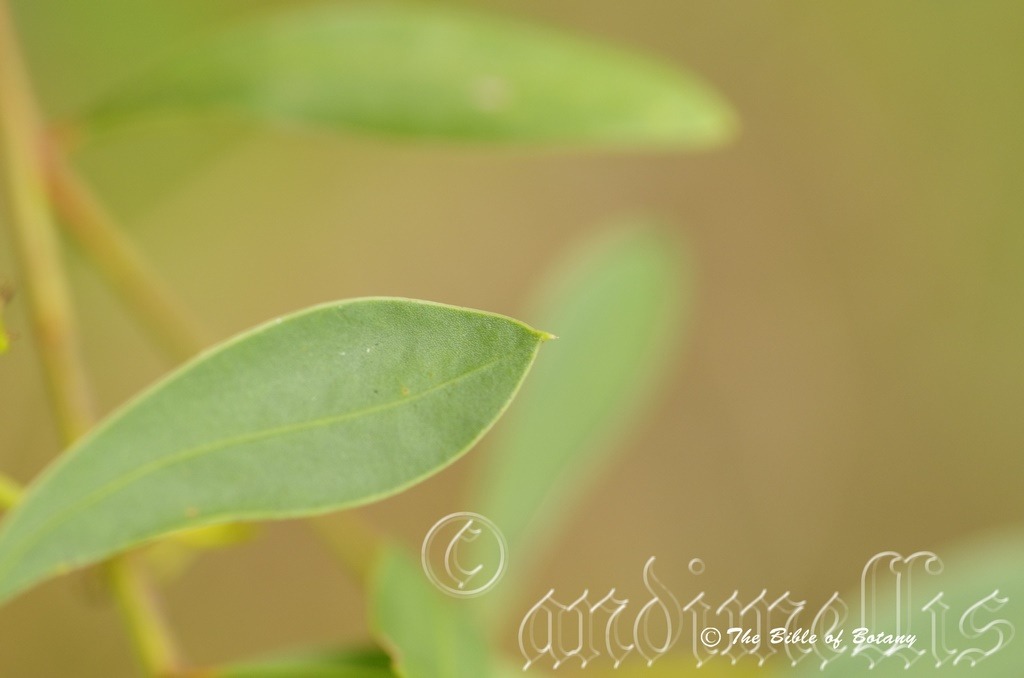
Woolli Back Dunes NSW.
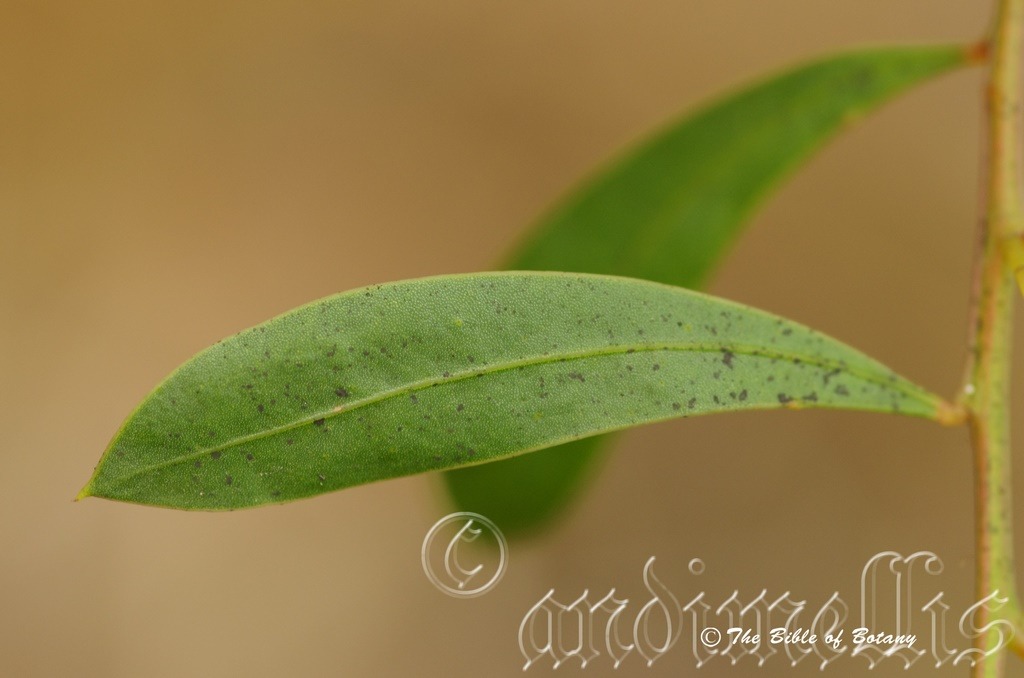
Woolli Back Dunes NSW.
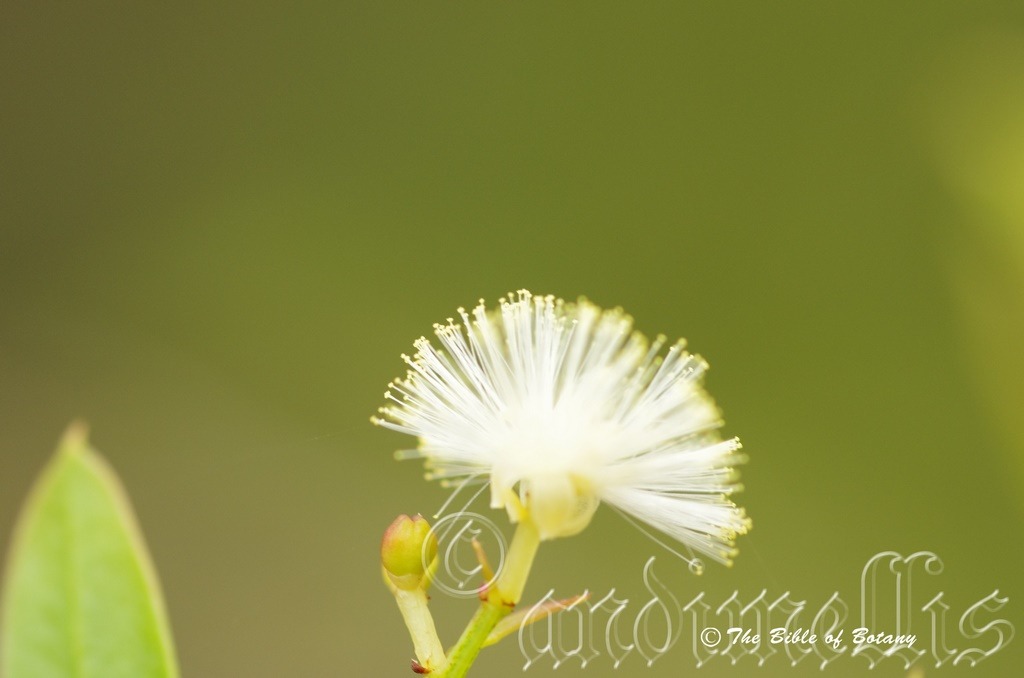
Woolli Back Dunes NSW.

Woolli Back Dunes NSW.
Acacia myrtifolia
Classification:
Class: Magnoliophyta
Order: Fabales
Family: Fabaceae
Subfamily: Mimosoideae
Genus: From ἀκακία, which is Ancient Greek or later Acanthium, which is Latin for to have a sharp point. It refers to the first species named by Dioscorides the Greek Botanist for the Egyptian plant Acacia arabica, which has very sharply pointed spines.
Specie:From M?rtos, which is Ancient Greek for bitter or later Myrtus, which is Latin for the European Myrtle genus and Folium, which is Latin for foliage. It refers to leaves or phyllodes, which resemble the European myrtles.
Common Name: Red stemmed Wattle.
Distribution:
Acacia myrtifolia is found along the Coastal strip south from Gladstone in central Queensland to Port Augusta and Port Lincoln in Southern South Australia.
In Western Australia it is found from along the coastal fringe south from the Swan River plain to the Margarette River and east to Esperance.
It is also found around the entire coast of Tasmania and on the eastern Bass Straight Islands.
https://avh.ala.org.au/occurrences/search?taxa=Acacia+myrtifolia+#tab_mapView
Habitat Aspect Climate:
Acacia myrtifolia prefers full sun to dappled shade. It grows below medium trees, low trees, or in low dry scrub lands or dry wallum heaths. The altitude ranges from 5 meters ASL to 350 meters ASL
The temperatures range from lows of minus 3 degrees in August to 40 degrees in January.
The rainfalls range from lows of 350mm to an average of 1850mm annually.
Soil Requirements:
Acacia myrtifolia prefers deep, coarse sands, fine sands, and sandy loams to light fatty clays. The soils are usually derived from accumulated peaty beach sands or at times decomposed sandstones. The soil?s pH ranges from 4.5pH to 6pH. It does not tolerate water logged soils. None saline soils to moderately saline soils are tolerated as are salt laden winds.
Height & Spread:
Wild Plants: 0.3m to 2.5m by 1m to 2m.
Characteristics:
Acacia myrtifolia‘s grey, glabrous branchlets vary from a deep purple red to a pale purple as they approach the smaller stems. They have prominent ridges still evident on the larger stems. Young branchlets are terete to sub terete in cross section and pruinose.
The phyllodes of Acacia myrtifolia is elliptical to obovate to oblanceolate and slightly falcate. The phyllodes measure 25mm to 90mm long by 5mm to 30mm in width. The bases are tapering to cuneate while the apexes are sub-acute with a mucronate point. The concolourous phyllodes are blue-green and glabrous. The margins are entire while the lamina is flat. The midvein and marginal veins are prominent. There is a small gland 5mm to 18mm from the pulvinus. The pulvinus measures 1.5mm to 2.5mm in length.
The inflorescences are 1 or 2 racemes born in the terminal phyllode axils. There are 2 to 8 globose heads in an axil or 2 to 20 globose heads on each raceme. The rachises and peduncles are blue-green and covered in white tomentose hairs. The rachises measure 10mm to 110mm in length while the peduncles measure 3mm to 12mm in length. There are 3 to 8 individual flowers in the heads. Individual heads measure 4mm to 6mm in diameter while the individual flowers measure 2mm to 3mm in length.
The individual flowers are 4 merous. The pale lemon to bright lemon calyx and 4 calyx lobes are erect and covered in white tomentose hairs. The orbicular petals are pale creamy lemon to bright yellow while the stamens are pale creamy lemon to bright golden yellow. Flowering commences in June to October.
Acacia myrtifolia‘s are erect, linear to oblong, slightly curved to strongly curved flat pods. The pods measure 60mm to 90mm in length by 3mm to 5mm in width. The woody pods are slightly constricted between the seeds while the margins are slightly and irregularly constricted often more on one side than the other. The blue-green pruinose pods turn brown to grey-brown when ripe. They measure 40mm to 110mm in length by 3mm to 5mm in width. The oblong, glossy, deep brown-black seeds measure 3.5mm to 4.5mm in length by 1.6mm to 2mm in diameter. The white, filiform funicle expands greatly adjacent to the base of the seed.
Wildlife:
Acacia myrtifolia is an ideal plant for nitrogen fixation in sandy soils.
Cultivation:
Acacia myrtifolia is a beautiful small bushy shrub that grows 1 meter to 1.5m in height by 1.5 meters to 2 meters in diameter in cultivation when grown in the open. It is particularly hardy on sandy soil types but adapts well to growing on heavier soils with some gravel or amongst rocks.
Two, three or four planted back from a bend will become a very strong focal point for the plants either side whether they are in flower or not. It is not the plant to gain attention but their hardiness warrants a place in problem some gardens or where fast growing hardy individuals are needed. Plants with fine pale green foliages can be used effectively in the foreground and natives with large deep green leaves in the back ground offer a great variety in planning and layout.
It can be tip pruned if a smaller shrub is required. They respond well to pruning recovering quickly and often increasing the number of flowers in the following season.
Its best attribute is probably as a feature in a semi-arid scene where a small shrub is required that will not steal the limelight from special garden features or another excellent flowering plant.
It will flower in their second year from seed. Life expectancy is 6 to 10 years however it is best culled at around 6 years of age.
Propagation:
Seeds: Acacia myrtifolia seeds require treatment before sowing. Pre-treat the seeds by placing the seeds into a glass of hot water not boiling with some fresh ash. Allow the water to cool and leave to soak for 24 hours. Seeds that have not swollen repeat the exercise.
Sow into a seed raising mix. When the seedlings are 25mm to 50mm tall, prick them out and plant them into 50mm native tubes using a seed raising mix.
Once the seedlings reach 200mm to 250mm in height plant them out into their permanent position. Best planted at 2 meters apart where mass plantings are done so that they remain semi prostrate.
Fertilize using Seaweed, fish emulsion or organic chicken pellets soaked in water on an alternate basis. Fertilize every two months until the plants are established then annually either in early September to March to maintain health, vitality and better flowering.
Further Comments from Readers:
All information is included in good faith and has been thoroughly researched prior to printing. The website or the author does not warrant or guarantee the accuracy of any information on these pages, nor does the website or the author accept any responsibility for any loss arising from the use of the information found within. The views and opinions are strictly those of the author or those members who chose to actively participate in the contents herein.
Hi reader, it seems you use The Bible of Botany a lot. That’s great as we have great pleasure in bringing it to you! It’s a little awkward for us to ask, but our first aim is to purchase land approximately 1,600 hectares to link several parcels of N.P. into one at The Pinnacles NSW Australia, but we need your help. We’re not salespeople. We’re amateur botanists who have dedicated over 30 years to saving the environment in a practical way. We depend on donations to reach our goal. If you donate just $5, the price of your coffee this Sunday, We can help to keep the planet alive in a real way and continue to bring you regular updates and features on Australian plants all in one Botanical Bible. Any support is greatly appreciated. Thank you.
In the spirit of reconciliation we acknowledge the Bundjalung, Gumbaynggirr and Yaegl and all aboriginal nations throughout Australia and their connections to land, sea and community. We pay our respect to their Elders past, present and future for the pleasures we have gained.
Acacia orites
Classification:
Class: Magnoliophyta
Order: Fabales
Family: Fabaceae
Subfamily: Mimosoideae
Genus: From ἀκακία, which is Ancient Greek or later Acanthium, which is Latin for to have a sharp point. It refers to the first species named by Dioscorides the Greek Botanist for the Egyptian plant Acacia arabica, which has very sharply pointed spines.
Specie: From Orios, which is Ancient Greek for of the mountains and for Native which is Ancient Greek for a resident of. It refers to plants, which prefer to grow on mountains or at higher altitudes.
Sub specie:
Common Name: Mountain Wattle.
Distribution:
Acacia orites is found on the Great Dividing Range between the Whian State Forest, the Washpool National Park in New South Wales and the Macpherson Ranges National Park in southern in Queensland.
https://avh.ala.org.au/occurrences/search?taxa=Acacia+orites+#tab_mapView
Habitat Aspect Climate:
Acacia orites prefer full sun to dappled shade though it starts life off in dense shade as a seedling. The altitude ranges from 200 meters ASL to 1000 meters ASL
The temperatures range from minus 1 degree in July to 39 degrees in January.
The rainfalls range from lows of 800mm to 1800mm average per annum.
Soil Requirements:
Acacia orites prefers soils that are heavier type sandy loams to medium clays. The soils are derived from black basalts or brown basalts. The soils pH ranges from 5pH to 6.5pH. It does not tolerate water logged soils. Non saline soils to moderately saline soils are tolerated.
Height & Spread:
Wild Plants:8m to 30m by 5m to 12m.
Characteristics:
Acacia orites glabrous bark is grey to grey-brown and often slightly flanged near the base on older trees. The bark is furrowed becoming more tessellated or flaky as it approaches the branches and mottled with lichens and mosses. The branchlets are grey-green to olive green becoming grass green closer to the apexes and covered in raised tan coloured, horizontal lenticels. The smaller branchlets are glabrous to sparsely covered in white sericeous hairs.
The phyllodes of Acacia orites are narrowly elliptical to linear and are straight or slightly curved. The phyllodes measure 100mm to 200mm in length by 4mm to 7mm in width. There is a single minute gland positioned 2mm to 8mm above the pulvinus. The pulvinus measures 1mm to 3mm in length. The bases are tapering to the pulvinus and are often difficult to detect where the pulvinus starts while the apexes are narrowly acute with a straight mucronate tip. The concolourous laminas are olive?green to grass-green, glabrous to sparsely covered in white to pale grey sericeous hairs especially near the basal section. The margins are entire while the laminas are flat. The margins are entire while the laminas are flat. There are 1 to 3 longitudinal veins which are more prominent than the remainder. The longitudinal veins are faintly anastomosing.
The inflorescences of Acacia orites are 2 cylindrical spikes rarely one from the phyllodes axils. The rachises and peduncles are glabrous or sparsely covered in white or pale grey sericeous hairs. The rachises measure 30mm to 60mm in length while the peduncles measure 2mm to 4mm in length. There are 12 to 20 individual flowers. The individual flowers measure 2.5mm to 3.5mm in length. The rachises and peduncles are glabrous or covered in fine white to golden pannate hairs.
The individual flowers are 4 merous. The pale cream almost white to pale yellow calyxes are cupular and glabrous or sparsely covered in white to pale grey ciliate hairs. The orbicular petals are pale cream to pale yellow while the stamens are cream to pale creamy yellow. Acacia orites flowers appear from early August through to September and the fruits ripen in late November.
Acacia orites fruits are flat, straight to slightly curved pods. The pods are glabrous to sparsely covered in pale grey sericeous hairs and measure 50mm to 110mm in length by 3mm to 4.5mm in diameter. The pods are chartaceous and are slightly constricted between the seeds and slightly constricted along the margins. The grey-green or at times mid grass-green pods turn papery brown when ripe. The 3 to 9 narrowly cylindrical seeds measure 3.5mm to 4.5mm in length by 2mm to 2.5mm in diameter. The glossy, deep brown-black seeds have a white filiform funicle which is folded once below the base of the seed tapers to the point of attachment.
Wildlife:
Acacia orites attracts native bees and beetles when in flower while the Wattle Longicorn Beetle (Penthea vermicularia and Penthea solida) is a sap sucker of the smaller branchlets.
According to the CSIRO Acacia pycnantha, contains the following minerals: Potasium, Calcium, iron, zinc, in fairly high concentrations. Protein is approximately 23mm, carbohydrate 26mm, Fat/oil 9mm (poly and mono saturated). Wattle seeds have a low in glycaemic index meaning they are a good source of the above for diabetics. Most Vitamins are found except for Vitamin C, B12 and riboflavin. They contain 39mm fibre. This is not to say that Acacia orites contains exactly the same breakdown of minerals but it is a good indicator of its nutritional value.
Cultivation:
Acacia orites is a beautiful wide spreading tree that are best suited to temperate to cool tropical gardens east of the Great Dividing Range or western slopes. Garden subjects will grow from 10 meter to 20 meters in height by 8 meters to 12 meters in diameter when grown in the open.
In native gardens it can be used to add nitrogen to the soil and to help break up medium and heavy clays making them more friable. It is an excellent starter plant to give quick growth protect more delicate plants and give good flowering displays during late winter or early spring. The foliage though not spectacular contrasts beautifully with other rainforest trees as does the bark.
The trees would make very good accent trees in front of low set commercial, school buildings or industrial sheds where they will break up hard rigid architectural lines and give warmth and breadth to a building. They look particularly good when they can be silhouetted from a distance or when viewed at close range is covered in epiphytic ferns.
In front of high rise buildings they give balance whether they are grown in curves or in a formal pattern leading to the entry doors.
It would be very suitable in large courtyards or malls where they will create a cool relaxing approach and plenty of shade. Next to features their leaves, scented small flowers and pods offer variety while never being overpowering but certainly noticed. I am surprised that they have never been used in commercial entrances, malls and foyers to break the ice and give a feeling of business as usual but some how make the business more relaxing.
Propagation:
Seeds: Acacia orites seeds require treatment before sowing. Pre-treat by placing the seeds into a glass of ice cold water. Allow the water to come to room temperature and leave to soak for 10 to 20 hours. Seeds that have not swollen repeat the exercise.
Sow into a seed raising mix. When the seedlings are 25mm to 50mm tall, prick them out and plant them into 50mm native tubes using a seed raising mix.
Once the seedlings reach 150mm to 200mm in height plant them out into their permanent position. If a hedge or low wind break is required plant individual plants at 4 meter spacing?s.
Fertilize using Seaweed, fish emulsion or organic chicken pellets soaked in water on an alternate basis. Fertilize every two months until the plants are established then annually either in early September to March to maintain health, vitality and better flowering.
Further Comments from Readers:
All information is included in good faith and has been thoroughly researched prior to printing. The website or the author does not warrant or guarantee the accuracy of any information on these pages, nor does the website or the author accept any responsibility for any loss arising from the use of the information found within. The views and opinions are strictly those of the author or those members who chose to actively participate in the contents herein.
Hi reader, it seems you use The Bible of Botany a lot. That’s great as we have great pleasure in bringing it to you! It’s a little awkward for us to ask, but our first aim is to purchase land approximately 1,600 hectares to link several parcels of N.P. into one at The Pinnacles NSW Australia, but we need your help. We’re not salespeople. We’re amateur botanists who have dedicated over 30 years to saving the environment in a practical way. We depend on donations to reach our goal. If you donate just $5, the price of your coffee this Sunday, We can help to keep the planet alive in a real way and continue to bring you regular updates and features on Australian plants all in one Botanical Bible. Any support is greatly appreciated. Thank you.
In the spirit of reconciliation we acknowledge the Bundjalung, Gumbaynggirr and Yaegl and all aboriginal nations throughout Australia and their connections to land, sea and community. We pay our respect to their Elders past, present and future for the pleasures we have gained.

Benowa Qld.

Benowa Qld.

Benowa Qld.
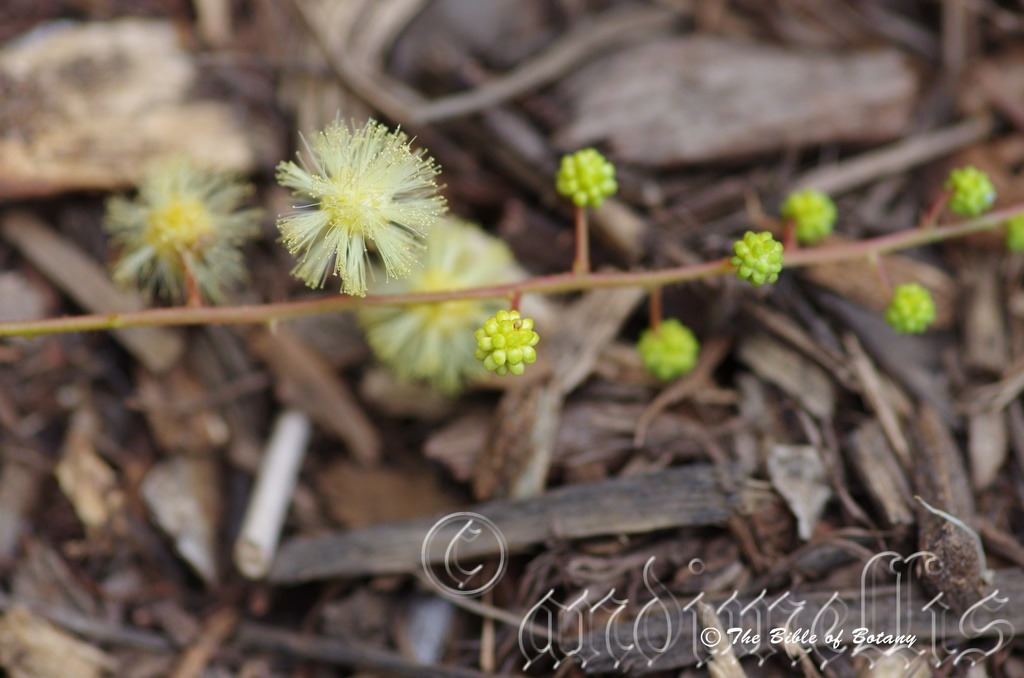
Benowa Qld.
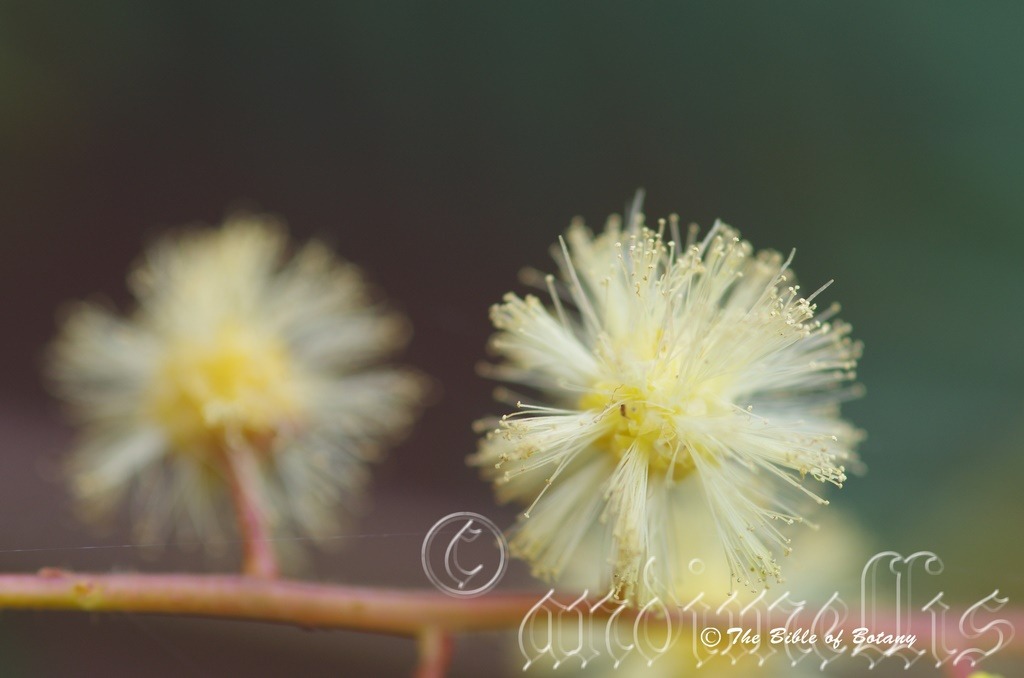
Benowa Qld.
Acacia oshanesii
Classification:
Class: Magnoliophyta
Order: Fabales
Family: Fabaceae
Subfamily: Mimosoideae
Genus: From ἀκακία, which is Ancient Greek or later Acanthium, which is Latin for to have a sharp point. It refers to the first species named by Dioscorides the Greek Botanist for the Egyptian plant Acacia arabica, which has very sharply pointed spines.
Specie: Is named in honour of John O?Shanesy; 1834-1899, who was an Irish born Australian nurseryman and plant collector with his younger brother Patrick for Ferdinand von Mueller.
Sub specie:
Common Name: Yarrum Wattle.
Distribution:
Acacia oshanesii is endemic to New South Wales and Queensland and is found in several disjunct localities. The Queensland populations are found south from Kroombit National Park to Brisbane and the Sunshine coast hinterland.
The New South Wales populations are found south from Casino-Grafton to Jervis Bay and near Nowra.
https://avh.ala.org.au/occurrences/search?taxa=Acacia+oshanesii+#tab_mapView
Habitat Aspect Climate:
Acacia oshanesii prefer full sun to dappled shade. It grows as a small tree in country dominated by Eucalyptus trees or dry riverine rainforest species. The altitude ranges from 5 meters ASL to 900 meters ASL
The temperatures range from lows of minus 4 degrees in July to 37 degrees in January.
The rainfalls range from lows of 900mm to an average of 1650mm annually.
Soil Requirements:
Acacia oshanesii prefer sandy loams, light clays to medium clays. The soils are usually derived from decomposed sandstones, granites, brown basalts or accumulated peaty beach sands. The soil?s pH ranges from 4.5pH to 6.5pH. It does not tolerate water logged soils. None saline soils to moderately saline soils are tolerated.
Height & Spread:
Wild Plants: 4m to 10m by 4m to 5m.
Characteristics:
Acacia oshanesii’s trunk is grey, glabrous and slightly fissured near the base. The bark is a smooth grey-brown turning grey-green towards the branchlets. The branchlets are terete or angled, grey-green to a dull green and covered in golden brown pubescent and hirsute hairs. Both the branchlets and new growth are slightly resinous. The branchlets are slightly pendulous towards their apexes.
Acacia oshanesii‘s bipinnate leaves and rachis are covered in short golden brown hirsute hairs. The rachises measure 25mm to 120mm in length while the petioles measure 3mm to 5mm in length. The Pinnae number 14 to 54 while there are 28 to 100 pinnules. The oblong to narrowly oblong pinnules are glabrous or covered in golden brown ciliate hairs on the margins. The pinnules measure 1mm to 4.7mm by 0.5mm to 0.7mm wide. The bases are rounded while the apexes are obtuse. The discolourous laminas are olive brown and covered in golden brown hirsute hairs on the upper laminas while the lower laminas are paler. The margins are entire while the laminas are flat. There is an interjugary gland between the last 2 pairs of pinnae and a prominent gland at the base of the lowest pair of pinnae. The pulvinus measure 2mm to 5mm in length.
The inflorescence of Acacia oshanesii is a panicle born terminally or auxiliary. The rachises and peduncles are glabrous or sparsely covered in golden brown hirsute hairs. The rachises measure 35mm to 55mm in length while the peduncles measure 3mm to 5mm in length. There are 12 to 25 individual flowers in each globose head. The flowers are pale lemon or cream and measure 5mm to 8mm in diameter while the individual flowers are 2.5mm to 3.3mm long.
The individual flowers are 5 merous. The pale lemon to bright lemon calyxes and 5 calyx lobes are erect and covered in white tomentose hairs. The elliptical petals are pale creamy lemon to bright yellow while the stamens are pale creamy yellow to golden-yellow. Acacia Oshanesii?s Flowers appear throughout the year with a peak in September to mid-November.
Acacia oshanesii fruits are long, flat, straight or curved pods. The pods measure 30mm to 100mm in length by 8mm to 11.5mm in width on the northern species while the southern species measure 50mm to 140mm in length by 4mm to 7mm in width. Constriction between the seeds is variable from slightly constricted to moderately constricted and moderately to deeply constricted along the margins while the southern species are slightly constricted between the seeds and along the margins. The thin coriaceous pods are green and covered in golden hirsute hairs becoming glabrous with age. On ripening they turn rusty-brown.
The seeds are deep brown-black with a creamy white filiform funicle which expands greatly for half its length. The seeds for the northern species measure 4.5mm to 5.5mm in length by 2mm to 2.5mm in diameter while the southern plants seeds measure 3.5mm to 4.5mm in length by 2.8mm to 3mm in diameter.
Wildlife:
The seeds Acacia oshanesii in some seasons are completely eaten by unknown borers and other seasons there is little evidence of damage at least in the species found between Coffs Harbour and north of Grafton. King parrots and Crimson rosellas have been seen on the trees but it is unclear whether they were eating the seeds or not. Older trees are susceptible to borer and these in return are eaten by the yellow tailed black cockatoo and white sulphur crested cockatoos which can rip the trees apart in a spate of a few hours.
Cultivation:
Acacia oshanesii is a beautiful small tree or medium shrub with fine foliage and a delicate appearance. In sub-tropical and temperate Native gardens they can be used to add nitrogen to the soil. It is relatively short lived but offer great assistance in breaking up heavy clay soils while adding good quantities of fine mulch throughout its life. They are most suitable in bush gardens where they can fill small to medium spaces or hard to fill corners especially in a riverine position. It is hardy and fast growing given a little attention.
Propagation:
Seeds: Acacia oshanesii require treatment before sowing. Pre-treat by placing the seeds into a glass of very hot but not boiling water. Allow the water to cool and leave to soak for 10 to 20 hours. Seeds that have not swollen repeat the exercise.
Sow into a seed raising mix. When the seedlings are 25m to 50mm tall, prick them out and plant them into 50mm native tubes using a seed raising mix.
Once the seedlings reach 200mm to 250mm in height plant them out into their permanent position. Where mass plantings are required plant them at 3 meter to 4 meter spacing?s.
Fertilize using Seaweed, fish emulsion or organic chicken pellets soaked in water on an alternate basis. Fertilize every two months until the plants are established then annually either in early September to March to maintain health, vitality and better flowering.
Further Comments from Readers:
All information is included in good faith and has been thoroughly researched prior to printing. The website or the author does not warrant or guarantee the accuracy of any information on these pages, nor does the website or the author accept any responsibility for any loss arising from the use of the information found within. The views and opinions are strictly those of the author or those members who chose to actively participate in the contents herein.
Hi reader, it seems you use The Bible of Botany a lot. That’s great as we have great pleasure in bringing it to you! It’s a little awkward for us to ask, but our first aim is to purchase land approximately 1,600 hectares to link several parcels of N.P. into one at The Pinnacles NSW Australia, but we need your help. We’re not salespeople. We’re amateur botanists who have dedicated over 30 years to saving the environment in a practical way. We depend on donations to reach our goal. If you donate just $5, the price of your coffee this Sunday, We can help to keep the planet alive in a real way and continue to bring you regular updates and features on Australian plants all in one Botanical Bible. Any support is greatly appreciated. Thank you.
In the spirit of reconciliation we acknowledge the Bundjalung, Gumbaynggirr and Yaegl and all aboriginal nations throughout Australia and their connections to land, sea and community. We pay our respect to their Elders past, present and future for the pleasures we have gained.
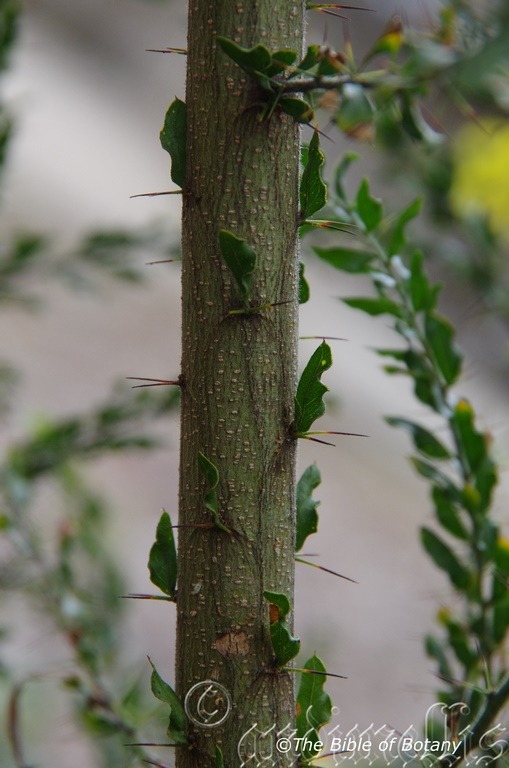
National Botanic Gardens ACT.

National Botanic Gardens ACT.
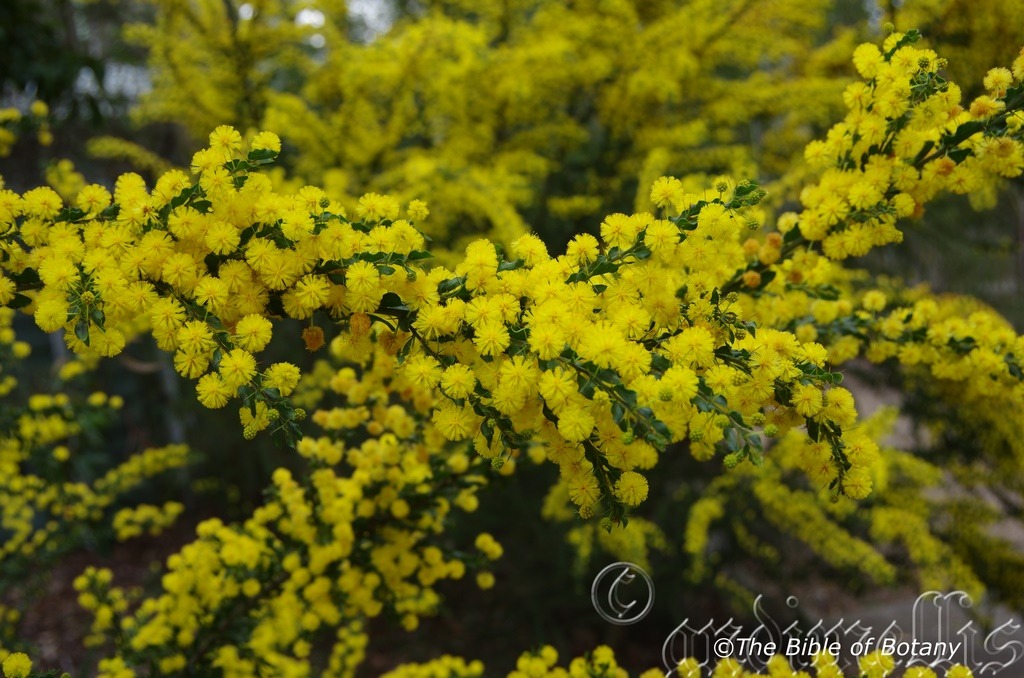
National Botanic Gardens ACT.
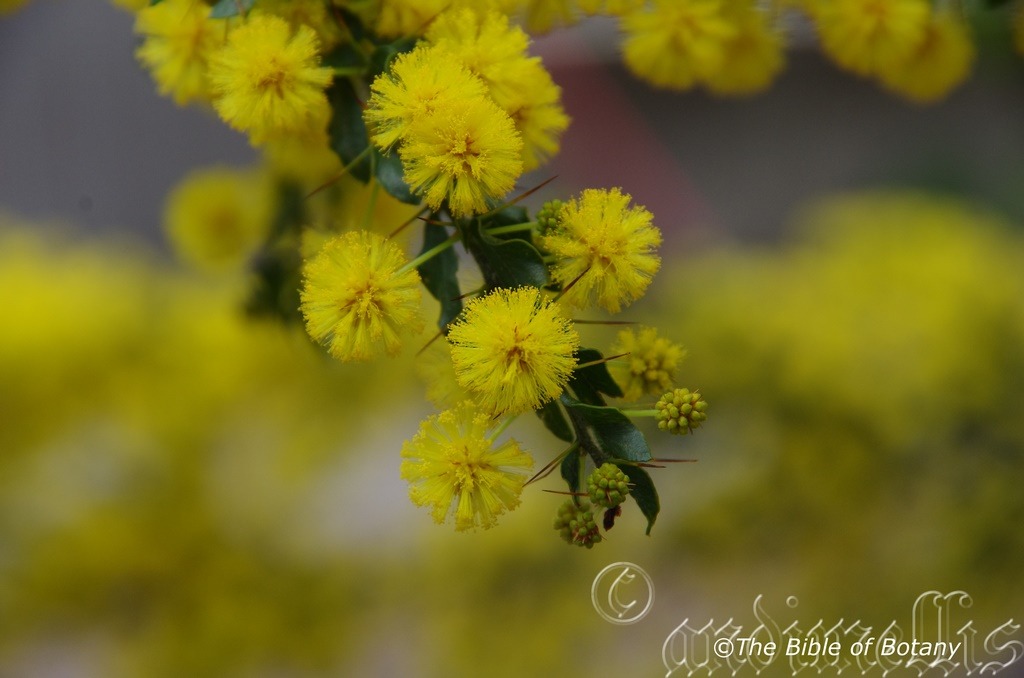
National Botanic Gardens ACT.

National Botanic Gardens ACT.
Acacia paradoxa
Classification:
Class: Magnoliophyta
Order: Fabales
Family: Fabaceae
Subfamily: Mimosoideae
Genus: From ἀκακία, which is Ancient Greek or later Acanthium, which is Latin for to have a sharp point. It refers to the first species named by Dioscorides the Greek Botanist for the Egyptian plant Acacia arabica, which has very sharply pointed spines.
Specie: From Para, which is a Greek prefix which is usually attached to a descriptive verb and stands for to be close to, near, side by side or beside and Doxa, which is Greek for strange or an anomalous. It refers to structures or organs, which vary greatly to each other even on the same plant.
Sub specie:
Common Name:
Distribution:
Acacia paradoxa is a wide spread specie east of a line from Yarraman in south east Queensland to the Grampians in Victoria then south of a line to Moolooloo and the Calpatanna Waterhole in Southern South Australia.
https://avh.ala.org.au/occurrences/search?taxa=Acacia+paradoxa+#tab_mapView
Habitat Aspect Climate:
Acacia paradoxa prefer full sun to dappled shade. It grows as a small tree or large shrub in country dominated by Cassuarina sp. Callitris species Mallees and open dry Eucalyptus species. The altitude ranges from 5 meters ASL to 1200 meters ASL
The temperatures range from lows of minus 7 degrees in July to 39 degrees in January.
The rainfalls range from lows of 300mm to an average of 1650mm annually.
Soil Requirements:
Acacia paradoxa prefer sandy loams, light clays to medium clays. The soils are usually derived from decomposed sandstones, granites, brown basalts or accumulated peaty beach silts. The soil?s pH ranges from 4.5pH to 7pH. It does not tolerate water logged soils. None saline soils to very saline soils are tolerated.
Height & Spread:
Wild Plants: 1m to 3m by 3m to 6m.
Characteristics:
Acacia paradoxa’s brownish-grey trunk is slightly fissured near the base. The bark is a smooth grey-brown turning grey-green towards the branchlets. The branchlets are terete with low ridges and moderately covered in white to pale grey villose hairs. The stipules are spinescent, slender and measure 5mm to 15mm in length.
Acacia paradoxa‘s phyllodes are lanceolate to narrowly elliptic, straight or slightly curved and measure 8mm to 30mm in length by 2.5mm to 7mm in width. The bases are tapering while the apexes are acute with a pungent point or acute with a mucronate point. The concolourous laminas are olive-green to bright grass-green and are glabrous to moderately covered in soft, golden-brown, pubescent hairs. The margins are entire and are slightly to strongly undulating. There is small gland near base of the phyllode. The pulvinus measures 0.2mm to 0.5mm in length.
The inflorescence of Acacia paradoxa are borne singularly or rarely in pairs from phyllode?s axils. The peduncles are usually glabrous or sparsely covered in soft, golden-brown pubescent hairs and measure 6mm to 20mm in length. There are 20 to 45 bright yellow individual flowers in each globose head. The flowers measure 6mm to 11mm in diameter.
The individual flowers are 5 merous. The calyxes are erect and covered in soft white pubescent hairs. The elliptical petals are pale creamy lemon to bright yellow while the stamens are pale creamy yellow to golden-yellow. Acacia paradoxa?s Flowers appear from July to mid-November.
Acacia paradoxa’s fruits are long, flat, straight pods. The pods are densely covered in soft white pubescent hairs and measure 20mm to 70mm in length by 3mm to 5mm in width. The pods are usually not constriction between the seeds and are not significantly raised over the seeds. The thick chartaceous turn rusty-brown.
The seeds are deep brown and glossy and lie longitudinally in the pods with the white filiform funicle expanding towards the seed. The seeds measure 3mm to 3.5mm in length by 2mm to 2.5mm in diameter.
Wildlife:
The seeds of Acacia paradoxa are distributed by ants which eat the funicles.
Cultivation:
Acacia paradoxa is a beautiful wide spreading medium shrub with attractive bright green foliage and a delicate appearance. In sub-tropical and temperate native gardens they can be used to add nitrogen to the soil. It is a relatively short lived but offers great assistance in breaking up heavy clay soils while adding good quantities of fine mulch throughout its life. It is most suitable in bush gardens where it can fill small to medium spaces or hard to fill corners especially in a riverine position. It is hardy and fast growing given a little attention.
Due to its great versatility in climate, rainfall, temperatures, soil conditions and aspect it is a great starter plant but should be checked in properties bordering bushland as escapees are becoming problemsome in some areas. The plants are becoming an environmental disaster in some states of America where no natural predators abound and ants have taken a liking for the seeds.
Propagation:
Seeds: Acacia paradoxa require treatment before sowing. Pre-treat by placing the seeds into a glass of very hot but not boiling water. Allow the water to cool and leave to soak for 10 to 20 hours. Seeds that have not swollen repeat the exercise.
Sow into a seed raising mix. When the seedlings are 25m to 50mm tall, prick them out and plant them into 50mm native tubes using a seed raising mix.
Once the seedlings reach 200mm to 250mm in height plant them out into their permanent position. Where mass plantings are required plant them at 3 meter to 4 meter spacing?s.
Fertilize using Seaweed, fish emulsion or organic chicken pellets soaked in water on an alternate basis. Fertilize every two months until the plants are established then annually either in early September to March to maintain health, vitality and better flowering.
Further Comments from Readers:
All information is included in good faith and has been thoroughly researched prior to printing. The website or the author does not warrant or guarantee the accuracy of any information on these pages, nor does the website or the author accept any responsibility for any loss arising from the use of the information found within. The views and opinions are strictly those of the author or those members who chose to actively participate in the contents herein.
Hi reader, it seems you use The Bible of Botany a lot. That’s great as we have great pleasure in bringing it to you! It’s a little awkward for us to ask, but our first aim is to purchase land approximately 1,600 hectares to link several parcels of N.P. into one at The Pinnacles NSW Australia, but we need your help. We’re not salespeople. We’re amateur botanists who have dedicated over 30 years to saving the environment in a practical way. We depend on donations to reach our goal. If you donate just $5, the price of your coffee this Sunday, We can help to keep the planet alive in a real way and continue to bring you regular updates and features on Australian plants all in one Botanical Bible. Any support is greatly appreciated. Thank you.
In the spirit of reconciliation we acknowledge the Bundjalung, Gumbaynggirr and Yaegl and all aboriginal nations throughout Australia and their connections to land, sea and community. We pay our respect to their Elders past, present and future for the pleasures we have gained.
Acacia penninervis
Classification:
Class: Magnoliophyta
Order: Fabales
Family: Fabaceae
Subfamily: Mimosoideae
Genus: From ἀκακία, which is Ancient Greek or later Acanthium, which is Latin for to have a sharp point. It refers to the first species named by Dioscorides the Greek Botanist for the Egyptian plant Acacia arabica, which has very sharply pointed spines.
Specie: From Penna/Penni, which is Latin for a feather and Neuron, which is Ancient Greek or Nervus, which is Latin for a nerve or vein. It refers to veins which spread out like the barbs off the rachis but not reaching the margins.
Variety: Acacia penninervis var. longiracemosa: From Longitia/Longus, which is Latin for long in length and Rachis, which is Latin for a branched flower spike. It refers to flowers, which appear on a long raceme.
Variety: Acacia penninervis var. penninervis: From Penna/Penni, which is Latin for a feather and Neuron, which is Ancient Greek or Nervus, which is Latin for a nerve or vein. It refers to veins which spread out like the barbs off the rachis but not reaching the margins.
Common Name:
Distribution:
Acacia penninervis var. longiracemosa is found south from Gladstone in south eastern Queensland to near Yamba in north eastern New South Wales. It is found on and east of the Great Dividing Range.
There are eight other varieties found between Cairns and Adelaide.
Acacia penninervis var. penninervisis found south from the Fitzroy River near Rockhampton in Queensland to north east of Melbourne in the southern Victoria. It is found on and east of the Great Dividing Range.
https://avh.ala.org.au/occurrences/search?taxa=Acacia+penninervis+#tab_mapView
Habitat Aspect Climate:
Acacia penninervis prefers full sun to dappled shade. It grows as a small tree in country dominated by Eucalyptus trees or dry riverine rainforests, dry rainforests or sclerophyll forests. The altitude ranges from 5 meters ASL to 800 meters ASL
The temperatures range from lows of minus 4 degrees in July to 37 degrees in January.
The rainfalls range from lows of 500mm to an average of 1650mm annually.
Soil Requirements:
Acacia penninervis prefers sandy loams, light fatty clays to medium clays. The soils are usually derived from decomposed sandstones granites, brown basalts or shales. The soil?s pH ranges from 4.5pH to 6.5pH. It does not tolerate waterlogged soils. None saline soils to moderately saline soils are tolerated.
Height & Spread:
Wild Plants: 2m to 8m by 2m to 5m.
Characteristics:
Acacia penninervis’s trunk is grey, glabrous and slightly to deeply fissured near the base on older trees. The bark is a glabrous, grey-brown turning blue-green towards the branchlets. The branchlets are terete or angled, dull, blue-green and glabrous. The branchlets are erect and at times pruinose.
Acacia penninervis var. penninervis’s phyllodes are oblanceolate to narrowly elliptical and straight or rarely slightly curved. The phyllodes measure 50mm to 100mm in length by 10mm to 30mm in width. Northern Queensland plants are falcate and measure 100mm to 160mm in length by 5mm to 15mm in width. The bases are tapering oblique while the apexes are narrowly acute. The concolourous phyllodes blue green, often pruinose and thinly coriaceous. The margins are entire while the laminas are flat. The midribs are rarely contiguous with lower margin above the pulvinus. There is a small gland 5mm to 30mm above the pulvinus. The pulvinus measure 1mm to 3mm in length.
Acacia penninervis var. longiracemosa’s phyllodes are narrowly elliptical and straight. The phyllodes measure 70mm to 150mm in length by 10mm to 40mm in width. The bases are tapering oblique while the apexes are narrowly acute. The concolourous phyllodes blue green, often pruinose and thinly coriaceous. The midribs are often contiguous with lower margin for 5mm to 10mm above the pulvinus. There is a small gland 5mm to 30mm above the pulvinus. The pulvinus measure 1mm to 3mm in length.
The inflorescence of Acacia penninervis are panicles born terminally or auxiliary. The rachises and peduncles are glabrous on Acacia penninervis var. penninervis while those on Acacia penninervis var. longiracemosa are usually sparsely to moderately covered in white sericeous hairs. The rachises measure 30mm to 120mm in length while the peduncles measure 3mm to 9mm in length. There are 6 to 30 individual flowers on each raceme with 15 to 30 individual flowers in each globose head. The flowers are pale lemon to pale cream, almost white. The globose heads measure 6mm to 10mm in diameter while the individual flowers measure 3mm to 4.5mm in length.
The individual flowers are 5 merous. The pale lemon to bright lemon calyx and 5 lobes are erect and covered in white tomentose hairs. The orbicular petals are pale creamy green while the anthers are pale creamy yellow to bright golden-yellow. The flowers appear throughout the year with a peak in September through to mid-November.
Acacia penninervis fruits are long, flat, straight or at times curved pods. The pods measure 50mm to 200mm in length by 10mm to 23mm in width. Constriction between the seeds is variable from moderately constricted to deeply constricted even on the same pod and slightly to moderately constrict along the margins. The thin coriaceous pods are green and pruinose becoming glabrous and turning rusty-brown when ripe.
The seeds are black with a creamy white clavate funicle which runs along one side of the seed. The oblong to ellipsoidal, glossy seeds measure 6mm to 7mm in length by 2mm to 2.2mm in diameter.
Wildlife:
The seeds of Acacia penninervis in some seasons are completely eaten by unknown borers while in other seasons there is little evidence of damage. King parrots (Alisterus scapularis) and Crimson rosellas (Platycercus elegans) have been seen on the trees eating the green seeds and possibly the pods.
Cultivation:
Acacia penninervis is a beautiful small tree or medium shrub with fine foliage and a delicate appearance. In sub-tropical and temperate Native gardens it can be used to add nitrogen to the soil. It is relatively short lived but offer great assistance in breaking up heavy clay soils while adding good quantities of fine mulch throughout its life. They are most suitable in bush gardens where it can fill small to medium spaces or hard to fill corners especially in a riverine position. It is hardy and fast growing given a little attention. In cultivation it will grow from 1.5meters to 6 meters in height by 2 meters to 4 meters in diameter depending on the sub specie selected.
It is best used adjacent to small areas of bush close to paths or the house. It is great in large rockeries or small rainforest gardens as a fill in plant. Here they can be planted in small groups of 2 or 3 as a stand-alone plant to create quick lush growth contrasting the foliages of other rainforest plants. If it is surrounded by shorter plants with fine foliages and red flowers they will dominate at the center giving height and strength to the bed.
Planted with a mass of smaller plants and ground covers with mixed coloured flowers and foliages will ensure a great display during the winter and spring months. This would be particularly strong, if a mixture of different finer foliages of different colours and textures are incorporated together. This will give a strong uplifting of central height. Be sure to plant any plant exactly in the center for a formal look or well off to one side for an informal look. 2 or 3 shrubs close together on one side looks even more spectacular when just a single plant is placed on the other side to give balance to the picture. Mass plant below Acacia penninervis with annuals and prostrate plants so that the whole bed is covered for a woodland scene.
The plants planted out below should have a mixture of bold colours radiating out from the base of the trees so use pinks and mauves directly below and reds and whites further out and avoid yellows. Acacia penninervis has broad leaves and large enough flowers to dominate the scene when in flower and when not in flower while their strong outline will give the contrast required for strength provide those plants covering the ground have smaller leaves and the majority are a pale green and no blue grey leaves are used.
Propagation:
Seeds: The seeds of Acacia penninervis require treatment before sowing. Pre-treat by placing the seeds into a glass of boiling water. Allow the water to cool and leave to soak for 10 to 20 hours. Seeds that have not swollen repeat the exercise.
Sow into a seed raising mix. When the seedlings are 25m to 50mm tall, prick them out and plant them into 50mm native tubes using a seed raising mix.
Once the seedlings reach 200mm to 250mm in height plant them out into their permanent position.
Fertilize using Seaweed, fish emulsion or organic chicken pellets soaked in water on an alternate basis. Fertilize every two months until the plants are established then annually either in early September to March to maintain health, vitality and better flowering.
Further Comments from Readers:
All information is included in good faith and has been thoroughly researched prior to printing. The website or the author does not warrant or guarantee the accuracy of any information on these pages, nor does the website or the author accept any responsibility for any loss arising from the use of the information found within. The views and opinions are strictly those of the author or those members who chose to actively participate in the contents herein.
Hi reader, it seems you use The Bible of Botany a lot. That’s great as we have great pleasure in bringing it to you! It’s a little awkward for us to ask, but our first aim is to purchase land approximately 1,600 hectares to link several parcels of N.P. into one at The Pinnacles NSW Australia, but we need your help. We’re not salespeople. We’re amateur botanists who have dedicated over 30 years to saving the environment in a practical way. We depend on donations to reach our goal. If you donate just $5, the price of your coffee this Sunday, We can help to keep the planet alive in a real way and continue to bring you regular updates and features on Australian plants all in one Botanical Bible. Any support is greatly appreciated. Thank you.
In the spirit of reconciliation we acknowledge the Bundjalung, Gumbaynggirr and Yaegl and all aboriginal nations throughout Australia and their connections to land, sea and community. We pay our respect to their Elders past, present and future for the pleasures we have gained.

Capalaba Qld.

Capalaba Qld.
Acacia perangusta
Classification:
Class: Magnoliophyta
Order: Fabales
Family: Fabaceae
Subfamily: Mimosoideae
Genus: From ἀκακία, which is Ancient Greek or later Acanthium, which is Latin for to have a sharp point. It refers to the first species named by Dioscorides the Greek Botanist for the Egyptian plant Acacia arabica, which has very sharply pointed spines.
Specie: From Per/Peri, which is Latin for around, through, beyond, extra or at times very and Angusta, which is Latin for narrow. It refers to leaves or at times other organs, which are rather narrow.
Sub specie:
Common Name: Eprapah Wattle.
Distribution:
Acacia perangusta has a restricted distribution in Victoria Point, Redland Bay, Mount Cotton, Daisy Hill, Rochedale and Beenleigh.
https://avh.ala.org.au/occurrences/search?taxa=Acacia+perangusta+#tab_mapView
Habitat Aspect Climate:
Acacia perangusta prefer growing in full sun to dappled shade, amongst medium trees or low trees in moist gullies, along creeks or seasonally wet flats. Its altitude ranges from 10 meters ASL to 240 meters ASL.
The temperatures range from lows of 4 degrees in August to 36 degrees in January.
The rainfalls range from lows of 800mm to an average of 1200mm annually.
Soil Requirements:
Acacia perangusta prefers light fatty clays, medium clays, medium podzolic clays or heavy silts. The soils are usually derived from decomposed shales, metamorphic rocks or alluvial deposits. The soil?s pH ranges from 4.5pH to 5.5pH. It tolerates seasonal water logged soils. None saline soils to moderately saline soils are tolerated.
Height & Spread:
Wild Plants: 4m to 7m by 4m to 5m.
Characteristics:
Acacia perangusta’s trunk is deep reddish-brown while the slender branchlets are olive-green to grass-green and glabrous.
Acacia perangusta‘s phyllodes are narrowly linear and measure 40mm to 80mm in length by 1mm to 2mm in width. The bases are tapering while the apexes are acute to obtuse-mucronate. The concolourous phyllodes are olive-green to grass-green, glabrous and semi glossy. The margins are entire while the laminas are flat. The midvein is very slightly prominent while the lateral veins are obscure. There is a small prominent gland 7mm to 17mm above the pulvinus. The pulvinus measure 2mm to 3mm in length.
The inflorescence of Acacia perangusta is a panicle born terminally or auxiliary. The rachises and peduncles are glabrous. The rachises measure 45mm to 80mm in length while the peduncles measure 2mm to 4mm in length. There are 8 to 15 globular heads on each raceme with 8 to 15 individual flowers in each globose head. The globose heads measure 6mm to 10mm in diameter while the individual flowers measure 3mm to 4.5mm in length.
The individual flowers are usually 5 merous but can be 4 merous. The pale lemon?green and at times lime-yellow sepals are erect and glabrous. The orbicular petals are pale lemon-green and at times lime-yellow while the stamens are pale lemon yellow to bright golden-yellow. Acacia perangusta flowers from June through to October.
Acacia perangusta fruits are long flat pods. The papery to coriaceous pods are deeply constricted between the seeds and variably constricted along the margins. The pods measure 50mm to 75mm in length by 4mm to 6mm in width. The green pruinose pods turn red-brown externally and pinkish-brown internally when ripe. The 2 to 8 black ellipsoidal seeds measure 3mm to 4mm. The white filiform funicle expands at the base.
Wildlife:
Acacia perangusta is an ideal plant for the control of soil erosion and nitrogen fixation. They support a large variety of small beetles when in flower. The seeds are eaten by the Eastern or Pale headed Rosella. (Platycercus adscitus) It is also visited by the Imperial Hairstreak butterfly (Jalmenus evagoras evagoras)
www.saveourwaterwaysnow.com. au
Native bees has been seen foraging pollen from the flowers.
Cultivation:
Acacia perangusta is a beautiful fast growing bushy shrub that grows 4 meters to 5 meters in height by 5 meters to 7 meters in diameter in the garden when grown in the open. It grows particularly well in warm temperate zones through to the sub tropics. As it is hardy on all soil types except for pure sand it is easy to grow giving a wonderful display in just 2 to 3 years from seed. Life expectancy is 12 to 15 years however it is best when culled at around 10 years of age and replanted. This will give continuous colour with healthy growth with minimal disruption.
It is best used adjacent to small areas of bush close to paths or the house so their deep yellow fragrant flowers can be viewed regularly and the perfume from the flowers can be fully appreciated. If they are surrounded by shorter plants with course blue foliages and red flowers they will dominate at the center giving an expansive look to the bed especially when they are in flower.
There medium size and bushiness enables them to be utilized best in medium to large gardens against shed walls for camouflage or cooling in the hot summer months.
Propagation:
Seeds: Acacia perangusta seeds require treatment before sowing. Pre-treat the seeds by placing the seeds into a glass of boiling water. Allow the water to cool and leave to soak for 10 hours. Seeds that have not swollen repeat the above exercise.
Sow into a seed raising mix. When the seedlings are 25 to 50 mm tall, prick them out and plant them into 50mm native tubes using a seed raising mix.
Once the seedlings reach 200 to 250mm in height plant them out into their permanent position. For screens and windbreaks plant them at 4.5 meter to 5 meter centers.
Fertilize using Seaweed, fish emulsion or organic chicken pellets soaked in water on an alternate basis. Fertilize every two months until the plants are established then annually either in early September to March to maintain health, vitality and better flowering.
Further Comments from Readers:
All information is included in good faith and has been thoroughly researched prior to printing. The website or the author does not warrant or guarantee the accuracy of any information on these pages, nor does the website or the author accept any responsibility for any loss arising from the use of the information found within. The views and opinions are strictly those of the author or those members who chose to actively participate in the contents herein.
Hi reader, it seems you use The Bible of Botany a lot. That’s great as we have great pleasure in bringing it to you! It’s a little awkward for us to ask, but our first aim is to purchase land approximately 1,600 hectares to link several parcels of N.P. into one at The Pinnacles NSW Australia, but we need your help. We’re not salespeople. We’re amateur botanists who have dedicated over 30 years to saving the environment in a practical way. We depend on donations to reach our goal. If you donate just $5, the price of your coffee this Sunday, We can help to keep the planet alive in a real way and continue to bring you regular updates and features on Australian plants all in one Botanical Bible. Any support is greatly appreciated. Thank you.
In the spirit of reconciliation we acknowledge the Bundjalung, Gumbaynggirr and Yaegl and all aboriginal nations throughout Australia and their connections to land, sea and community. We pay our respect to their Elders past, present and future for the pleasures we have gained.

Norman Park Qld.

Norman Park Qld.

North Coast Botanic Gardens Coffs Harbour NSW.

North Coast Botanic Gardens Coffs Harbour NSW.

North Coast Botanic Gardens Coffs Harbour NSW.

North Coast Botanic Gardens Coffs Harbour NSW.
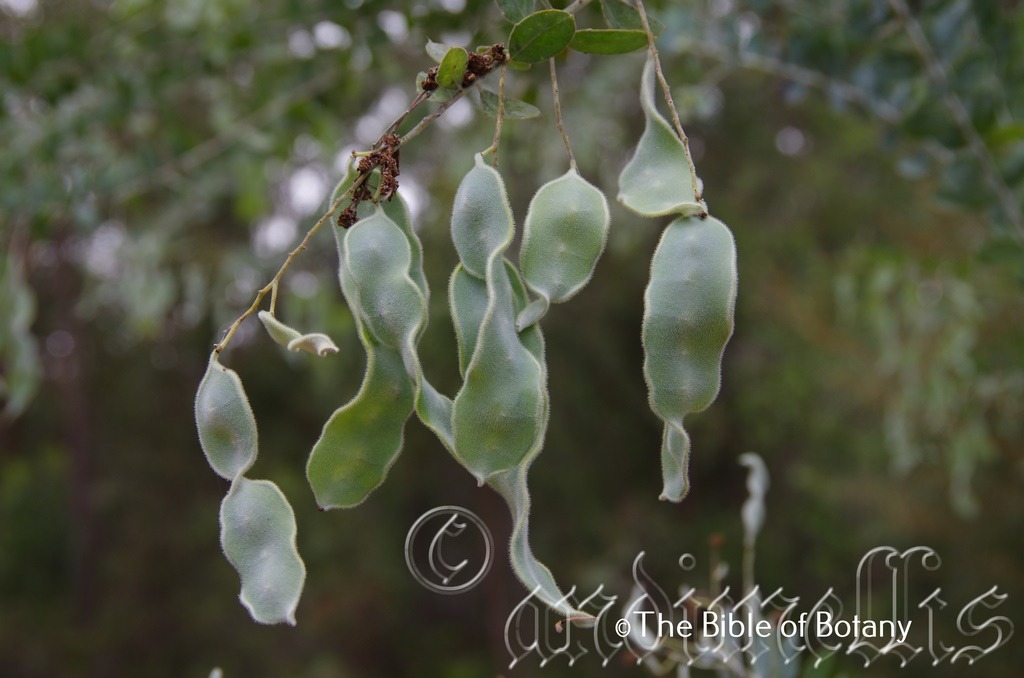
The Pinnacles NSW.
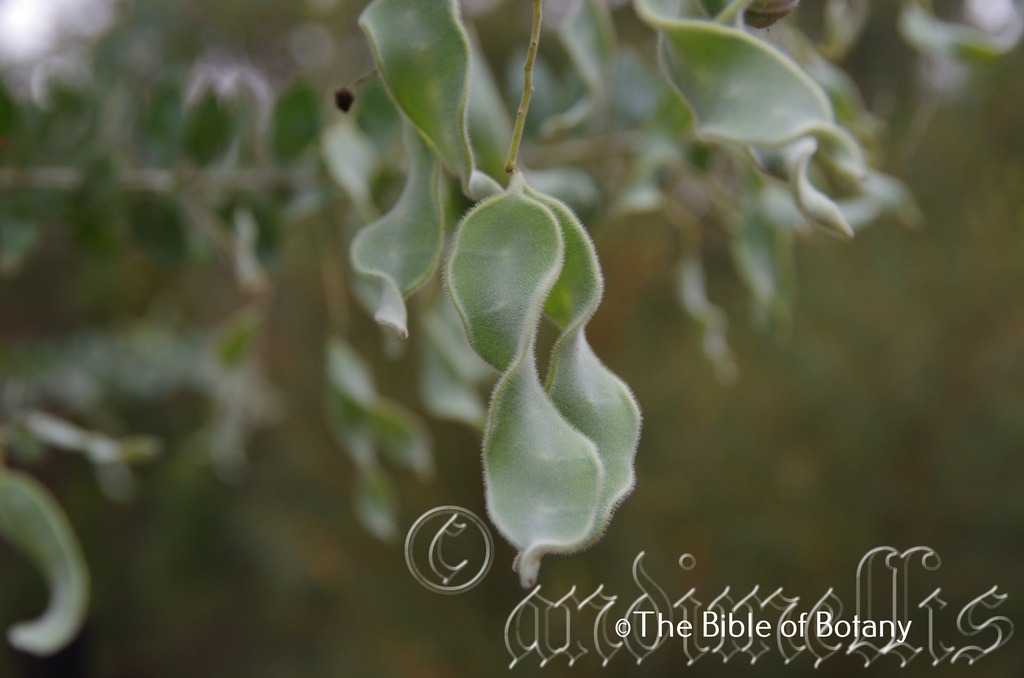
The Pinnacles NSW.

The Pinnacles NSW.

The Pinnacles NSW.
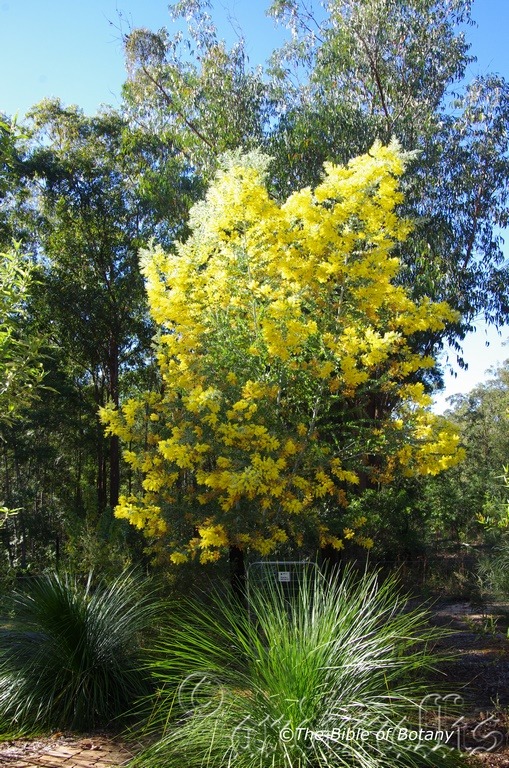
Author’s Garden The Pinnacles NSW.

Acacia podalyriifolia
Classification:
Class: Magnoliophyta
Order: Fabales
Family: Fabaceae
Subfamily: Mimosoideae
Genus: From ἀκακία, which is Ancient Greek or later Acanthium, which is Latin for to have a sharp point. It refers to the first species named by Dioscorides the Greek Botanist for the Egyptian plant Acacia arabica, which has very sharply pointed spines.
Specie: From Podalyrius who was an ancient Greek physician and Folium, which is Latin for foliage. It refers to the son of Aesculapius, who was a skillful physician in Greek mythology. It is believed that only he could design something as beautiful as the phyllodes on this Acacia.
Common Name: Mount Morgan Wattle or Queensland Silver Wattle.
Distribution:
Acacia podalyriifolia is found south from Rockhampton in central eastern Queensland to near the New South Wales border at Saint George. The plants in the Pinnacles road area north of Grafton are probably garden escapees, despite being much smaller in all measurements than plants found further north. This population was well established prior to any major development in the area which throws doubt on escapees and would make them a disjunct population.
https://avh.ala.org.au/occurrences/search?taxa=Acacia+podalyriifolia+#tab_mapView
Habitat Aspect Climate:
Acacia podalyriifolia prefer full sun to light dappled shade. It grows in more open type forests and woodlands on hills, along ridges or flats. The altitude ranges from 10 meters ASL to 600 meters ASL
The temperatures range from lows of minus 2 degrees in August to 40 degrees in January.
The rainfalls range from lows of 650mm to an average of 1600mm annually.
Soil Requirements:
Acacia podalyriifolia prefer loamy soils, light fatty clays, medium clays or light silts to heavy silts. The soils are usually derived from decomposed sandstones granites or at times accumulated peaty beach sands. The soil?s pH ranges from 4.5pH to 6pH. It does not tolerate water logged soils. None saline soils to moderately saline soils are tolerated.
Height & Spread:
Wild Plants: 3m to 6m by 4m x 5m.
Characteristics:
Acacia podalyriifolia‘s trunk is distinct blue-grey glabrous and finely fissured. The terete branchlets are pruinose and like the phyllodes are a bluish-grey in colour and densely covered in pannate hairs.
The phyllodes are broadly elliptical to ovate and measure 20mm to 50mm in length by 12mm to 25mm in width. The bases are broadly cuneate to round while the apexes are acute to acute-obtuse with a mucronate tip. The concolourous laminas are silver-grey to blue-grey and densely covered in short white pannate hairs. The margins are entire while the laminas are flat or recurve slightly from the mid vein. The mid vein is slightly prominent on the upper lamina and distinctly visible from the lower lamina. The laminas are finely penniveined. There is an inconspicuous gland 8mm to 25mm above the pulvinus. The pulvinus measures 1mm to 2mm in length.
The inflorescences of Acacia podalyriifolia are panicles born terminally or auxiliary. The rachises and peduncles are covered in white spreading pannate hairs. The rachises measure 25mm to 110mm in length while the peduncles measure 3mm to 10mm in length. There are 8 to 22 globular heads on each raceme with 15 to 30 individual flowers in each globose head. The globose heads measure 6mm to 8mm in diameter while the individual flowers measure 3mm to 4mm in length.
The individual flowers are usually 5 merous. The 5 sepals are deep lemon to bright golden-yellow and united at the base. The elliptical petals are deep lemon to bright golden-yellow while the stamens are deep yellow to deep golden-yellow. Acacia podalyriifolia sweetly scented flowers appear from June through to late July however some flowers may appear all year especially in favourable seasons.
Acacia podalyriifolia fruits are long, flat straight pods. The thinly coriaceous pods are variably constricted between the seeds and variably constricted along the margins. The margins are undulating. The pods measure 50mm to 120mm in length by 10mm to 20mm in width. The blue-grey pruinose pods are covered in white, spreading caduceous, pannate hairs or at times glabrescens. The pods turn red-brown externally and pinkish-brown internally when ripe. The 2 to 6 black ellipsoidal seeds measure 3mm to 4mm. The white coiled filiform funicle is clavate along the side near the base.
Wildlife:
Acacia podalyriifolia is an ideal plant for Nitrogen fixation. The caterpillars of a number of butterflies are attracted to Acacia podalyriifolia throughout the year. The butterfly larvae of the Short Tail Blue Line (Prosotas felderi) and the tail Emperor Butterfly (Polyura sempronius) have been known to feed on the leaves.
Acacia podalyriifolia is somewhat susceptible to attack from the Ochrogaster lunifer moth especially when soft grown or growing outside its natural habitats. The larvae are famous for walking in processions when travelling from one food tree to the next. They are nocturnal feeders and if their nest is at the foot of their host tree, they leave such silk trails each evening as they climb the tree, and each dawn as they descend again to their nest.
Like most Acacia it is susceptible to borers like the beautiful beetle Chrysolopus spectabilis.
Both the flowers and seeds were eaten by aborigines. Try adding a large handful of flowers to Saturday’s pancakes for an aromatic sweet flavour. The seeds can be ground into flour for dampers or even to make your pancakes.
According to the CSIRO Acacia pycnantha, contains the following minerals: Potassium, Calcium, iron, zinc, in fairly high concentrations. Protein is approximately 23mm, carbohydrate 26mm, Fat/oil 9mm (poly and mono saturated). Wattle seeds have a low in glycaemic index meaning they are a good source of the above for diabetics. Most Vitamins are found except for Vitamin C, B12 and riboflavin. They contain 39mm fibre. This is not to say that Acacia podalyriifolia contains exactly the same breakdown of minerals but it is a good indicator of its nutritional value.
Cultivation:
Acacia podalyriifolia is a beautiful fast growing Acacia growing 3 meters to 5 meters in height by 3 meters to 5 meters in diameter in the garden when grown in the open. It is particularly hardy on heavier soil types but adapts well to growing on soils with some gravel or even those that are predominantly fatty sands. It will flower in its second year in cultivation. It is suitable for seaside gardens but will not accept water logged or wet soils. It is a drought resistant species.
Single plants scattered throughout a bush scene and mixed with prostrate shrubs which have fine or large foliages that are pale or deep green look really spectacular because of the foliage contrasts. This is especially true when nothing is in flower to distract your attention.
It is best used adjacent to small areas of bush close to paths or the house so their deep golden yellow perfumed flowers can be viewed regularly and where the scent can be fully appreciated. It is great in small rockeries as the feature plant. Here they can be planted in small groups of 2 or 3 or as a stand-alone plant to create a harsh barren look with other arid plants. If it is surrounded by shorter plants with fine foliages and red flowers they will dominate at the center giving height and strength to the bed especially when it is in flower. Remember that the upper trunk and main stems must remain exposed so that the flowers can be fully appreciated. Do not use plants with blue or grey leaves as these will l blend into each other and the overall affect will be lost.
Shrubs with red, scarlet or deep orange flowers that flower at the same time will add interest and pleasure. This will give a strong uplifting relief of colour if one tree is used or depth and width if three or five plants are strategically placed. Be sure to plant any plant exactly in the center for a formal look or well off to one side for an informal look. 2 or 3 planted close together on one side looks even more spectacular when just a single plant is placed on the other side to give balance in very large beds. Mass plant, below the wattles so the whole bed is covered for a woodland scene, or sparsely plant the area for that arid look.
Mass planting off sets the short life span of this small tree. When it is time to replant the seedlings, avoid the stark empty hole by replanting seedlings a year prior to removing the old plants.
The plants planted out below should have a mixture of bold colours radiating out from the base of the trees so use pinks and mauves directly below and reds further out, and avoid yellows. Grevillea miniata has broad leaves and large enough flowers to dominate the scene when in flower and when not in flower their strong outline will give the contrast required for strength.
Propagation:
It would make an good fire retardant small tree.
* Fire retardant plants act as radiant heat screens and absorb more heat from an approaching fire without burning.
* Fire retardant trees are able reduce wind speed near a house or out buildings.
* Fire retardant also trap embers and sparks carried by the wind.
* Fire retardant ground covers are able to catch burning embers without catching fire themselves, and also slow the travel of a fire through debris and litter on the ground.
Seeds: Acacia podalyriifolia seed requires treatment before sowing. Pre-treat the seeds by placing the seeds into a glass of boiling water. Allow the water to cool and leave to soak for 10 hours. Seeds that have not swollen repeat the exercise.
Sow into a seed raising mix. When the seedlings are 25 to 50 mm tall, prick them out and plant them into 50mm native tubes using a seed raising mix.
Once the seedlings reach 200 to 250mm in height plant them out into their permanent position. When mass plantings are required plant them out at 3.5 to 5 meter centers.
Fertilize using Seaweed, fish emulsion or organic chicken pellets soaked in water on an alternate basis. Fertilize every two months until the plants are established then annually either in early September to March to maintain health, vitality and better flowering.
Further Comments from Readers:
All information is included in good faith and has been thoroughly researched prior to printing. The website or the author does not warrant or guarantee the accuracy of any information on these pages, nor does the website or the author accept any responsibility for any loss arising from the use of the information found within. The views and opinions are strictly those of the author or those members who chose to actively participate in the contents herein.
Hi reader, it seems you use The Bible of Botany a lot. That’s great as we have great pleasure in bringing it to you! It’s a little awkward for us to ask, but our first aim is to purchase land approximately 1,600 hectares to link several parcels of N.P. into one at The Pinnacles NSW Australia, but we need your help. We’re not salespeople. We’re amateur botanists who have dedicated over 30 years to saving the environment in a practical way. We depend on donations to reach our goal. If you donate just $5, the price of your coffee this Sunday, We can help to keep the planet alive in a real way and continue to bring you regular updates and features on Australian plants all in one Botanical Bible. Any support is greatly appreciated. Thank you.
In the spirit of reconciliation we acknowledge the Bundjalung, Gumbaynggirr and Yaegl and all aboriginal nations throughout Australia and their connections to land, sea and community. We pay our respect to their Elders past, present and future for the pleasures we have gained.
North Coast Botanic Gardens Coffs Harbour NSW.

National Botanic Gardens ACT.

National Botanic Gardens ACT.
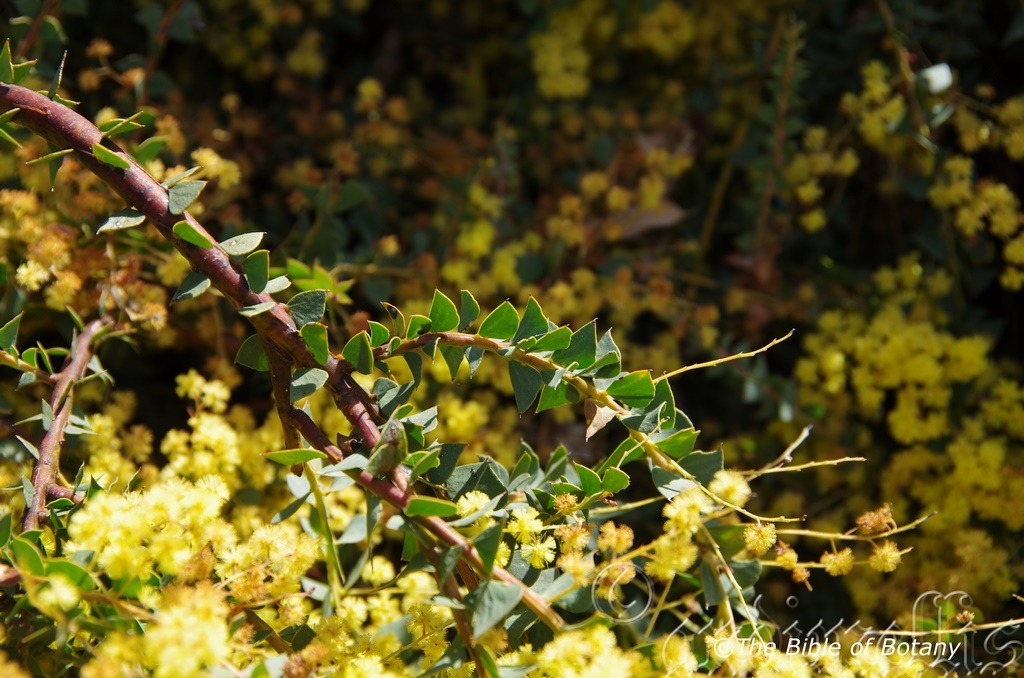
National Botanic Gardens ACT.

National Botanic Gardens ACT.

National Botanic Gardens ACT.
Acacia pravissima
Classification:
Class: Magnoliophyta
Order: Fabales
Family: Fabaceae
Subfamily: Mimosoideae
Genus: From ἀκακία, which is Ancient Greek or later Acanthium, which is Latin for to have a sharp point. It refers to the first species named by Dioscorides the Greek Botanist for the Egyptian plant Acacia arabica, which has very sharply pointed spines.
Specie:From Pravis, which is Latin for crooked or twisted and -Issima, which is Latin for the superlative of. It refers to leaves phyllodes and or stems, which are at different angles and or strongly to severely twisted.
Common Name: Tumit Wattle, Wedge Leaf Wattle or Oven?s Wattle.
Distribution:
Acacia pravissima is found south from Canberra in the ACT south west to the Grampians in south western Victoria.
https://avh.ala.org.au/occurrences/search?taxa=Acacia+pravissima+#tab_mapView
Habitat Aspect Climate:
Acacia pravissima prefer full sun to light dappled shade. It grows in more open type forests and woodlands on hilly terrain, along riverine gullies and rills. The altitude ranges from 20 meters ASL to 1700 meters ASL
The temperatures range from lows of minus 7 degrees in August to 36 degrees in January.
The rainfalls range from lows of 600mm to an average of 1600mm annually.
Soil Requirements:
Acacia pravissima has little preference for soil types growing in loamy soils, light fatty clays, medium clays or light silts to heavy silts. The soils are usually derived from decomposed sandstones, granites basalts, metamorphic or at times accumulated silts and gravels. The soil?s pH ranges from 4.5pH to 7pH. It does not tolerate wate logged soils though even moisture is preferred. None saline soils to moderately saline soils are tolerated.
Height & Spread:
Wild Plants: 1m to 6m by 2m x 6m.
Characteristics:
Acacia pravissima?s trunk and branches are often slightly arching to pendulous. The grey to blue-grey bark is smooth or finely fissured and angled towards apices. They are glabrous to sparsely covered in soft white hirtellous hairs.
The triangular phyllodes have a broadly convex upper margin and are crowded, on short projected stems, markedly inequilateral, generally obdeltate with adaxial margin conspicuously rounded with the proximal edge parallel to branchlet. The phyllodes measure 5mm to 16mm in length by 4mm to 14mm in width. The strongly asymmetrical bases are broadly cuneate on one side and rounded on the other while the apexes are mucronate. The concolourous laminas are grey-green to blue-grey or greenish and glabrous to sparsely covered in short white pannate hairs on the basal third. The margins are entire while the laminas are flat. The mid vein is slightly prominent on the upper lamina and distinctly visible from the lower lamina. The lateral veins are indistinct. There is a large conspicuous gland 2mm to 6mm above the pulvinus on the upper edge. The pulvinus measures 1mm.
The inflorescences of Acacia pravissima are racemes borne auxiliary. The rachises and peduncles are glabrous to sparsely covered in soft, white hirtellous hairs. The rachises measure 20mm to 50mm in length while the peduncles measure 2mm to 5mm in length. There are 6 to 15 globular heads on each raceme with 6 to 9 individual flowers in each globose head. The globose heads measure 7mm to 10mm in diameter while the individual flowers measure 3mm to 5mm in length.
The individual flowers are usually 5 merous. The 5 united sepals are bright golden-yellow. Acacia pravissima sweetly scented flowers appear from September through to late November.
Acacia pravissima fruits are oblong, flat straight or slightly curved pods. The firmly chartaceous pods are glabrous and very slightly to moderately constricted between the seeds and are barely raised over the seeds. The pods measure 25mm to 80mm in length by 6mm to 9mm in width. The glabrous pods turn red-brown externally and pinkish-brown internally when ripe. The dull black obloidal to ovate seeds measure 3.5mm to 5mm in length. The white filiform funicle and clavate aril is often folded.
Wildlife:
Acacia pravissima wildlife is unknown to the author.
According to the CSIRO Acacia pycnantha, contains the following minerals: Potassium, Calcium, iron, zinc, in fairly high concentrations. Protein is approximately 23mm, carbohydrate 26mm, Fat/oil 9mm (poly and mono saturated). Wattle seeds have a low in glycaemic index meaning they are a good source of the above for diabetics. Most Vitamins are found except for Vitamin C, B12 and riboflavin. They contain 39mm fibre. This is not to say that Acacia macradenia contains exactly the same breakdown of minerals but it is a good indicator of its nutritional value.
Cultivation:
Acacia pravissima is a beautiful fast growing Acacia with many cultivars available through the nursery industry. These would suit anyone looking for a small tree to the prostrate variant ?Golden Carpet? and a dwarf variant that grows just 500mm in height. These would need to be propagated from cuttings to retain their respective growth habits. They all need to be grown in an open sunny position in the garden for best results. It is particularly hardy on heavier soil types and skeletal soils over rocky outcrops but adapts well to growing on soils with some gravel or even those that are predominantly fatty sands. It will flower in its second year in cultivation. It is suitable for seaside gardens but will not accept waterlogged or wet soils. It is a drought resistant and cold hardy species.
Single plants scattered throughout a bush scene and mixed with prostrate shrubs which have fine or large foliages that are pale or deep green look really spectacular because of the foliage contrasts. This is especially true when nothing else is in flower to distract your attention.
It is best used adjacent to small areas of bush close to paths or the house so their deep golden yellow perfumed flowers can be viewed regularly and where the scent can be fully appreciated. It is great in small rockeries as the feature plant. Here it can be planted in small groups of 2 or 3 or as a stand-alone plant to create a harsh barren look with other arid plants. If it is surrounded by shorter plants with fine foliages and red flowers it will dominate at the center giving height and strength to the bed especially when it is in flower.
Shrubs with red, scarlet or deep orange flowers that flower at the same time will add interest and pleasure. This will give a strong uplifting relief of colour if one tree is used or depth and width if three or five plants are strategically placed. Be sure to plant any plant exactly in the center for a formal look or well off to one side for an informal look. 2 or 3 planted close together on one side looks even more spectacular when just a single plant is placed on the other side to give balance in very large beds. Mass plant, below the wattles so the whole bed is covered for a woodland scene, or sparsely plant the area for that arid look.
Mass planting off sets the short life span of this small Acacia. When it is time to replant the seedlings, avoid the stark empty hole by replanting seedlings a year prior to removing the old plants.
The plants planted out below should have a mixture of bold colours radiating out from the base of the trees so use pinks and mauves directly below and reds further out, and avoid yellows. Grevillea miniata has broad leaves and large enough flowers to dominate the scene when in flower and when not in flower their strong outline will give the contrast required for strength.
Propagation:
Seeds: Acacia pravissima seed requires treatment before sowing by placing the seeds in the freezer for several weeks. Pre-treat the seeds by placing the thawed seeds into a glass of hot water. Allow the water to cool and leave to soak for 10 hours. Seeds that have not swollen repeat the exercise.
Sow into a seed raising mix. When the seedlings are 25 to 50 mm tall, prick them out and plant them into 50mm native tubes using a seed raising mix.
Once the seedlings reach 200mm to 250mm in height plant them out into their permanent position. When mass plantings are required plant them out at 3.5 to 5 meter centers.
Fertilize using Seaweed, fish emulsion or organic chicken pellets soaked in water on an alternate basis. Fertilize every two months until the plants are established then annually either in early September to March to maintain health, vitality and better flowering.
Further Comments from Readers:
All information is included in good faith and has been thoroughly researched prior to printing. The website or the author does not warrant or guarantee the accuracy of any information on these pages, nor does the website or the author accept any responsibility for any loss arising from the use of the information found within. The views and opinions are strictly those of the author or those members who chose to actively participate in the contents herein.
Hi reader, it seems you use The Bible of Botany a lot. That’s great as we have great pleasure in bringing it to you! It’s a little awkward for us to ask, but our first aim is to purchase land approximately 1,600 hectares to link several parcels of N.P. into one at The Pinnacles NSW Australia, but we need your help. We’re not salespeople. We’re amateur botanists who have dedicated over 30 years to saving the environment in a practical way. We depend on donations to reach our goal. If you donate just $5, the price of your coffee this Sunday, We can help to keep the planet alive in a real way and continue to bring you regular updates and features on Australian plants all in one Botanical Bible. Any support is greatly appreciated. Thank you.
In the spirit of reconciliation we acknowledge the Bundjalung, Gumbaynggirr and Yaegl and all aboriginal nations throughout Australia and their connections to land, sea and community. We pay our respect to their Elders past, present and future for the pleasures we have gained.
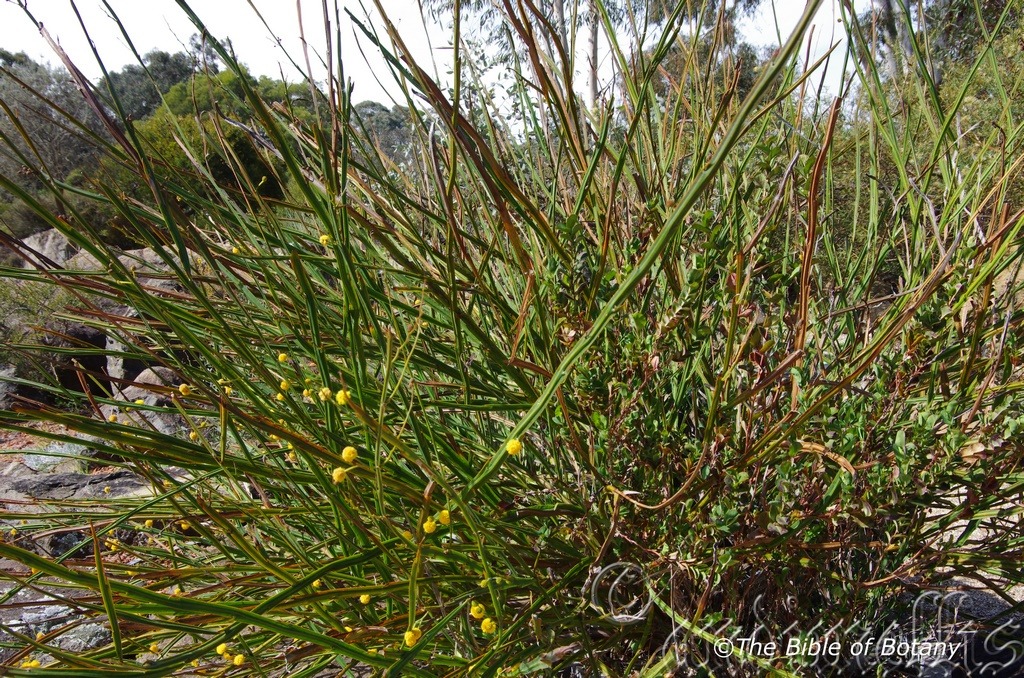
National Botanic Gardens ACT.

National Botanic Gardens ACT.

National Botanic Gardens ACT.
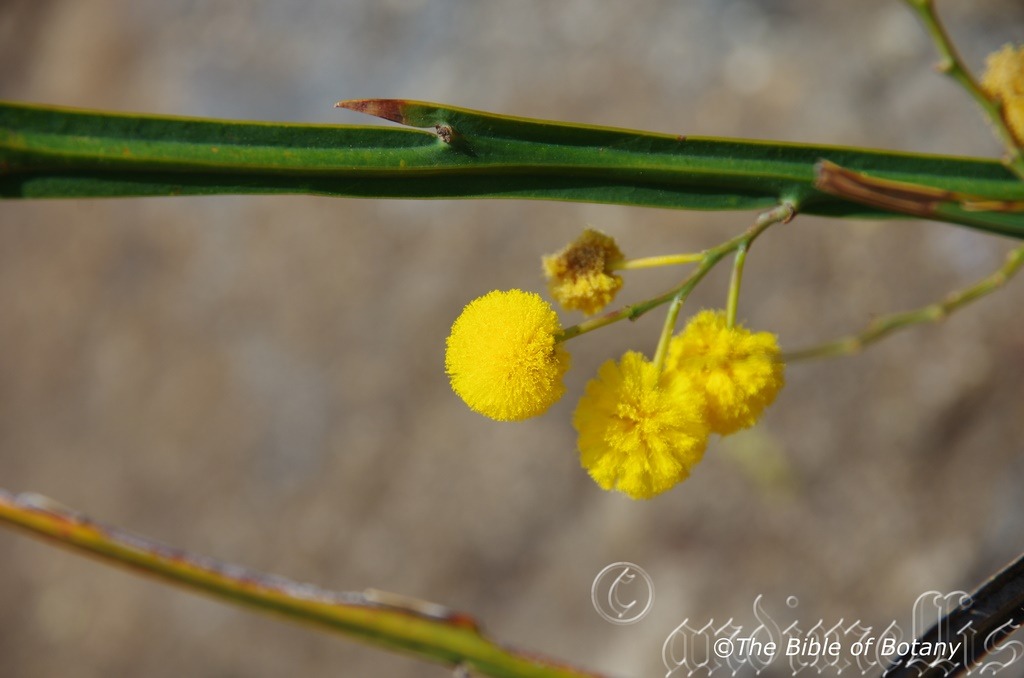
National Botanic Gardens ACT.

National Botanic Gardens ACT.
Acacia pterocaulon
Classification:
Class: Magnoliophyta
Order: Fabales
Family: Fabaceae
Subfamily: Mimosoideae
Genus: From ἀκακία, which is Ancient Greek or later Acanthium, which is Latin for to have a sharp point. It refers to the first species named by Dioscorides the Greek Botanist for the Egyptian plant Acacia arabica, which has very sharply pointed spines.
Specie: From Pteron, which is Ancient Greek for a bird’s wing and Kaulos, which is Ancient Greek or Caulus, which is Latin for a branch or a stem. It refers to stems or smaller branches, which have a very distinct wing that runs down each side.
Common Name: Tumit Wattle, Wedge Leaf Wattle or Oven?s Wattle.
Distribution:
Acacia pterocaulon is restricted to a few small populations west of Morawa in central west Western Australia.
https://avh.ala.org.au/occurrences/search?taxa=Acacia+pterocaulon+#tab_mapView
Habitat Aspect Climate:
Acacia pterocaulon prefer full sun to light dappled shade. It grows in more open slopes or atop of hills, in Eucalyptus woodland or amongst and adjacent to dense Casuarina scrub. The altitude ranges from 260 meters ASL to 380 meters ASL
The temperatures range from lows of 4 degrees in August to 42 degrees in January.
The rainfalls range from lows of 300mm to an average of 600mm annually.
Soil Requirements:
Acacia pterocaulon prefers rocky fatty clays to light gritty clays with irregularly weathered stones and rocks. The soils are derived from quartzite chalcedony and cherts. The soil?s pH ranges from 5pH to 6pH. It does not tolerate water logged soils growing in rather dry locations. None saline soils to moderately saline soils are tolerated.
Height & Spread:
Wild Plants:1m to 2.5m by 1m x 3m.
Characteristics:
Acacia pterocaulon?s trunk and branches are glabrous branchlets have continuous phyllodes. The opposite bifariously decurrent, coriaceous wings, each have an ovoid to tapered acute extension near the base. The wings measure 2mm to 6mm in width. They are sub glaucous, with a marginal prominent nerve on the free portion of phyllodes.
he erect, lanceolate to narrowly triangular, straight or very shallowly incurved phyllodes measure 10mm to 55mm in length. The main nerve is central while the gland is basal.
The inflorescences are a raceme. The racemes axis measure 10mm to 100mm in length and has narrow wing either side at anthesis. The peduncles measure 10mm to 15mm or at times up to 19mm in length. The glabrous; heads globular, 10?15 mm diam. At anthesis the densely flowered racemes have 60 to70 individual deep golden-yellow flowers. The individual flowers are five merous. The sepals are free, linear to spathulate. The flowers appear from October to December or rarely as early as September.
Acacia pterocaulon fruits are oblong, flat straight or slightly curved pods. The coriaceous pods are glabrous and slightly to moderately constricted between the seeds and are barely raised over the seeds.
The linear pods are coriaceous-crustaceous, pruinose, glabrous and measure 120mm in length by 4mm to 5mm in width. The dull black seeds are obloidal to ovate and measure 4.5mm to 5mm in length with a white sub-conical aril.
Wildlife:
Acacia pterocaulon wildlife is unknown to the author.
According to the CSIRO Acacia pycnantha, contains the following minerals: Potassium, Calcium, iron, zinc, in fairly high concentrations. Protein is approximately 23mm, carbohydrate 26mm, Fat/oil 9mm (poly and mono saturated). Wattle seeds have a low in glycaemic index meaning they are a good source of the above for diabetics. Most Vitamins are found except for Vitamin C, B12 and riboflavin. They contain 39mm fibre. This is not to say that Acacia pterocaulon contains exactly the same breakdown of minerals but it is a good indicator of its nutritional value.
Cultivation:
It would make an good fire retardant shrub.
* Fire retardant plants act as radiant heat screens and absorb more heat from an approaching fire without burning.
* Fire retardant trees are able reduce wind speed near a house or out buildings.
* Fire retardant also trap embers and sparks carried by the wind.
* Fire retardant ground covers are able to catch burning embers without catching fire themselves, and also slow the travel of a fire through debris and litter on the ground.
Acacia pterocaulon is an interesting fast growing Acacia with with very unusual stems. This characteristic would suit anyone looking for a medium shrub to 2 meters in height for a dry sunny position. It is particularly hardy on heavier rockier soil types and skeletal soils over rocky outcrops but adapts well to growing on soils with some gravel or even those that are predominantly fatty sands. It will flower in its second year in cultivation. It is suitable for seaside gardens but will not accept water logged or wet soils. It is a drought resistant and cold hardy species.
Single plants scattered throughout an open bush scene and mixed with prostrate shrubs which have fine foliages that are pale blue-grey or deep grey foliages look really spectacular because of the foliage contrasts. This is especially true when nothing else is in flower to distract your attention.
It is best used adjacent to small areas of open bush close to paths or the house so their deep golden-yellow flowers can be viewed regularly. It is great in medium rockeries as the main feature plant. Here it can be planted in small scattered groups of 2 or 3 or as a stand-alone plant to create a harsh barren look with other arid plants. If it is surrounded by shorter plants with fine foliages and red flowers like the grey leaf form of Grevillea thelemanniana it is particularly striking and they will compliment each other especially when they are in flower.
Mass planting off sets the short five year or six life span of this small Acacia. When it is time to replant the seedlings, avoid the stark empty hole by replanting seedlings a year prior to removing the old plants.
Propagation:
Seeds: Acacia pterocaulon seed requires treatment before sowing. Pre-treat the seeds by placing the seeds into a glass of boiling water. Allow the water to cool and leave to soak for 10 hours. Seeds that have not swollen repeat the exercise.
Sow into a seed raising mix. When the seedlings are 25 to 50 mm tall, prick them out and plant them into 50mm native tubes using a seed raising mix.
Once the seedlings reach 200mm to 250mm in height plant them out into their permanent position. When mass plantings are required plant them out at 3.5 to 5 meter centers.
Fertilize using Seaweed, fish emulsion or organic chicken pellets soaked in water on an alternate basis. Fertilize every two months until the plants are established then annually either in early September to March to maintain health, vitality and better flowering.
Further Comments from Readers:
All information is included in good faith and has been thoroughly researched prior to printing. The website or the author does not warrant or guarantee the accuracy of any information on these pages, nor does the website or the author accept any responsibility for any loss arising from the use of the information found within. The views and opinions are strictly those of the author or those members who chose to actively participate in the contents herein.
Hi reader, it seems you use The Bible of Botany a lot. That’s great as we have great pleasure in bringing it to you! It’s a little awkward for us to ask, but our first aim is to purchase land approximately 1,600 hectares to link several parcels of N.P. into one at The Pinnacles NSW Australia, but we need your help. We’re not salespeople. We’re amateur botanists who have dedicated over 30 years to saving the environment in a practical way. We depend on donations to reach our goal. If you donate just $5, the price of your coffee this Sunday, We can help to keep the planet alive in a real way and continue to bring you regular updates and features on Australian plants all in one Botanical Bible. Any support is greatly appreciated. Thank you.
In the spirit of reconciliation we acknowledge the Bundjalung, Gumbaynggirr and Yaegl and all aboriginal nations throughout Australia and their connections to land, sea and community. We pay our respect to their Elders past, present and future for the pleasures we have gained.
Acacia pycnantha
Australia?s National Floral Emblem
Classification:
Class: Magnoliophyta
Order: Fabales
Family: Fabaceae
Subfamily: Mimosoideae
Genus: From ἀκακία, which is Ancient Greek or later Acanthium, which is Latin for to have a sharp point. It refers to the first species named by Dioscorides the Greek Botanist for the Egyptian plant Acacia arabica, which has very sharply pointed spines.
Specie: From Psychos, which is Ancient Greek for thick, dense and compact and antha/anthos, which are Ancient Greek for the male reproductive organ on a flower or the flower.
Sub specie:
Common Name: Golden Wattle. Australia’s Floral Emblem and the plant that we originally took the colours from for our national colours of Green and Gold.
Distribution:
Acacia pycnantha is found in a disjunct locality based on Ayre Peninsular in South Australia. The second continuous population is found north of Port Augusta in south Australia and extends east through most of Victoria into the southern portion of New South Wales and extends up the western side of the Great Dividing Range to the Gunnedah shire.
https://avh.ala.org.au/occurrences/search?taxa=Acacia+pycnantha+#tab_mapView
Habitat Aspect Climate:
Acacia pycnantha can be found growing in full sun to dappled shade. It grows in open woodlands, in open Eucalyptus forests and mulga country. The altitude ranges from 10 meters ASL to 550 meters ASL
The temperatures vary greatly throughout its range from minus 6 degrees around Canberra in August to 40 degrees during February in north western parts of its range in South Australia. Acacia pycnantha, is frost sensitive in its first year but is frost tolerant as it matures.
The rainfalls range from lows of 300mm to an average of 900mm annually.
Soil Requirements:
Acacia pycnantha prefer deep, loams, light fatty clays, medium clays or light silts to heavy silts. The soils are usually derived from decomposed sandstones granites, brown basalts, black basalts, shales, metamorphic rocks, alluvial deposits or accumulated peaty beach sands. The soil?s pH ranges from 4.5pH to pH. It does not tolerate water logged soils. None saline soils to very saline soils are tolerated.
Height & Spread:
Wild Plants: 4m to 8m by 4m to 6m.
Characteristics:
Acacia pycnantha‘s trunk is deep brown to deep red-brown and glabrous. The branchlets are angled or terete, red-brown to olive-yellow, glabrous and at times pruinose.
The falcate phyllodes of Acacia pycnantha, vary greatly from narrowly elliptical to oblanceolate to broad lanceolate and pendulous. The phyllodes measure 90mm to 160mm in length by 10mm to 35mm in width. The base is tapering, asymmetrical, oblique while the apex is acute to obtuse. The concolourous laminas are bright olive-green to blue-green, dull to semi glossy and glabrous. The margins are entire. The mid vein is strongly prominent and penniveined. There are one or two slightly prominent glands. The lower gland is 3mm to 40mm above the pulvinus while the pulvinus measure 4mm to 7mm in length.
The inflorescences of Acacia pycnantha are stout panicles born terminally or auxiliary. The rachises and peduncles are yellow-green to olive?yellow glabrous. The rachises measure 25mm to 90mm in length while the peduncles measure 3mm to 6mm in length. There are 3 to 11 globular heads on each orbicular raceme with 40 to 80 individual flowers in each globose head. The globose heads measure 9mm to 11mm in diameter while the individual flowers measure 4mm to 5.5mm in length.
The individual flowers are 5 merous. The 5 sepals are deep lemon to bright golden-yellow and united at the base. The sub orbicular laminae and petals are deep brown with white fimbriate margins while the stamens are deep lemon-yellow to deep rich golden-yellow. Acacia pycnantha?s sweet, strong scented flowers appear from July through to October.
The fruits of Acacia pycnantha, are straight, flat linear pods. The pods are strongly constricted between the seeds while the margins are variably, slightly constricted on one margin more than the other. The green pruinose pods turn deep brown with fawn margins when ripe. The chartaceous pods measure 50mm to 130mm in length by 5mm to 7mm in width.
The semi glossy deep brown to black seeds have a creamy orange, clavate aril. The seeds measure 5.5mm to 6mm in length by 2.8mm to 3.2mm in width and 2.5mm to 2.8mm in depth.
Wildlife:
Acacia pycnantha, is an ideal plant for the control of soil erosion and nitrogen fixation in a wide variety of soils where moisture is a real problem. The wildlife that relies on this plant is unknown to the author.
Both the flowers and seeds were eaten by aborigines. Try adding a large handful of flowers to Saturday’s pancakes for an aromatic sweet flavour. The seeds can be ground into flour for dampers or even to make your pancakes.
Acacia pycnantha, was a staple diet to the Aborigines who lived within the areas it grew. According to the CSIRO Acacia pycycantha contains the following, Potassium, Calcium, iron, zinc, in fairly high concentrations. Protein is approximately 23mm, carbohydrate 26mm, Fat/oil 9mm (poly and mono saturated). Wattle seeds have a low in glycaemic index meaning they are a good source of the above for diabetics. Most Vitamins are found except for Vitamin C, B12 and riboflavin. They contain 39mm fibre. This is not to say that the nutritional value is the same for this plant however it is a good guide.
Cultivation:
Acacia pycnantha is Australia’s floral emblem and its foliage and flowers are the bases of our Nation’s national colours.
This is a beautiful bushy shrub that grows 4 meters to 5 meters by 5 meters to 6 meters in diameter when grown in the open. They are suitable for medium to larger gardens. As it is hardy on all soil types, it is easy to grow giving a wonderful display in just 2 years from seed. Life expectancy is 8 to 10 years of age. It is best to cull older plants when they are at 7 years of age. Planting new seedlings the previous year below the plant to be culled will eliminate that often stark look that comes from culling dead or dying plants.
It is a good shrub where reclamation work is required on drier degenerated lands in arid and semi-arid areas.
It is best planted adjacent to small areas of bush, or back from paths but where they can be viewed from the house so their sweet scented flowers can be appreciated regularly. Used in the background you can mass plant around them with small shrubs and groundcovers so the whole bed is covered for a woodland scene or sparsely plant for an arid scene. Mass planting with shrubs with red purple or deep orange flowers would make a wonderful display during the period it is in flower.
Two or three plants planted in close proximity can still achieve the sparseness and harshness of the desert picture especially in a larger garden with three planted together and one in the distance. Here a few annuals strategically scattered around with annuals would complete the picture. The plants planted out below should have a mixture of bold colours radiating out from the base of the trees so use deep pinks or reds directly below with reds, mauves, pinks, purples and whites further out. Avoid yellows and creams. Grevillea miniata has broad leaves and large enough flowers to dominate the scene when in flower and when not in flower their strong outline will give the contrast required for strength provide those plants covering the ground have smaller leaves and the majority paler green foliages and no blue grey leaves are used.
It makes an excellent hedge, screen and wildlife corridors in semi-arid areas because of their upright bushy growth habit and their abundance of flowers.
Acacia pycnantha, is one of two plants which is Toowoomba?s floral emblem. The other is Viola odorata of which neither plants occur naturally in the Toowoomba district. Viola odorata is not native to Australia.
Propagation:
Seeds: Acacia pycnantha seed requires treatment before sowing. Pre-treat the seeds by placing the seeds into a glass of boiling water. Allow the water to cool and leave to soak for 10 hours. Seeds that have not swollen repeat the exercise.
Sow into a seed raising mix covering them to 5mm. When the seedlings are 25 to 50 mm tall, prick them out and plant them into 50mm native tubes using a seed raising mix.
Once the seedlings reach 200 to 250mm in height plant them out into their permanent position. For reclamation projects plant at 5 meter centers or for dense plantings plant at 4 meter centers.
Fertilize using Seaweed, fish emulsion or organic chicken pellets soaked in water on an alternate basis. Fertilize every two months until the plants are established then annually either in early September to March to maintain health, vitality and better flowering.
Further Comments from Readers:
All information is included in good faith and has been thoroughly researched prior to printing. The website or the author does not warrant or guarantee the accuracy of any information on these pages, nor does the website or the author accept any responsibility for any loss arising from the use of the information found within. The views and opinions are strictly those of the author or those members who chose to actively participate in the contents herein.
Hi reader, it seems you use The Bible of Botany a lot. That’s great as we have great pleasure in bringing it to you! It’s a little awkward for us to ask, but our first aim is to purchase land approximately 1,600 hectares to link several parcels of N.P. into one at The Pinnacles NSW Australia, but we need your help. We’re not salespeople. We’re amateur botanists who have dedicated over 30 years to saving the environment in a practical way. We depend on donations to reach our goal. If you donate just $5, the price of your coffee this Sunday, We can help to keep the planet alive in a real way and continue to bring you regular updates and features on Australian plants all in one Botanical Bible. Any support is greatly appreciated. Thank you.
In the spirit of reconciliation we acknowledge the Bundjalung, Gumbaynggirr and Yaegl and all aboriginal nations throughout Australia and their connections to land, sea and community. We pay our respect to their Elders past, present and future for the pleasures we have gained.